- Inspect
- Installed heating and cooling systems
- Readily openable access panels
- Central and through-the-wall systems
- “Ductless Mini-Split” systems
- Visible and readily accessible portions of associated distribution systems, flues, and chimneys
- Describe
- Heating system(s)
- Cooling system(s)
- Energy source(s)
- Distribution system(s)
- Basic Delta-T readings measured at supply and return air registers (compressor-based systems)
- Not required
- Inspection of any system without power, fuel supply turned off, winterized, or shut down by local utility company or service specialist
- Operate any system except with normal controls
- Operate cooling system if outdoor temperature is below 65° F
- Adequacy of heat supply, cooling supply, or distribution balance
- Interiors of flues or chimneys that are not readily accessible
- Any portion of a compressor-based system that is not readily accessible
- Heat exchangers
- Humidifiers or dehumidifiers
- Electronic or ultraviolet filtration systems
- Solar or solar-hybrid heating systems
- Window or portable AC units
Heating System
All habitable spaces in a dwelling are required to have heat. We will discuss what a “habitable space” is and how we can get the heat there in the Distribution section. There are many ways to provide a home with heat, and different regions and climates tend to favor one type of system over others. Boilers are almost unheard of in the southern tier states. Air-to-air heat pumps are rare in the north, and for good reasons. In this section we will look at the actual heating appliances. The “sub-components”, e.g. pumps, fans, heat exchangers, exhaust systems, will be covered separately.
For ease of discussion, we will divide the heating plants into “central” systems and “space” heaters. Central systems serve multiple areas from a single appliance, and include hot air furnaces, heat pumps, and boilers. So-called “package units” are just combined central heating and cooling units. Space heaters, as the name implies, serve a specific area only, and have multiple units to cover all the rooms. Electric baseboards, radiant panels, ductless mini-split systems, and wall heaters fall into this group. Whole-house in-floor radiant heating and hot water baseboards served by a boiler will be discussed as a “distribution” system.
Central Heating Systems
This section covers “hot air” central furnaces. These include fossil fuel and electric coil appliances. Natural gas, propane/LP, and oil-fired units can be found as older standard efficiency, mid-efficiency induced draft, and high efficiency models. Package units simply combine a furnace with an AC unit and circulator fan into an single exterior “package”, installing only the distribution ducts inside. You should always operate a furnace if there are no safety concerns and the utilities are on.
Start your inspection with a correct identification of the appliance type. It’s essential to be able to tell the difference between a mid and high efficiency furnace. You do not want to tell your client they have a heat pump when, in reality, they have an electric furnace. Ensure there’s proper safety and working clearances at the appliance, and that a shut-off switch is nearby. Inspect for dirt build-up, signs of fuel leaks, or scorching. Observe the flames: they should be controlled and without excessive yellow areas. When the circulator fan engages there shouldn’t be a flame diversion that could indicate a cracked heat exchanger. Be alert to any combustion odors or burning smells. Confirm that you have hot air delivery.
Low-Efficiency Natural Draft Furnaces: These early forced air units have a low flow of combustion air through the heat exchanger, and an AFUE rating between 56% and mid-70%. Gas furnaces generally have standing pilot lights and large exhaust flue pipes. Low-efficiency oil-fired appliances are still common.
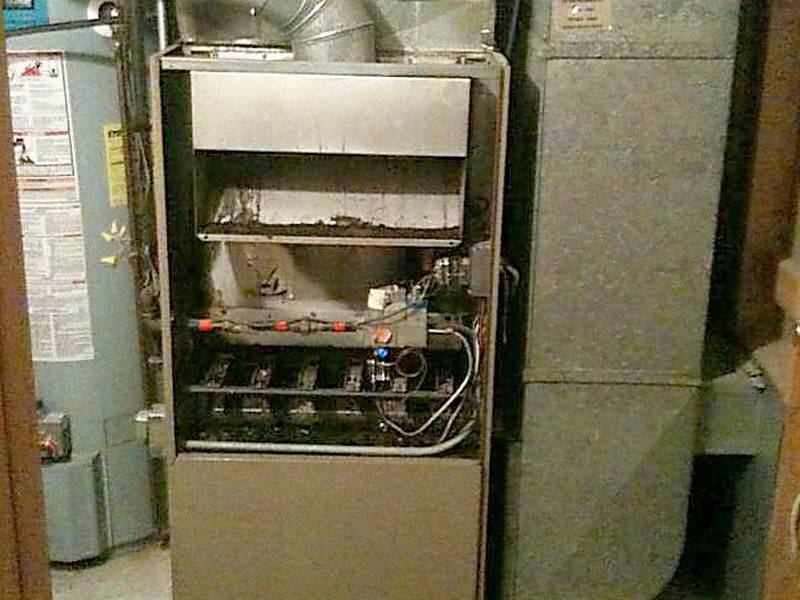
Mid-Efficiency Induced Draft Furnaces: These furnaces are newer, smaller, and gas models have electronic pilot ignitions and narrower flue pipes. They use a fan, seen at the center-left, to draw the combustion gasses through the heat exchanger. This increases the AFUE ratings to the mid-80%. Oil furnaces may have draft inducer fans, including as an after-market addition.
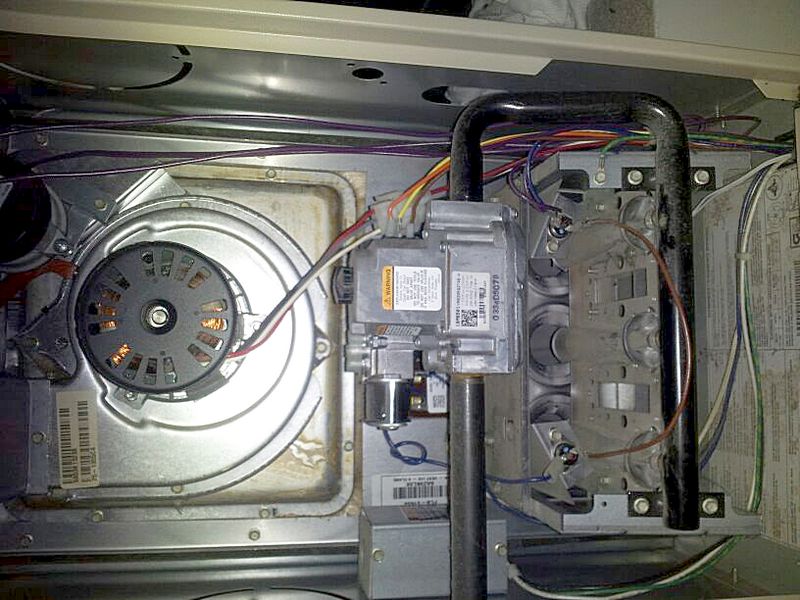
High-Efficiency Condensing Furnaces: These use a secondary heat exchanger to achieve AFUE ratings in the 90%+ range. The exhaust gas is cool enough to condense. That, combined with the positive exhaust flue pressure, makes these Category IV appliances. They must have airtight flues, usually PVC, which is their most recognizable feature. The combustion chamber is usually sealed. High-efficiency oil furnaces are somewhat rare, but are entering the market more.
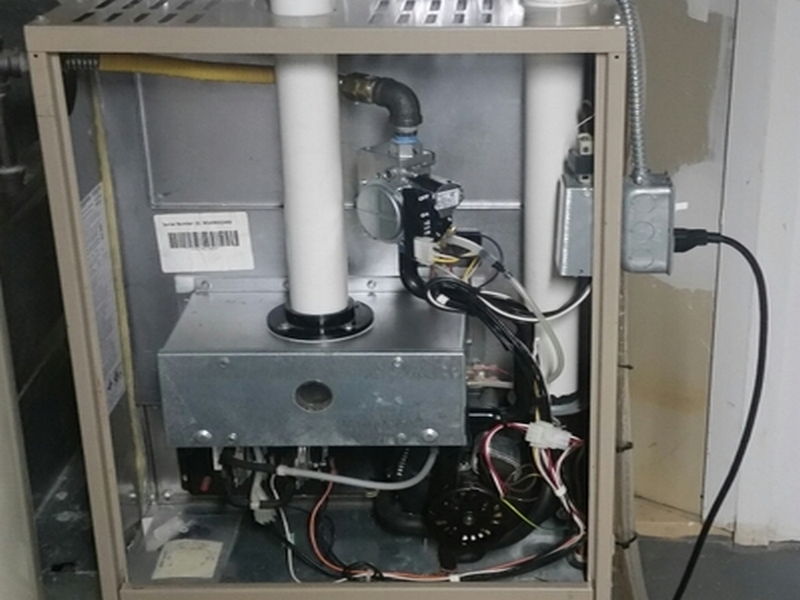
Electric Furnaces: These are basically air handlers with heating elements like a heat pump’s auxiliary coils. ID is easy if no AC is installed: 240 volt power comes in, but no other fuel and no exhaust. If AC is present, check the compressor for a reversing valve and the thermostat for an “Aux Heat” setting to rule out a heat pump. These units are nearly 100% efficient; the operating cost is in the electricity.
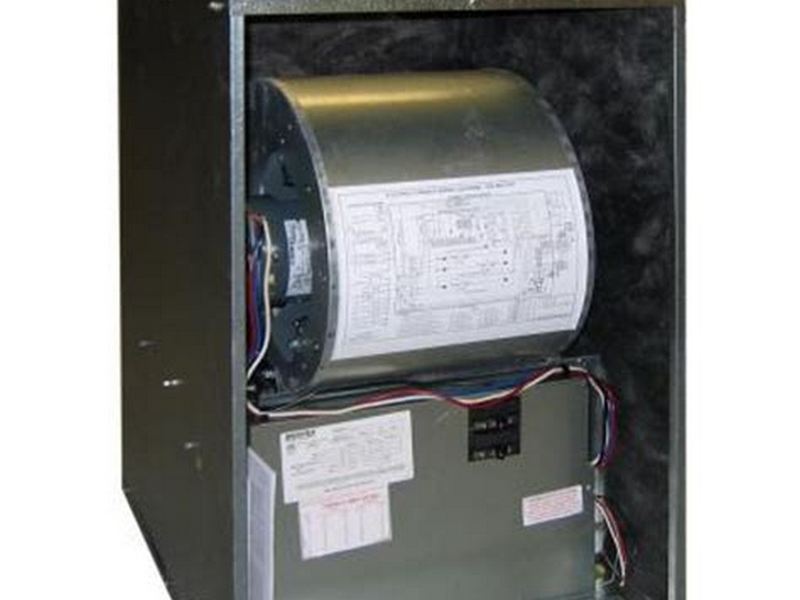
Package Unit: These systems combine a heating and air conditioning system, and the circulator fan, into a single “package”. They are located at the exterior, either as shown or on the roof. Only the ducts are inside the house. The heat can be provided by a furnace or heat pump.

The heating system is very dirty. This can affect efficiency and is a safety hazard. Hire an HVAC contractor to clean the system.
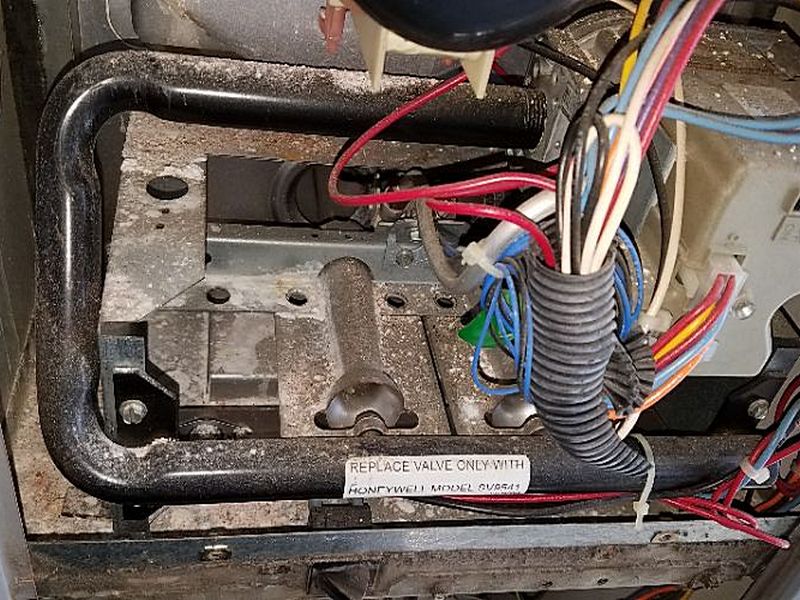
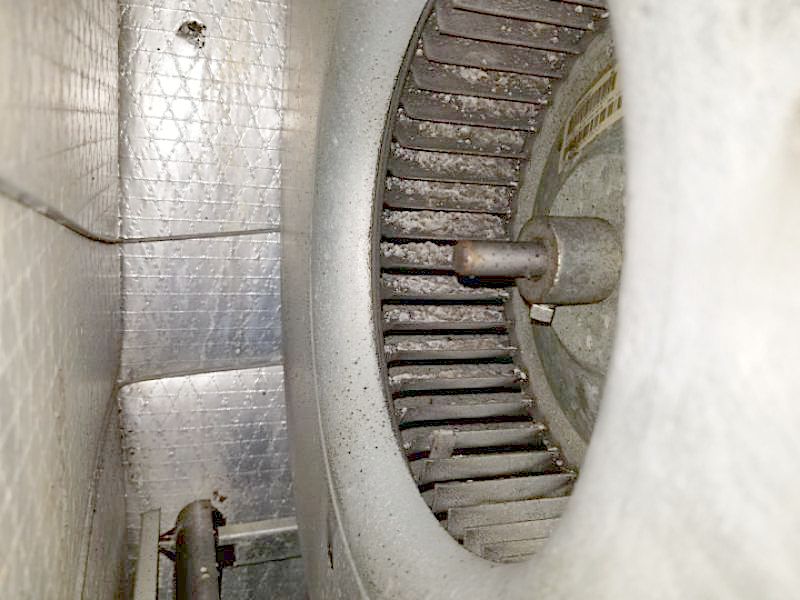
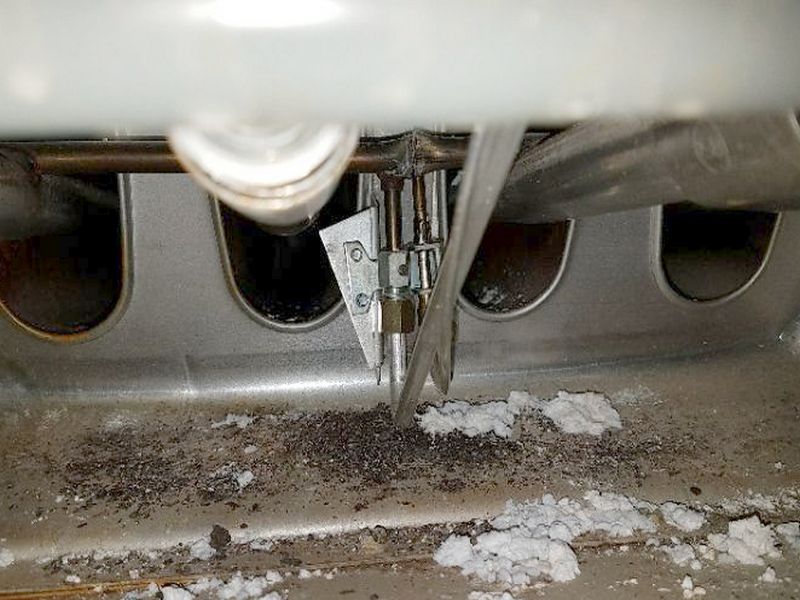
There is excessive corrosion on the heating system. This is a safety hazard. The cause of the corrosion and the extent of the condition should be determined. Hire an HVAC contractor to evaluate the system and to make required repairs.
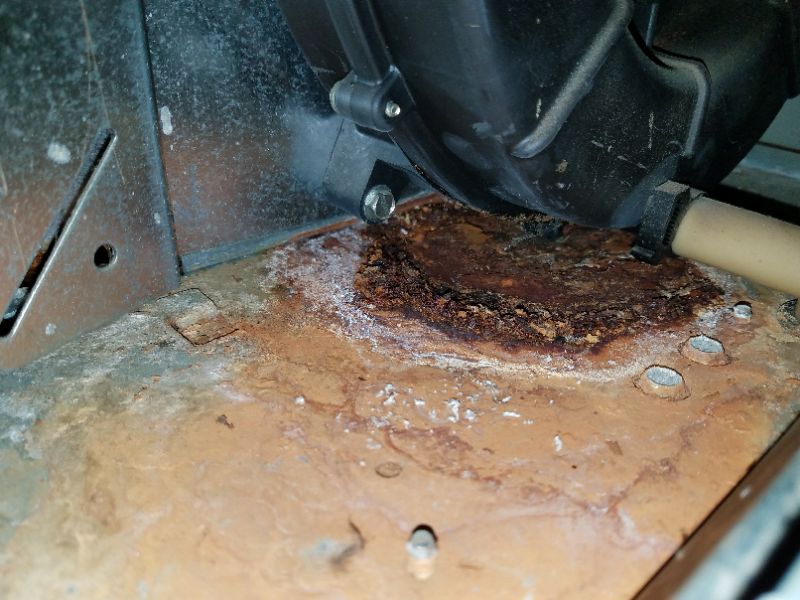
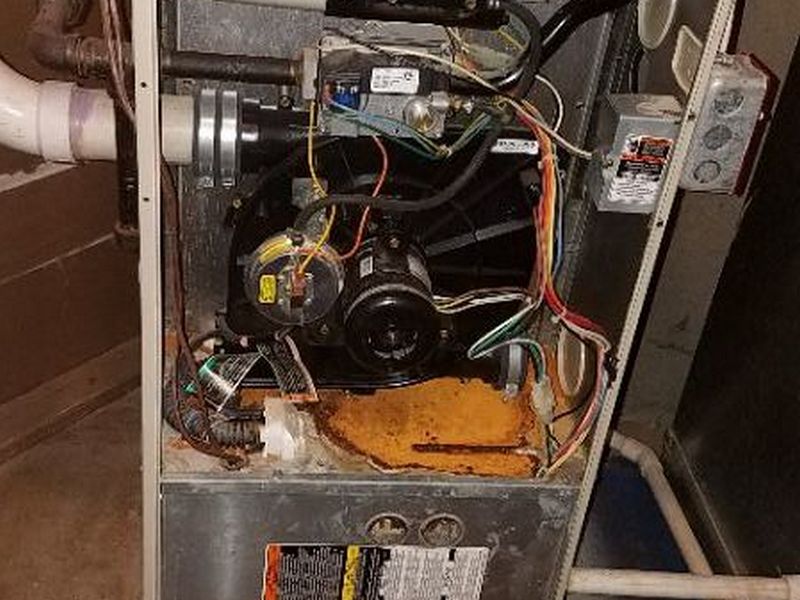
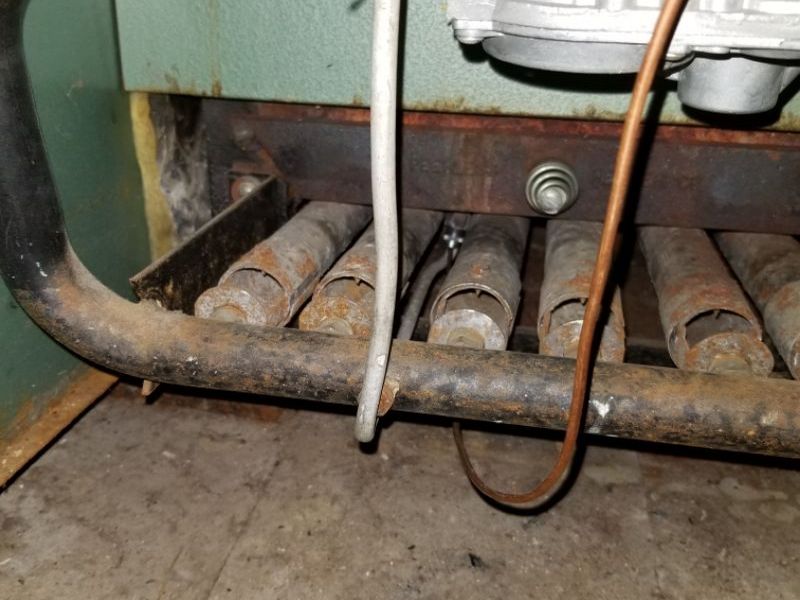
There is evidence of inadequate combustion make-up air for the heating system. This is a safety hazard which permits flue gases to enter the home. Hire an HVAC contractor to evaluate the system and to make required repairs.
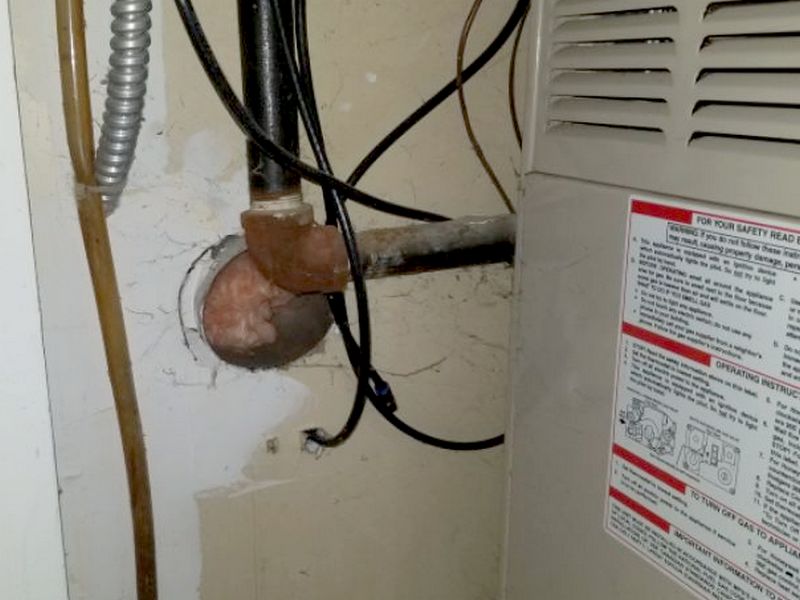
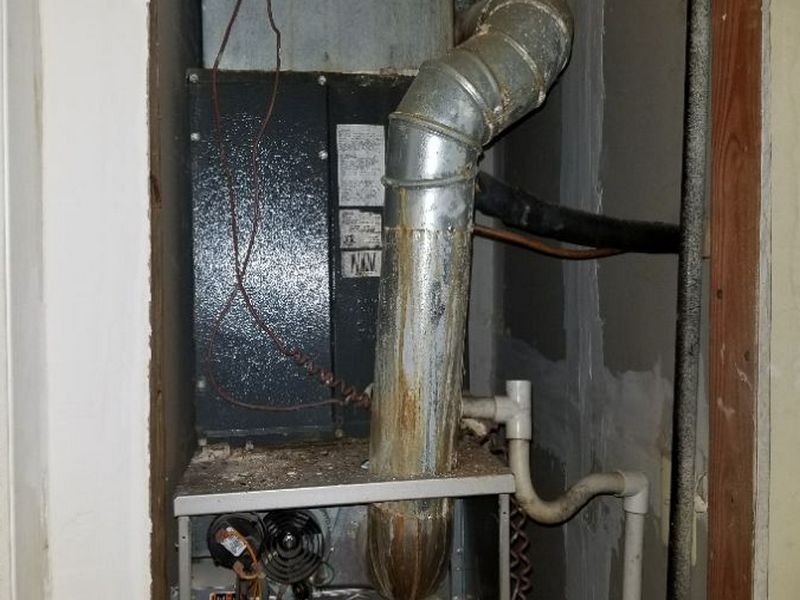
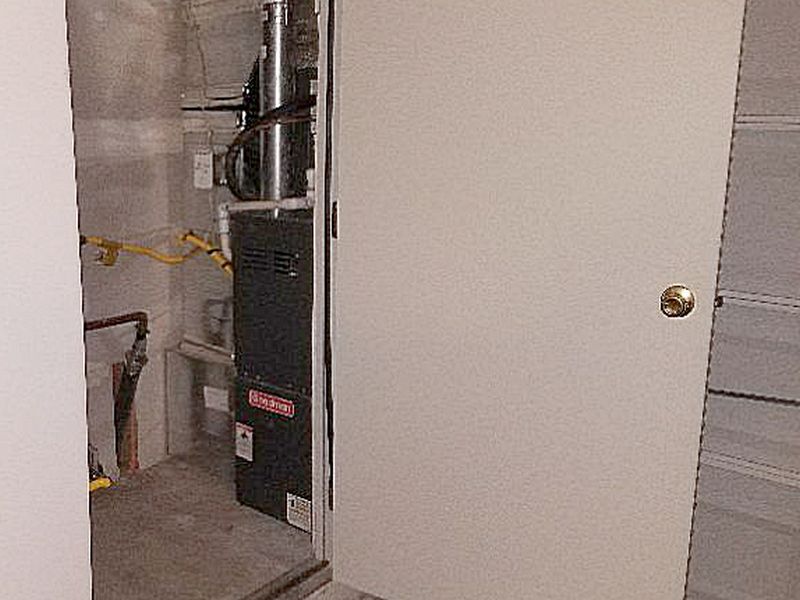
There is evidence of flame rollout at the combustion heating system. This is a safety hazard. Hire an HVAC contractor to evaluate the system and to make required repairs.
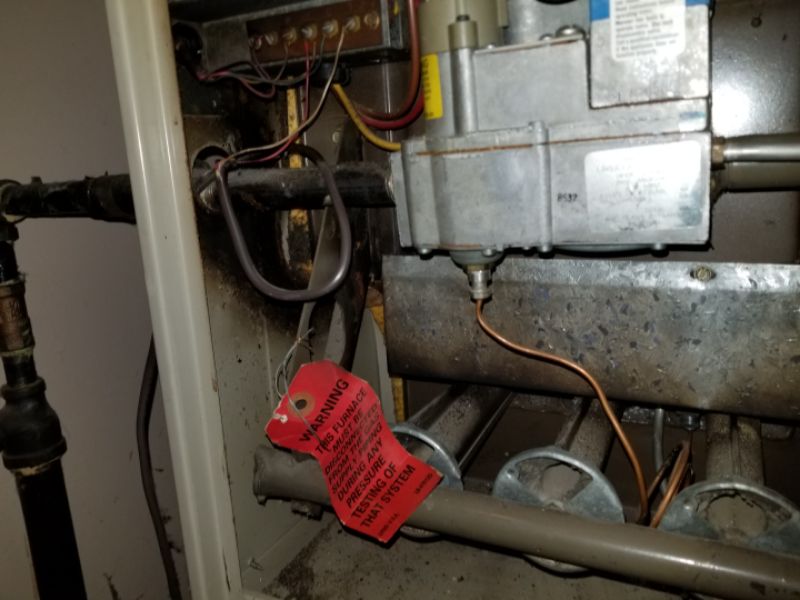
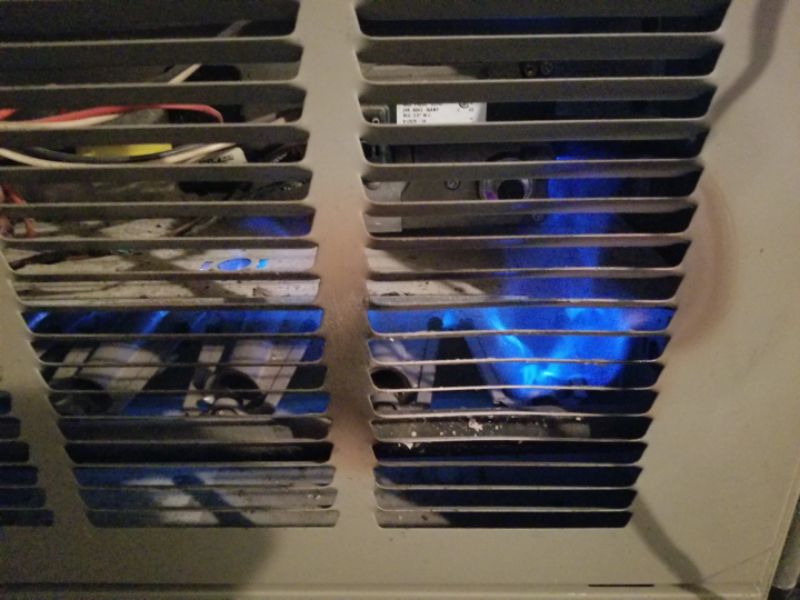
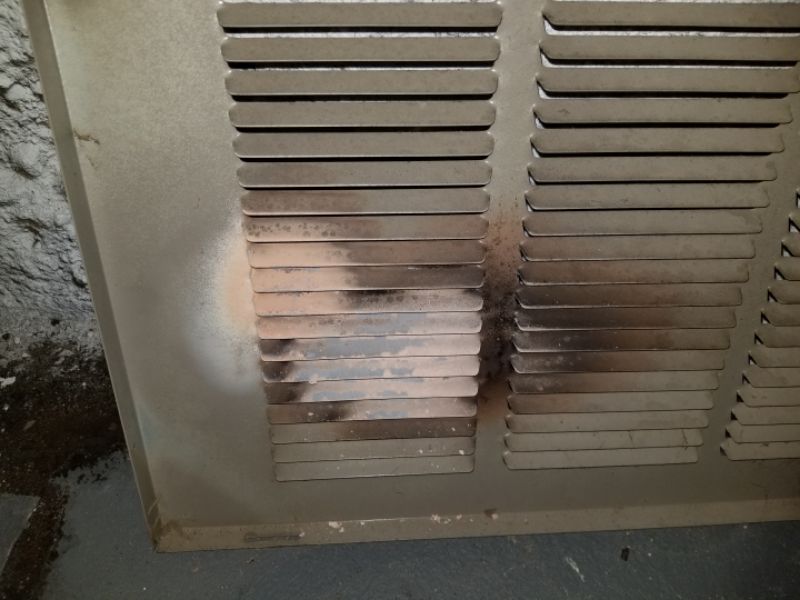
The heating system is improperly located. Safety prohibits installing a combustion appliance that is not closed and direct-vented in a bedroom, bathroom, or a closet in either location. Hire an HVAC contractor to relocate the system.
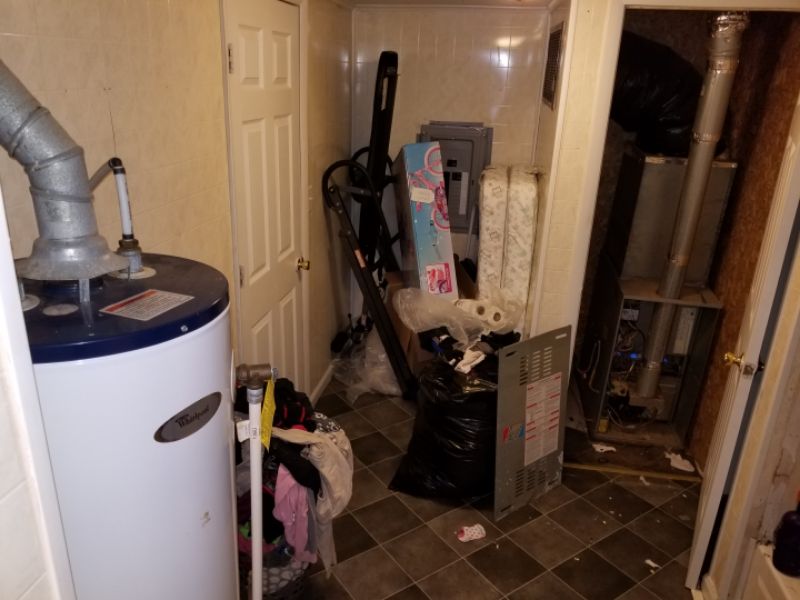
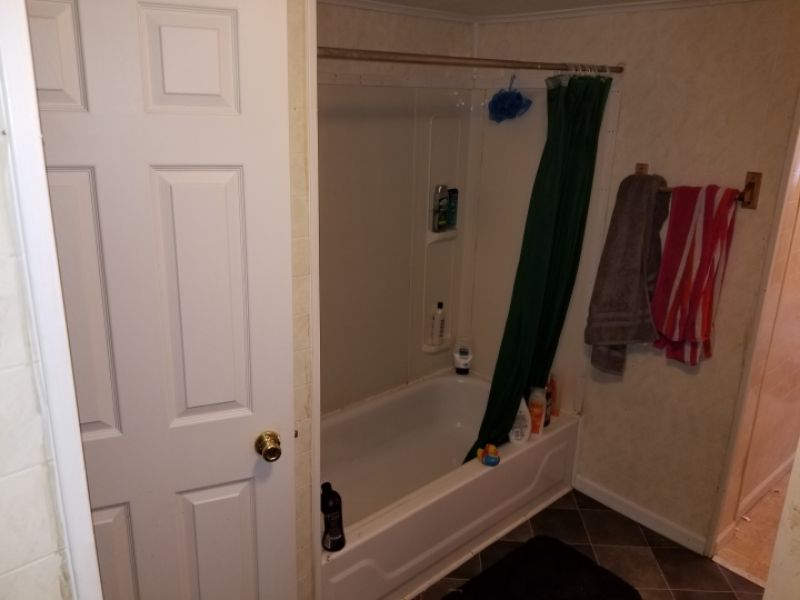
The heating system is too close to the garage floor. Safety standards require that any appliance’s ignition source be at least 18″ above the floor to prevent igniting flammable gases. Hire an HVAC contractor to relocate the system.

There is inadequate clearance at the HVAC equipment. A minimum of 36″ is required in front of the service side of the equipment for safety. Remove the obstructions.



Heat pumps are basically air conditioning systems that can “run backwards” in the Winter. In the Summer, a heat pump operates as an AC system. Refrigerant gases are manipulated to produce very cold coils in the air handler. The warm, moist house air is drawn across these coils to shed its heat and humidity. In the Winter a reversing valve in the exterior unit changes the flow of the refrigerant. Now, the air handler’s coils are very warm. That heat is given off into the supply air. This works because there’s always heat in the outside air to extract, and most units are “air-to-air” heat pumps. However, when it get below about 40° F, there’s not enough heat outdoors to keep up to the demand indoors. This is why heat pumps have “auxiliary” heat sources. It’s also why air-to-air models aren’t used in northern climates. Geothermal. or “ground source” heat pumps use the constant 50-55° F ground temperature below the frost line to gain heat, and are very efficient all year.
Running the compressor is the main test for a heat pump. To avoid damage, you run the system in “Heat” below 65° F, and in “Cool” above 65° F. Compressor-only operation should provide a Delta-T between 14-22° F. Always test any auxiliary heat. Use the data plates to confirm that the interior unit’s capacity is equal to or slightly larger than the exterior’s, never less.
The temperature differential is too low at the heat pump. This “Delta-T” is the temperature difference between the supply and return air. The proper range is 14F – 22F. Hire an HVAC contractor to evaluate the system and to make required repairs.
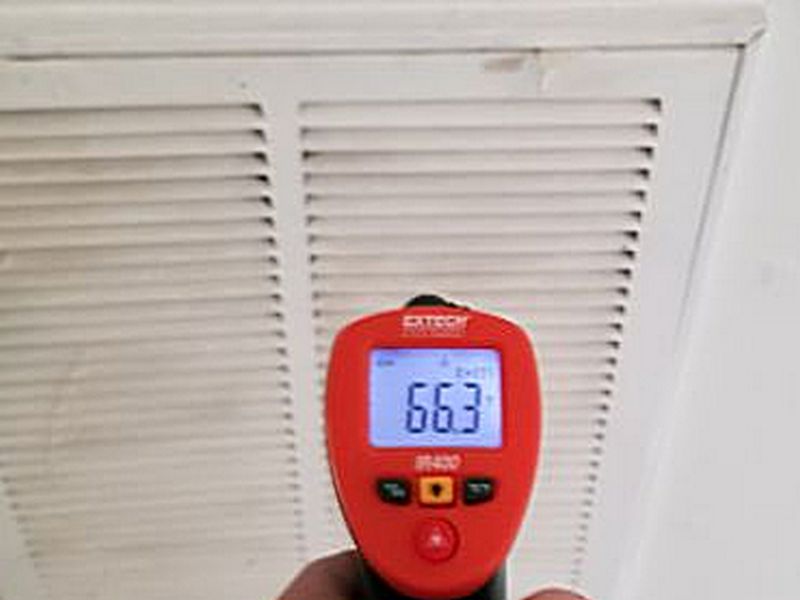
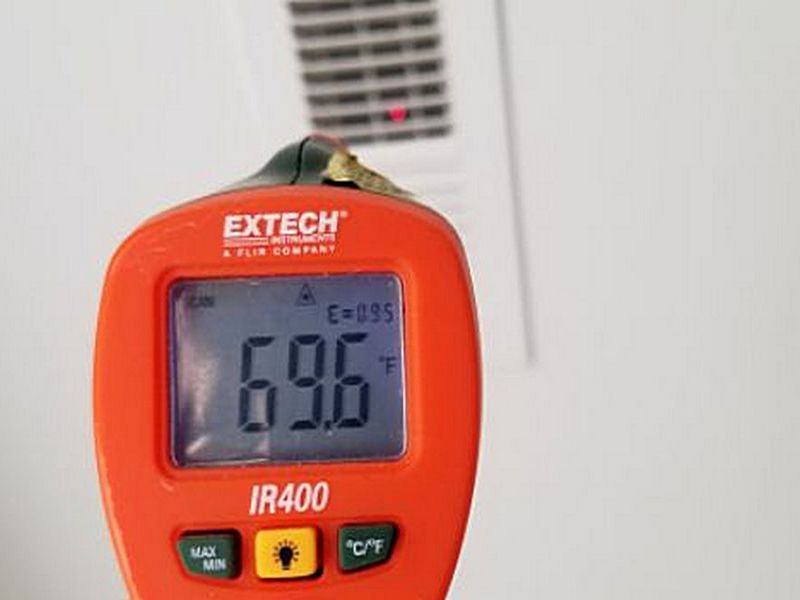
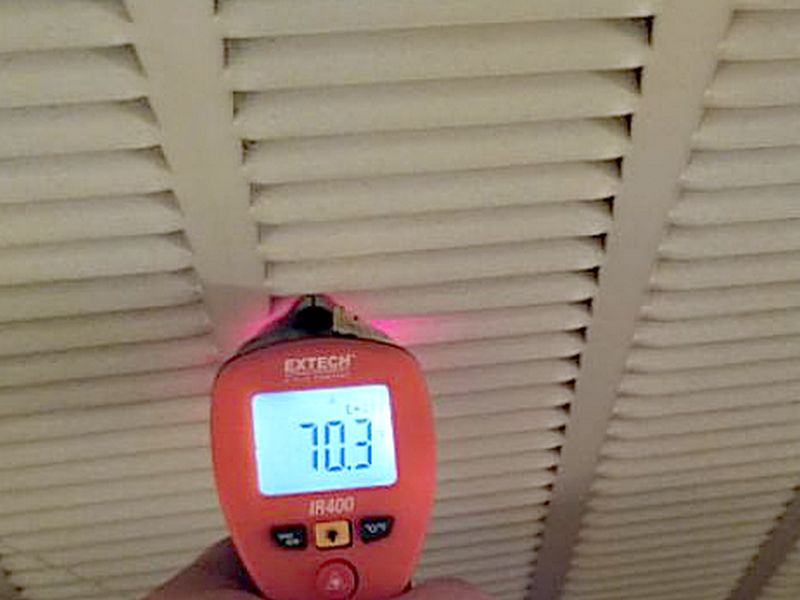
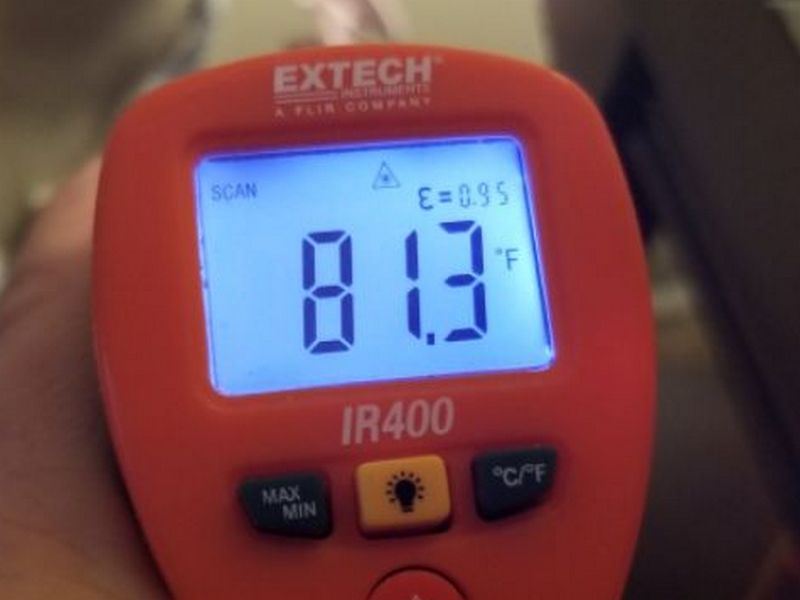
The auxiliary heat is inoperative at the heat pump. This backup system is needed during very cold days or at times of high system demand. Hire an HVAC contractor to evaluate the system and to make required repairs.
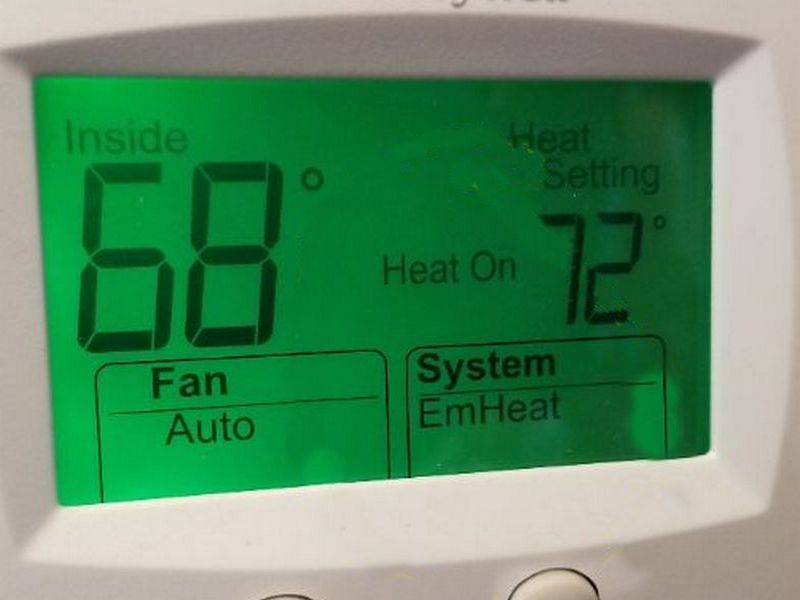
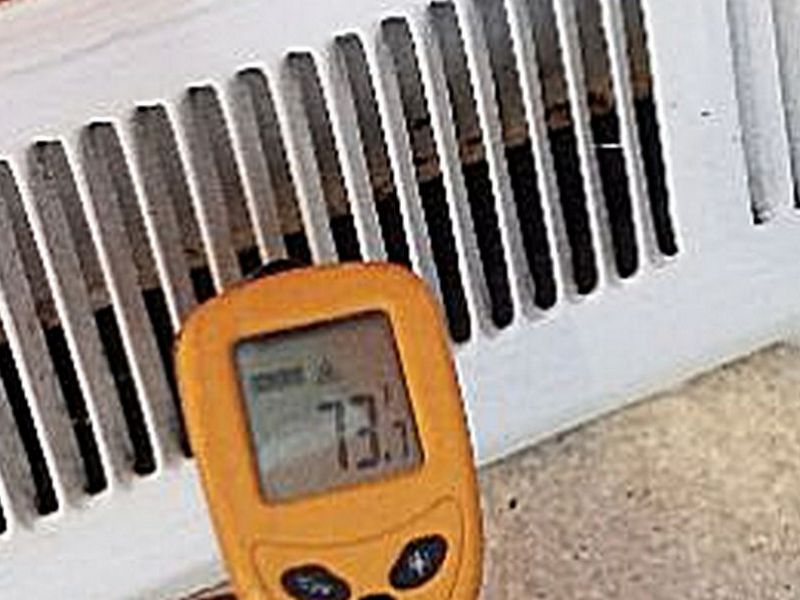
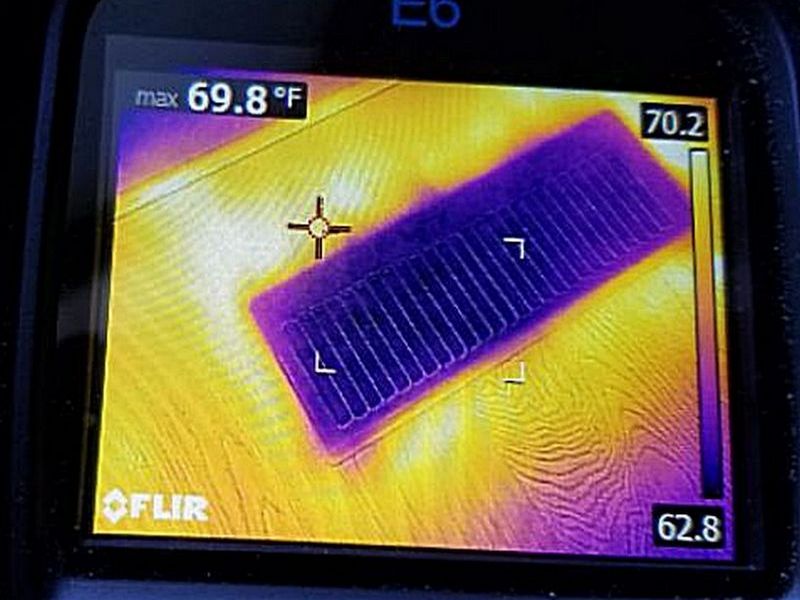
The heat pump’s air handler coils are dirty. This affects efficiency and air quality. Hire an HVAC technician to clean and service the system.
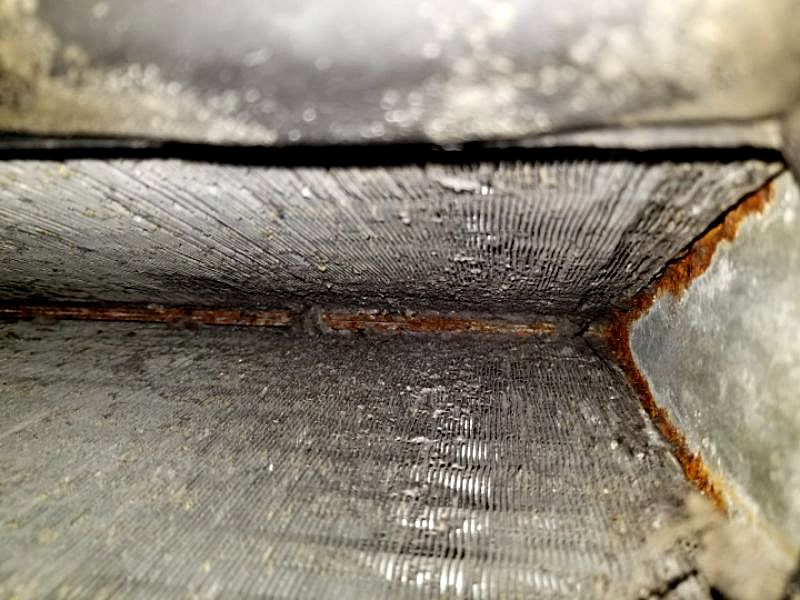
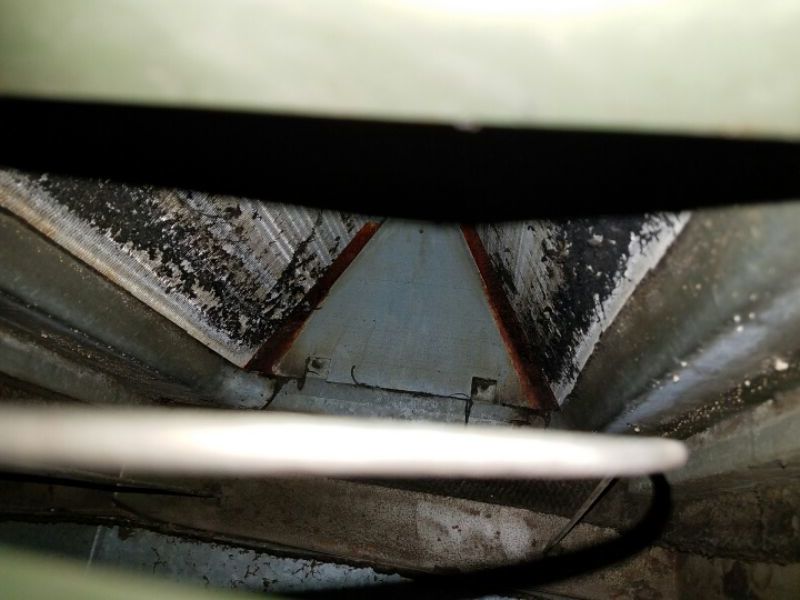
The dual fuel heating system is operating improperly. The heat pump compressor is running at the same time as the auxiliary combustion furnace. This will damage the system. Hire an HVAC contractor to evaluate the system and to make required repairs.
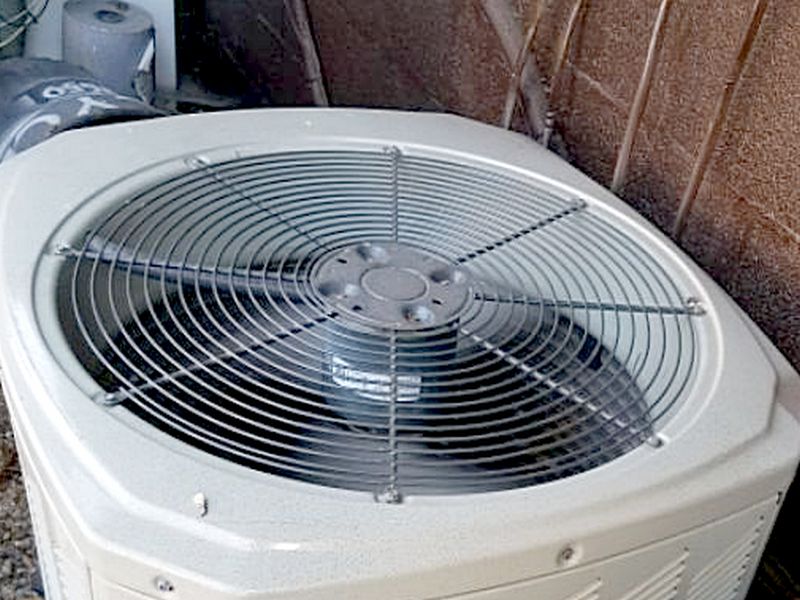
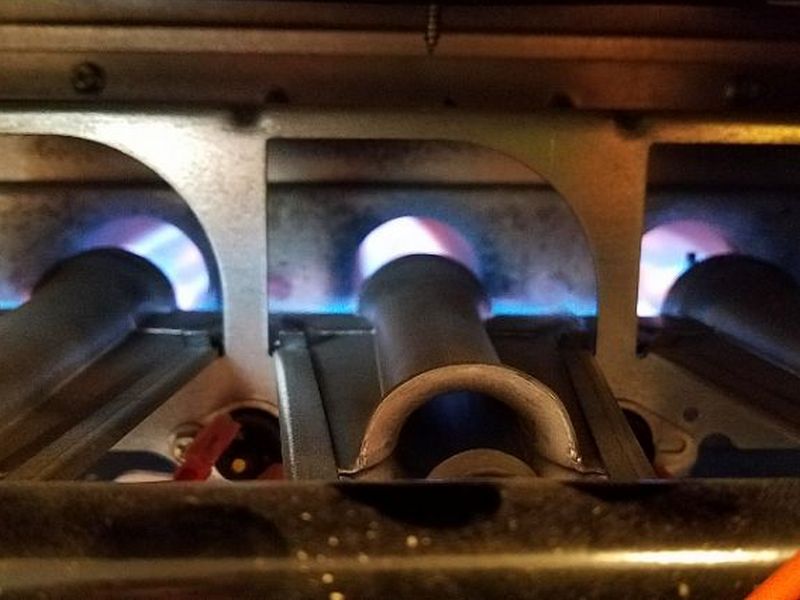
There is an improper match between the heat pump’s interior and exterior components. The interior’s capacity should match or be 1/2 to 1 ton larger than the exterior. Hire an HVAC contractor to evaluate the system and to make required repairs.
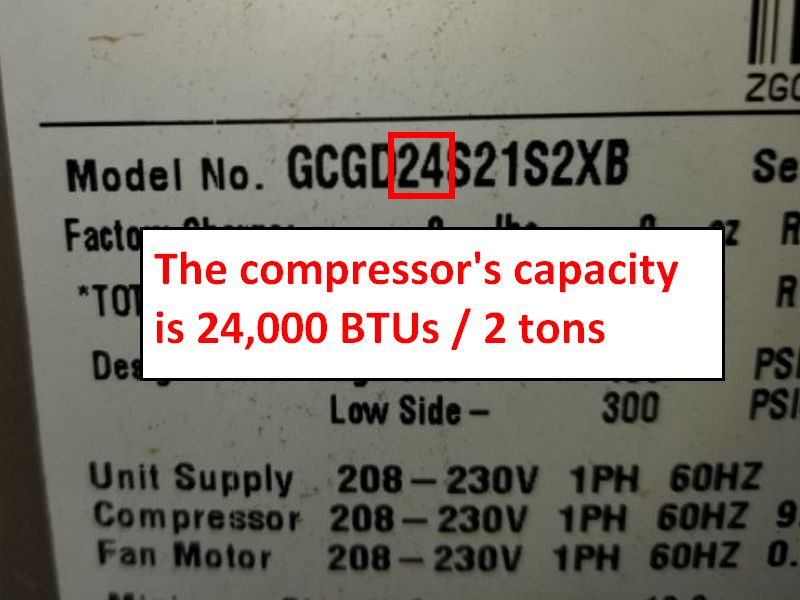
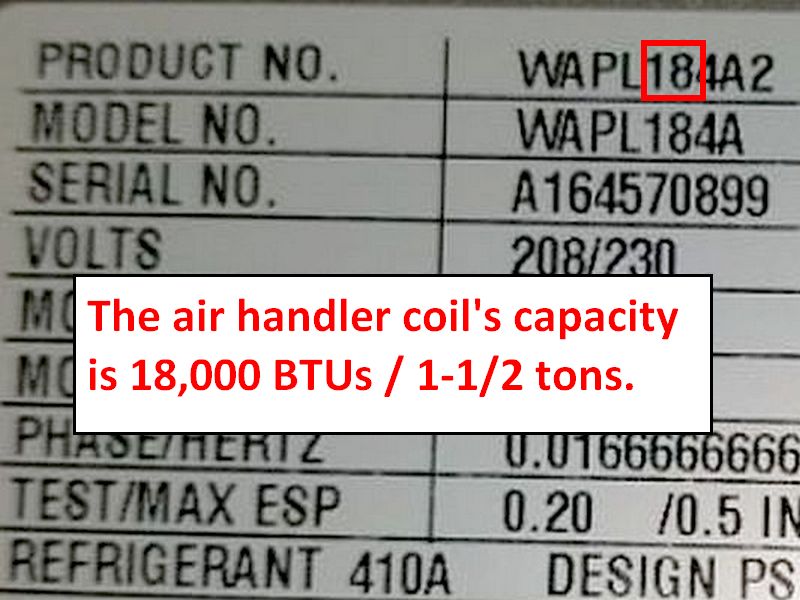
The insulation is damaged or missing at the heat pump’s suction line. This affects the system’s efficiency. Install an exterior-grade pipe insulation on the suction line.
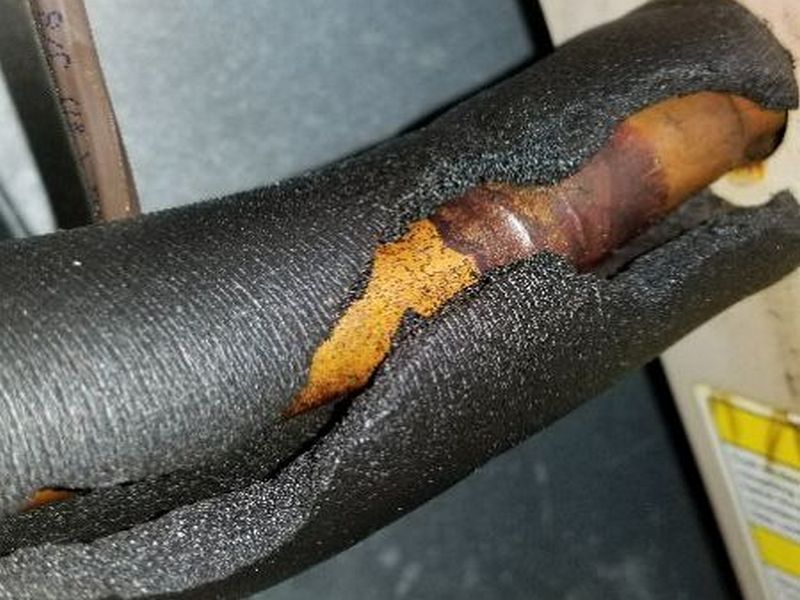
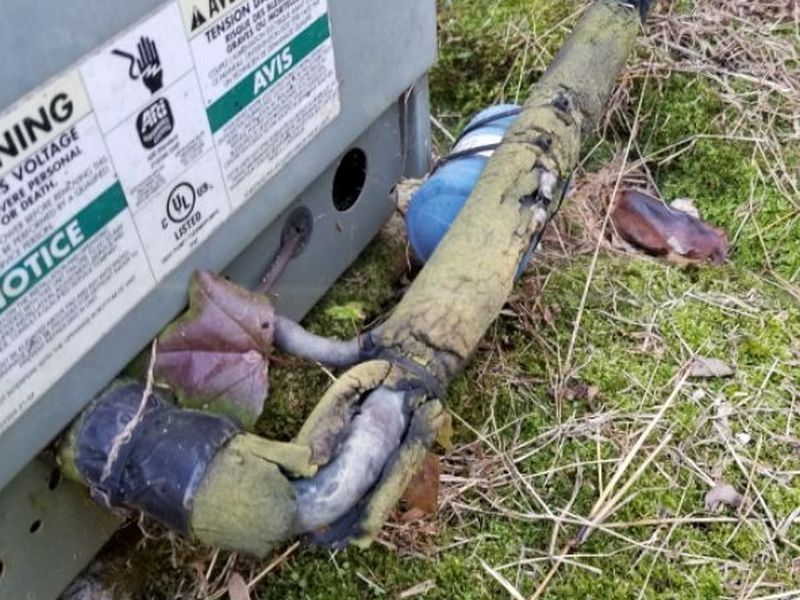
Boilers are water heating appliances. Hydronic boilers distribute water below the boiling point using radiators, baseboards, and radiant tubing. Steam boilers heat water to create steam, which is distributed through radiators. Hydronic forced-air systems, e.g. Apollo and Aqua Therm, are hybrids that use a high-BTU capacity water heater as a boiler. The hot water runs through a coil in an air handler to heat the house air. Traditionally, boilers have been large, free-standing fossil fuel appliances. On-demand “tankless” models, including electric units, are becoming more common.
Always ensure that the home’s water supply is on, and that the boiler’s pressure gauge indicates water in the system. Operating an empty boiler can cause permanent damage. By the same token, the pressure should not be too high; <30 psi for a multi-story hydronic system and <5 psi for a steam system. The pressure should be checked during operation to confirm there’s not a dangerous rise. An expansion tank should be present, as should a pressure relief valve. Neither should leak. Backflow preventers must be installed to prevent contaminating the potable water supply with system water. Inspect for damage, deterioration, signs of leakage, flame rollout, and combustion odors.
Old Boilers: Boilers have an EUL of 30-50 years. It’s not unusual to inspect a “working antique.” In reality, the only thing that absolutely condemns a boiler to the scrap heap is a heat exchanger leak. Until then, you can replace pumps, burners, valves, etc. While they will certainly be fuel hogs, they can heat the home. Be sure to use the appropriate EUL Information Statement.
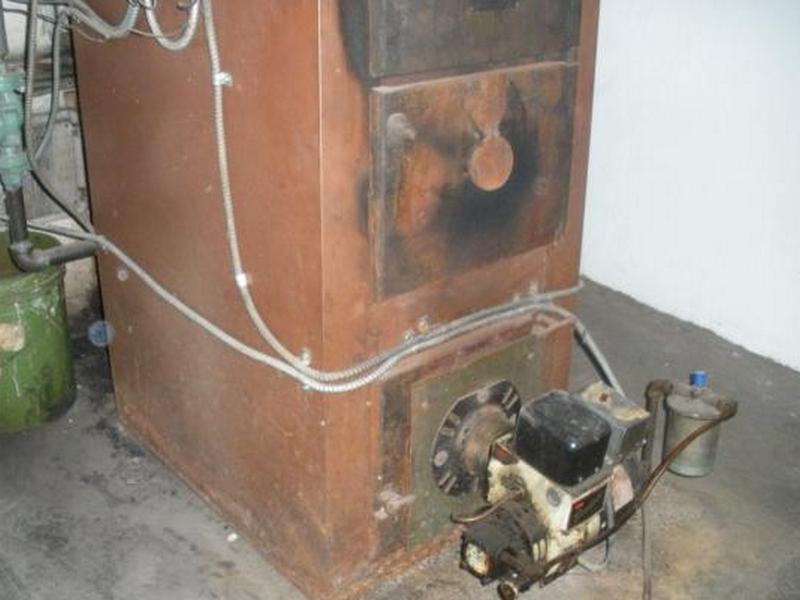
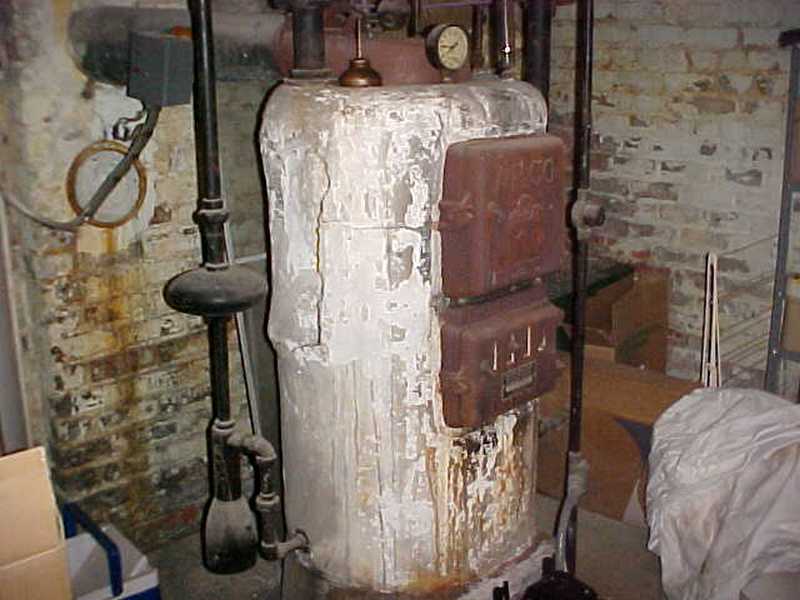
Modern Natural Draft Hydronic Boilers: These heating plants generally have an AFUE rating in the mid 80%. They can be vented into masonry chimneys. Most gas units have cast iron heat exchangers. Many newer oil boilers use sealed “Tiger Loop” oil delivery systems, which improves combustion.
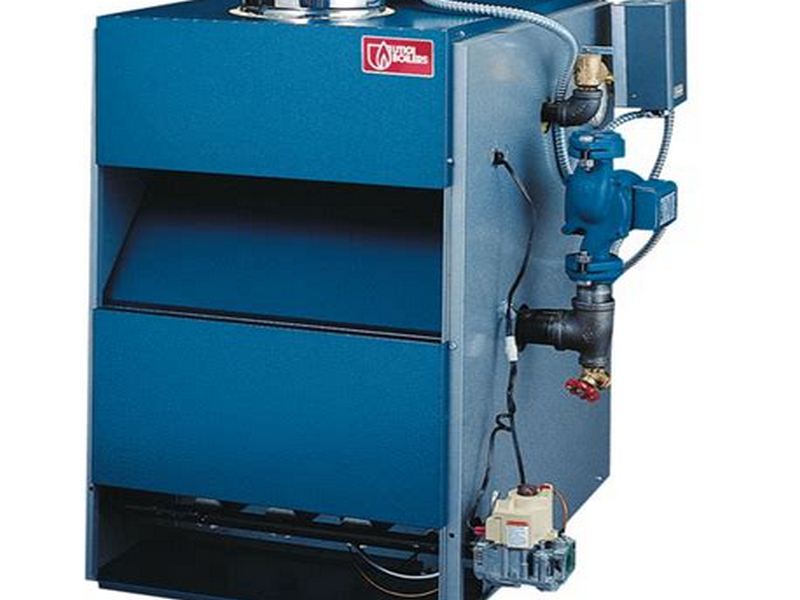

Steam Boilers: These can be gas or oil fueled, and are much less common than hydronic models. They are most quickly identified by the vertical sight glass, seen at the left side of the photo. Steam systems are specialized. If they are used in your area you should obtain additional education as available.
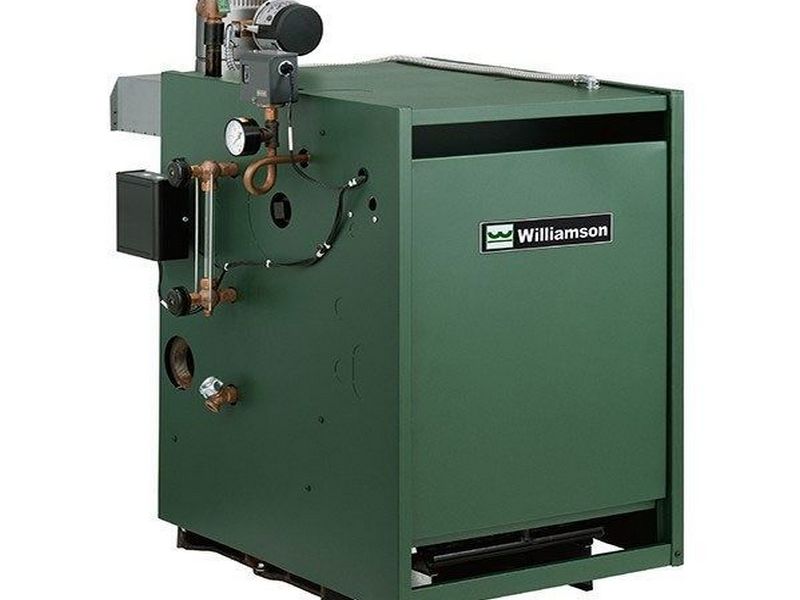
High-Efficiency Condensing Boilers: These AFUE 90%+ appliances can be wall mounted or free-standing. They have sealed vents, either PVC or Category IV stainless steel, and cannot exhaust into a masonry flue. The masonry flue may be used as a chase for a vent that extends to the exterior. They generally require maintenance every other year to comply with their warranty.
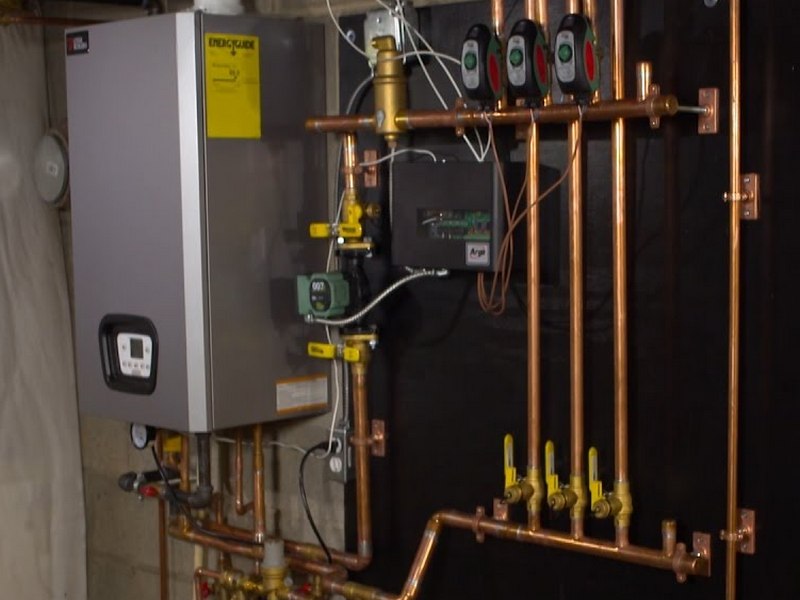
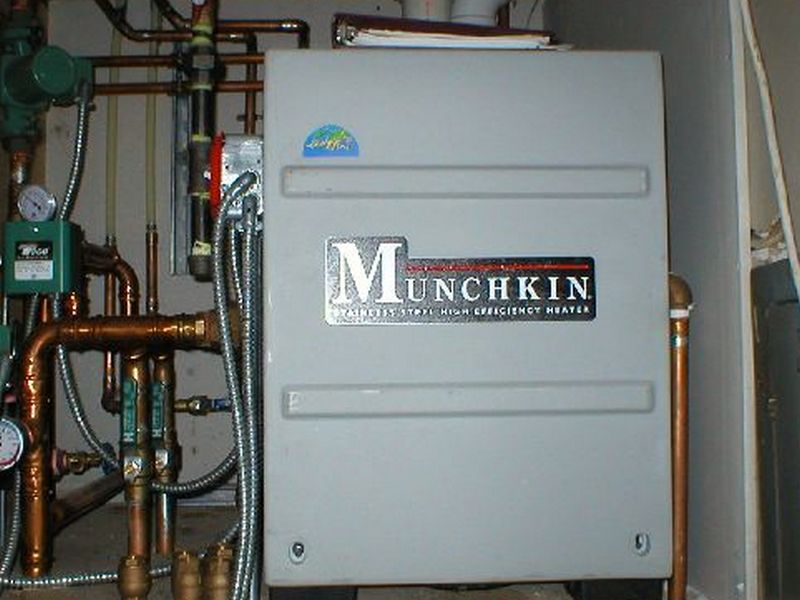
The boiler cabinet is deteriorated. This indicates possible leakage. Hire an HVAC contractor to evaluate the system and to make required repairs.
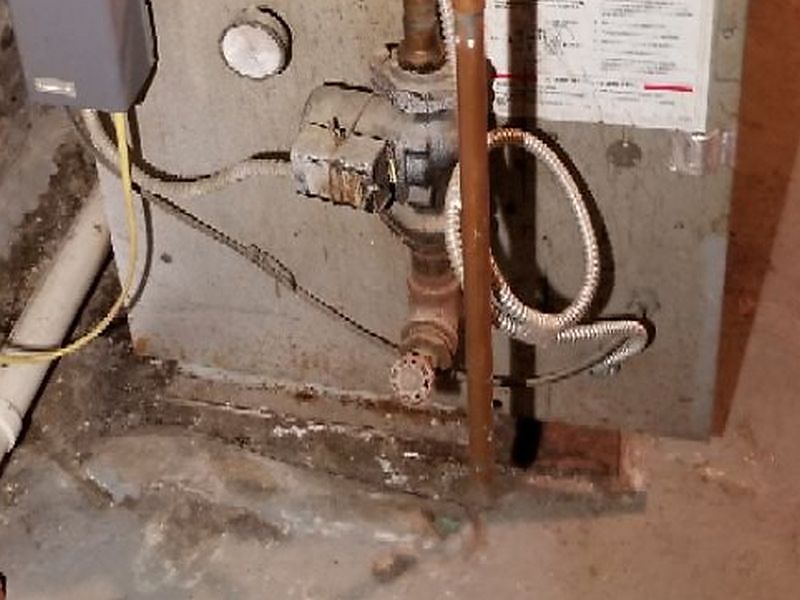
The boiler is leaking. This is potentially hazardous, and may require replacement. Hire an HVAC contractor to evaluate the system and to make required repairs.
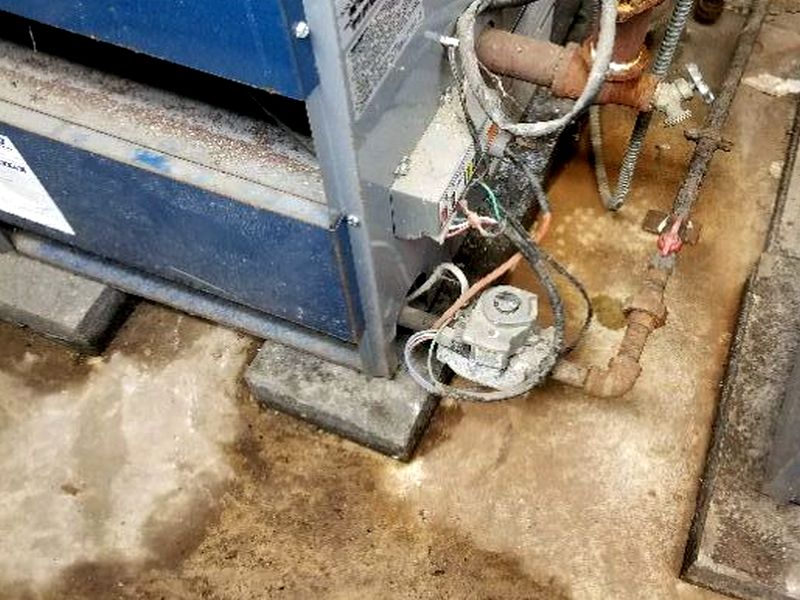
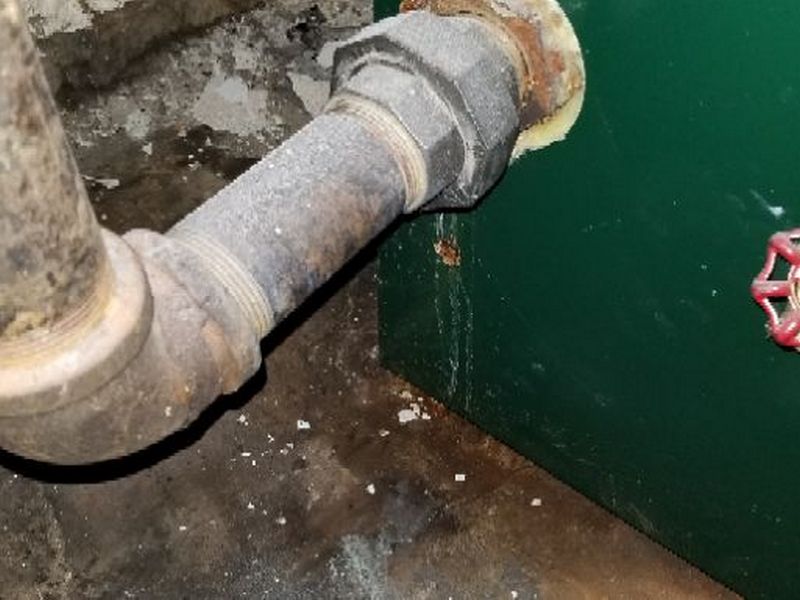
The boiler’s water pressure is too high. This will damage the system and is a potential safety hazard. Hire an HVAC contractor to evaluate the system and to make required repairs.
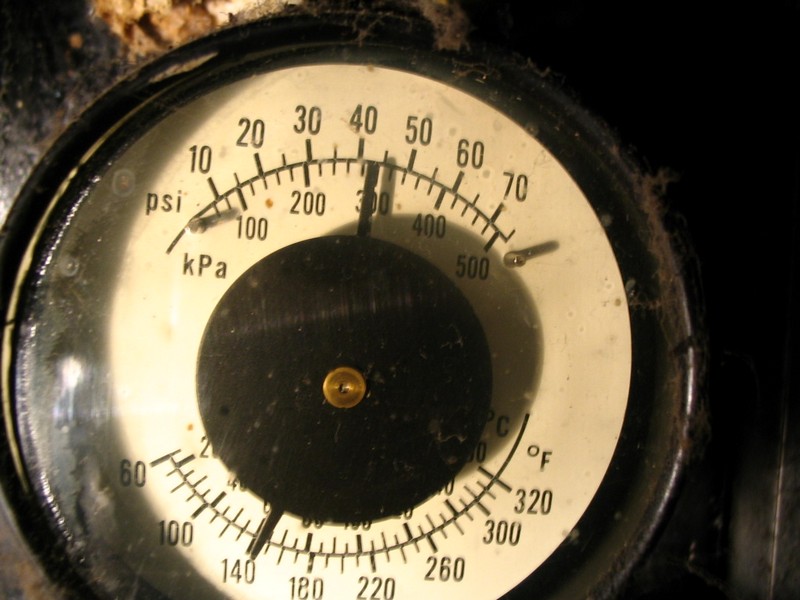
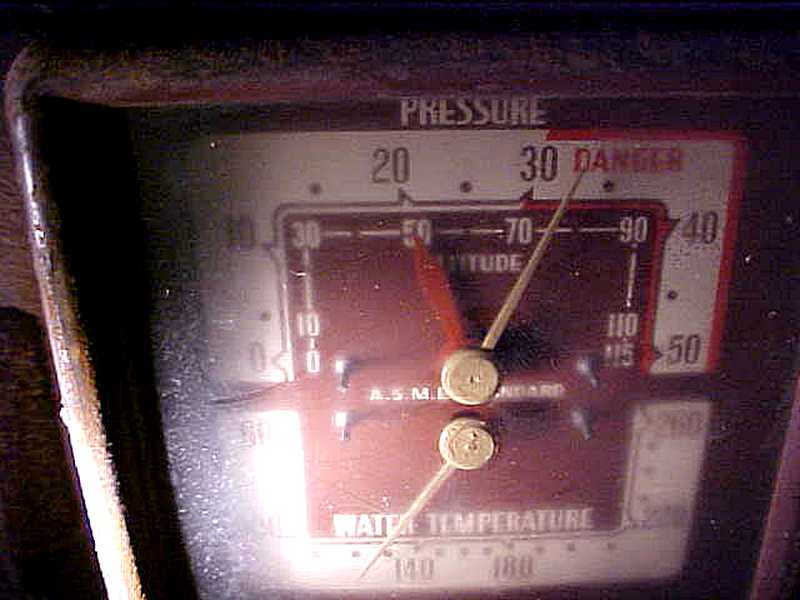
The boiler does not have a backflow preventer installed in the water supply. This permits contaminated system water to enter the house’s potable (drinking) water supply. Hire an HVAC contractor to evaluate the system and to make required repairs.
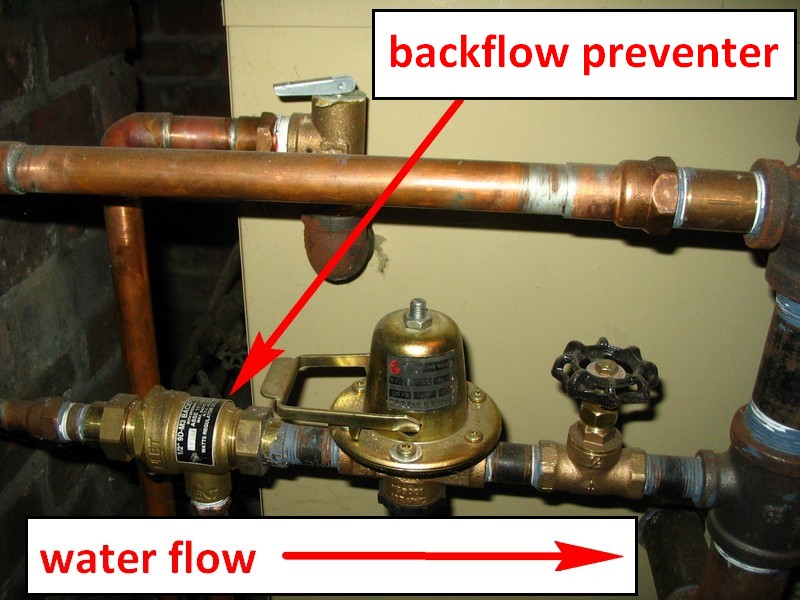
The boiler’s backflow preventer is improperly installed. It must have full “street” pressure (before the pressure reduction valve) to prevent contamination in the house’s potable water supply. Hire an HVAC contractor to evaluate the system and to make required repairs.
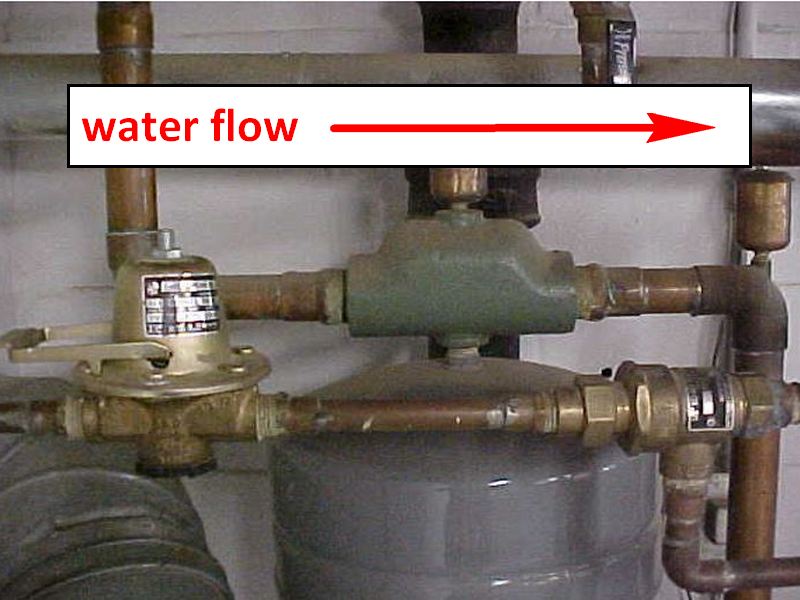
The pressure relief valve discharge pipe is missing. This pipe is required to direct high temperature steam and water toward the floor if the valve opens. Hire an HVAC contractor to make the needed repairs.

The pressure relief valve discharge pipe terminates more than 6″ above the floor. It must be within 6″ of the floor to minimize the possibility of a scalding injury if the valve opens. Hire an HVAC contractor to make the needed repairs.


The pressure relief valve is leaking. It may not function as needed for safety. Hire an HVAC contractor to make the needed repairs.
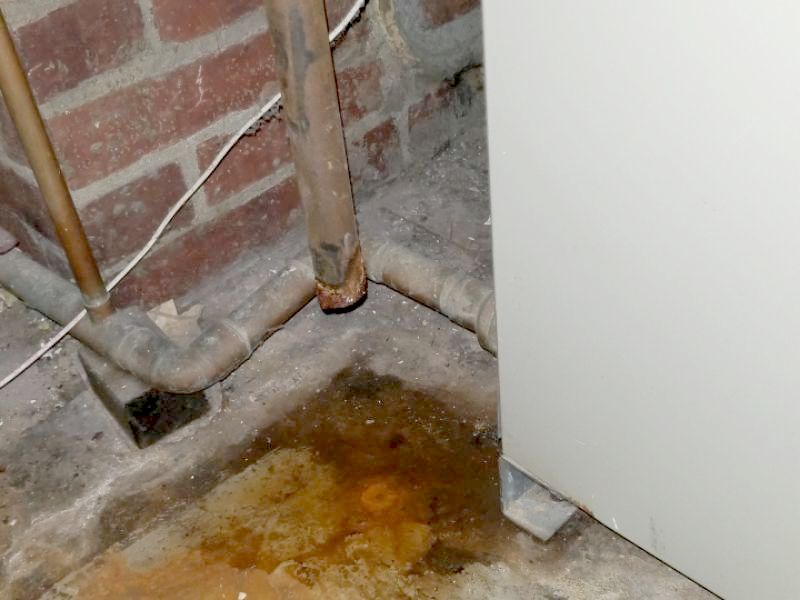
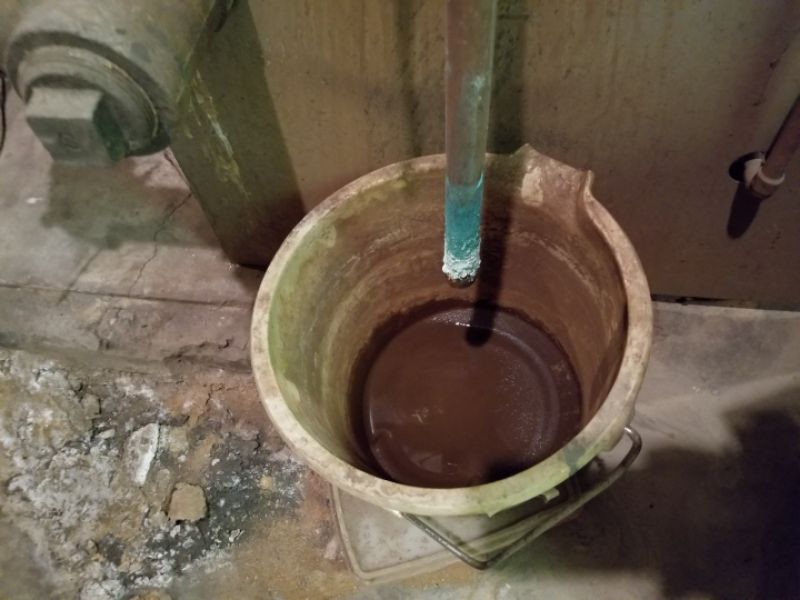
The pressure relief valve discharge pipe is a smaller diameter than the valve’s outlet. This will prevent a proper discharge and is potentially hazardous. Hire an HVAC contractor to make the needed repairs.
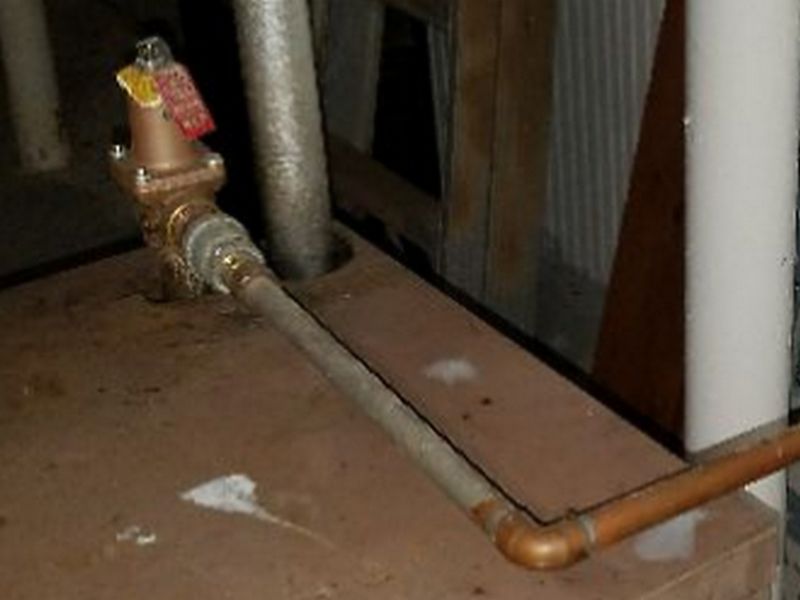
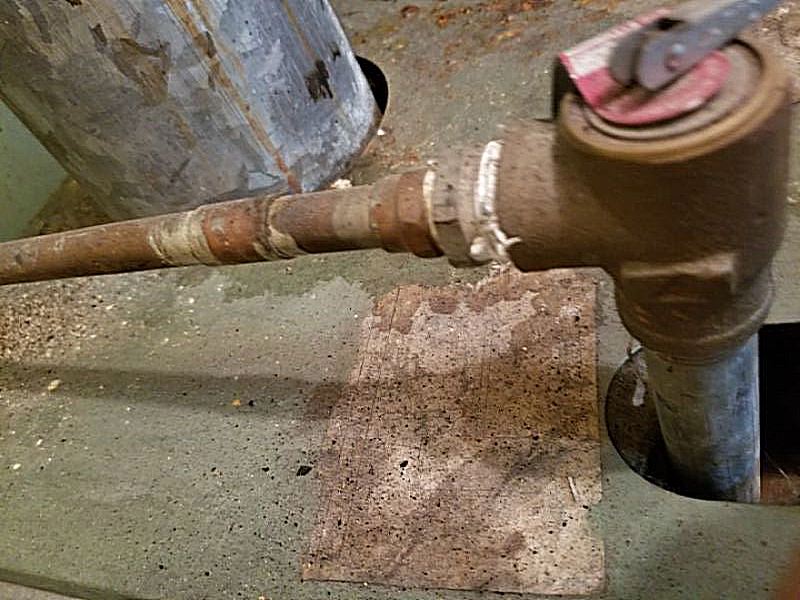
Space Heating Systems
Electric baseboard heaters are probably the most common type of single-zone space heating. They can frequently be found in older homes that were built without air conditioning. When electricity is the only fuel choice, they are being replaced by heat pumps, which use about 50% less energy. The exception is in a few dry areas with a low number of heating days. Baseboards are also a popular solution for additions and small finished areas where providing ducts would be difficult. Most units are 240 volts, but 120 volt models are available. Thermostats are located in each room, either on the wall or the units themselves, for the heaters there and allow great flexibility in zone comfort.
Inspect each zone as you enter the room. Don’t walk away from the area without turning the thermostat back down. Your IR thermometer or camera work very well for confirming operation. Baseboards should be secure to the wall, and have at least 3/4″ clear space above the floor or carpet. This is for safety and to allow proper convection. All covers, including at the thermostat, should be intact and without damage. Receptacles should not be located above electric baseboards to avoid damaging the cords. Curtains should be at least 6″ above the heaters, and furniture at least 4-6″ away. Baseboards should be free of excess dust and debris.
There is a loose baseboard heater. This is a safety hazard with electric resistance units, and a leak risk with hot water systems. Hire an HVAC contractor or electrician to make required repairs.
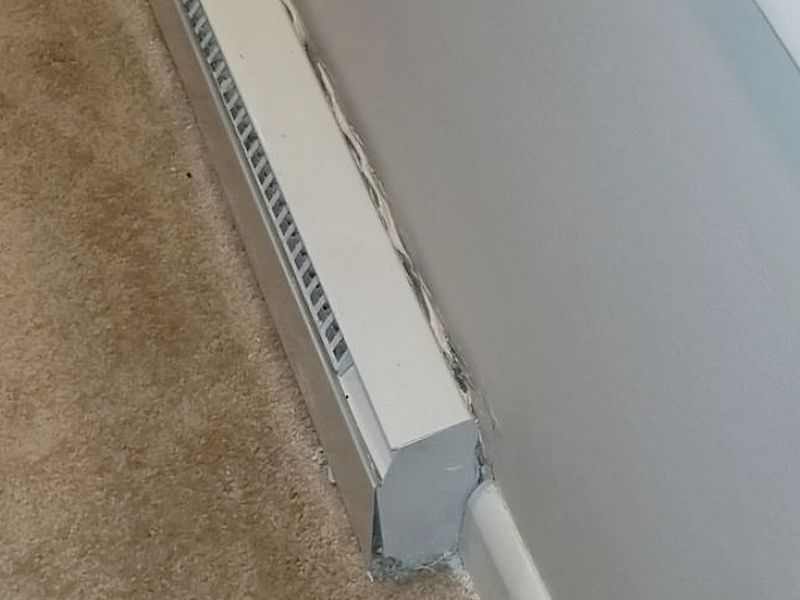
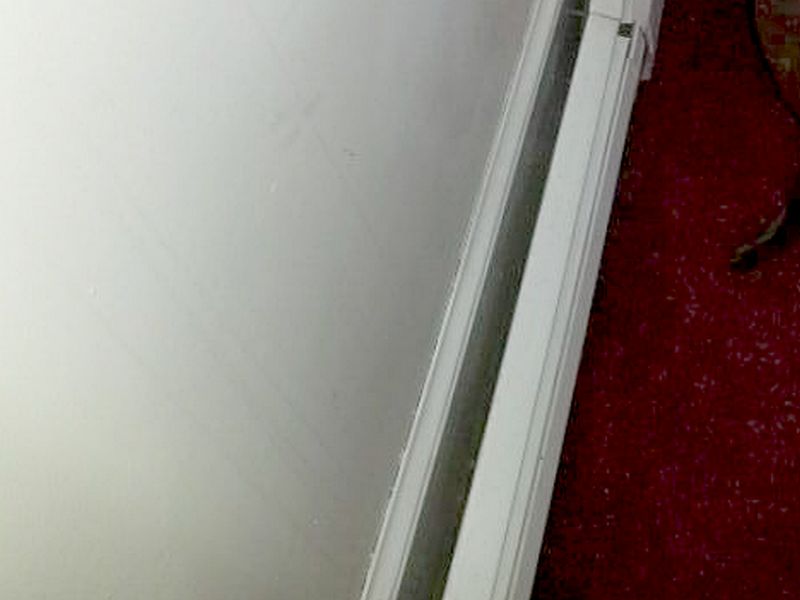
There is an inoperative baseboard heater. The cause for this could not be determined. This affect proper heating in the zone. Hire an HVAC contractor or electrician to make required repairs.
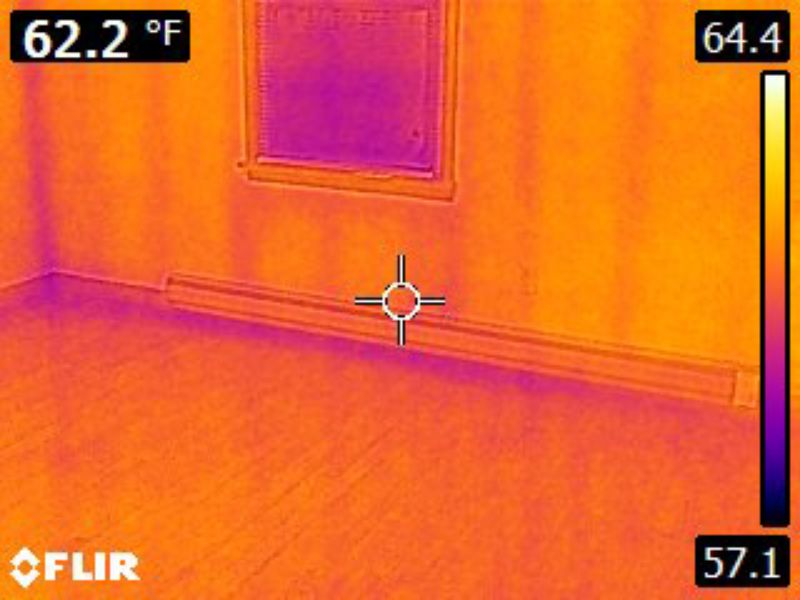
The baseboard heater’s cover is missing. This is a safety hazard. Hire an HVAC contractor or electrician to make required repairs.

The baseboard heater is damaged. This is a safety issue. Hire an HVAC contractor or electrician to make required repairs.
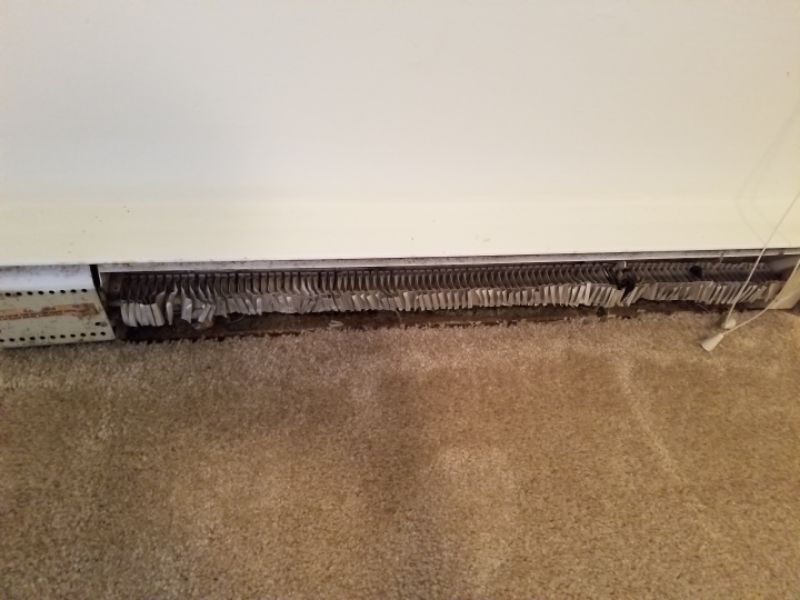
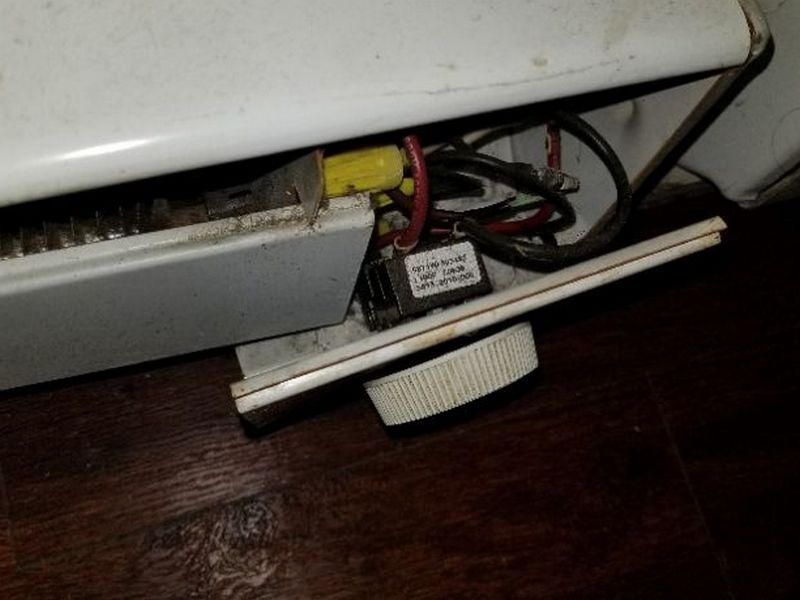
There are electrical receptacles above the electric baseboard heat. This is a safety hazard. Hire an HVAC contractor or electrician to make required repairs.
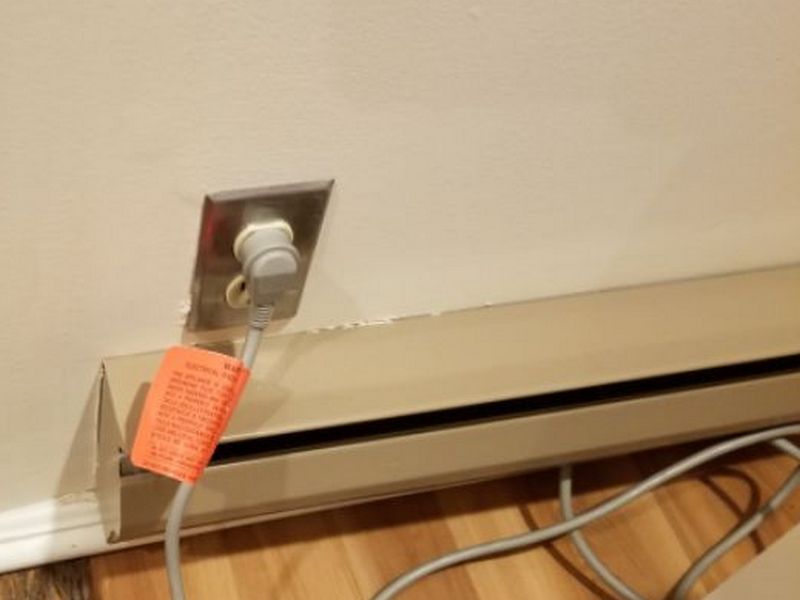
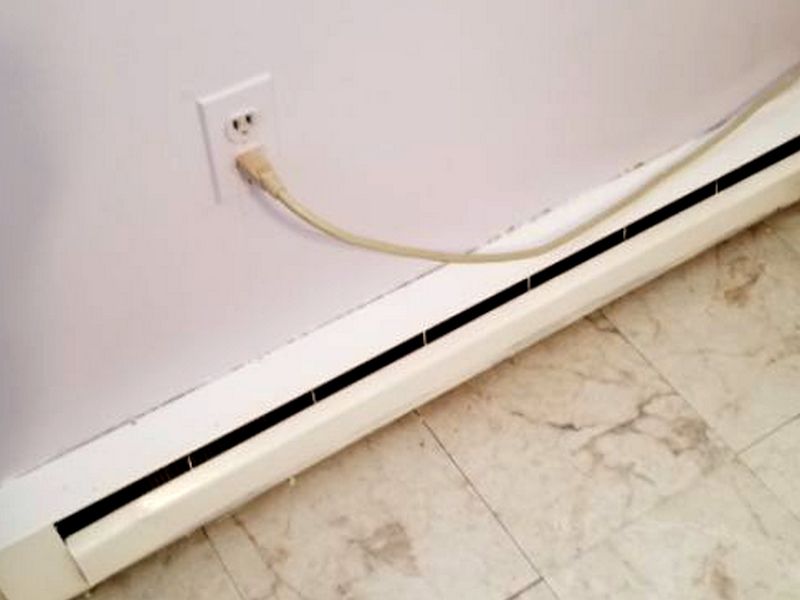
The curtains are too close to the electric baseboard heater. This is a fire hazard. Remove or change to curtains to provide at least 6″ of clearance.
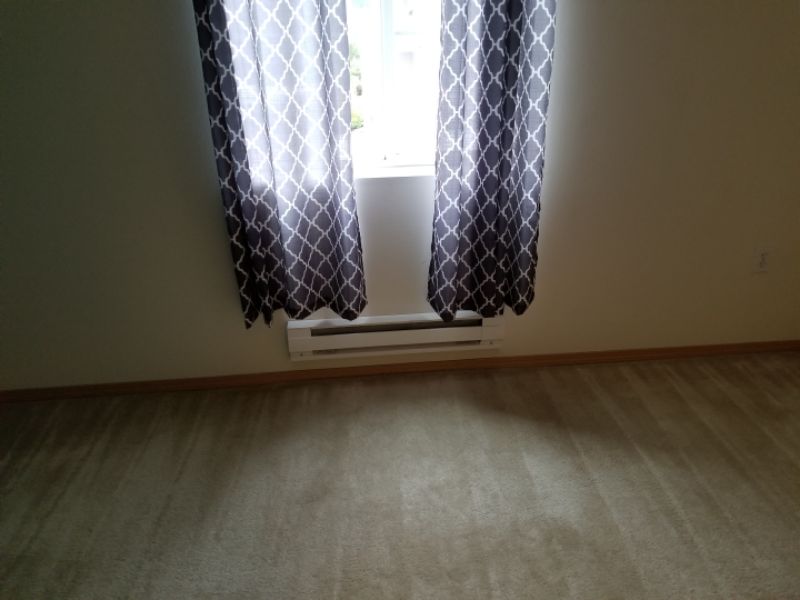
The baseboard heater is installed in an unworkmanlike manner. This is a safety hazard. Hire an HVAC contractor or electrician to make required repairs.
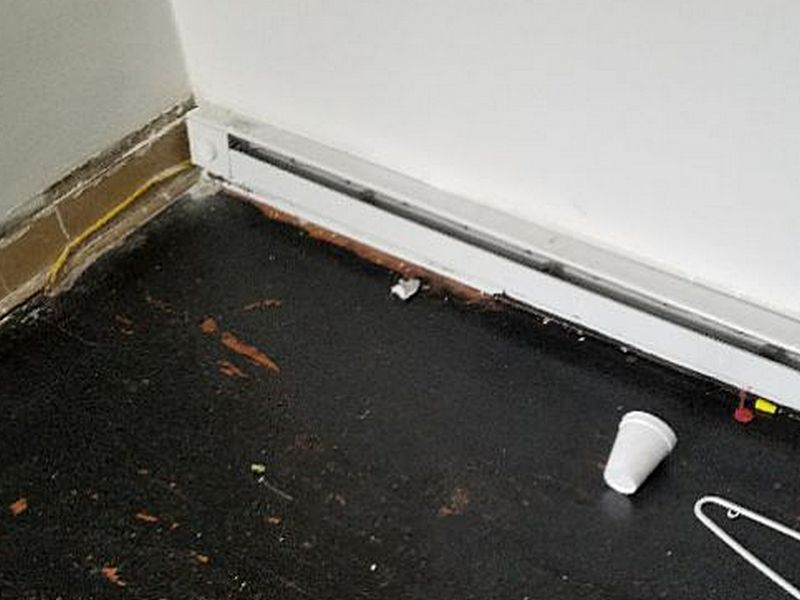
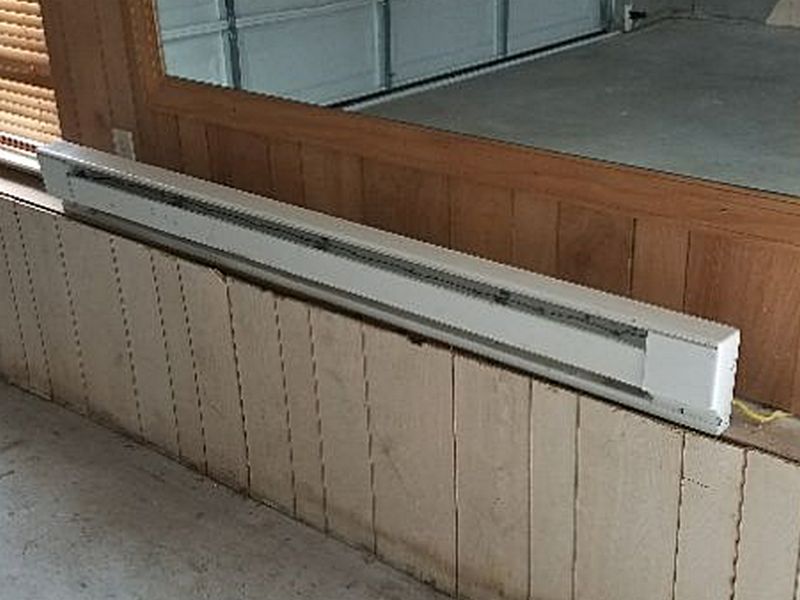
These are heat pumps and air conditioners that, as the name implies, do not have distribution ducts. They are designed to condition a limited zone. The air handler is mounted on the wall of the room being served rather then delivering air from a central location via ducts. Only the refrigerant lineset penetrates the exterior wall, and connects to a small compressor. There are compressor models that can power 2 or 3 air handlers. Mini-Splits are very popular for conditioning additions or renovated spaces where duct work isn’t practical. The air handler units are usually placed high on the wall and are operated by a remote control.
Inspect these systems much the same as you would a heat pump. Always confirm that the heat function comes from the compressor and isn’t just electric strip heat. Obtaining a Delta-T is a bit trickier as the supply and return are both on the wall unit. Labels on the interior portion may be hard to see, but you should attempt to capture the inside and outside data plates and check that the capacities match. Be alert to any signs of condensate leakage, which would likely occur in the wall below the air handler.
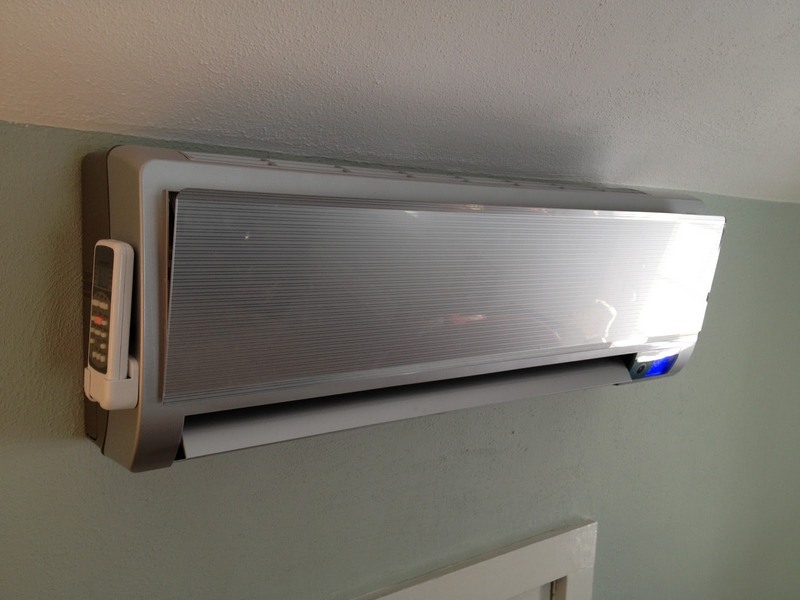
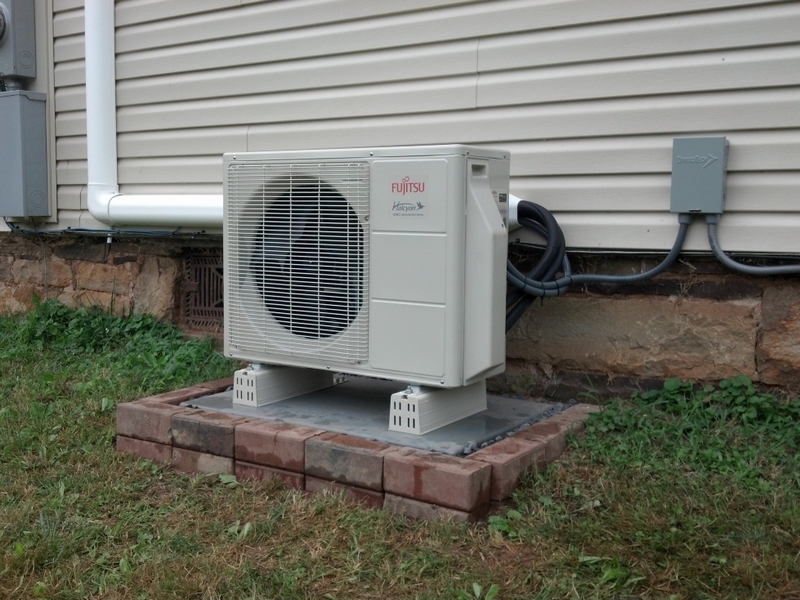
In this section we are covering electric radiant heat: hot water radiant systems in floors is a “Distribution” method for a boiler. Residential radiant ceiling and wall panels are generally, in this country, an older installation. However, they are still available, and in some applications can provide credits towards a LEED Certification. Radiant in-floor heat is becoming increasingly popular, especially in bathroom suites. Electric floor systems are generally low-voltage mats, films, or foils, or high voltage cables. They can be embedded in lightweight gypsum and concrete, sandwiched in a sub floor construction, or installed between the joists below the floor. The joist bays below should be insulated.
Inspecting radiant systems has been greatly simplified by our use of infrared cameras. They can easily confirm both proper operation and defects. Radiant coverage should be overall uniform throughout the space. Toilets should not be surrounded by the coils as this can deteriorate the wax seals. Evaluate each zone using the homeowner thermostat controls. Make sure you return the settings as you found them.
Visible Light Photo:
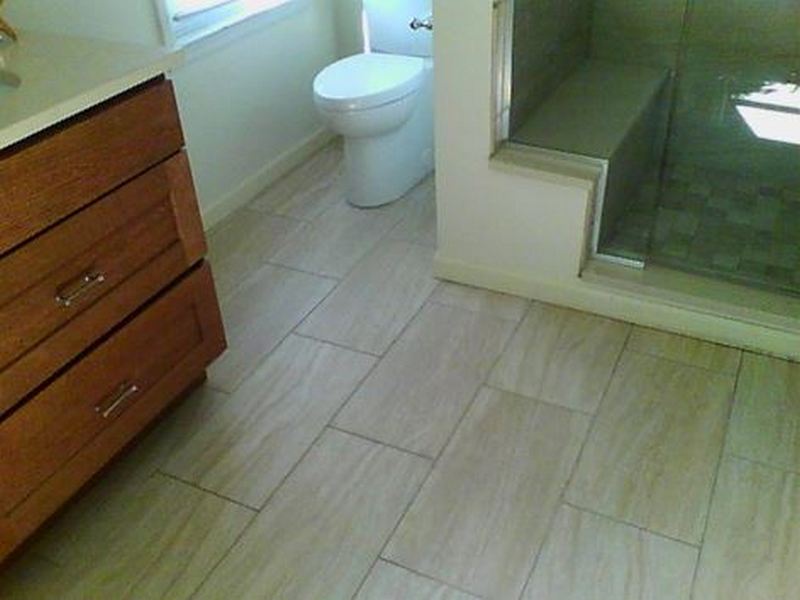
Infrared Photo – Acceptable System:
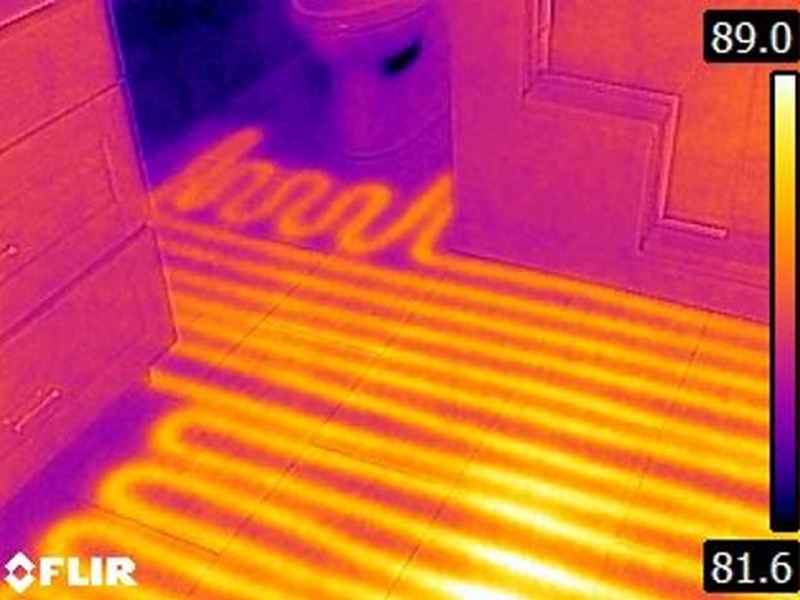
Sections of the radiant heating are inoperative. This affects proper conditioning of the area. Hire an HVAC technician or an electrician to provide repairs as needed.
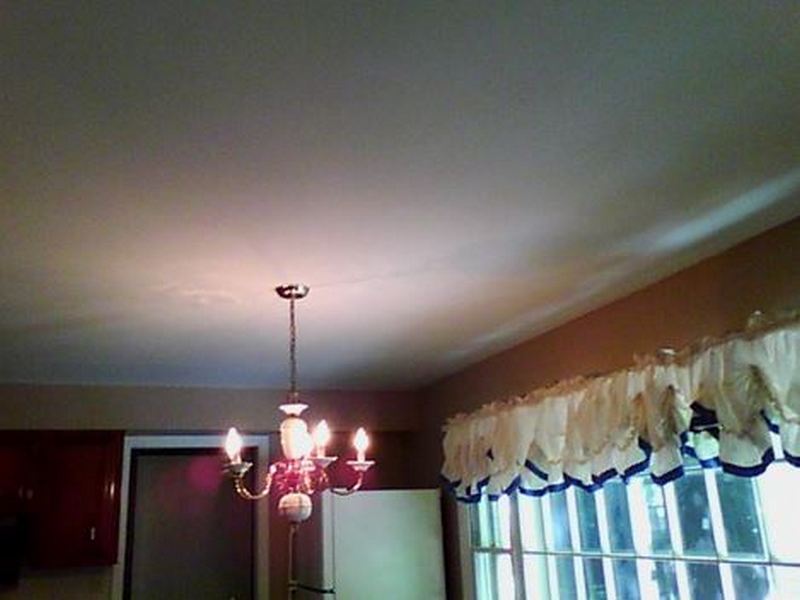
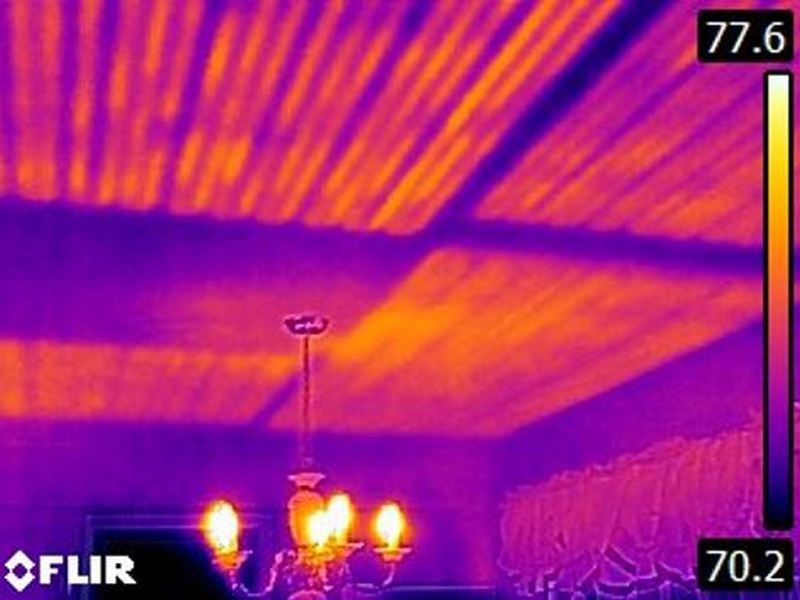
Older, small homes sometimes have a single fossil fuel furnace installed at a central location, either in the floor or a wall. This may have been acceptable as the sole heat source when the dwelling was permitted. However, it won’t meet the requirements in modern Code for heating habitable rooms. Additionally, some of these wall furnaces are unvented, which was not a problem with the high infiltration rates common in homes at that time. Renovations and upgrades that “tighten” a house, e.g. new windows, air sealing measures, will starve the appliance for oxygen and create a dangerous situation.
Inspect the installation, condition, and operation of these furnaces carefully. Floor furnaces collect significant dirt and debris, and should be checked closely from the crawlspace side. Be alert to any signs of backdrafting or deterioration. If there’s any concerns about safety, especially with an unvented unit, a Defect Statement recommending further evaluation should be used. Include an EUL statement as needed.
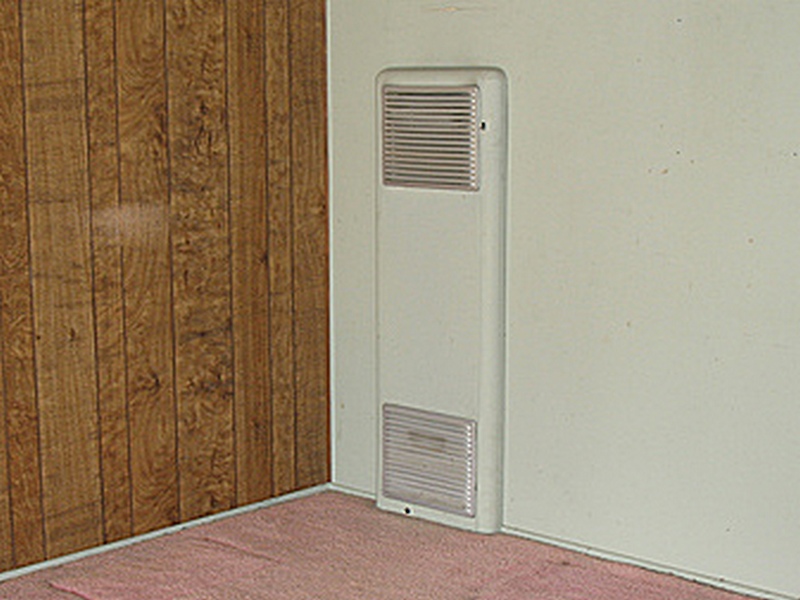
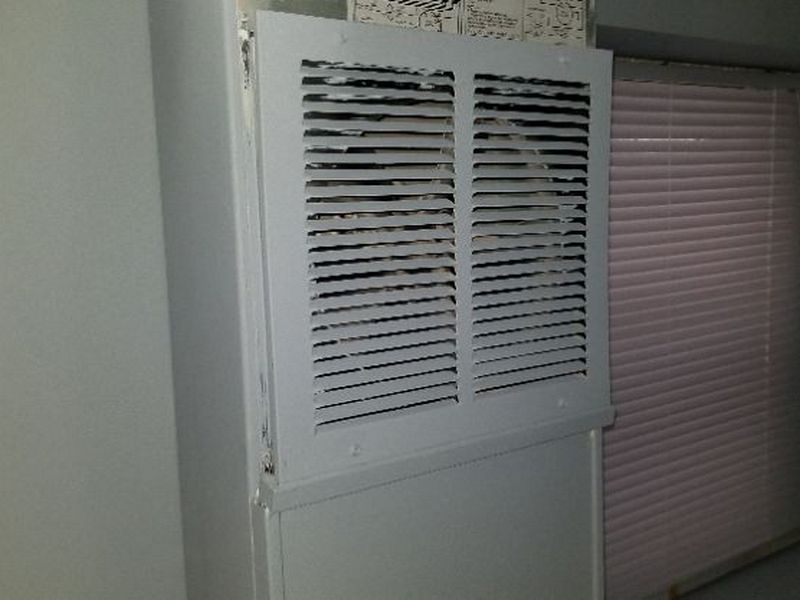
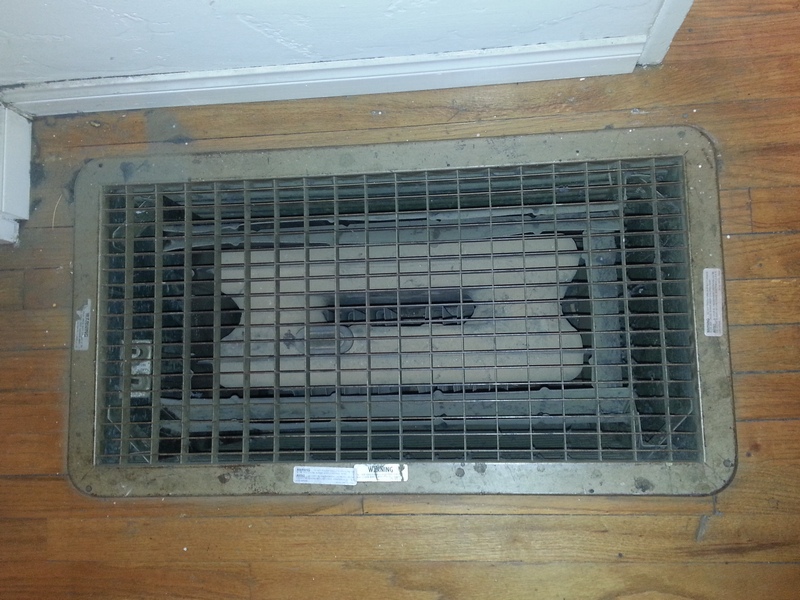
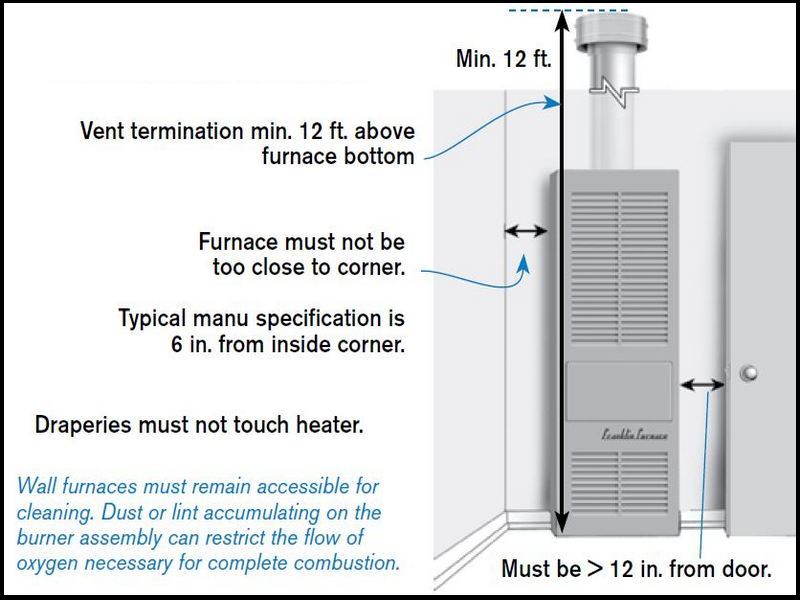
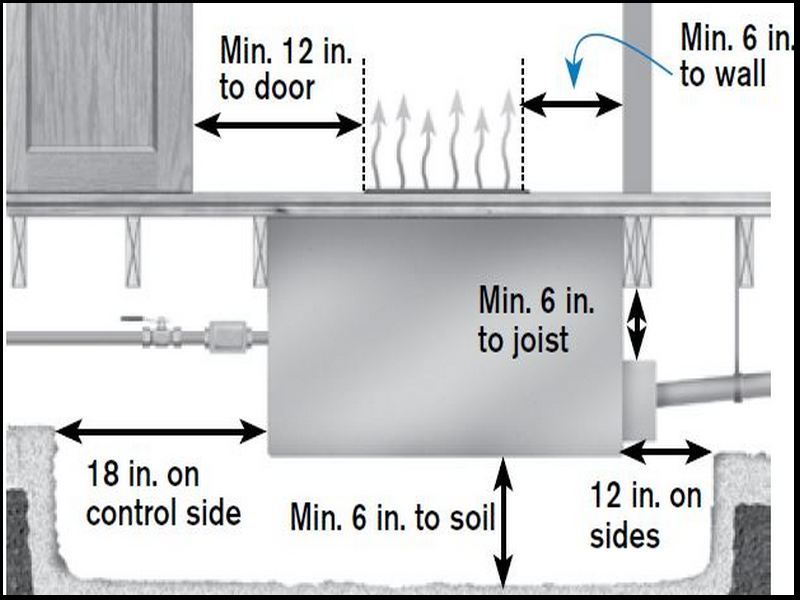
This section includes in-wall electric heaters, with and without fans, as well as permanently-installed gas wall heaters. Electric bathroom heaters have been around for a very long time. As such, they may not comply with modern safety standards, or may be past their EUL. Gas wall heaters are usually unvented, and must be inspected in context with the specific space. Some jurisdictions do not allow unvented appliances in bedrooms. Portable heaters, gas or electric, are outside of the inspection scope and cannot be counted as heat for a habitable space.
Inspect electric wall heaters for function, damage, and any signs of overheating. Use EUL statements when appropriate. Ensure safe clearances from water and flammables, including hanging towels or robes. Unvented gas appliances must have oxygen depletion sensors. These devices cause the pilot flame to lift away from the thermocouple when the available oxygen falls below 20%. That cools the thermocouple, which stops sending its micro-voltage to the gas valve. Without this current, the valve closes and shuts off the flow of gas.
Modern Electric Wall Heater
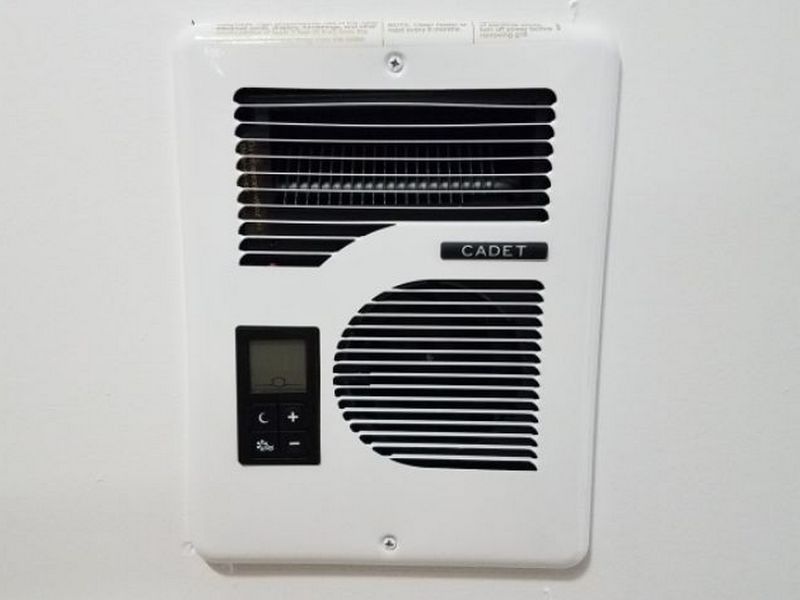
Old Electric Wall Heater >EUL

Gas Wall Heater
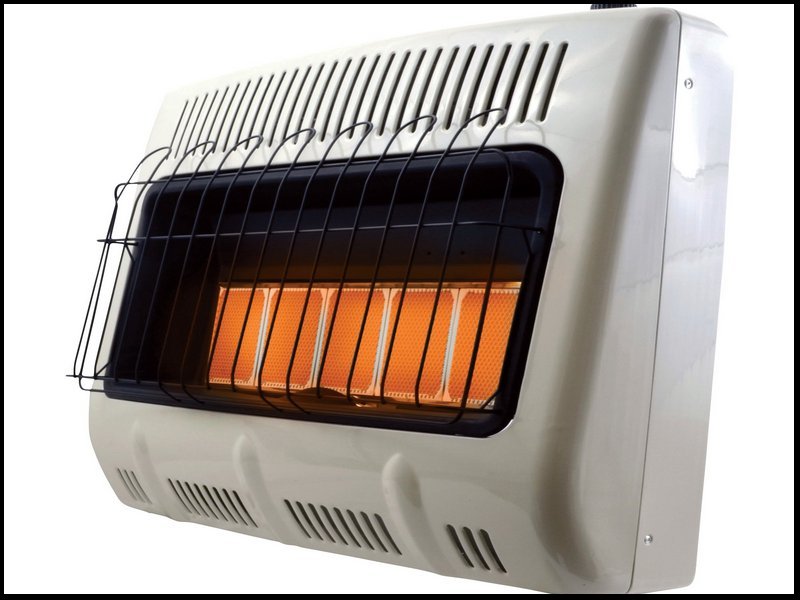
Oxygen Depletion Sensor

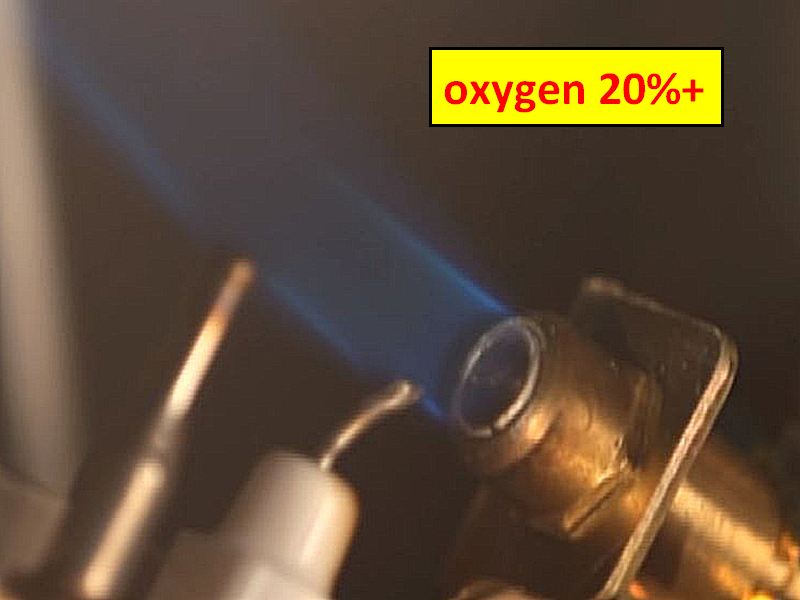
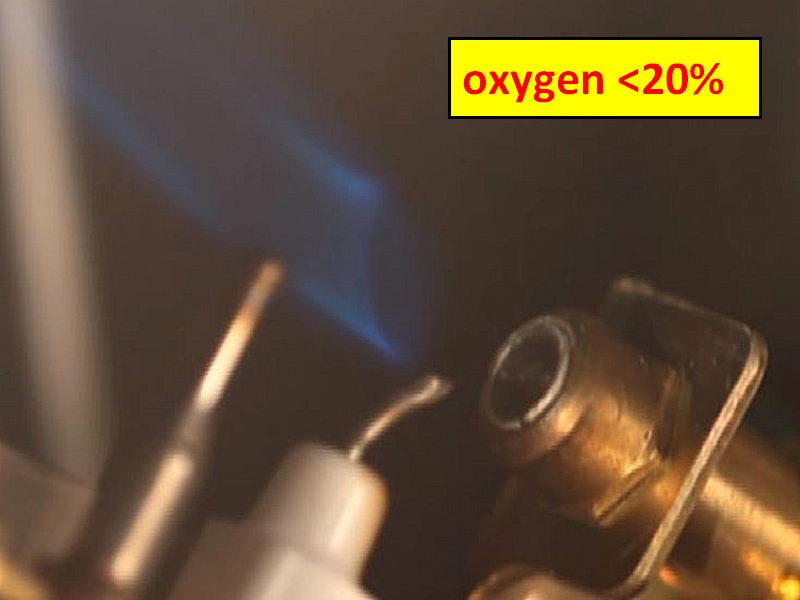
The electric wall heater shows signs of overheating. This is a fire hazard. Hire an electrician to make repairs as needed.
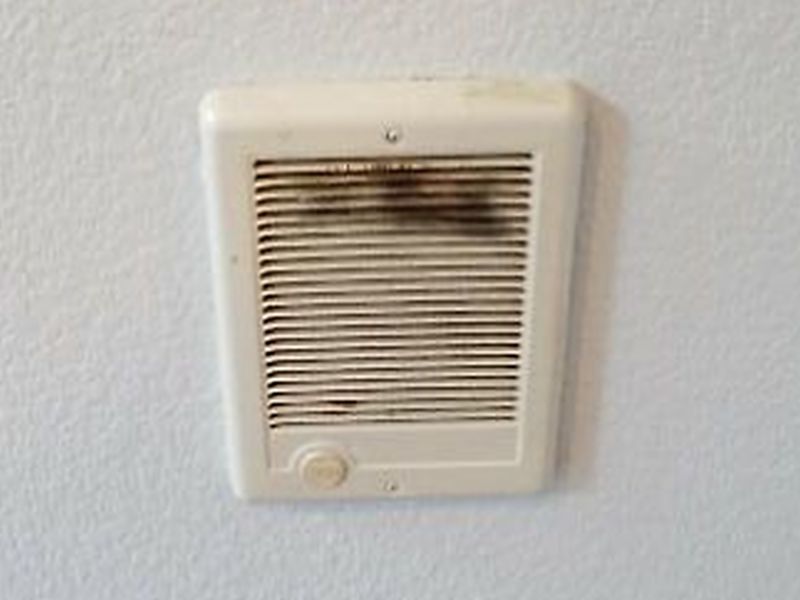
Towel bars and/or robe hooks are installed above the electric wall heater. This is a fire hazard. Relocate the bars or hooks as needed.
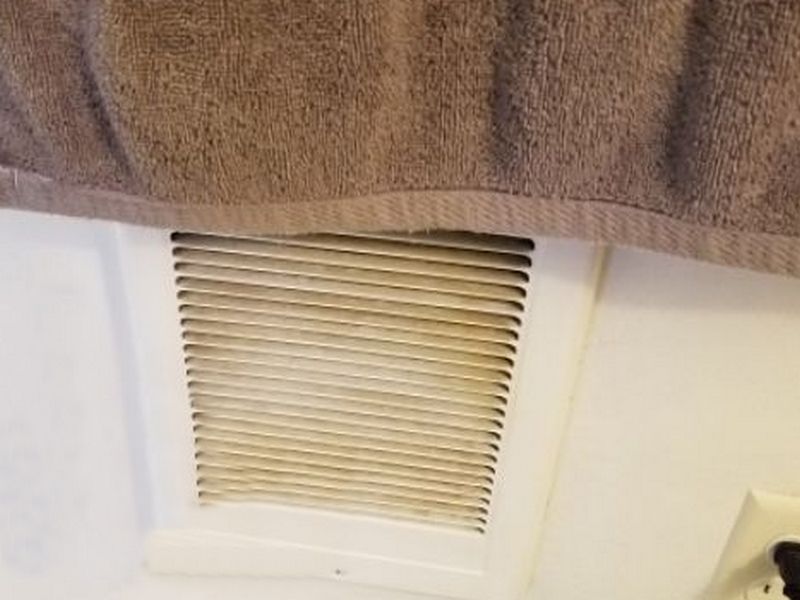
Circulator Pump/Fan
Prior to the 1940s residential hot air and hot water heating installations were “gravity” systems; they lacked fans and pumps. The air and water circulated using only the thermodynamics of convective heat transfer. Hot air and water are lighter and less dense than cold air and water. They rise through the distribution system and displace the heavier, denser cold fluid. That cold air or water falls back to the furnace or boiler to be heated and start the cycle all over again. Gravity furnaces were called “octopuses” as they had huge upward branching supply ducts. A gravity system could take an hour or more to fully heat the house. The addition of fans and pumps reduced this to a few minutes.
Evaluate circulator fans for operation. They should come on after heating is initiated, turn off afterwards, and occasionally turn back on briefly a few minutes after the heating cycle ends. Fans should not be noisy or vibrate. Inspect as possible for dirt buildup. Air handlers should have a safety switch that shuts off the circulator when the fan compartment cover is removed. Boiler pumps should be inspected to ensure they are running to circulate the heated water. The pump should be quiet, and not vibrate or have any leaks.
“Octopus” Furnace:

The circulator fan door interlock switch is missing or defective. This is a potential safety concern that may also prevent the system from running at all. Hire an HVAC contractor to repair or replace the switch.
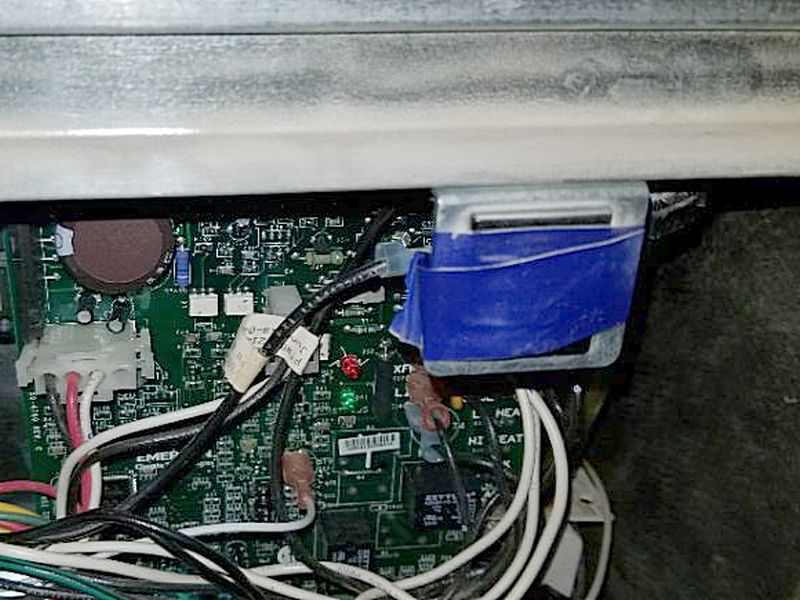
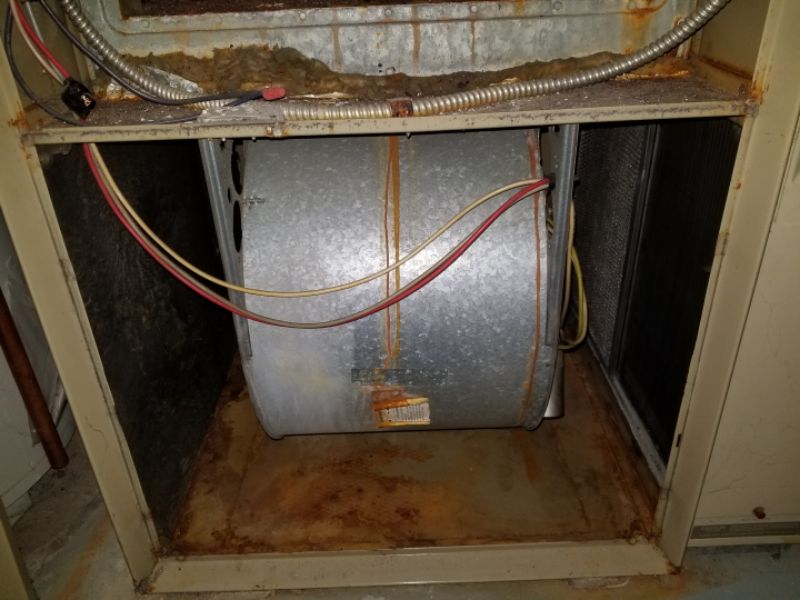
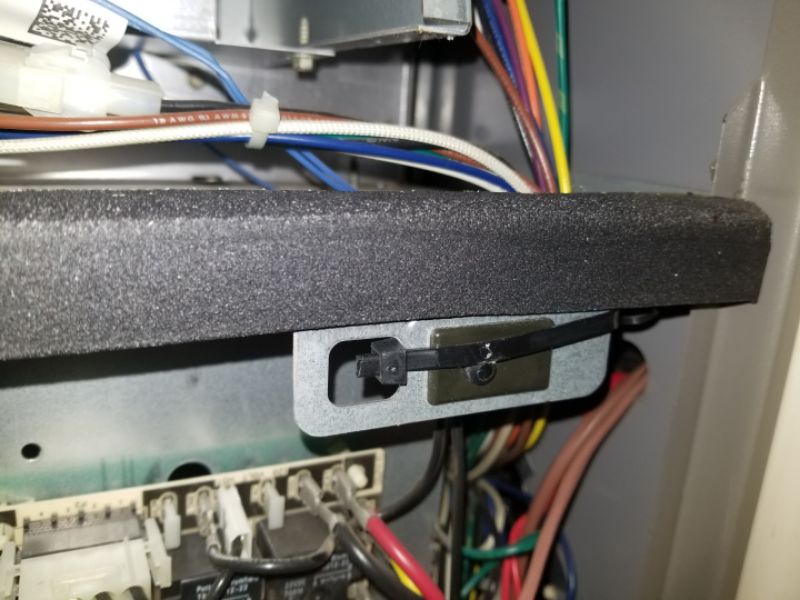
The circulator fan is dirty. This reduces the efficiency of the blower, and affects indoor air quality. Hire an HVAC technician to clean and service the system.
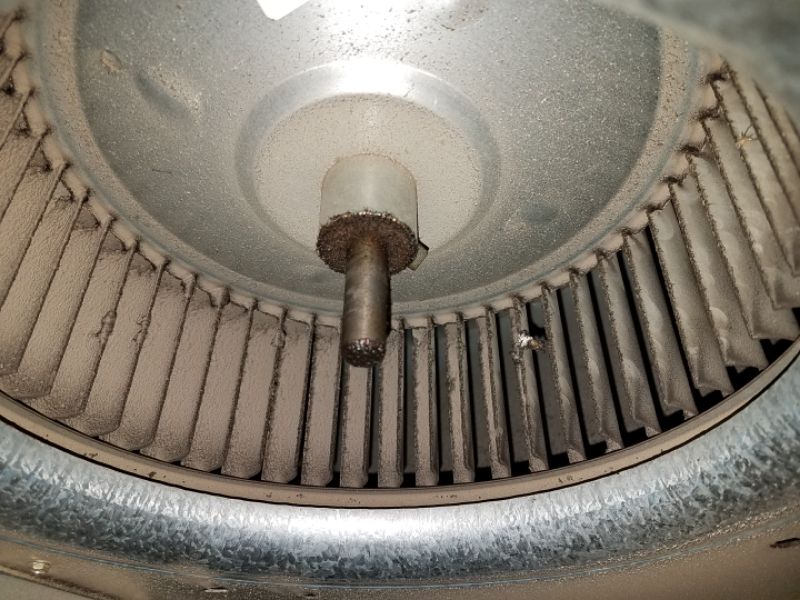
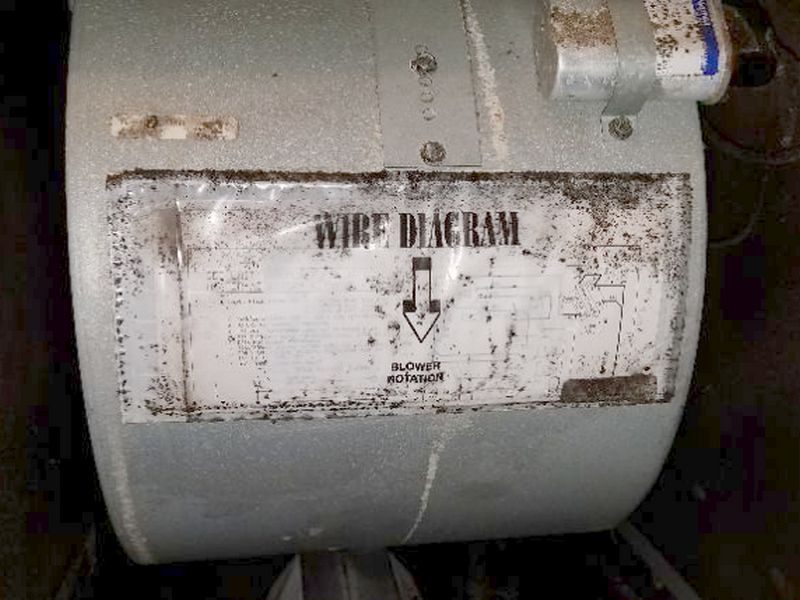
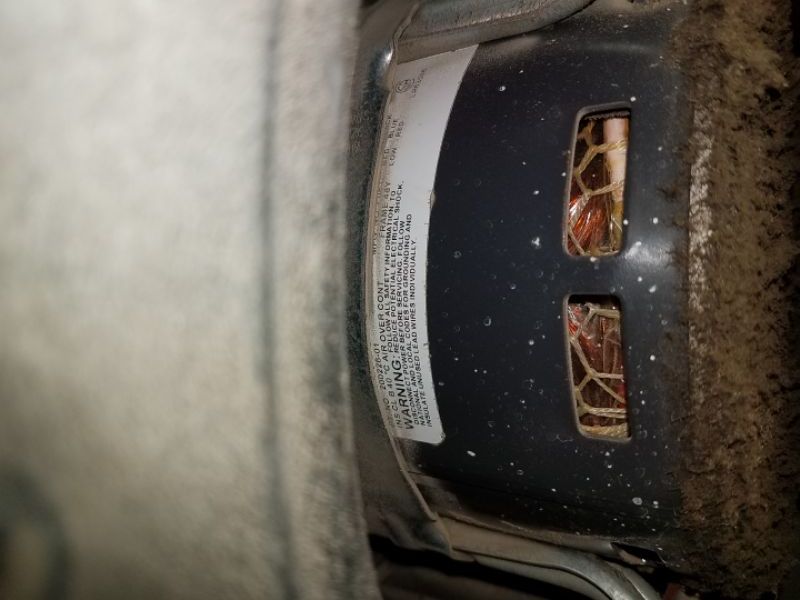
The air handler’s interior insulation is loose. This can damage the circulator fan if it falls into the blower assembly. Hire an HVAC technician to provide repairs as needed.
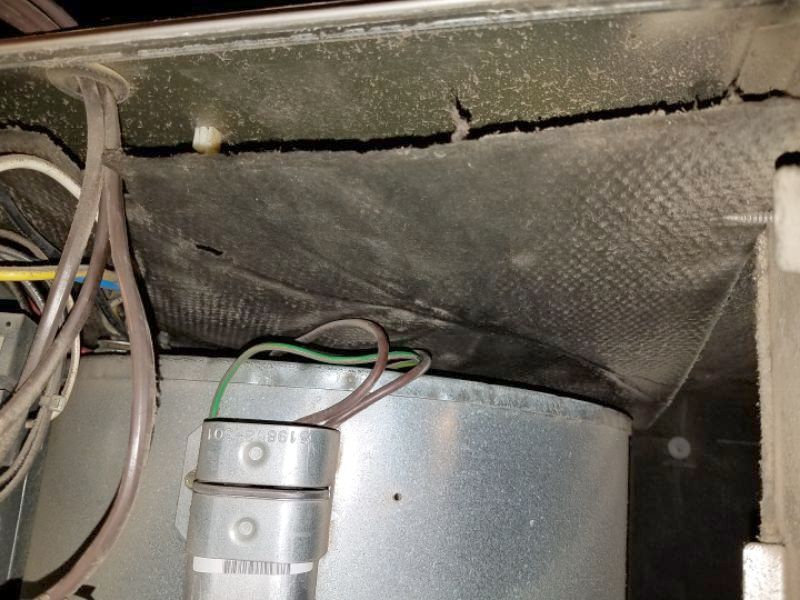
The air handler for the HVAC system is installed in a restricted space that may prevent proper access by service personnel. Hire a contractor to make repairs as needed.

The circulator pump is leaking. This indicates a failing and unreliable component. Hire an HVAC contractor to repair or replace the pump.
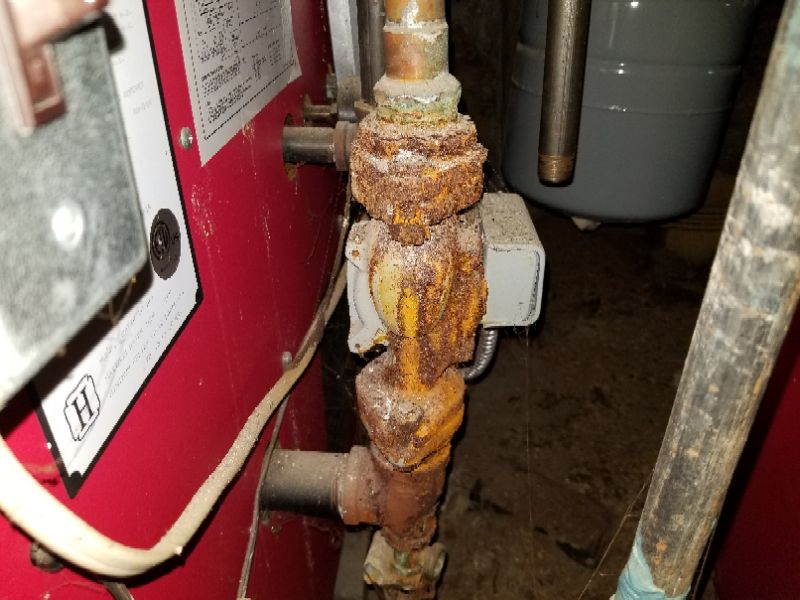
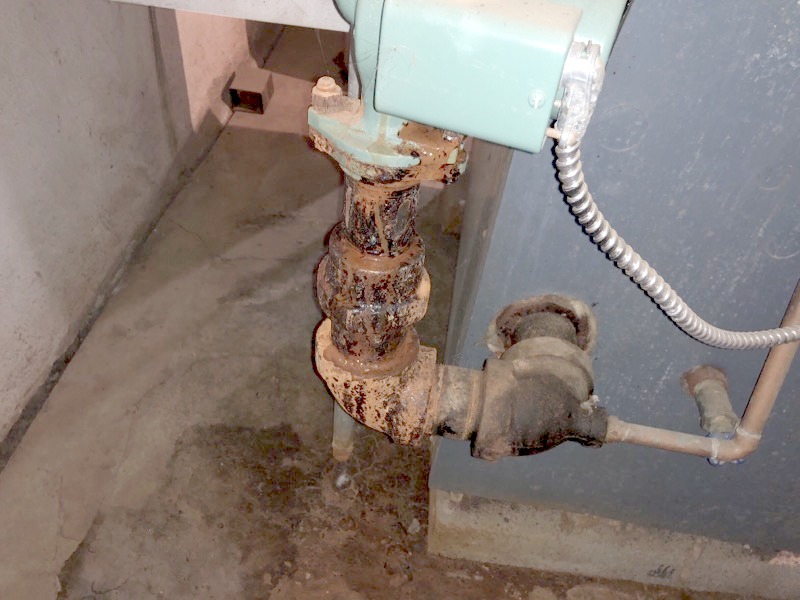
Compressor
Air-source heat pumps have an exterior compressor unit. In the Winter, the heat pump’s reversing valve causes the exterior coils to become cold. The 2nd. law of thermodynamics tells us, simply put, that “heat moves towards cold.” The latent heat in the outside air moves into the coil’s refrigerant, is made hotter through compression, and is presented to the home’s return air stream in the interior cabinet.
Evaluating a heat pump exterior unit (compressor) is much the same as for a central AC system. The cabinet should be level (a slight tilt for drainage is fine), on a secure pad above grade, and clear of foliage. Inspect for damage and dirt buildup. Dryer vents shouldn’t discharge on the compressor. Look for oily stains on the lineset, which indicates a possible refrigerant leak. The larger “suction” line should be insulated. Confirm that the exterior capacity is not larger that the interior coil capacity. The compressor has a maximum OCPD rating; the breakers or fuses cannot exceed this. The unit should run smoothly and quietly, and be free of ice. A very light frost is OK, but should clear quickly during the defrost cycle, signaled by a “whooshing” sound. An electrical disconnect must be within sight when standing at the compressor.
Reversing Valve:
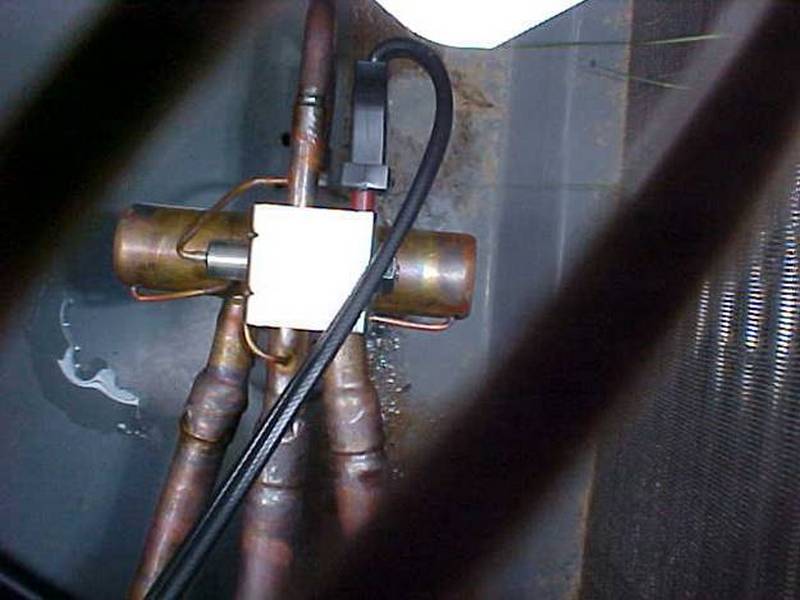
The insulation is damaged or missing at the compressor’s suction line. This affects the system’s efficiency. Install an exterior-grade pipe insulation on the suction line.
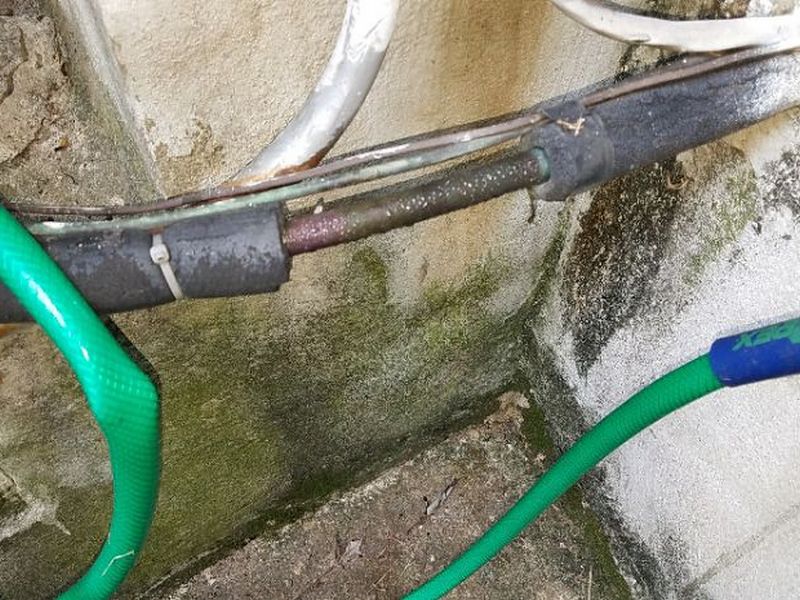
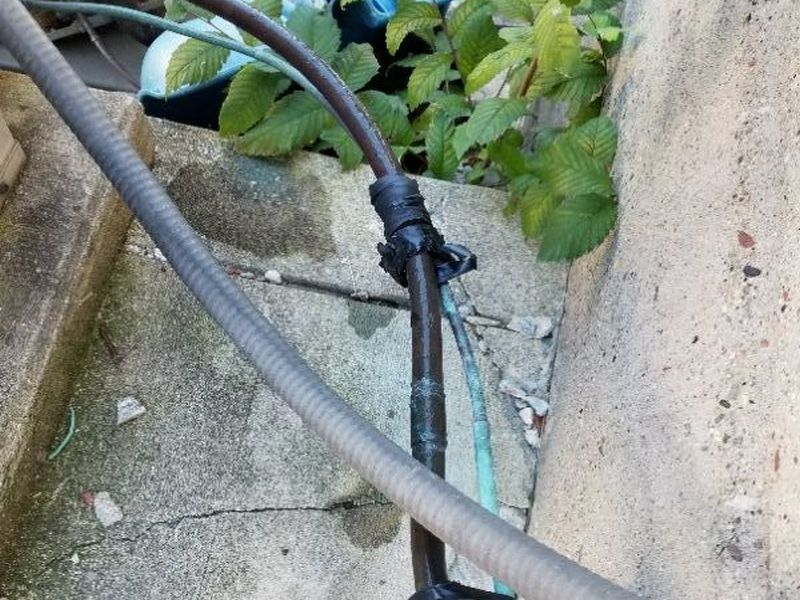
There is an excess of bushes, shrubs, and debris around the exterior compressor. This restricts airflow, and affects the efficiency as well as the life expectancy of the unit. Remove the foliage and debris.


The compressor is not level. This will damage the compressor motor. Hire an HVAC contractor to make required repairs.
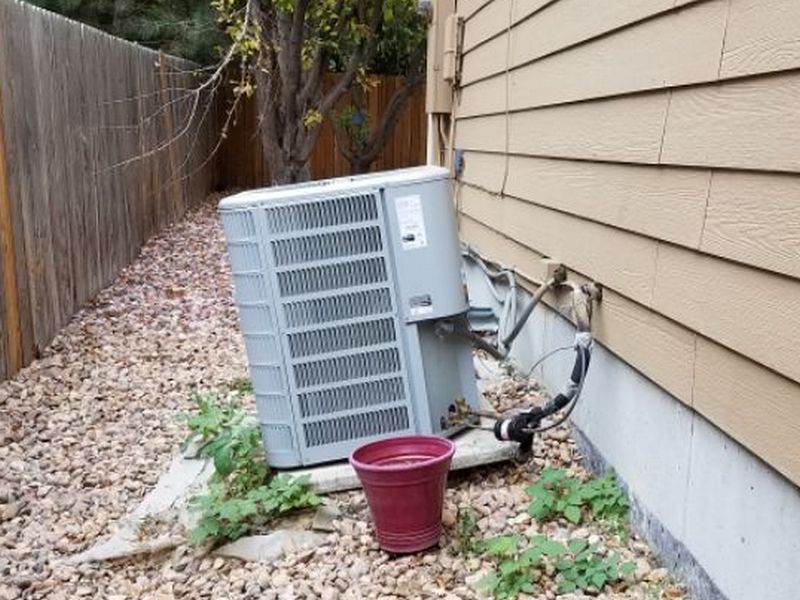
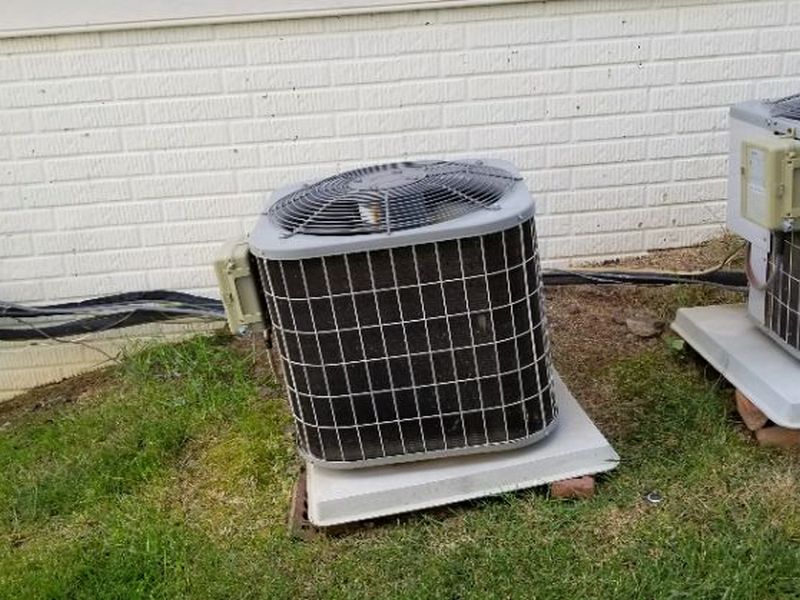
The compressor does not have a support pad and is resting directly on the ground. This is not a stable base, and settlement can damage the system. Hire an HVAC contractor to install the compressor on a support pad.
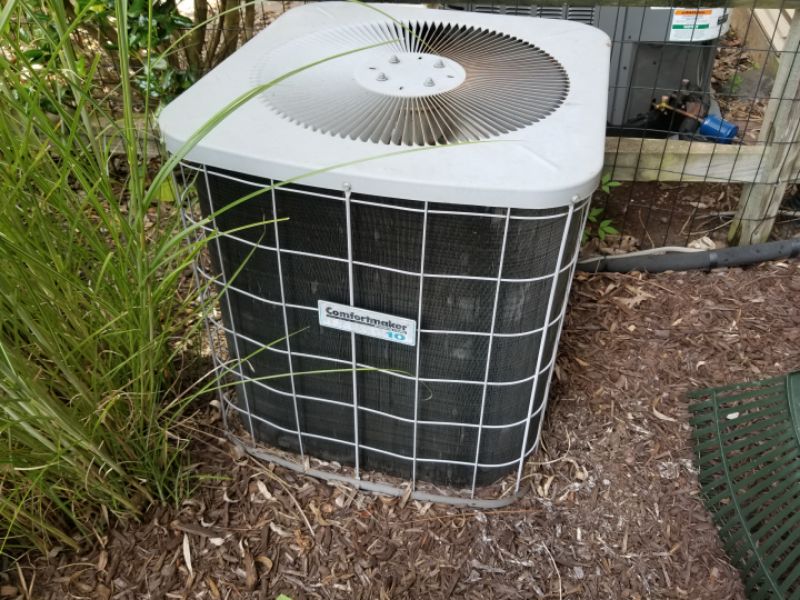
The compressor unit at the exterior is in contact with the soil and/or mulch. Moisture and lawn and garden chemicals can corrode the cabinet and cause a premature failure. Remove the soil and mulch.
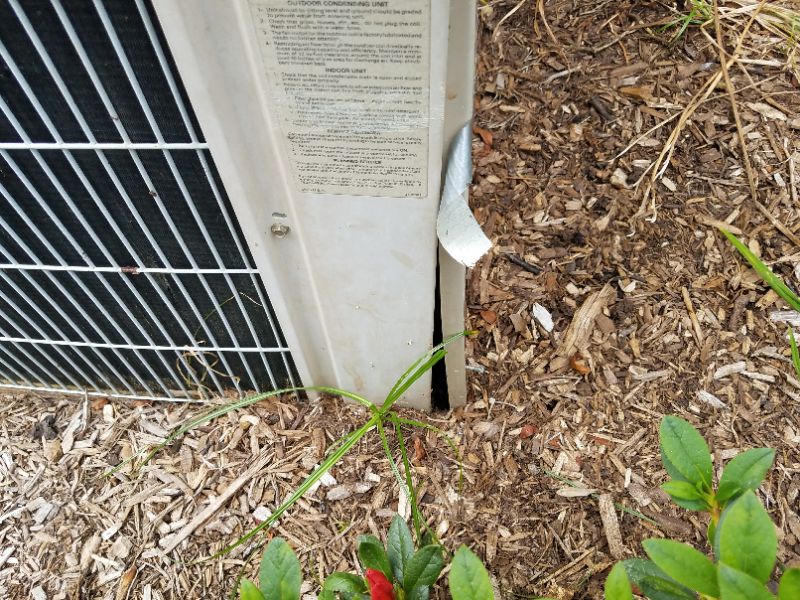
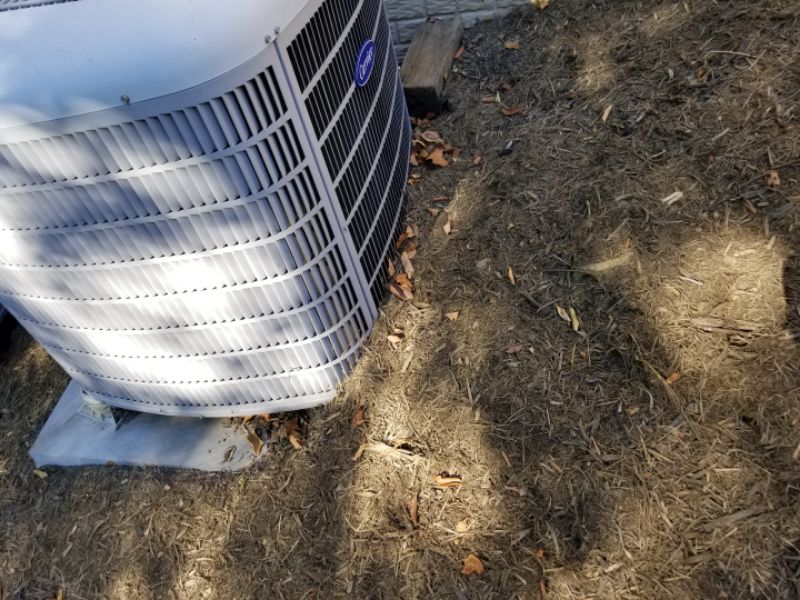
The compressor coils are dirty. This can affect efficiency. Hire an HVAC contractor to clean the coils.

The compressor has damaged fins. This causes reduced performance and system failure. Hire an HVAC contractor to evaluate the compressor and to make required repairs.
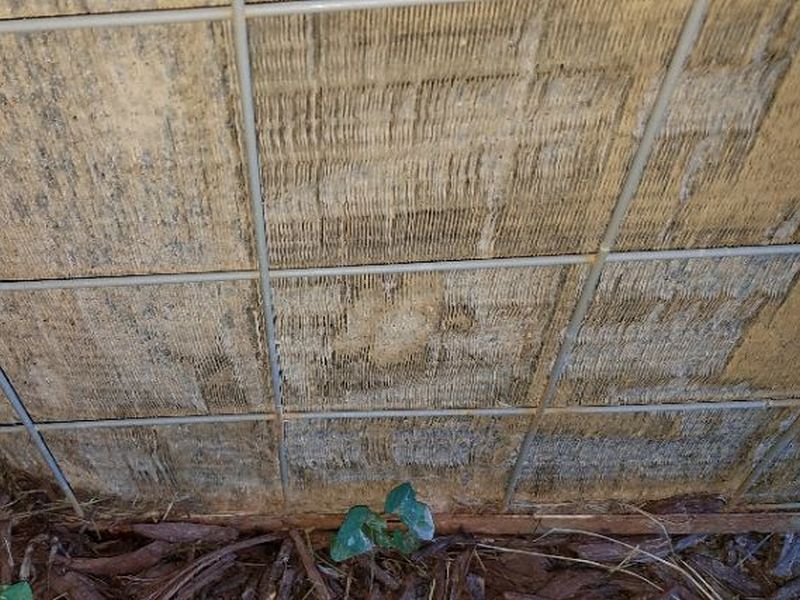
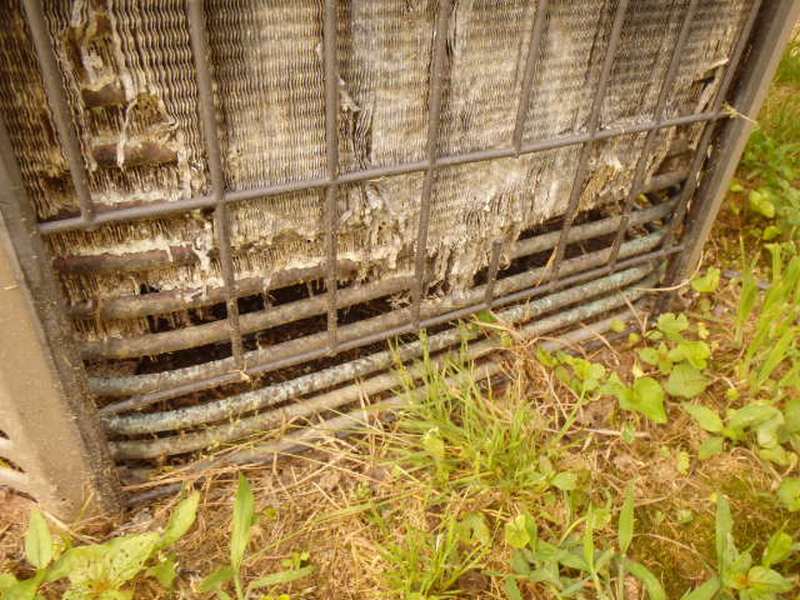
The compressor has ice on the refrigerant line and coils. This implies a low refrigerant charge or inadequate air flow. This will affect proper performance and can damage the system. Hire an HVAC contractor to evaluate the system and to make required repairs.
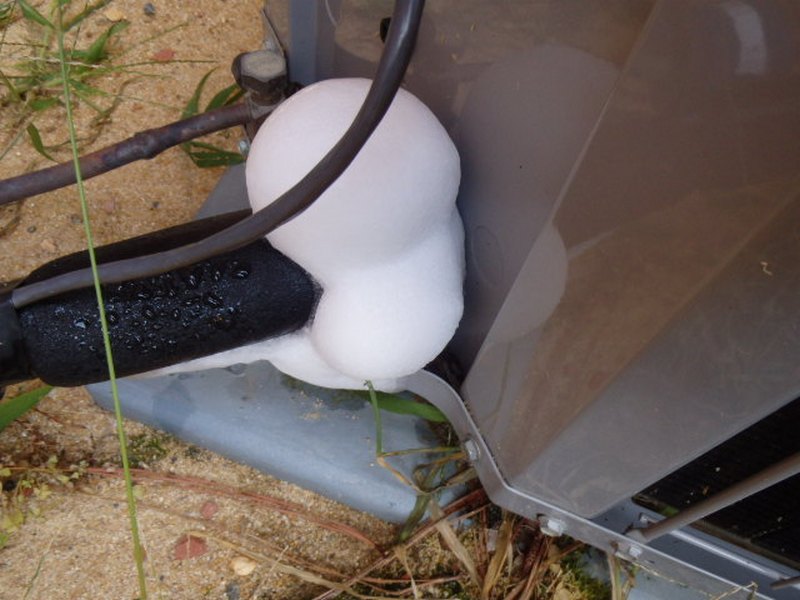
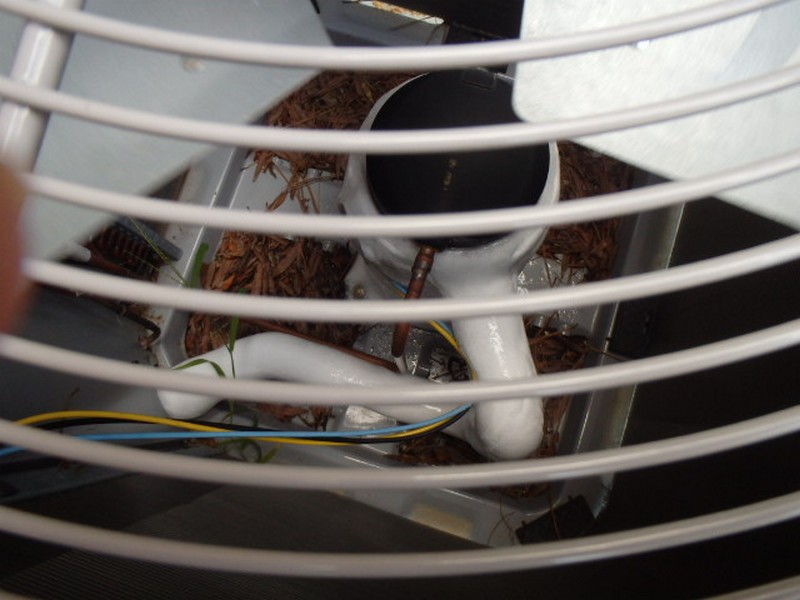
The circuit breaker or fuse for the compressor is larger than the maximum allowed as noted on the compressor’s rating plate. This can damage the compressor, and may void the system warranty. Hire an electrician to replace the breaker or fuse.
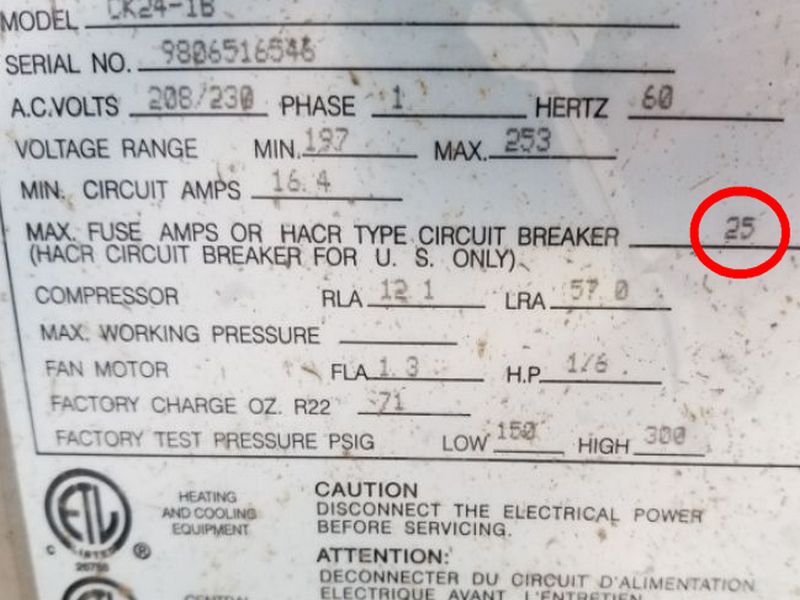
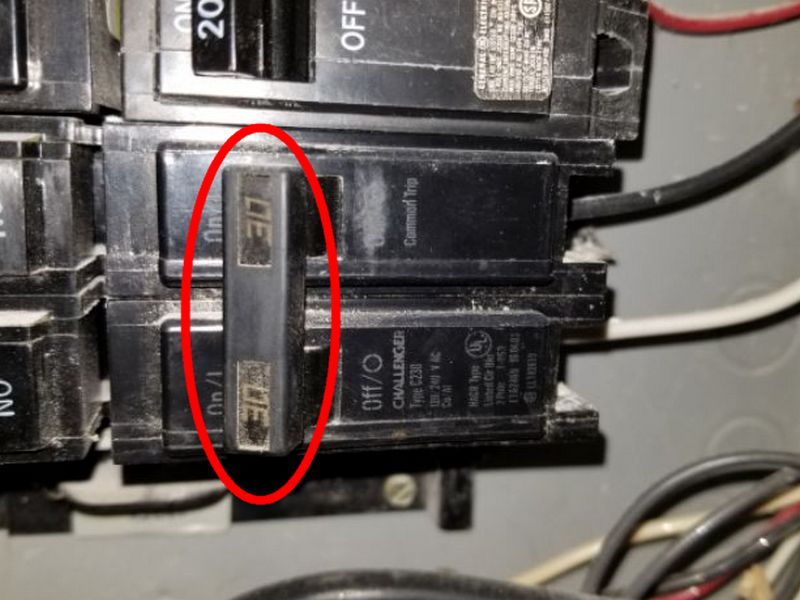
The compressor disconnect is missing or improperly located. This is a safety issue. The disconnect must be “within sight of the compressor,” or a lock-out device should be installed at the breaker panel. Hire an electrician to install a disconnect.
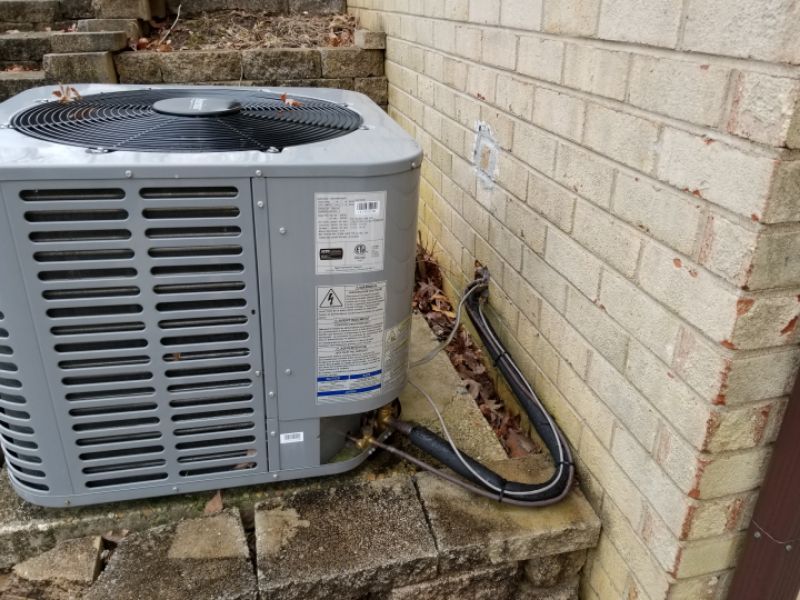
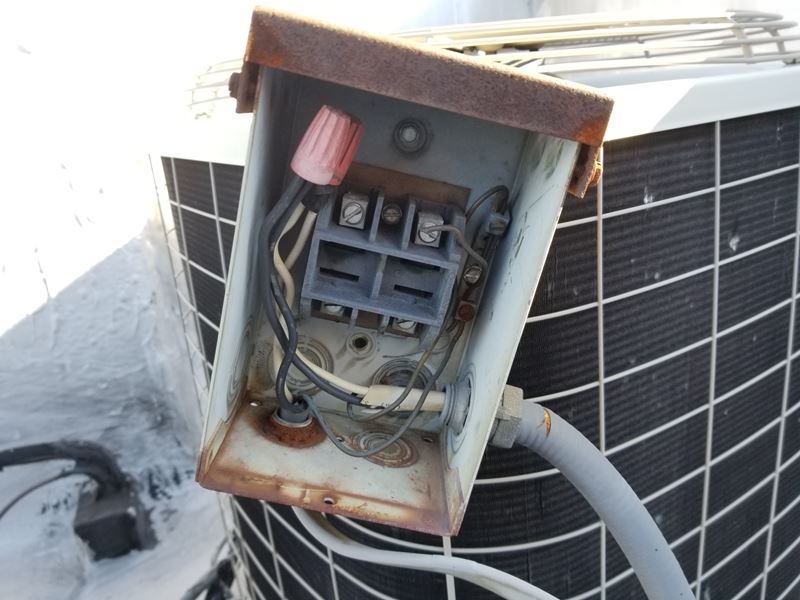
The compressor is installed in a restricted space that may prevent proper access by service personnel. This can hinder appropriate maintenance and cause additional expenses. Hire a contractor for an evaluation and to make repairs as needed.
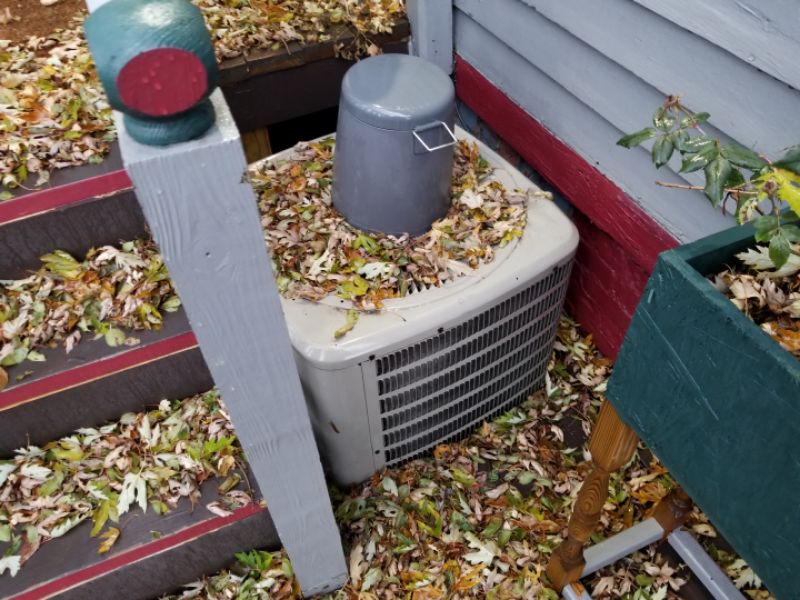
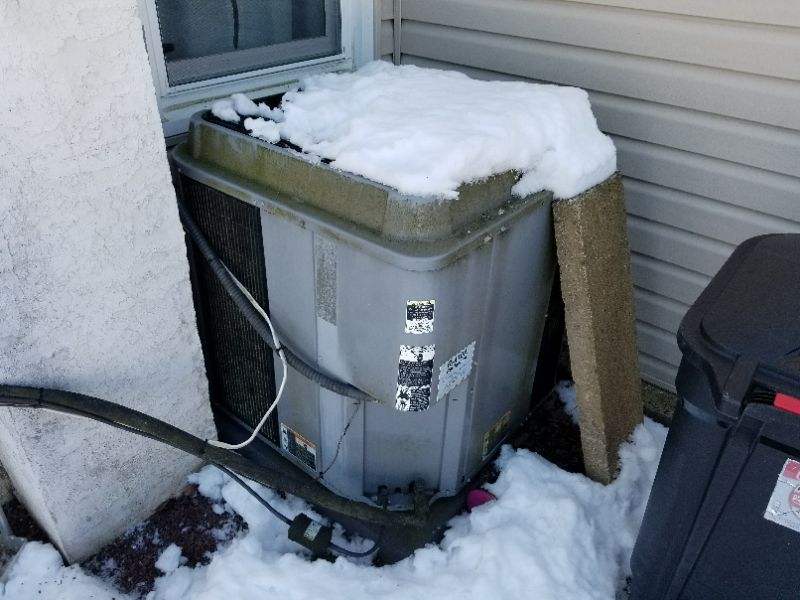
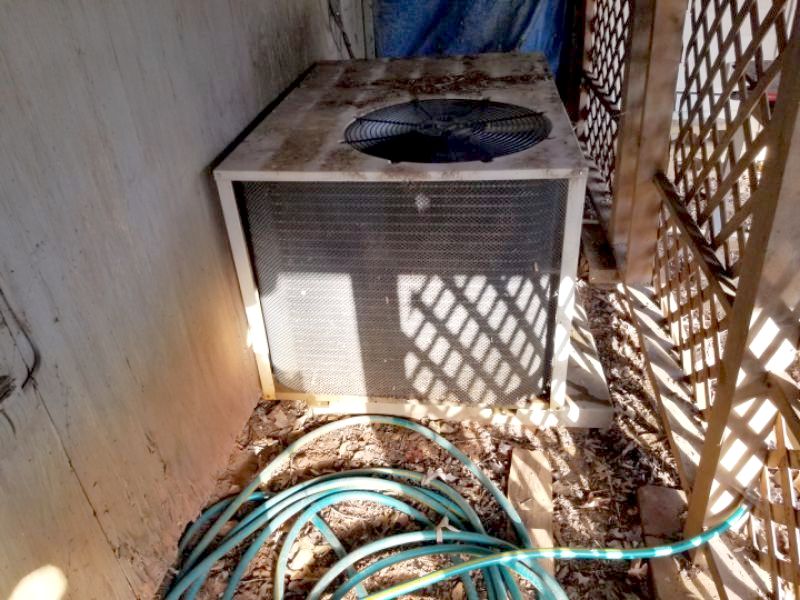
Condensate System
High-efficiency furnaces and boilers are “condensing” appliances. In the secondary heat exchanger the combustion gases give up sufficient latent heat to cause a phase change back into a liquid. In an AC system the condensate is basically just water. In a condensing furnace’s secondary heat exchanger, the exhaust reacts with the nitrogen in the air, creating an acidic solution. In some jurisdictions high-efficiency heating condensate must be neutralized. Most condensing heaters have 2 drains: one from the exhaust vent and another from the secondary heat exchanger. Because of the vent connection, the drains must have a trap, and must be kept separate from any AC coil condensate drains.
Inspect the furnace’s drain lines for any signs of damage, leaking, or improper slope. A trap must be installed, and the final discharge point identified. Condensate drains cannot be connected to plumbing vent stacks. A secondary catch pan should be present under the air handler. It should have a drain line that’s completely separate from any others, or be equipped with a shut-off float switch. Report any water in the catch pan or inside of the air handler. Inspect condensate pumps for damage, overflow, unstable installations, and disconnected float switches.
The condensate line is damaged. This can cause water damage and allow mold or mildew problems. Hire an HVAC technician to provide repairs as needed.
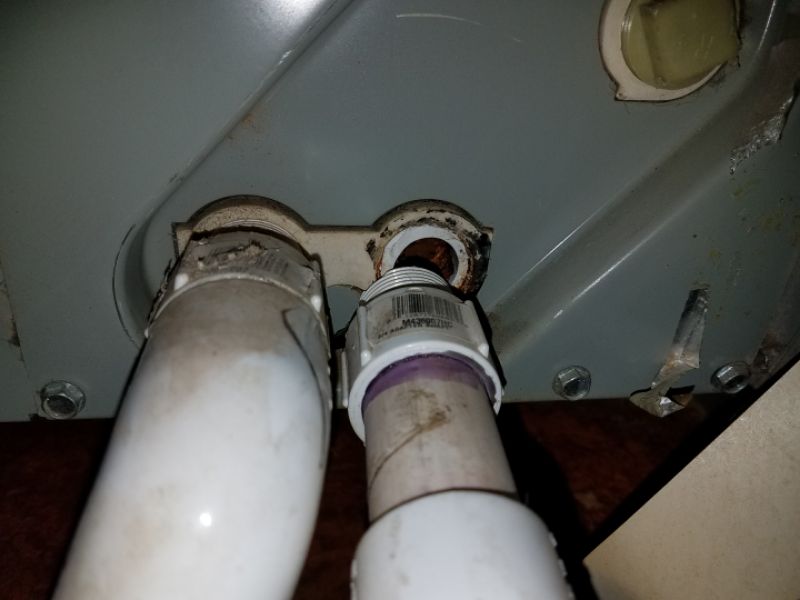
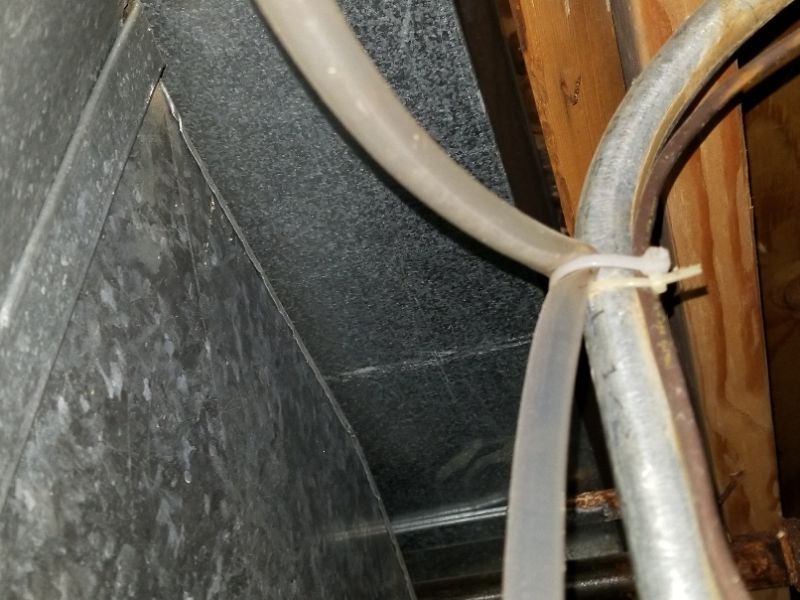
The condensate drain line is leaking. This can cause water damage. Hire an HVAC technician for repairs as needed.
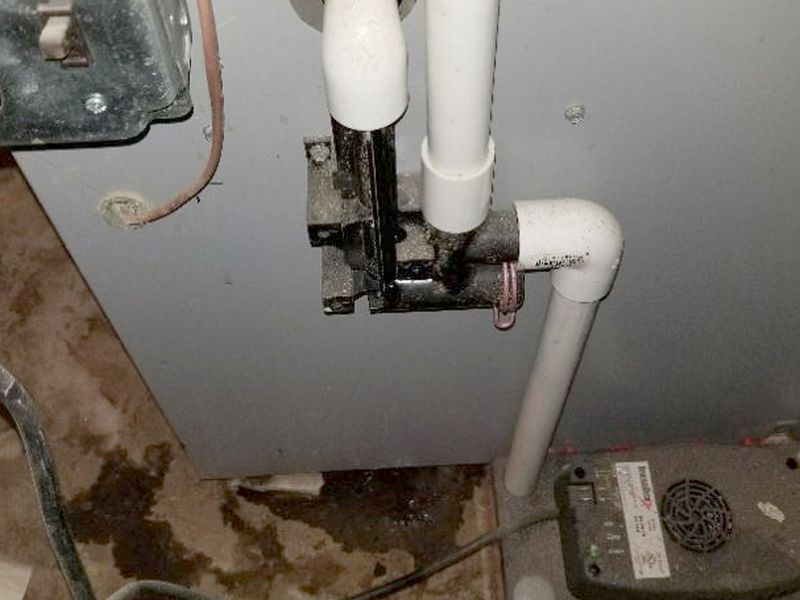
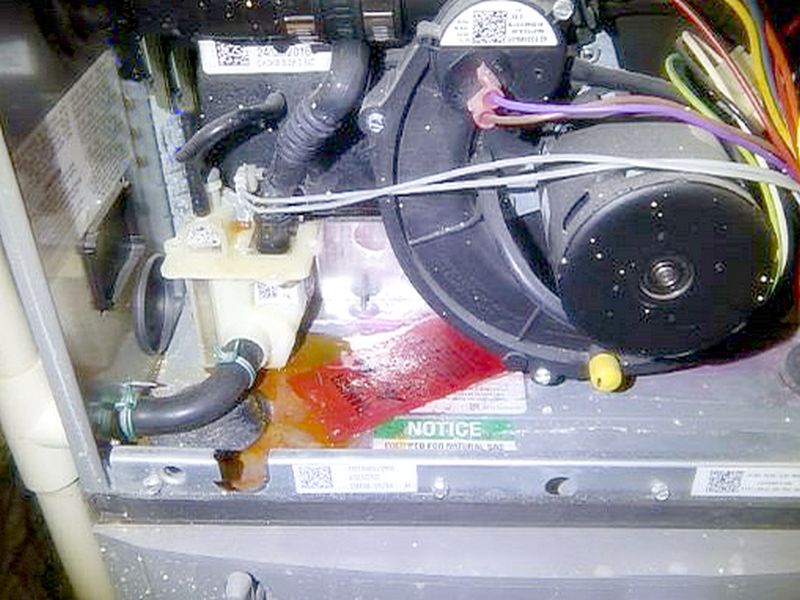
The condensing furnace’s condensate line does not have a trap installed. This will can allow exhaust gases to enter the home. Hire an HVAC contractor to install a trap.
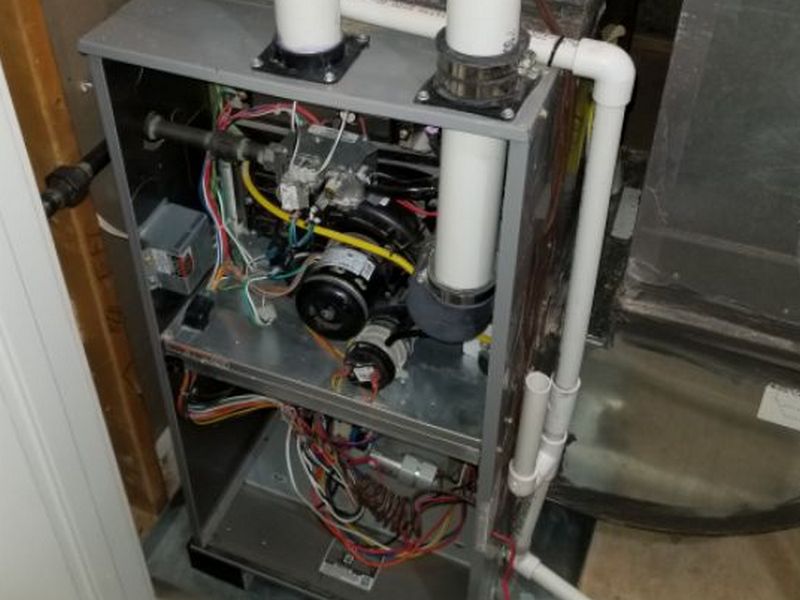
The condensate discharge line is blocked or clogged. This can cause water damage and allow mold or mildew problems. Clean the discharge line.
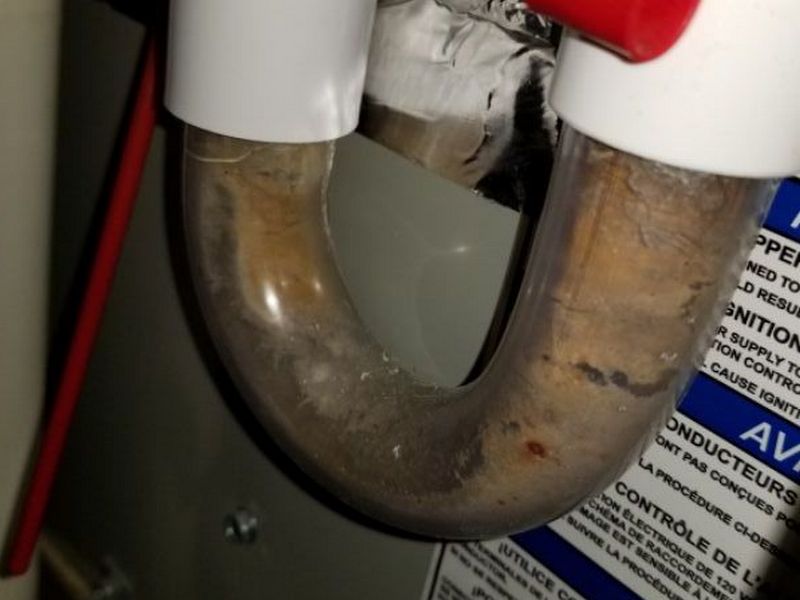
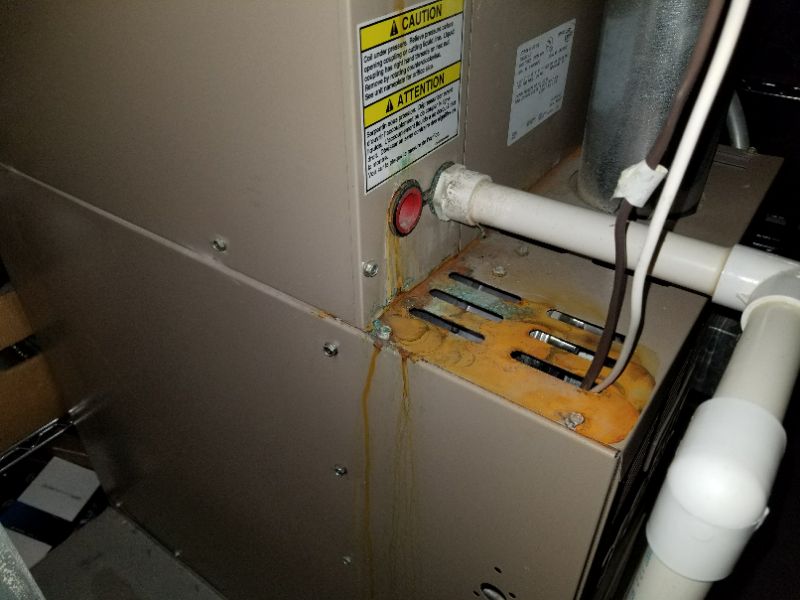
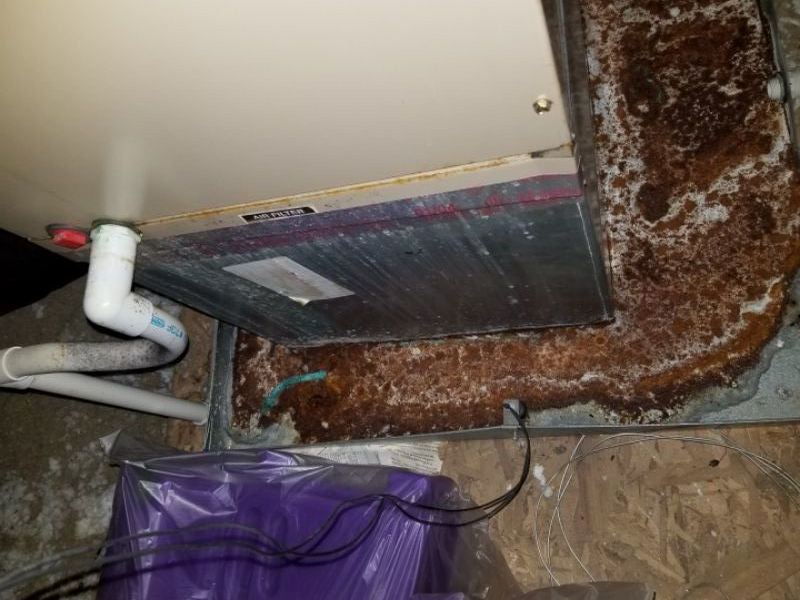
The condensate discharge point is not in a visible spot. A drainage failure can go unnoticed and allow water damage and mold or mildew problems. Redirect the discharge to a visible location.
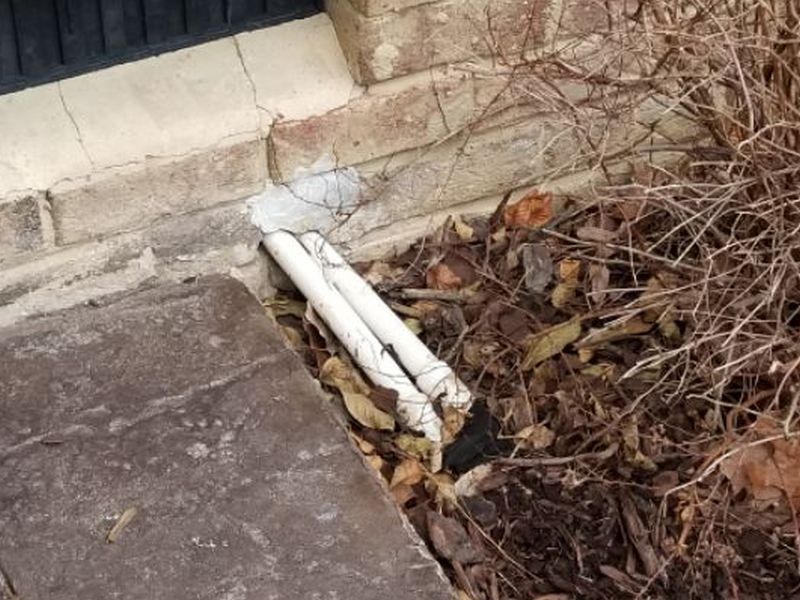
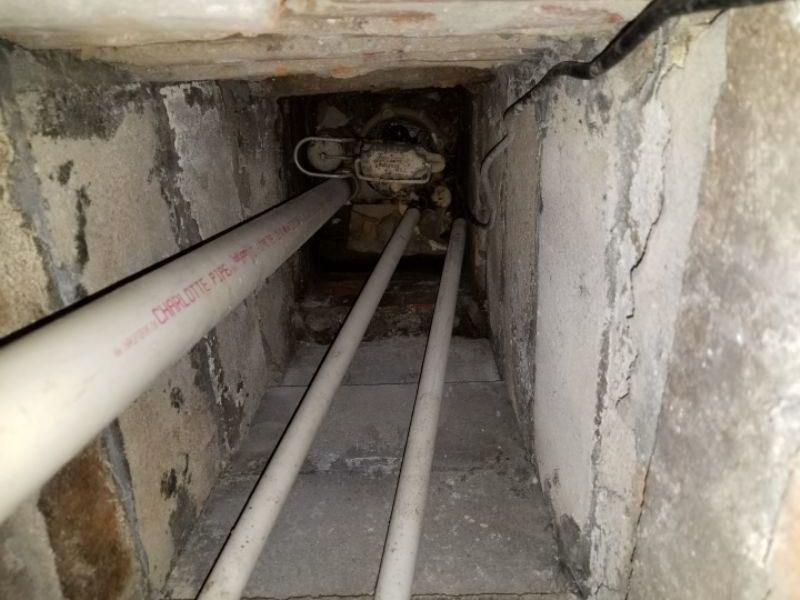
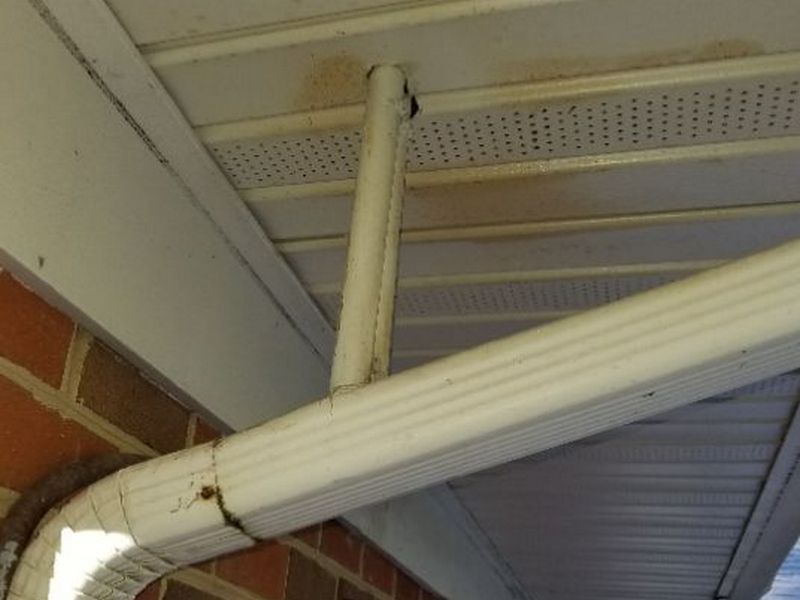
The condensate system’s discharge point is improperly located. The condensate should be carried to the exterior and away from the building to prevent water damage and mold or mildew problems. Redirect the discharge away from the structure.
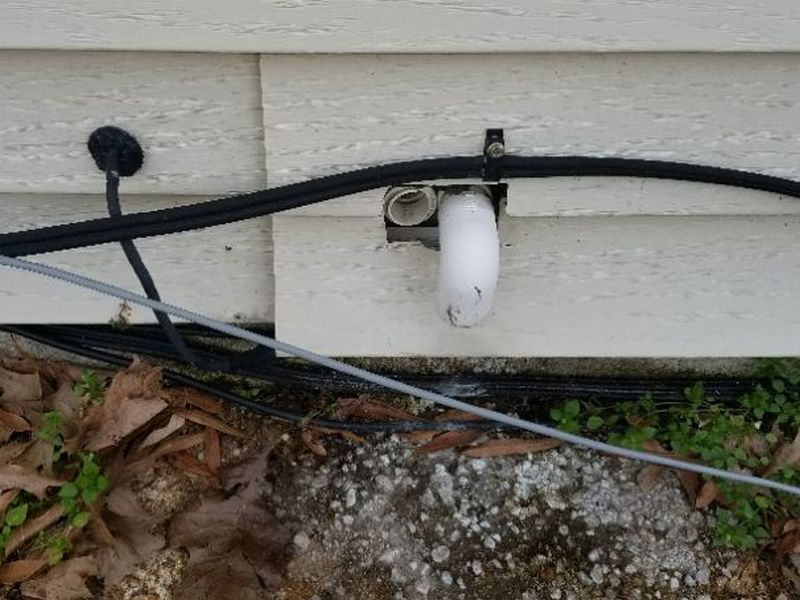
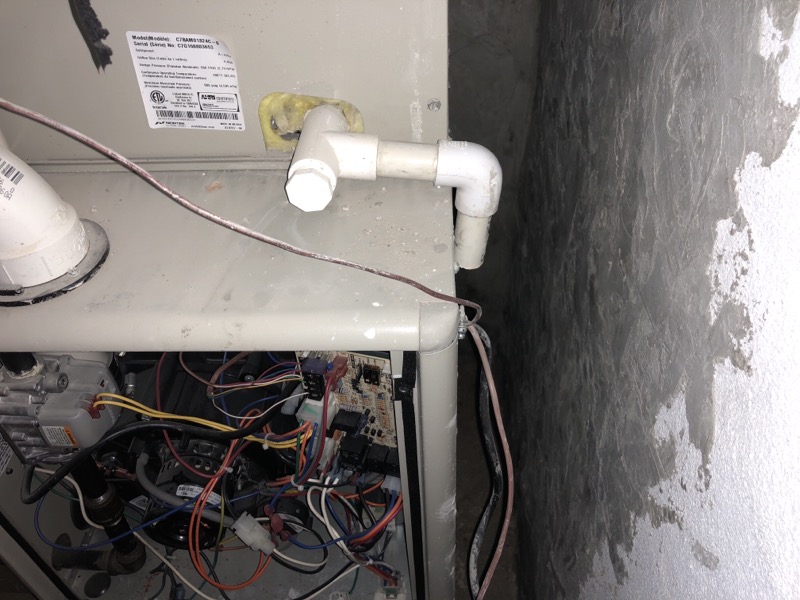
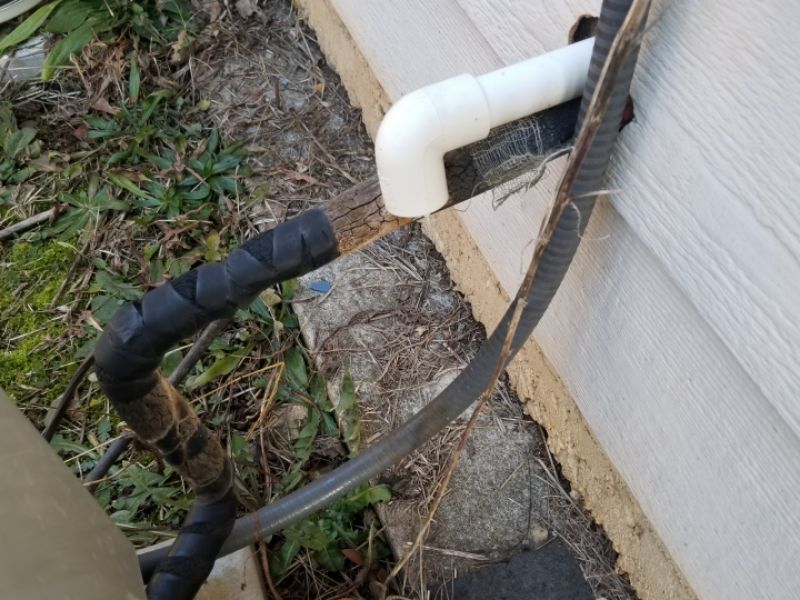
The condensate drain lines from the air handler and the catch pan are connected together. This defeats the purpose of the secondary pan, and may permit water damage and mold or mildew problems. Hire an HVAC contractor to install separate lines from each source to the exterior.
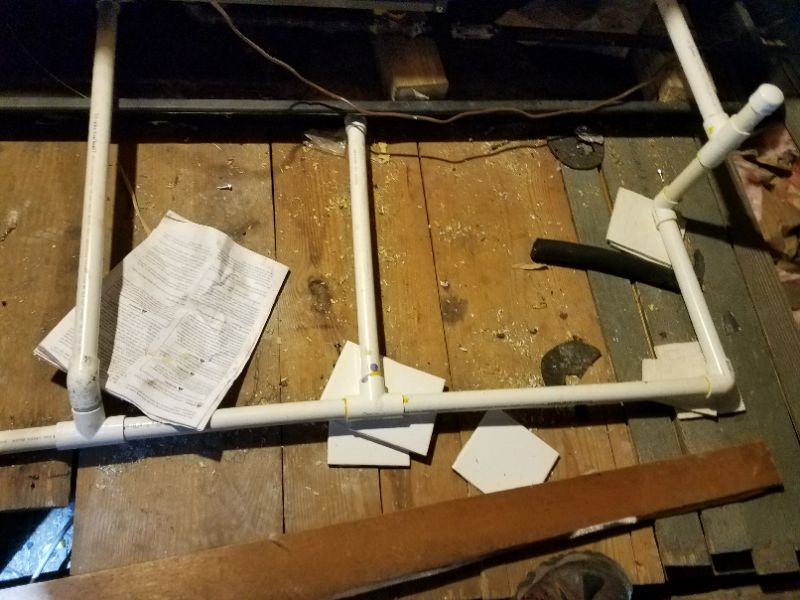
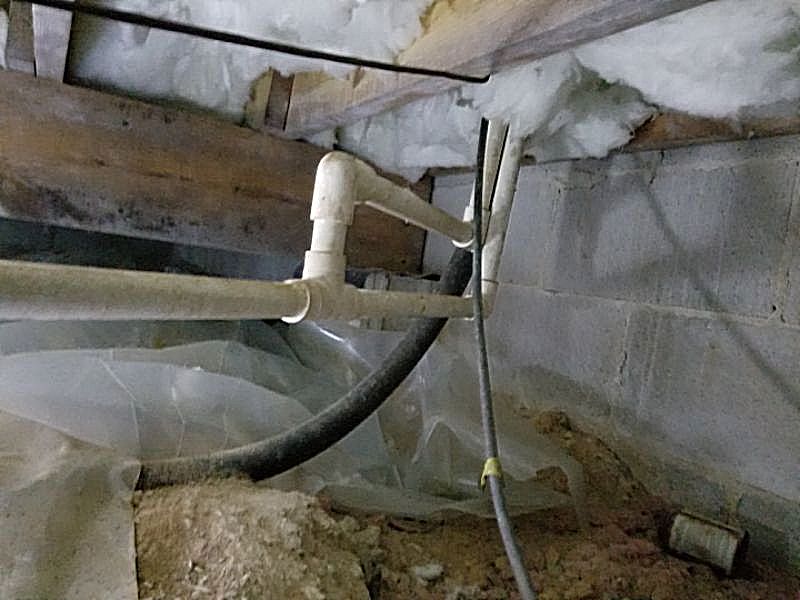
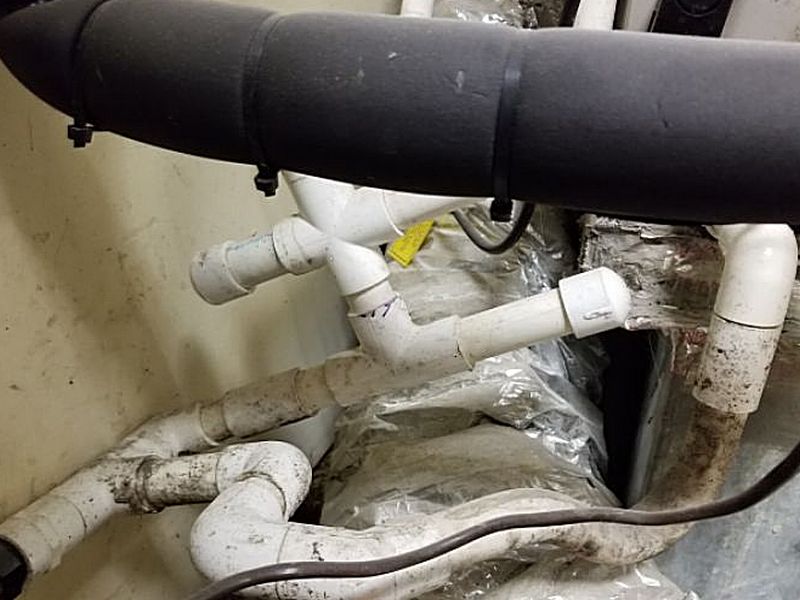
The condensate discharge line is connected to a plumbing vent stack. This is not permitted because septic gases can be drawn into the house air. Hire an HVAC technician to re-route the lines to discharge to the exterior.
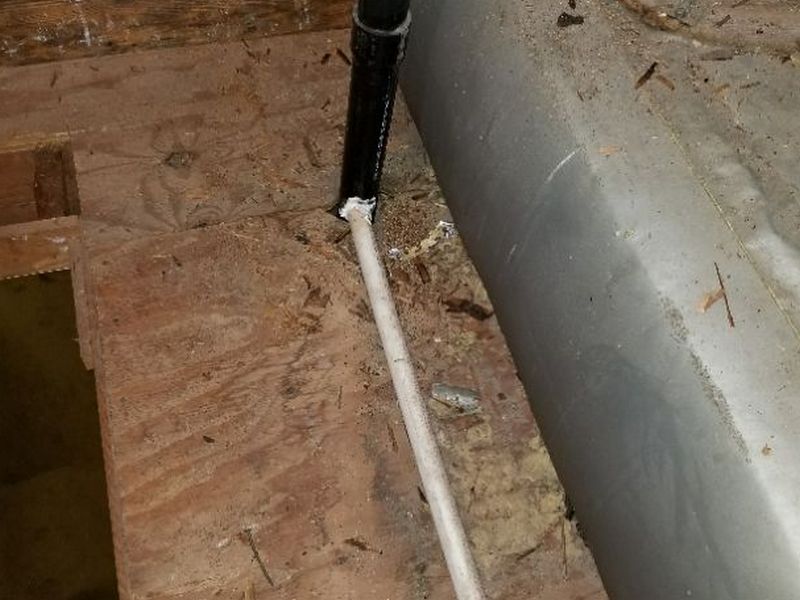
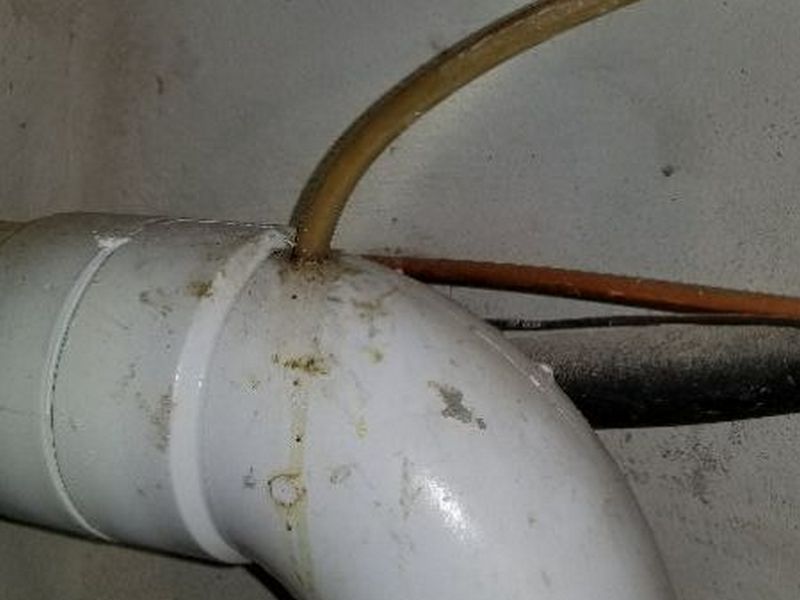
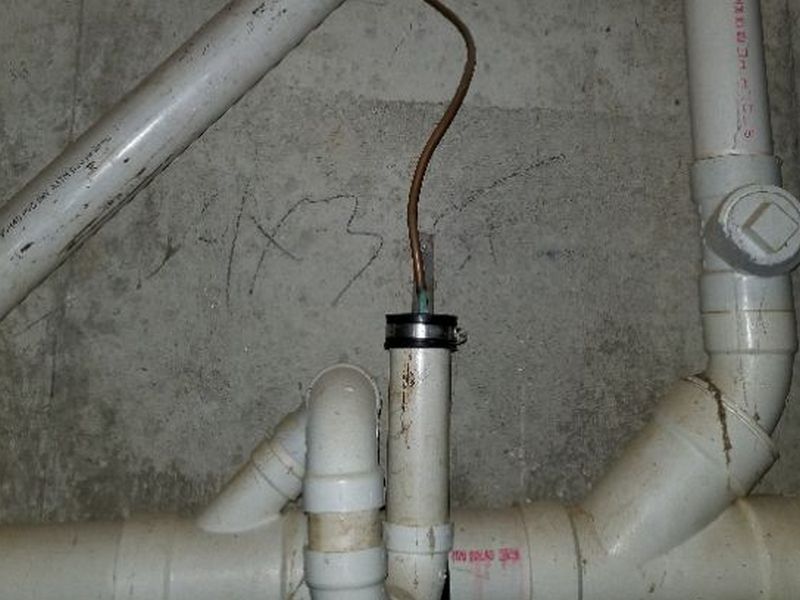
There is debris in the condensate catch pan under the air handler. This can block the drain line and cause the pan to overflow. Remove the debris.
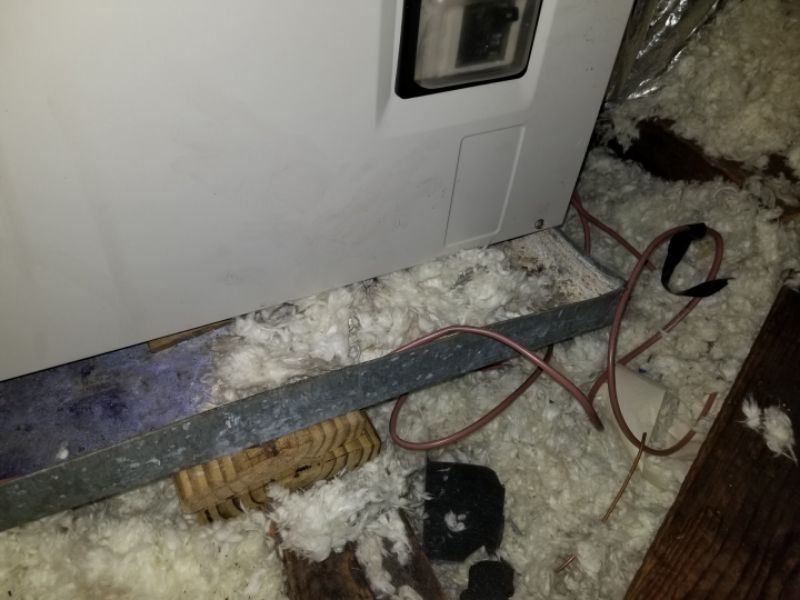
The condensate pan is not draining properly and is retaining water. This will encourage corrosion, possible mildew or mold growth, and may allow water damage. Hire an HVAC contractor to make the required repairs.
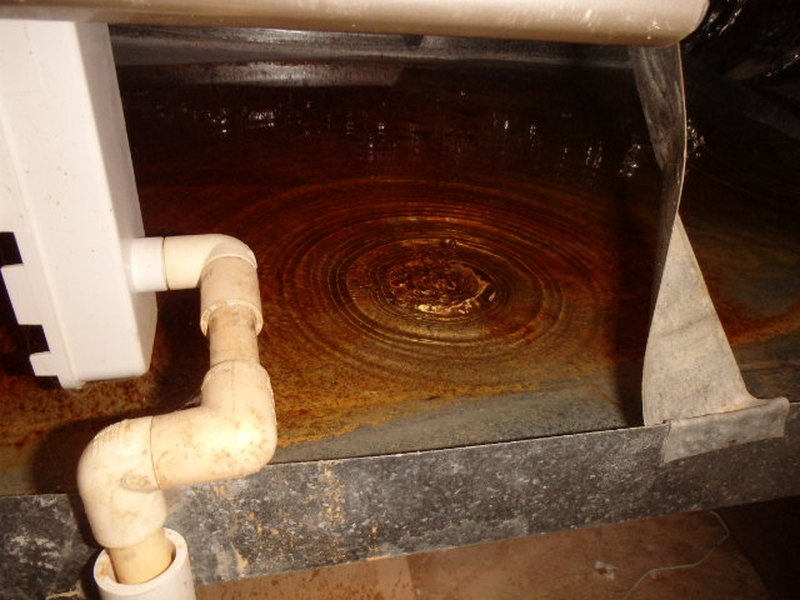
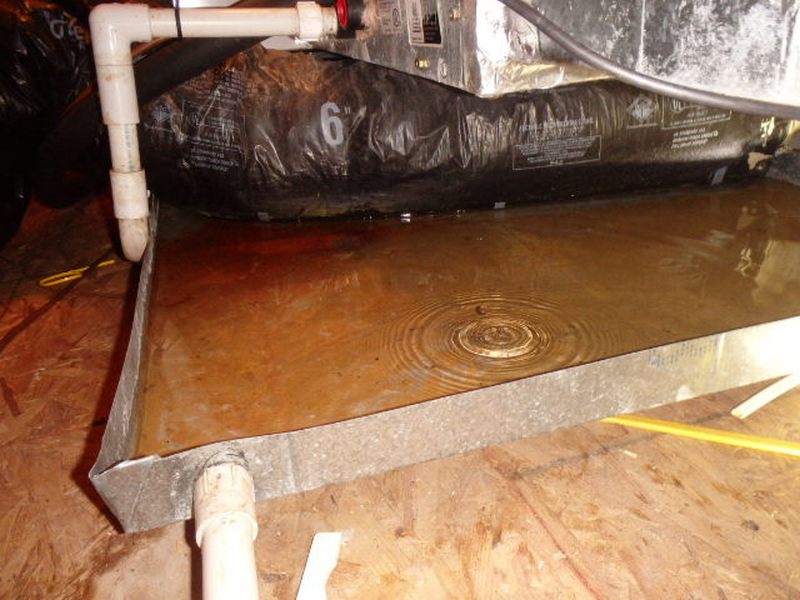
The condensate catch pan below the air handler is corroded. It is at or beyond its life span, and is a risk for leaks and water damage. Hire an HVAC contractor to make the required repairs.
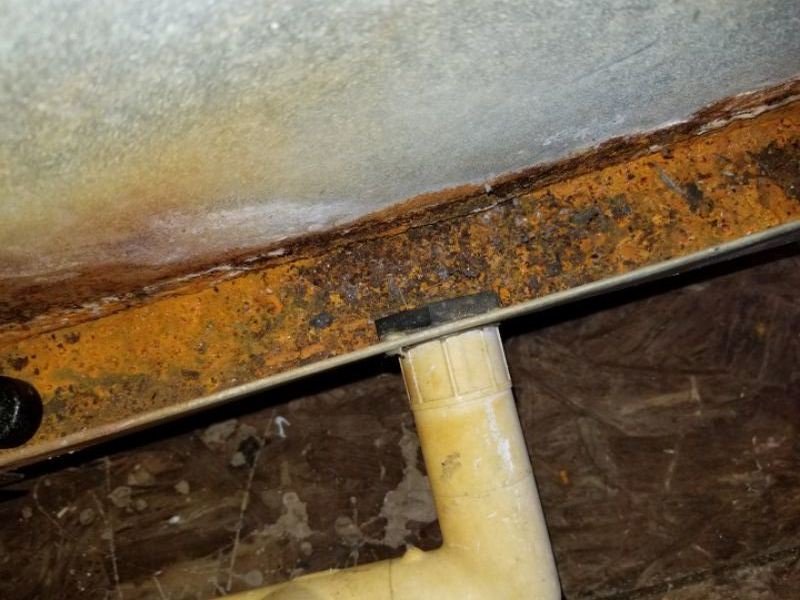
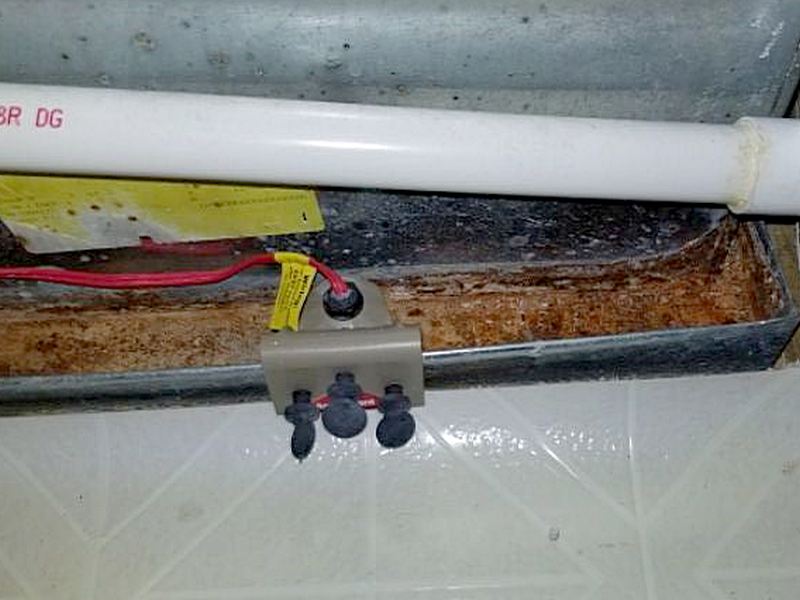
The condensate catch pan is missing. A pan or a system float switch are required when an air handler is located over finished space. This protects the home from possible water damage. Hire an HVAC contractor to make the required repairs.
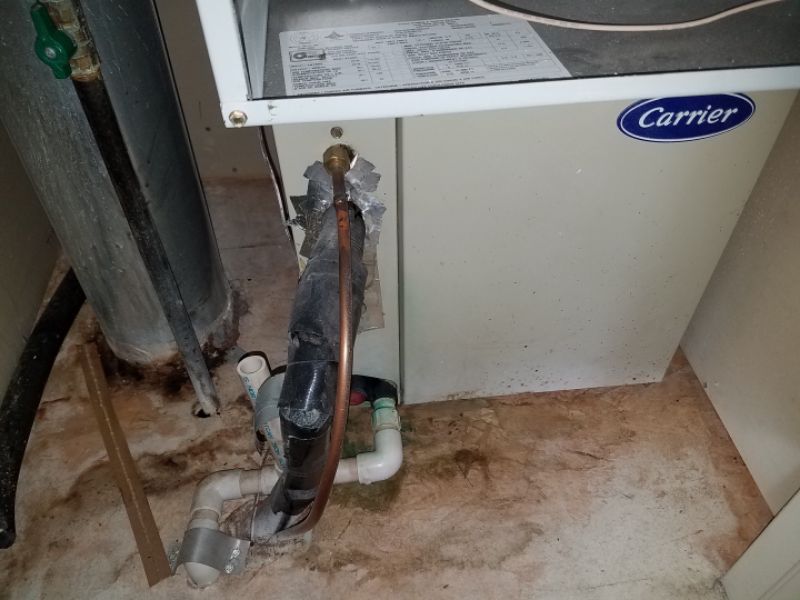
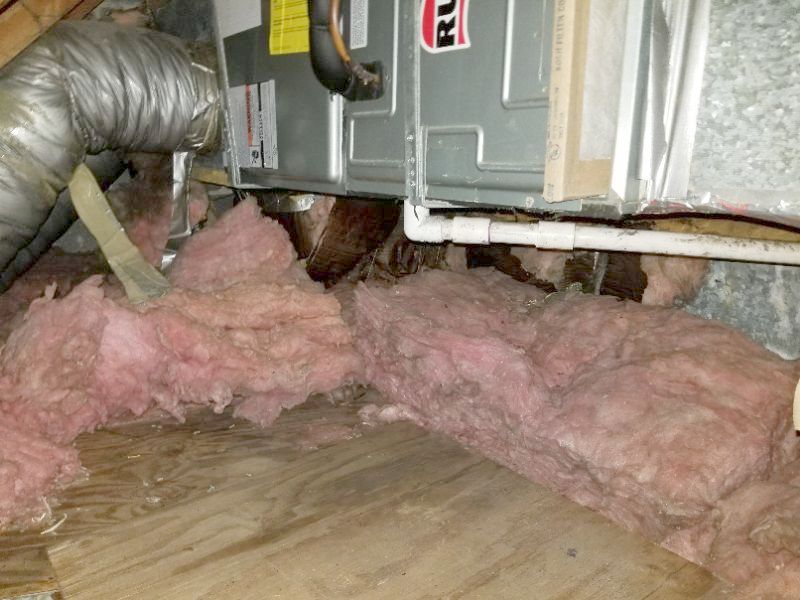
The condensate pan’s float switch wires are not connected. This safety device shuts off the system and/or sounds an alarm should the condensate water rise too high due to a drain failure. Hire an HVAC contractor to make the required repairs.
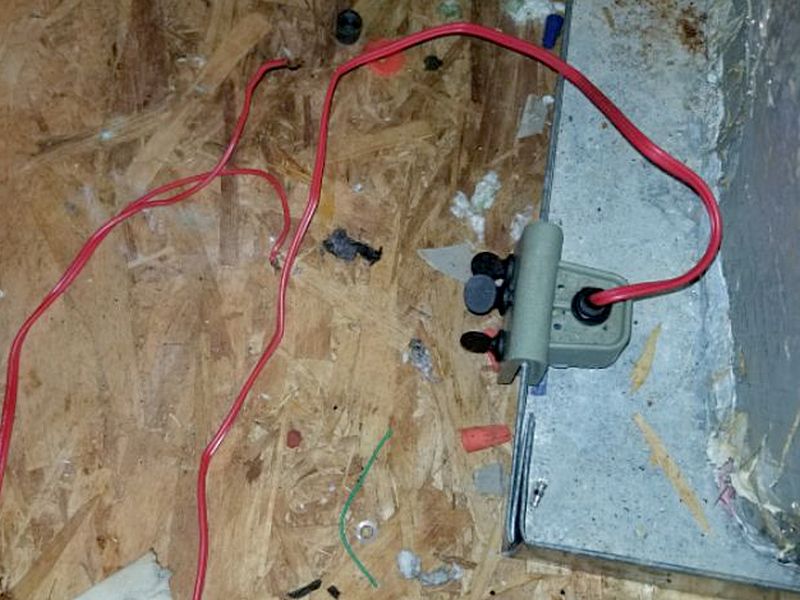
The condensate pump leaks. This can cause water damage and allow mold or mildew problems. Hire an HVAC contractor to repair or replace the pump.
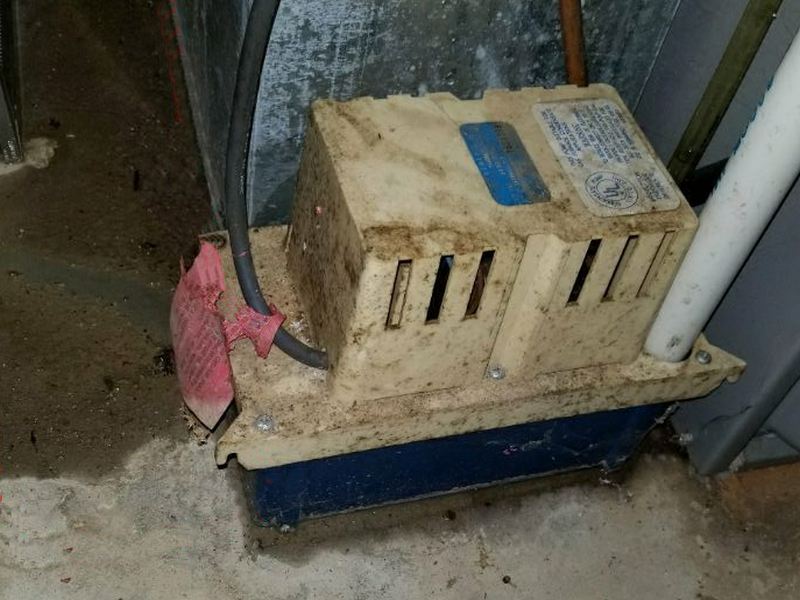
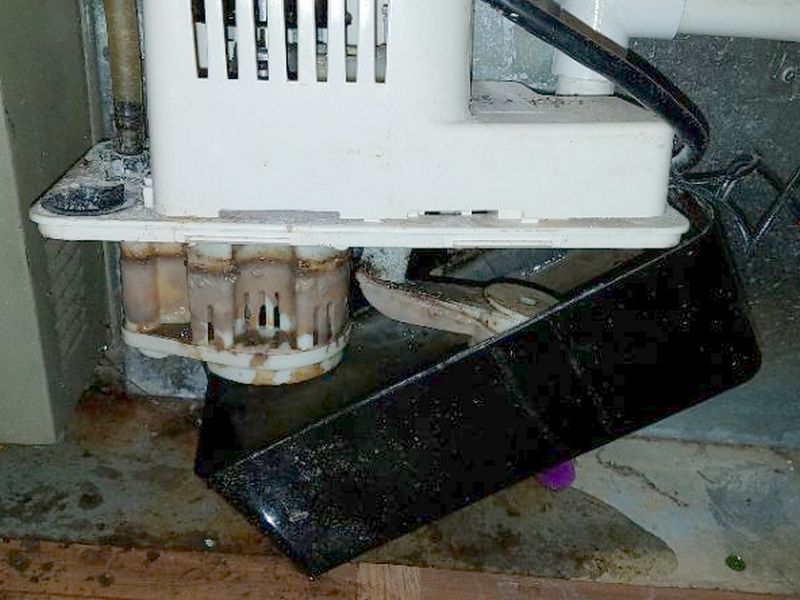
The condensate pump is inoperative. This can cause water damage and allow mold or mildew problems. Hire an HVAC contractor to repair or replace the pump.
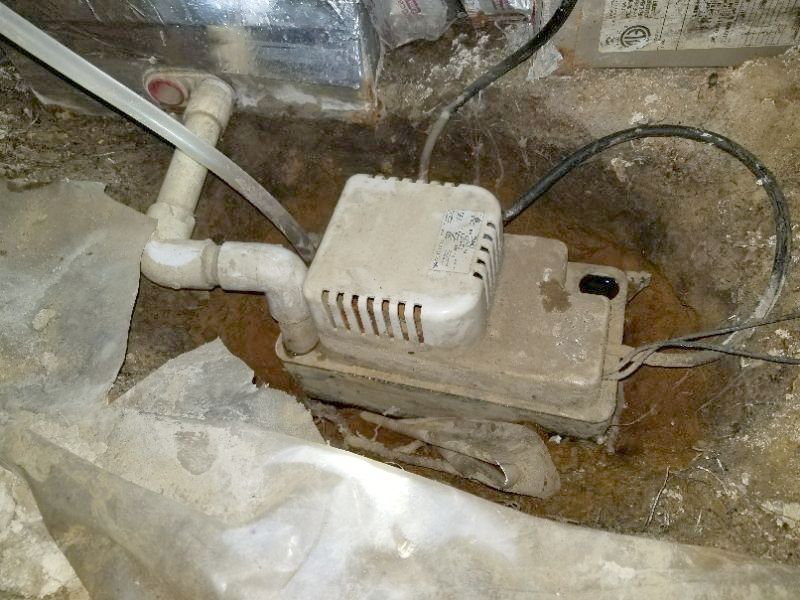
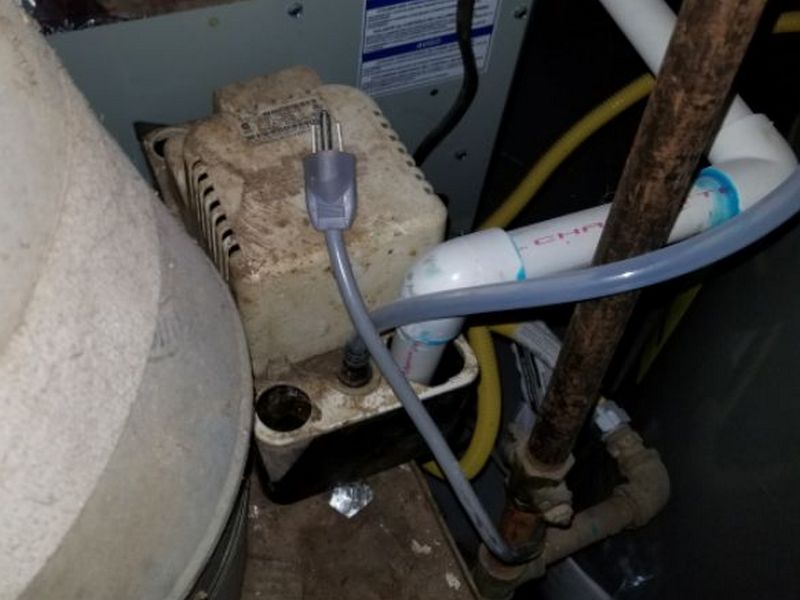
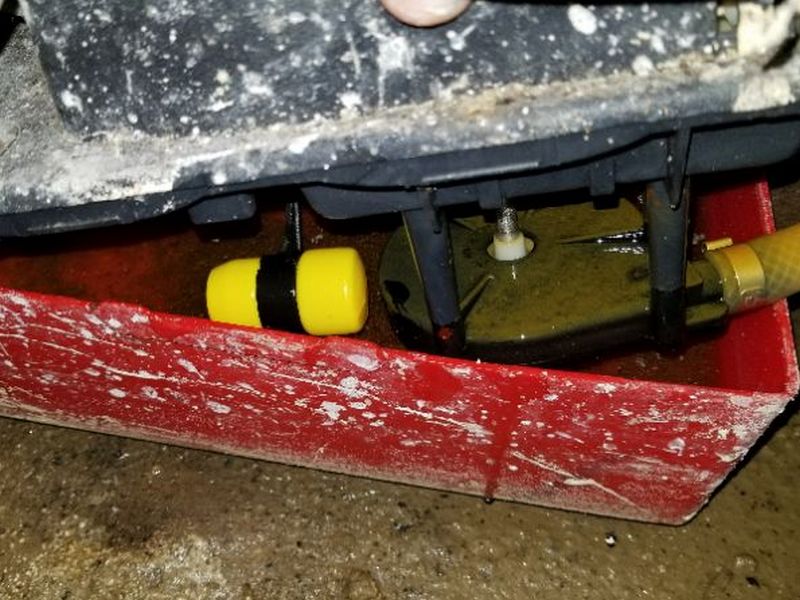
The condensate pump’s float switch is not connected, and will not shut the system down when tripped. This device provides a safeguard against water damage if the pump fails and fills with condensate. Hire an HVAC contractor to repair or replace the pump.
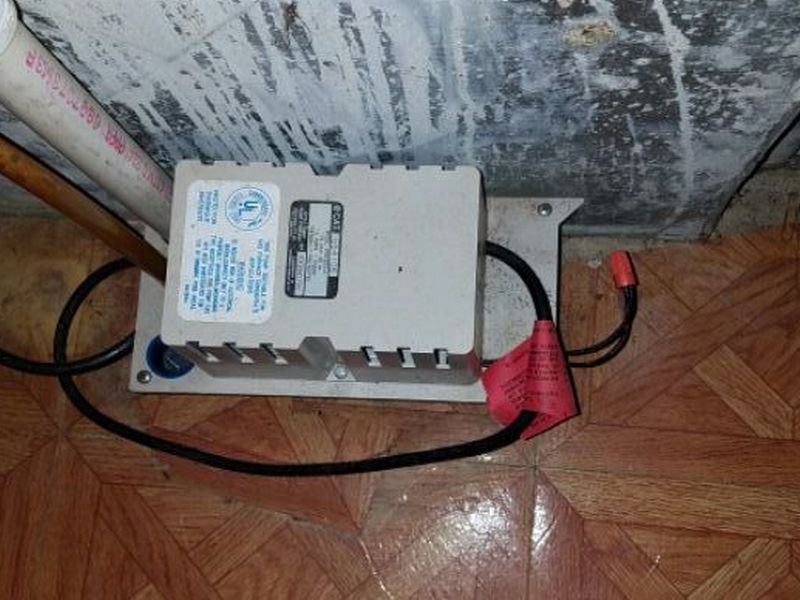
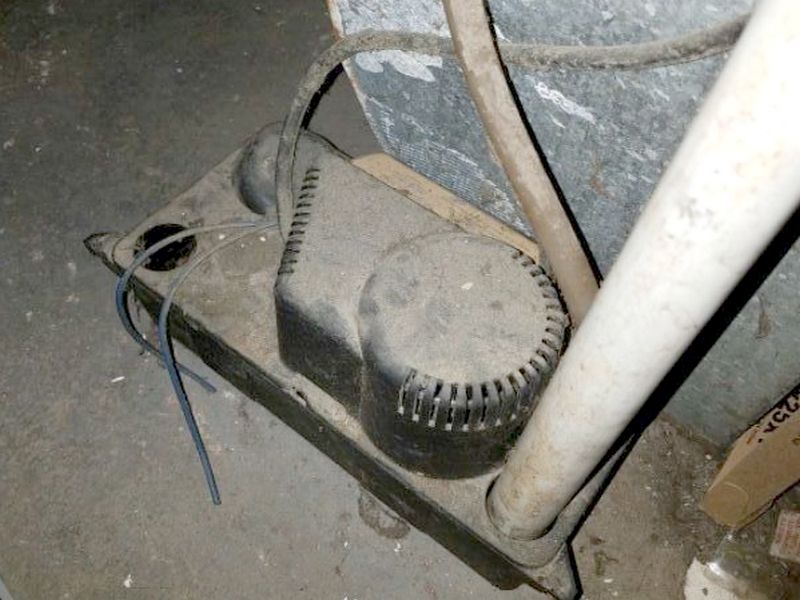
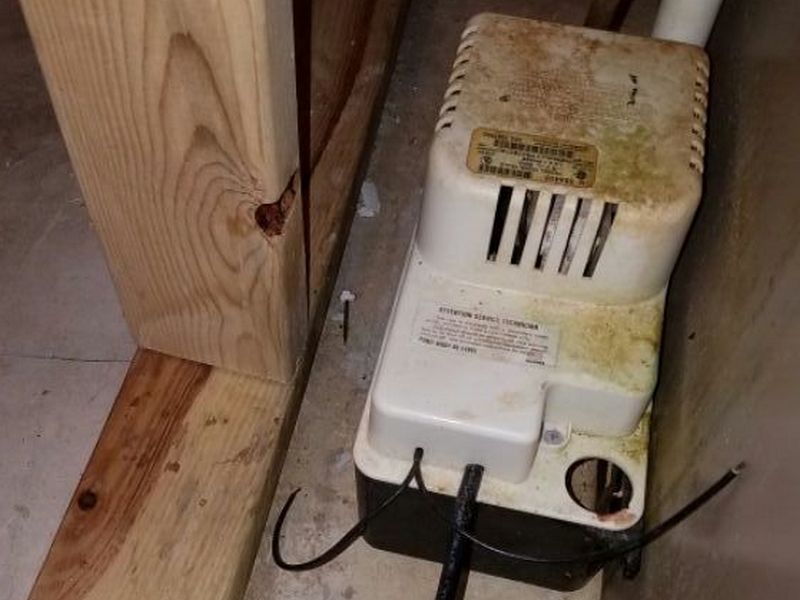
The condensate pump is installed in an unworkmanlike manner. It is unstable. This can allow pump and water damage. Hire an HVAC technician for repairs as needed.
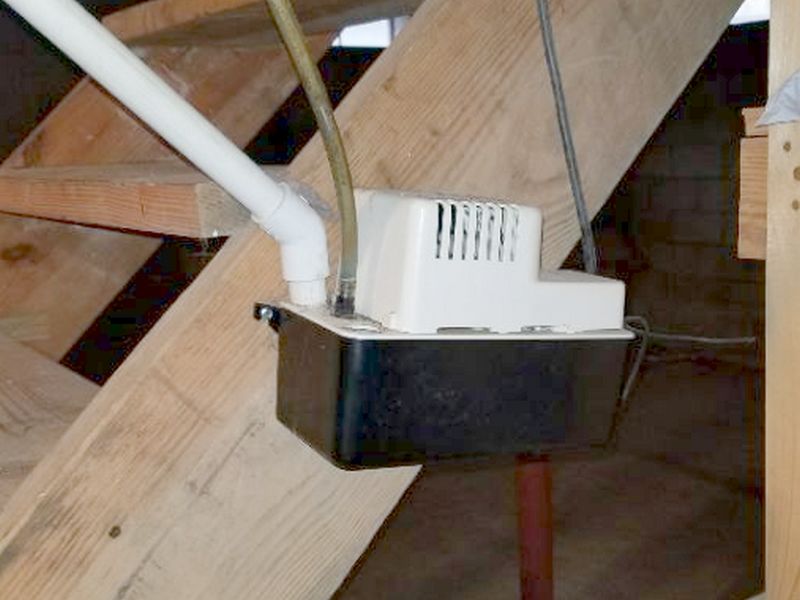
Exhaust/Draft System
All combustion heating appliances produce toxic exhaust. Carrying that exhaust entirely away from the furnace or boiler and to the exterior of the home is fundamental to a safe installation. As homes become “tighter” there is even less margin of error in ensuring an acceptable indoor environment. As covered in other sections, chimneys and ventilation devices can affect safety. High-efficiency condensing appliances require specific vents that adhere to specific standards. Some obsolete and recalled vents are still in use. Overall condition, correct installation and termination, and signs of problems must be evaluated closely.
Ensure that you are familiar with Category III and IV appliance venting requirements. Always inspect for odors, acidic precipitation, and other signs of back-drafting. Report any damage, corrosion, vent openings, inadequate flue support, negative slope, and terminations too close to the ground, windows, or adjacent structures. Draft control devices such as barometric dampers and spill switches should be assessed. Safe clearances to combustibles must be maintained.
Appliance Categories and Venting:

Category III – IV Stainless Steel Vent Pipe:
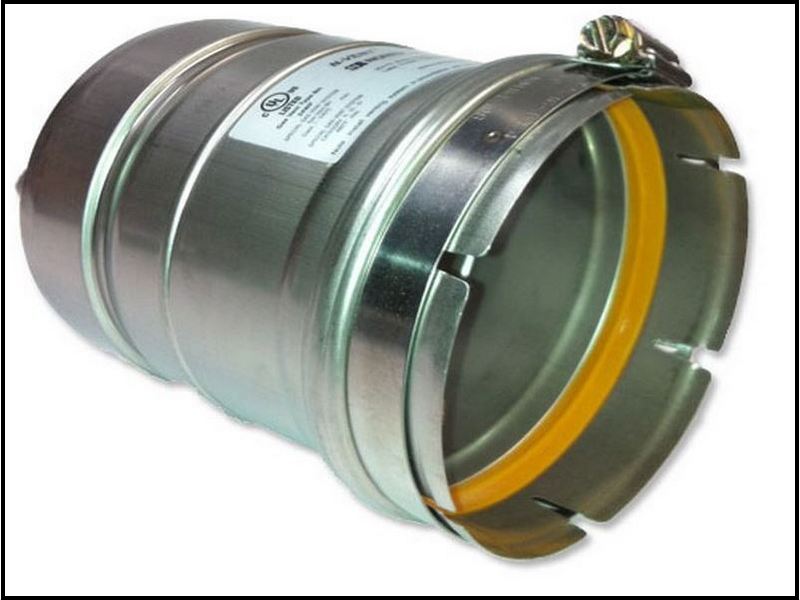
The exhaust pipe is too close to combustible materials. This is a safety hazard. Hire an HVAC contractor to make the required repairs.
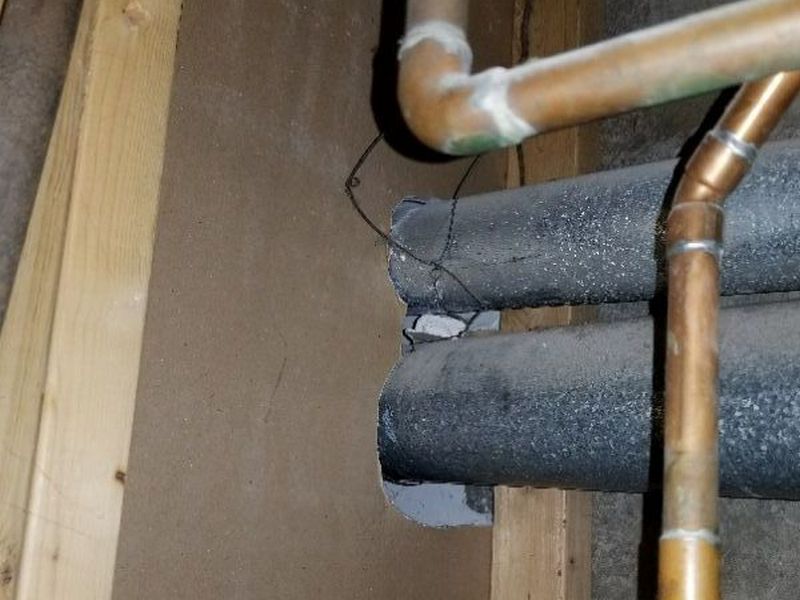
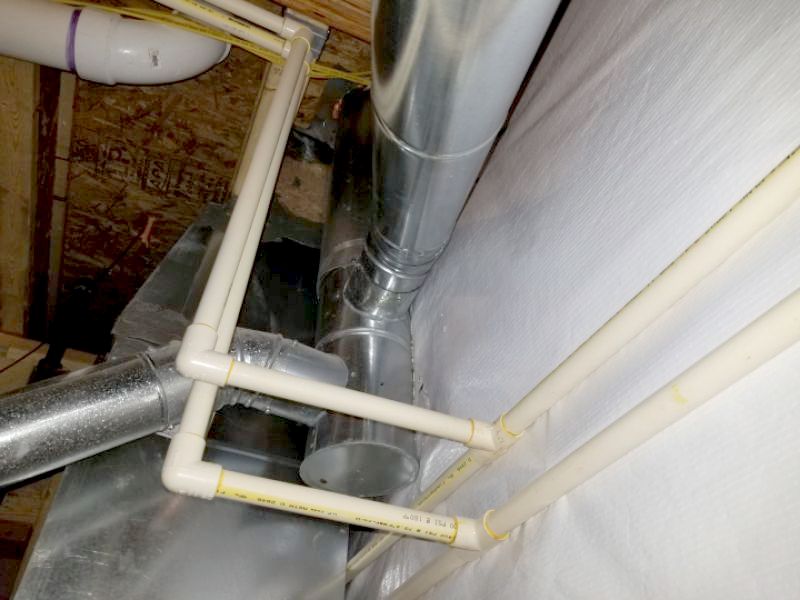
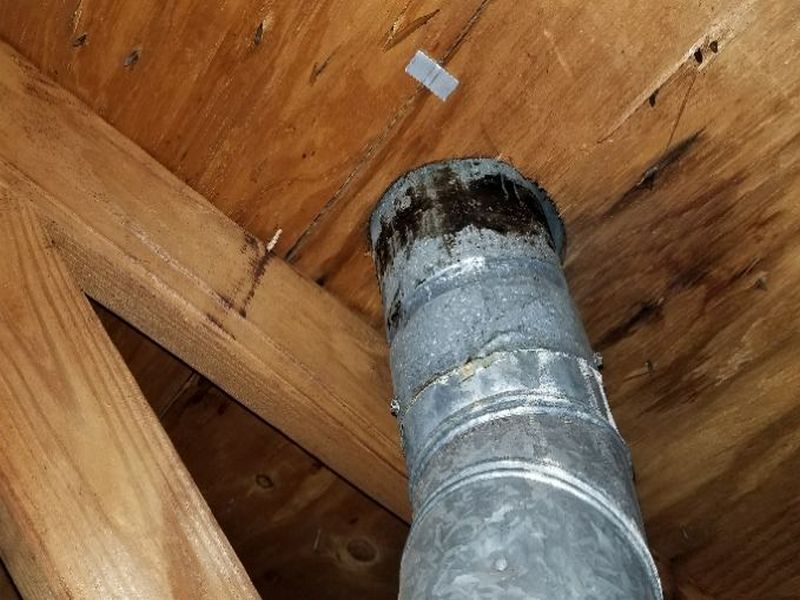
The exhaust pipe is improperly sloped. They must run uphill at least 1/4″ per foot to prevent exhaust gases from entering the living spaces. Hire an HVAC contractor to make the required repairs.
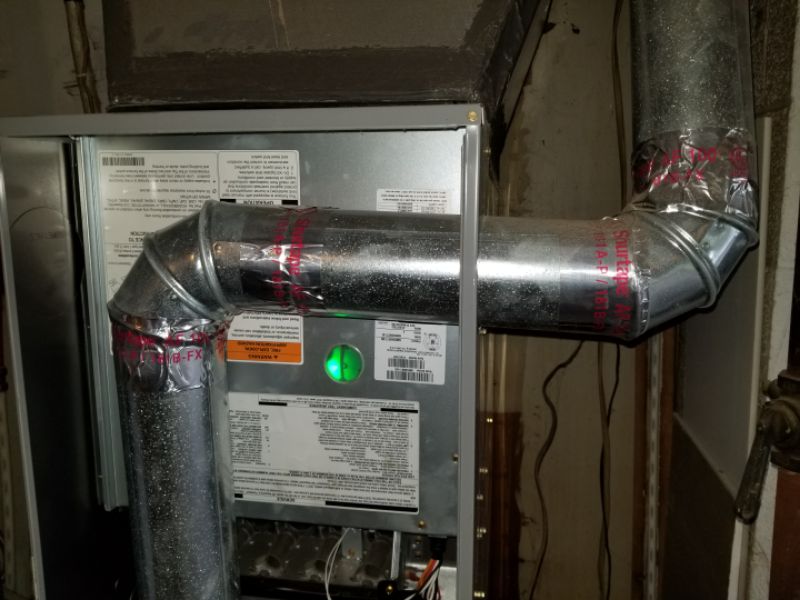
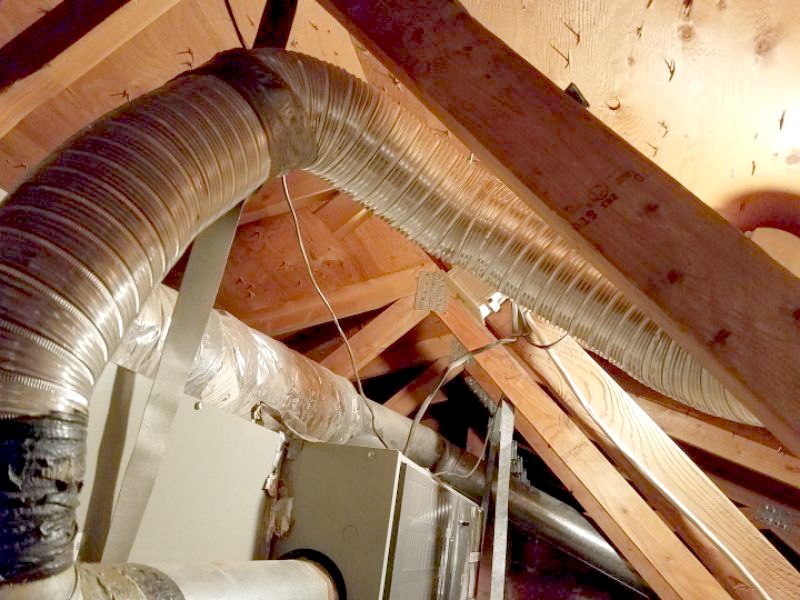
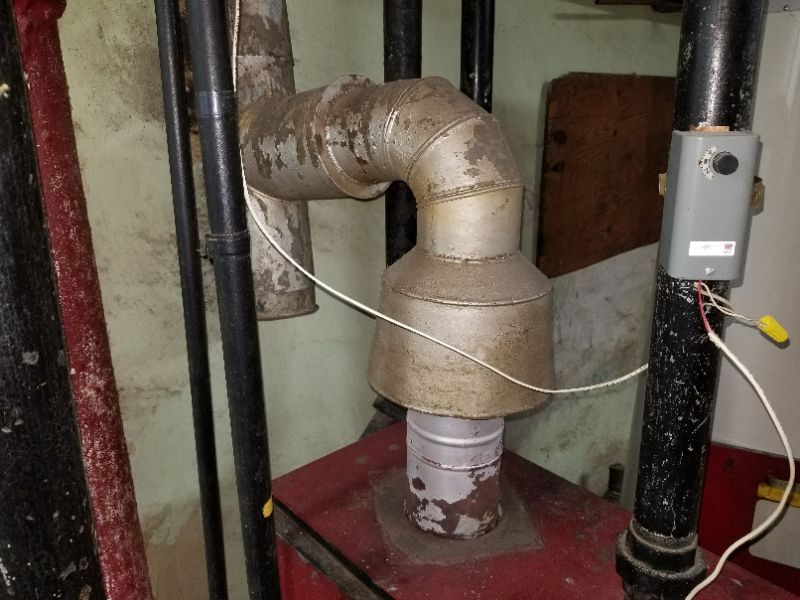
The exhaust pipe is not adequately supported. This can allow damage and is a safety concern. Hire an HVAC contractor to make the required repairs.
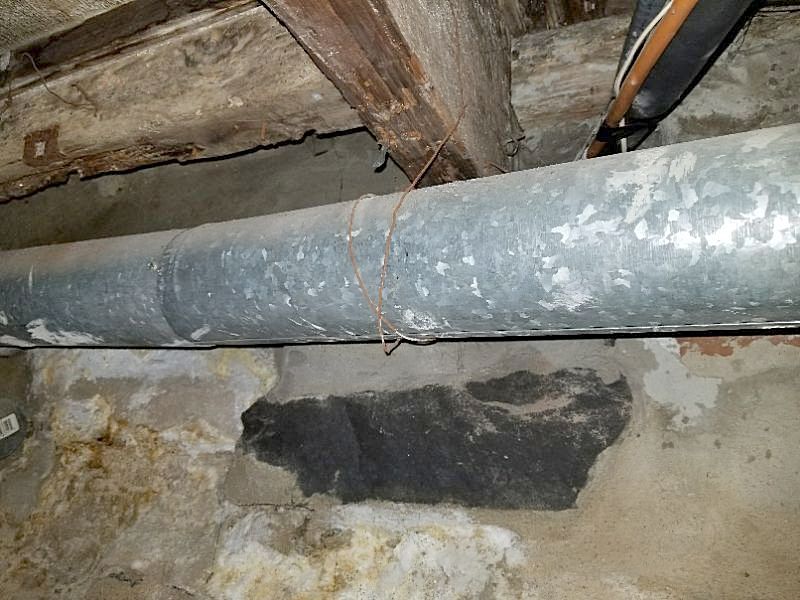
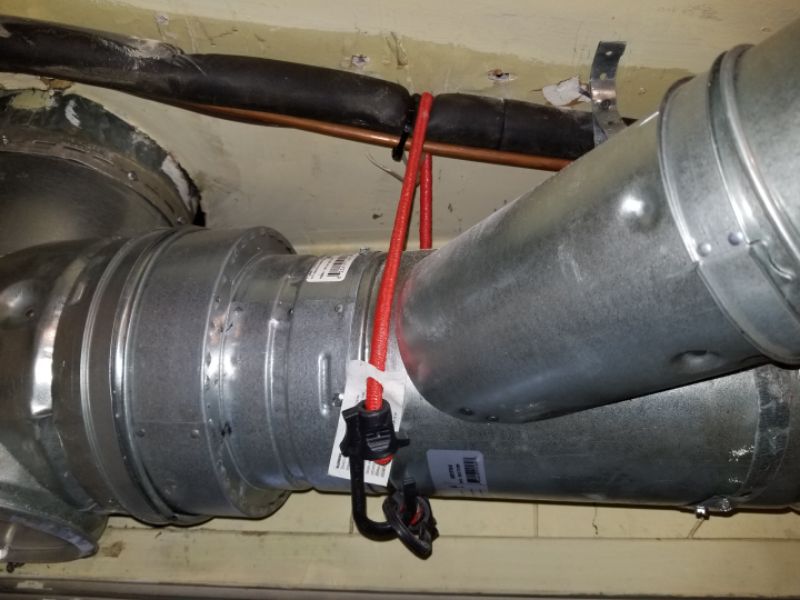

The exhaust pipe is inadequately sealed or has gaps. Openings in the flue permits exhaust gases to enter the living spaces. Hire an HVAC contractor to make the required repairs.
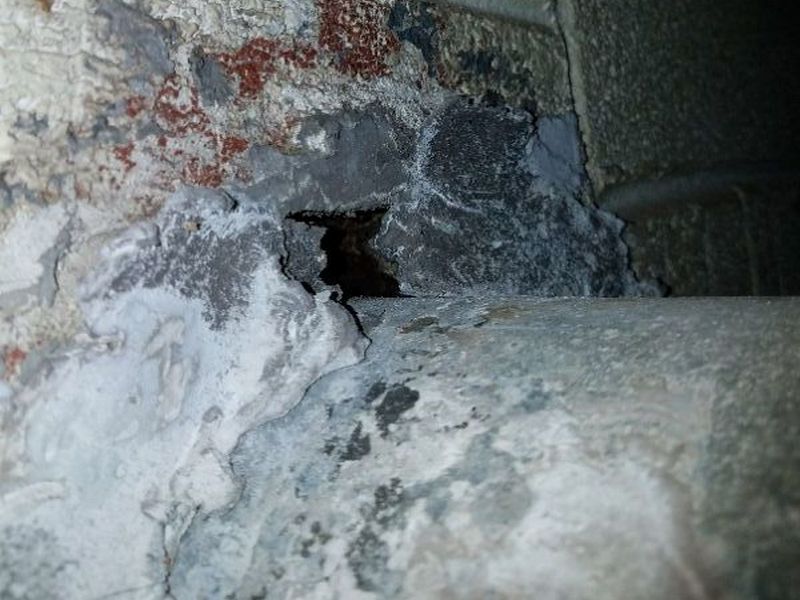
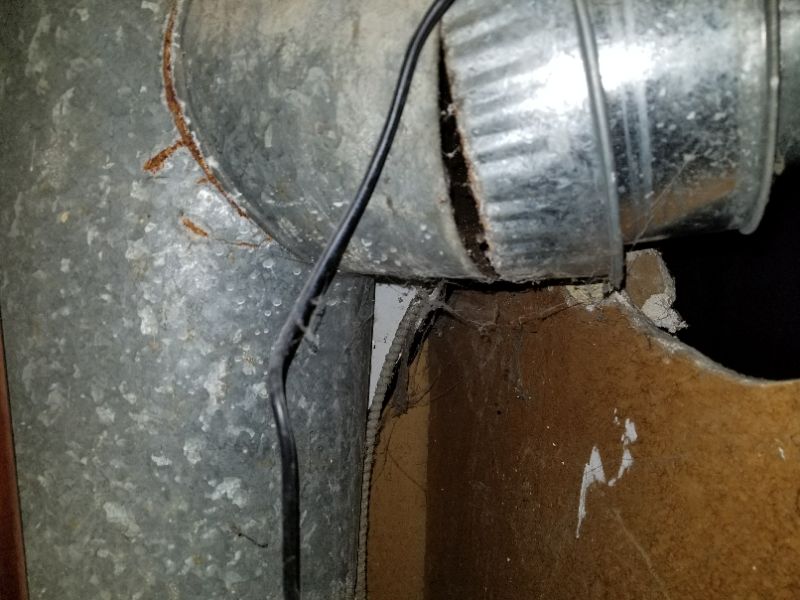
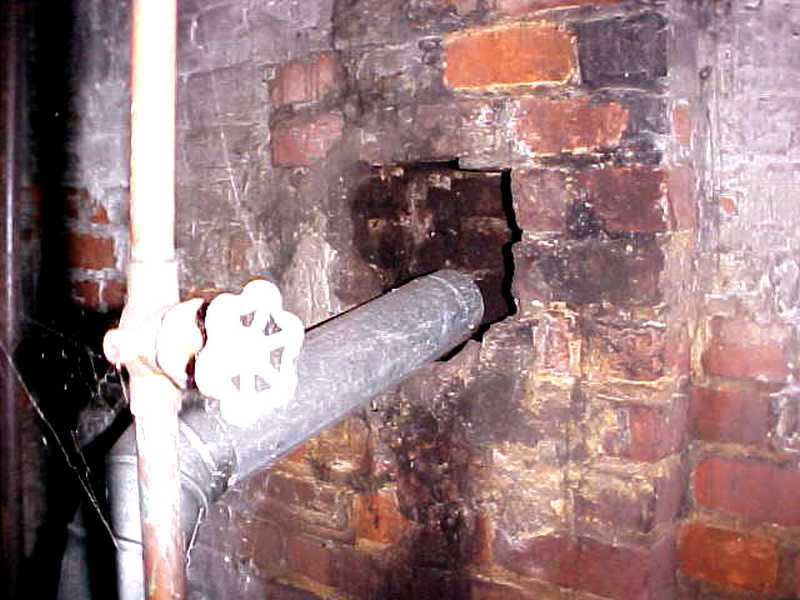
The exhaust pipe is corroded. This is a hazardous condition that permits dangerous flue gases to enter the living area. Hire an HVAC contractor to make the required repairs.
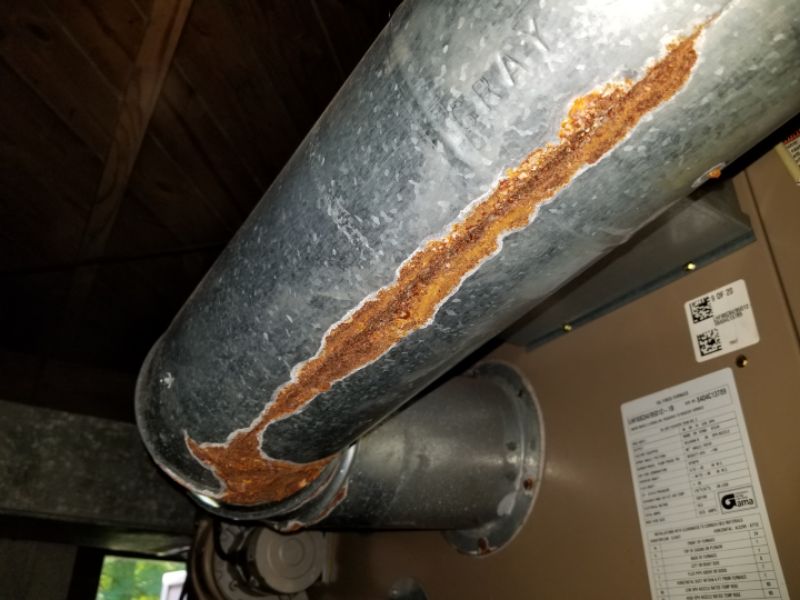
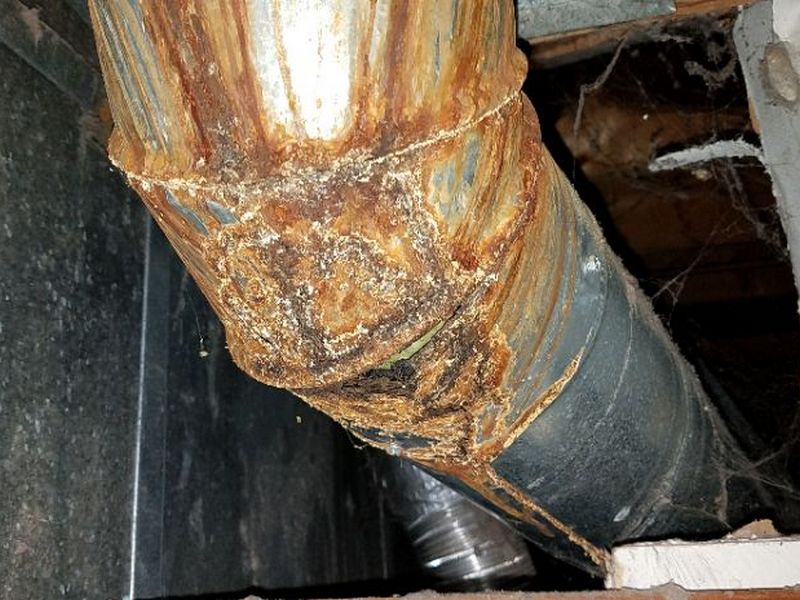
The exhaust vent is improperly-installed. It is routed through the HVAC return duct. This is a significant risk for allowing toxic flue gases into the house air. Hire an HVAC contractor to make the required repairs.
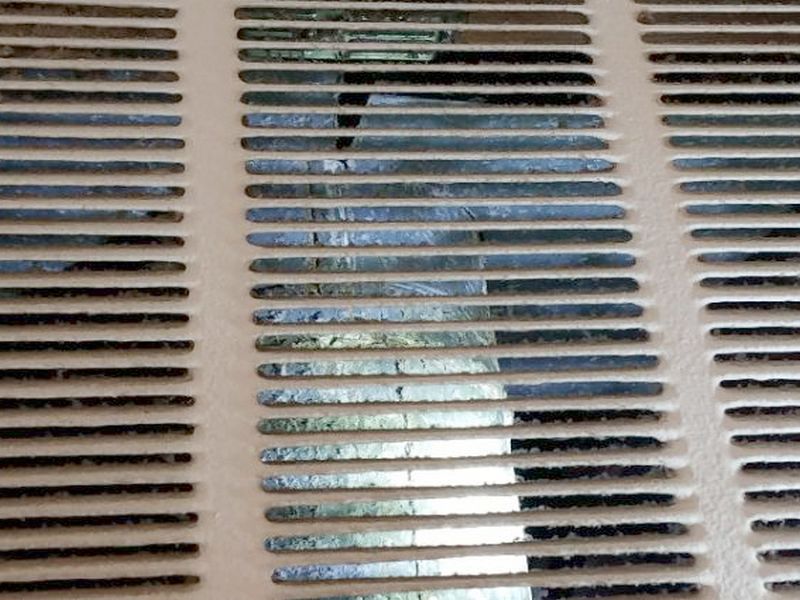 The exhaust vent is leaking. Condensate is visible. This can permit flue gases to enter the living area. Hire an HVAC contractor to make the required repairs.
The exhaust vent is leaking. Condensate is visible. This can permit flue gases to enter the living area. Hire an HVAC contractor to make the required repairs.
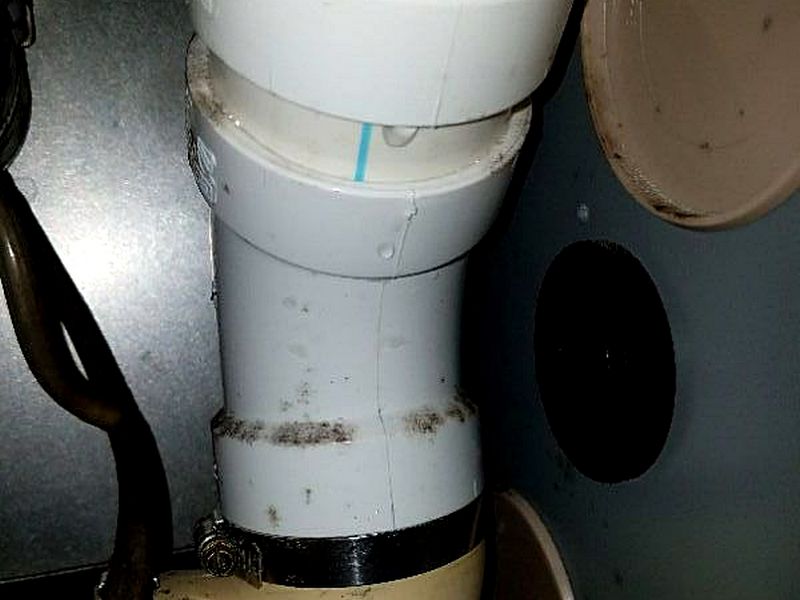
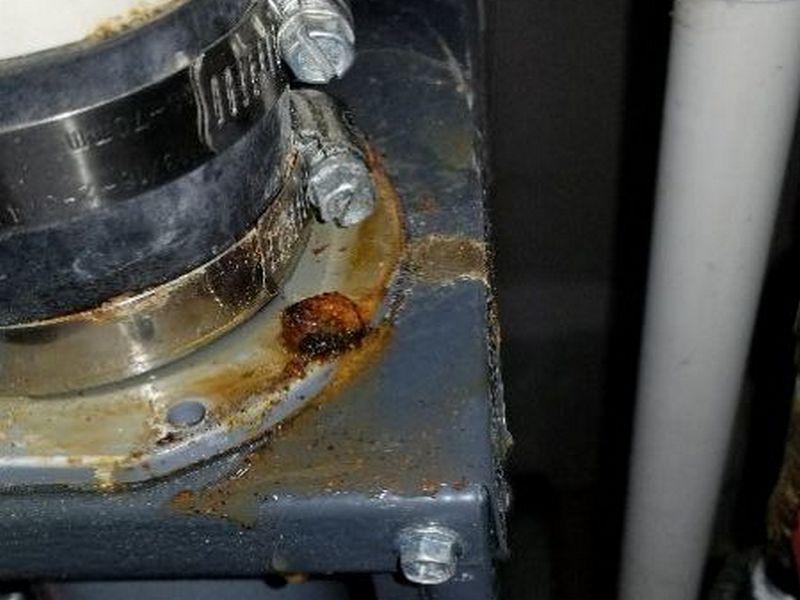
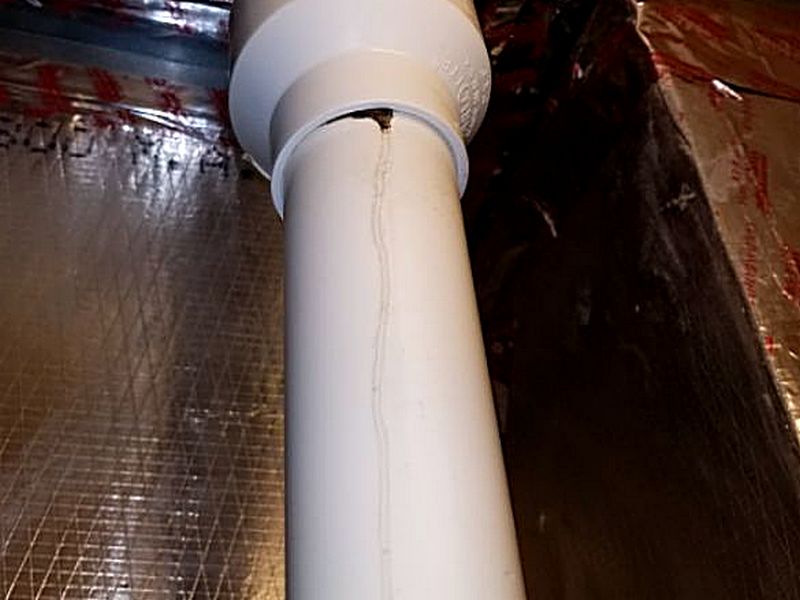
The exhaust vent terminates too close to the ground. It can be blocked by snow or debris, allowing flue gases to enter the living area. Hire an HVAC contractor to make the required repairs.
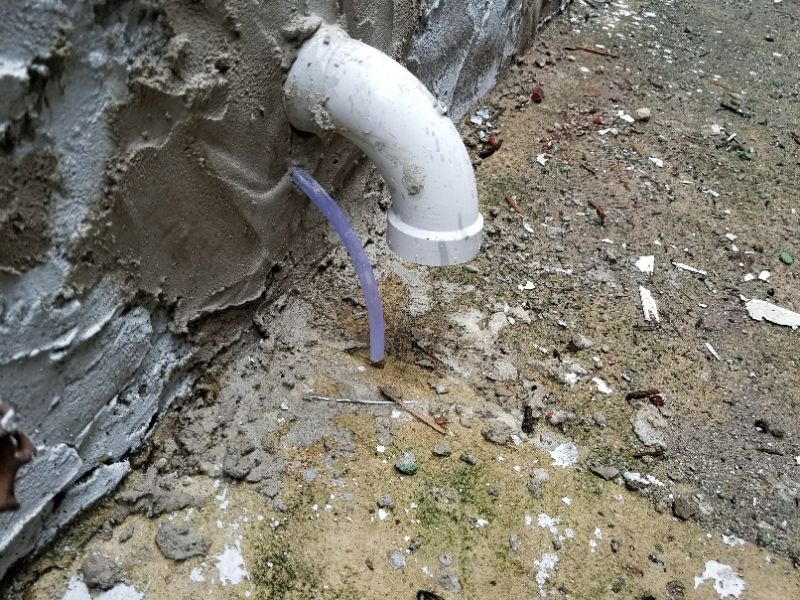
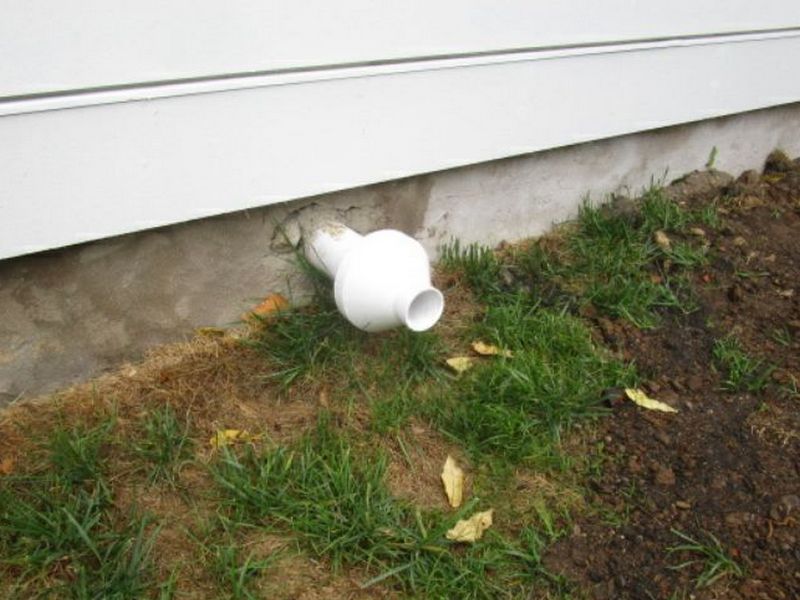
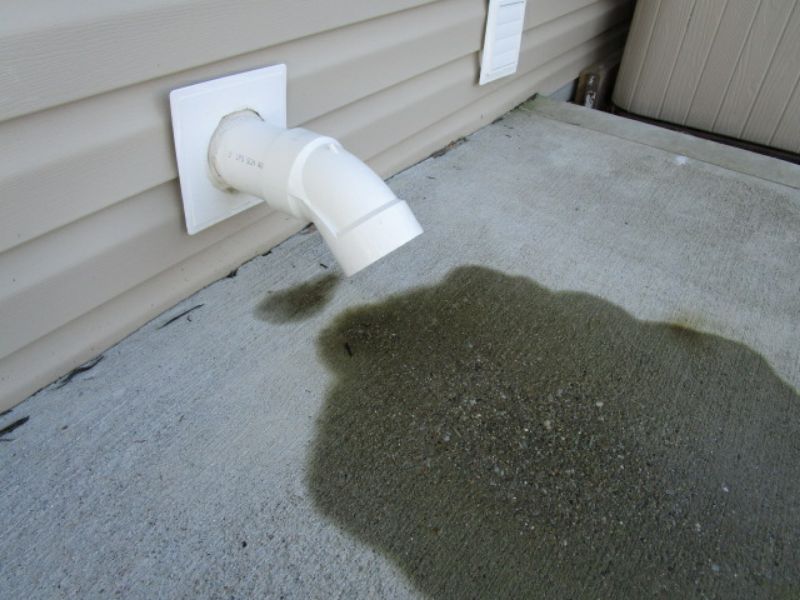
The exhaust vent terminates too close to a window. This can allow flue gases to enter the living area. Hire an HVAC contractor to make the required repairs.
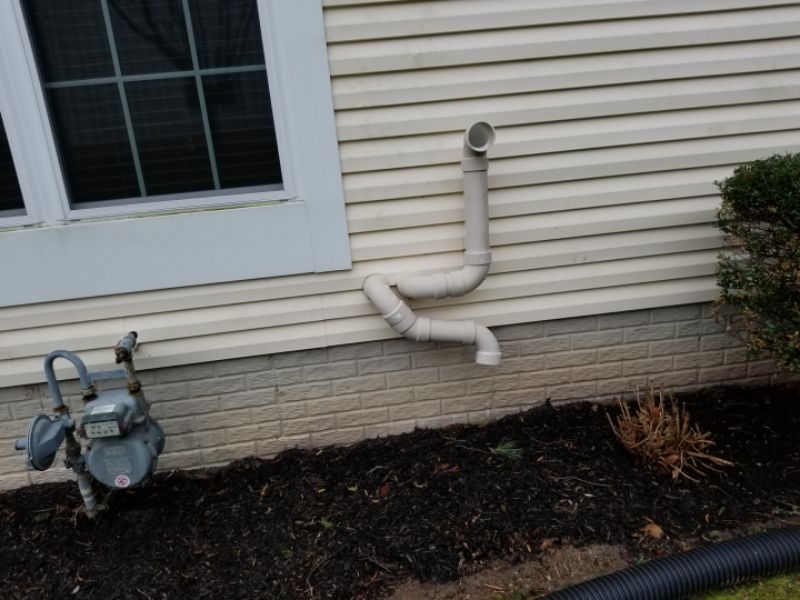
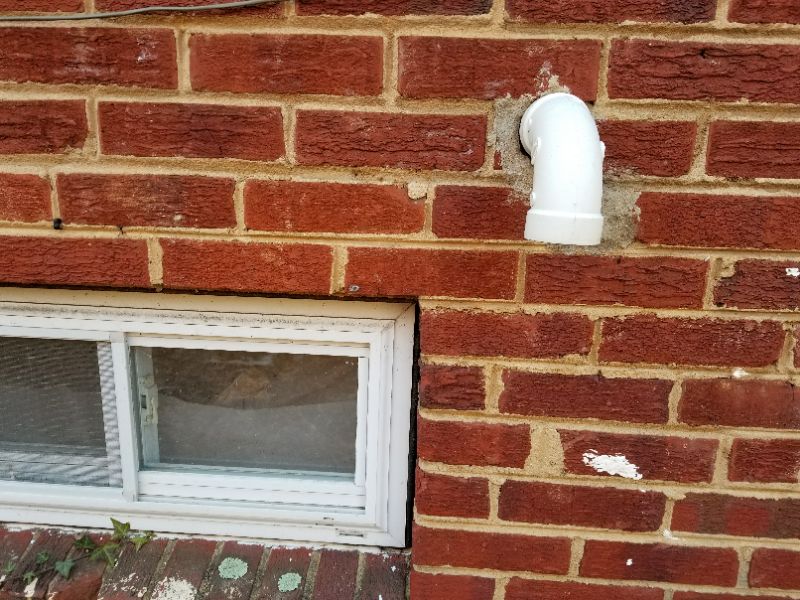
The exhaust vent is improperly terminated. It is too close to the soffit and does not adhere to the 3-2-10 rule. This is a back-drafting and fire hazard. Hire an HVAC contractor to make the required repairs.
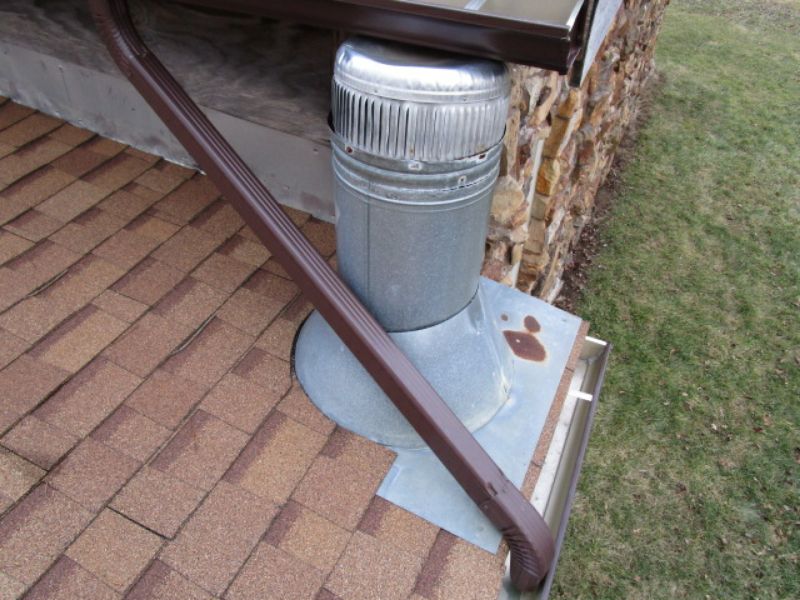
The exhaust pipe has been recalled due to safety concerns. Hire an HVAC contractor to replace the pipe immediately.

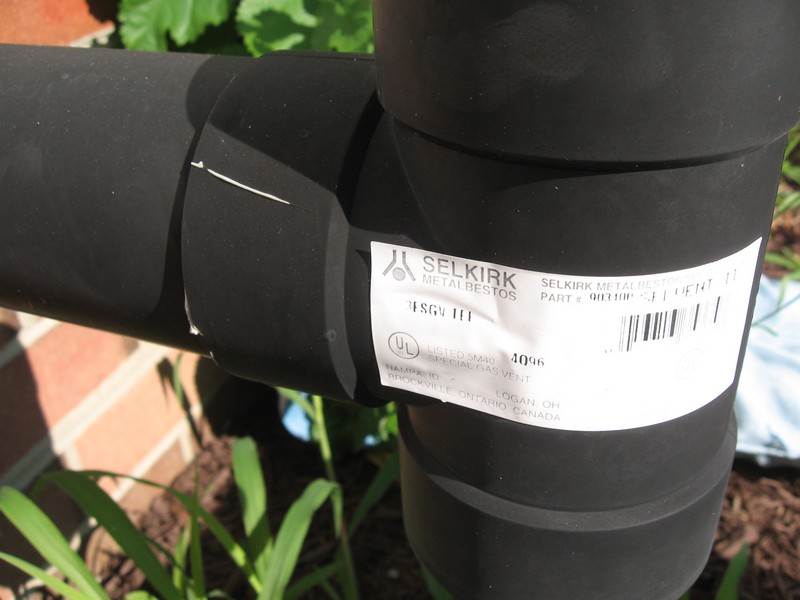
Draft Hood “Spill Switch”: Spill switches on furnace and boiler draft hood shut down the appliance if back-drafting occurs. They detect heat and/or combustion gases. When these fall back on to the switch the assumption is improper drafting.
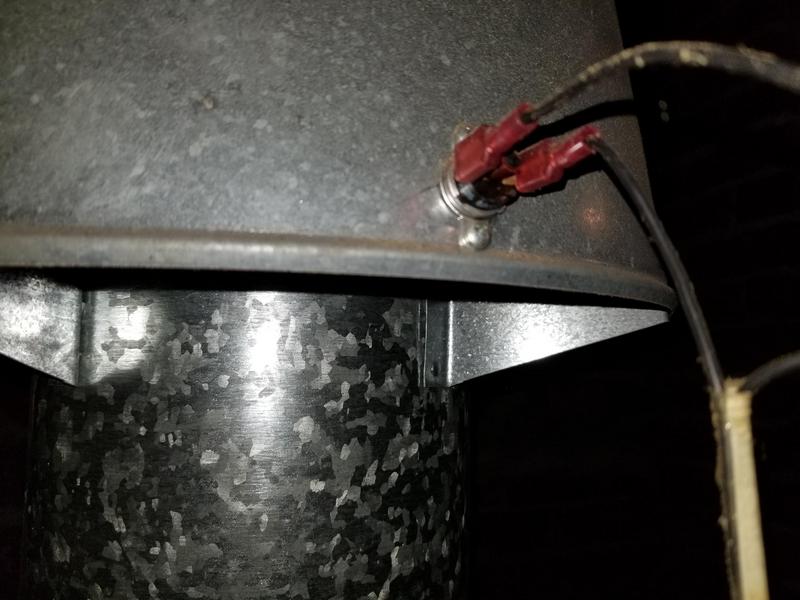
The exhaust pipe has acidic precipitate. This implies a drafting problem that can permit flue gases to enter the living area. Hire an HVAC contractor to evaluate the system and to make required repairs.
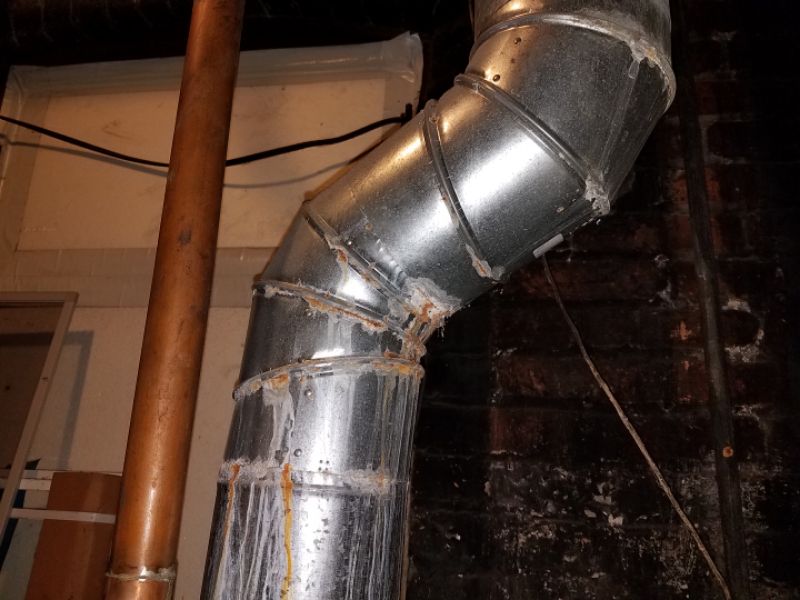
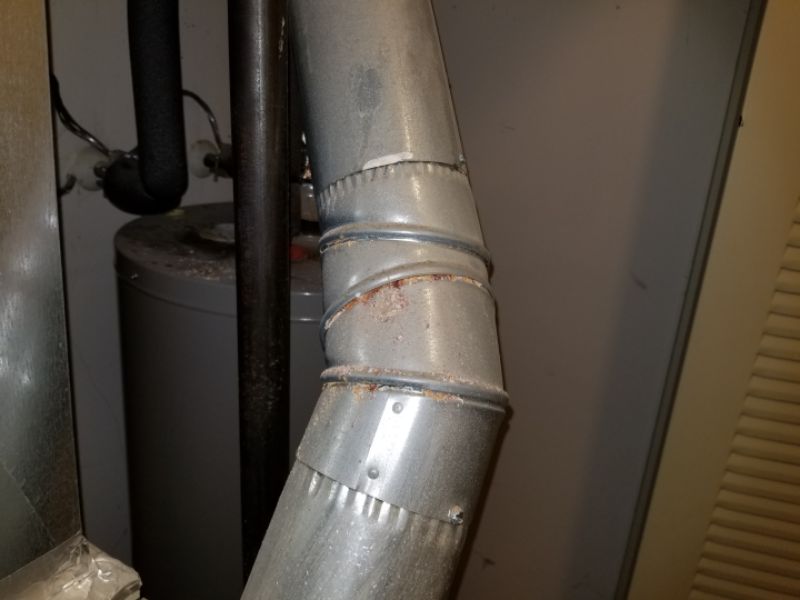
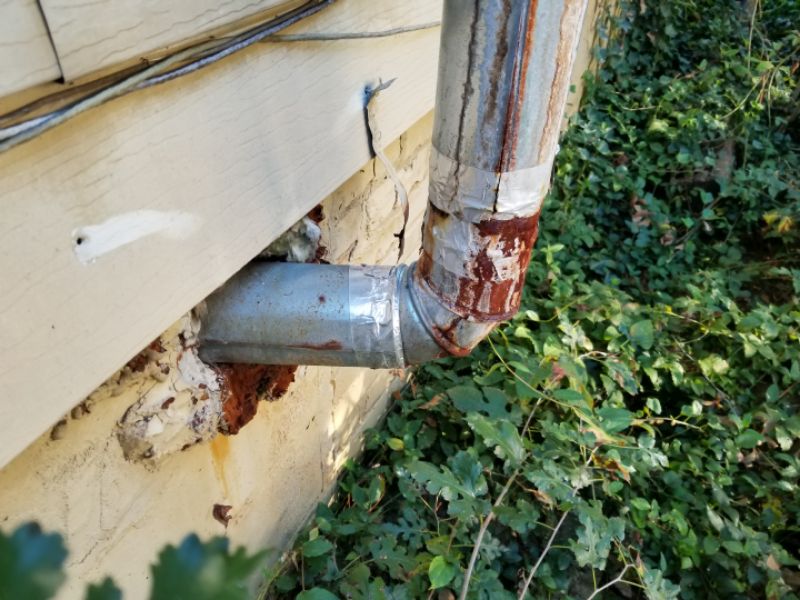
The draft inducer fan is damaged or inoperative. This is a safety hazard that affect proper operation and can permit flue gases to enter the dwelling. Hire an HVAC contractor to make the required repairs.
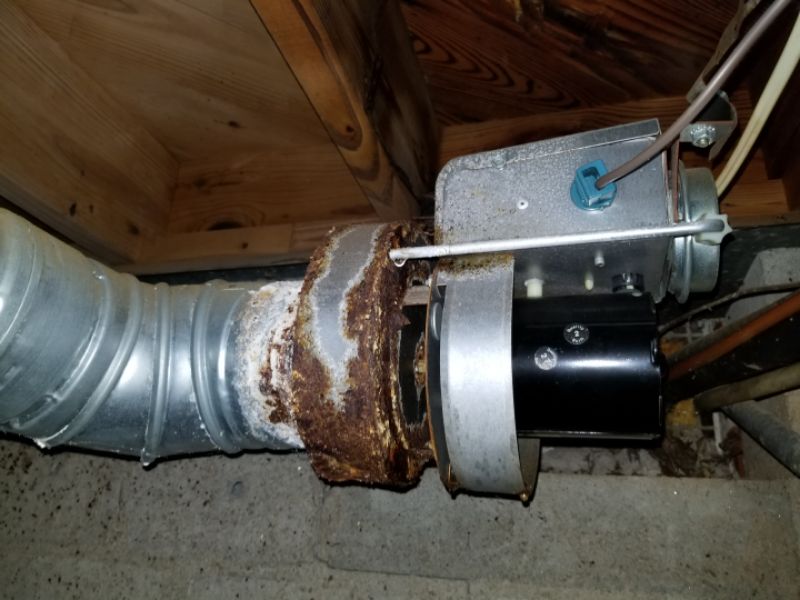
The barometric damper is inoperative. This is a safety concern that affects the proper exhausting of combustion gases through the flue. Hire an HVAC contractor to make the required repairs.
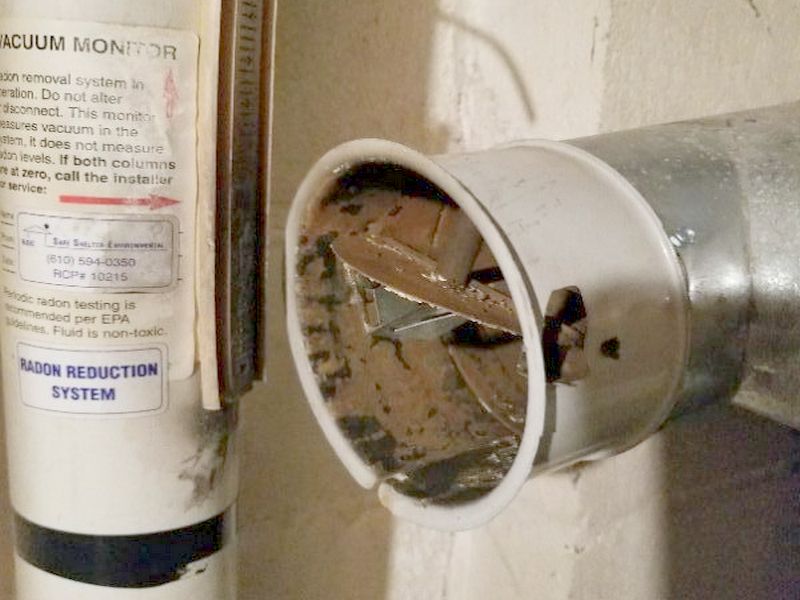
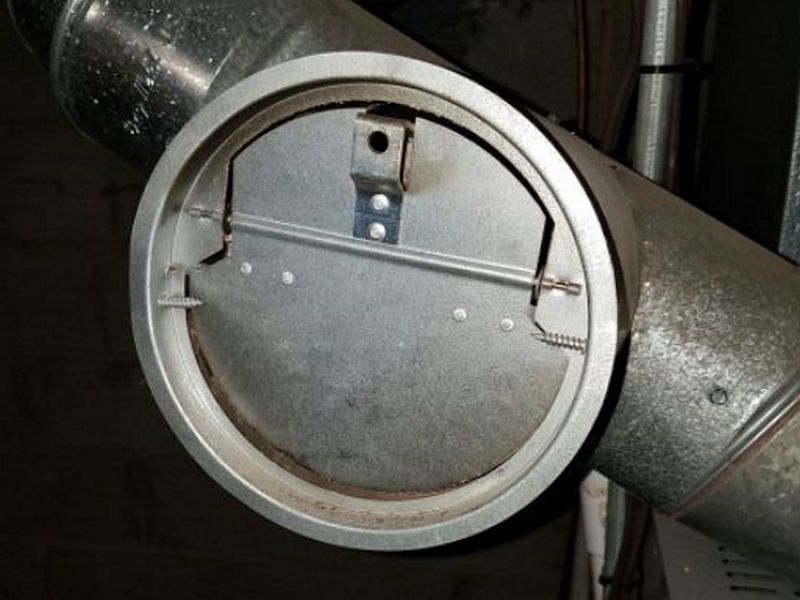
The barometric damper is missing. This is a safety concern that affects the proper exhausting of combustion gases through the flue. Hire an HVAC contractor to make the required repairs.
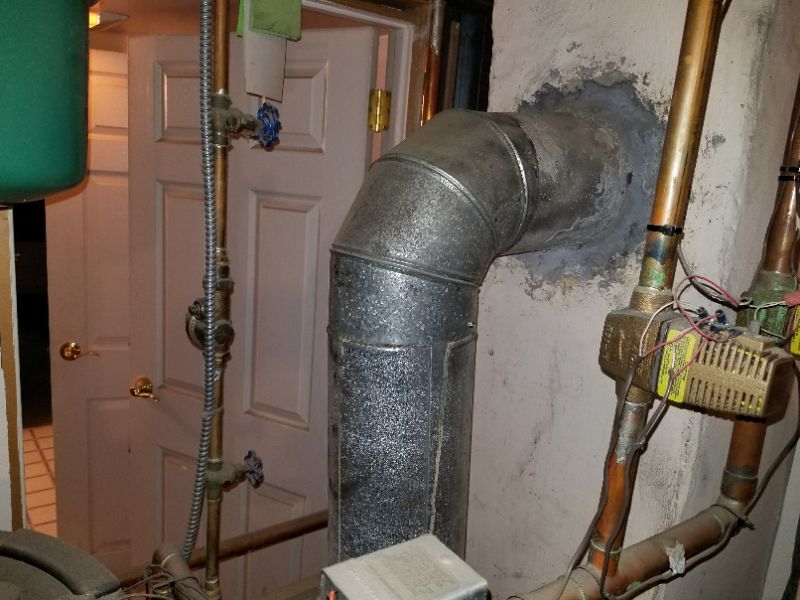
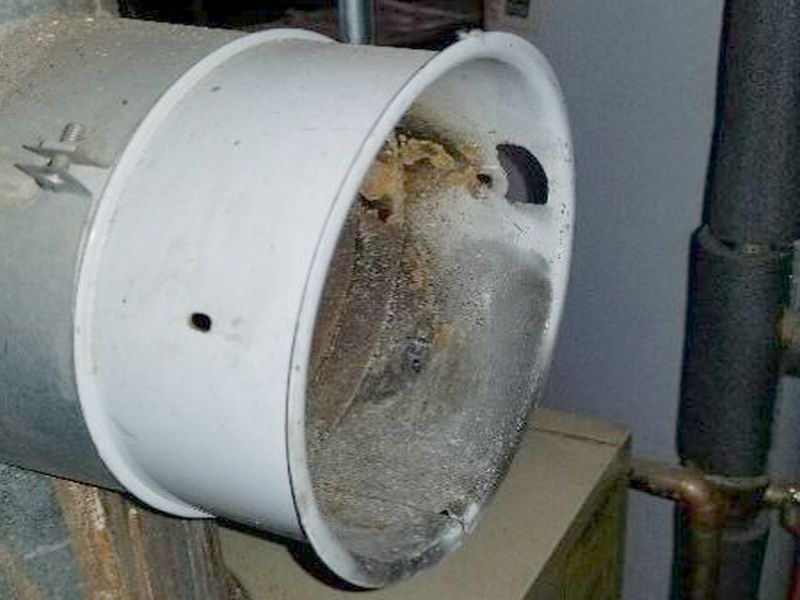
Heat Exchanger
Combustion appliances have heat exchangers. In an all-electric appliance, you can draw the house air directly across the warm refrigerant or strip coils to condition the interior. In a combustion appliance, you must keep the byproducts of the burning fuel out of the air being delivered to the home. This is done with a heat exchanger. The flames are confined to a combustion chamber, which is connected to the flue system. Between these is the heat exchanger(s). In a furnace the heat conducts through the metal of the sealed exchanger, and the house air captures it as it passes on the other side. In a boiler, the circulating water is routed in tubes through the combustion air stream, gaining its heat as it passes. In this section we will also look at combustion chamber issues.
The main problem with inspecting heat exchangers is that they aren’t fully visible. Report any rust or damage in the areas that you can see. Be alert to combustion odors in the house. Watch the furnace’s flames when the blower engages; a disruption implies heat exchanger damage. Use the available heat exchanger Limitation Statement as appropriate.
The heat exchanger is rusted. Cracks or gaps permit flue gases to enter the living spaces. System replacement may be required. Hire an HVAC contractor to evaluate the system and to make required repairs.
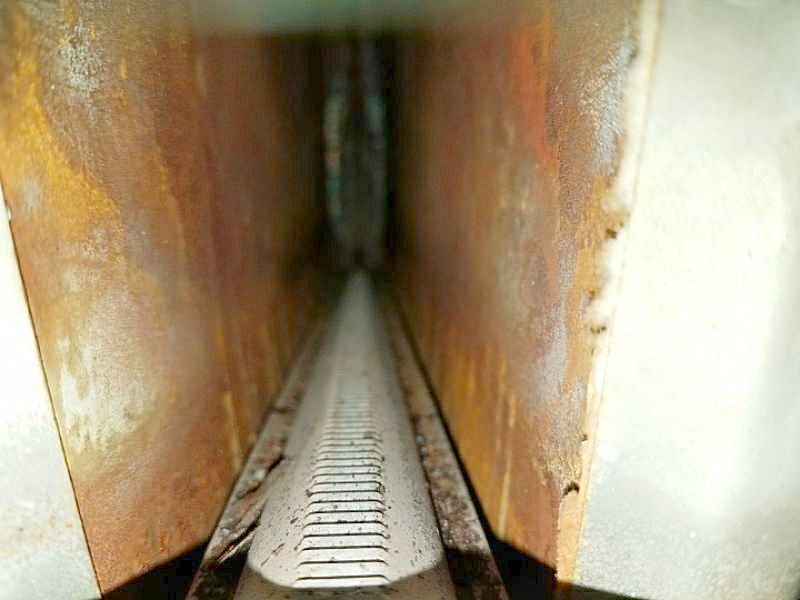
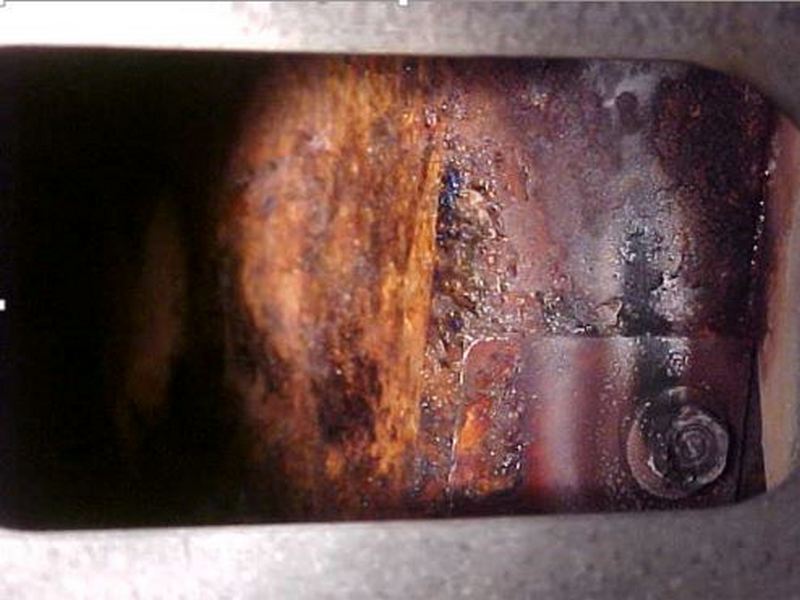
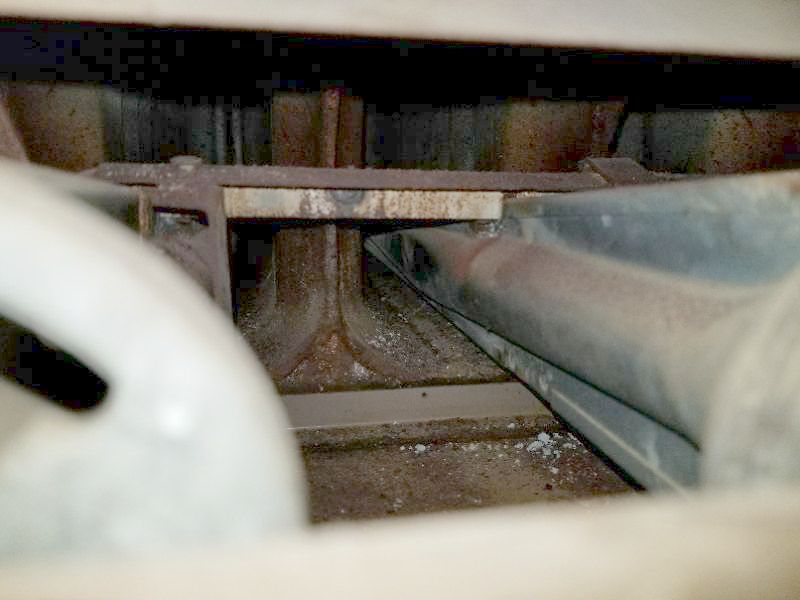
The heat exchanger is cracked. This permits exhaust flue gases to enter the living spaces. The system should be turned off and not used. System replacement may be required. Hire an HVAC contractor to evaluate the system and to make required repairs.
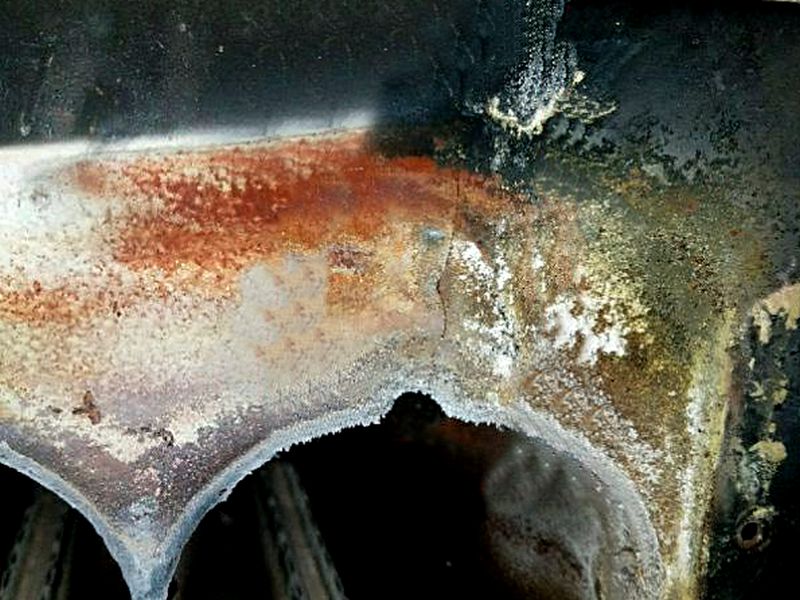
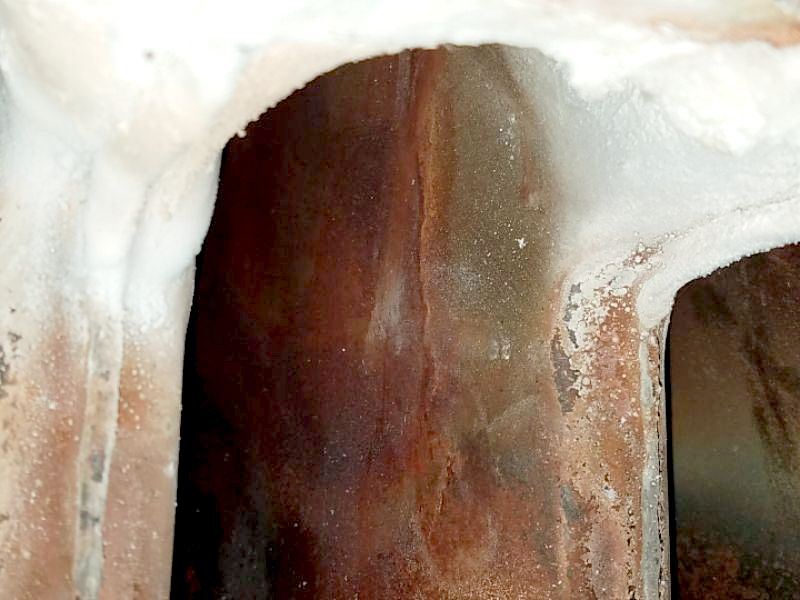
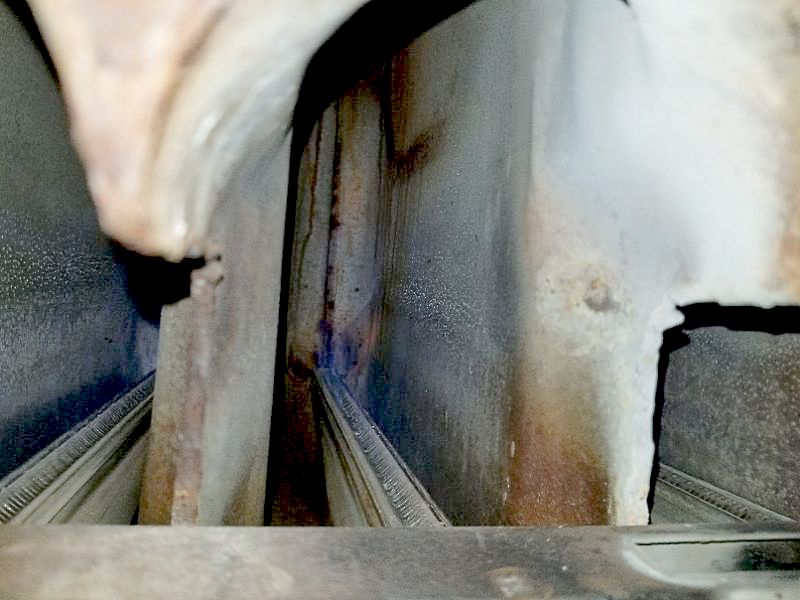
There is diversion in the furnace’s burner flames when the circulator fan starts. This implies a possible hazardous failure in the heat exchanger. System replacement may be required. Hire an HVAC contractor to evaluate the system and to make required repairs.
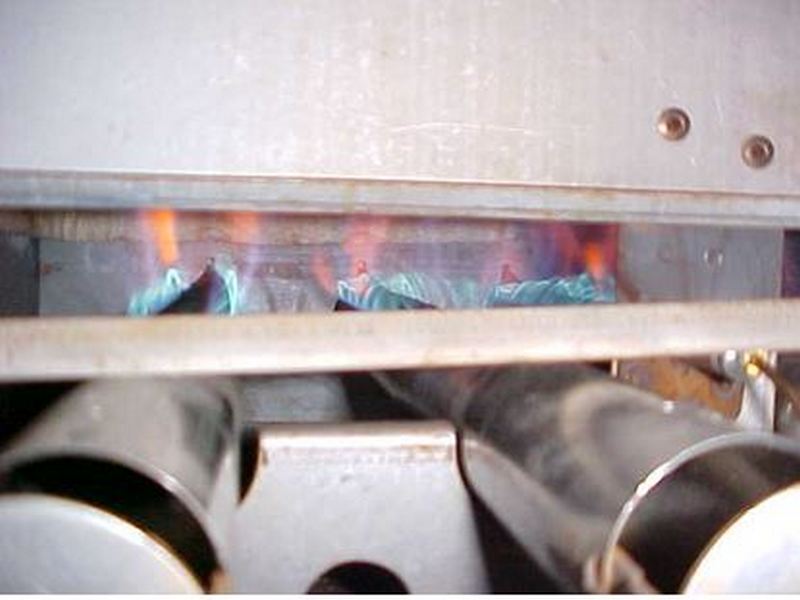
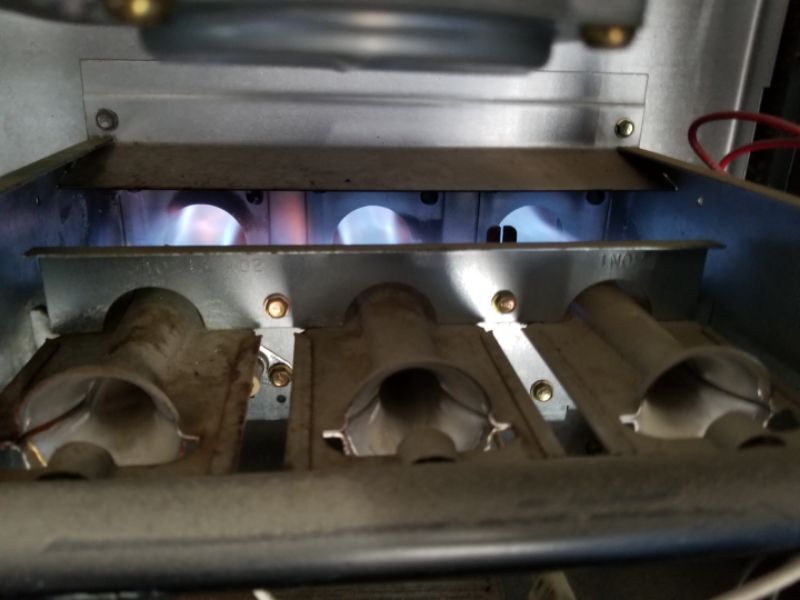
The combustion chamber is cracked. This is a safety hazard that can allow further damage. Hire an HVAC contractor to evaluate the system and to make required repairs.
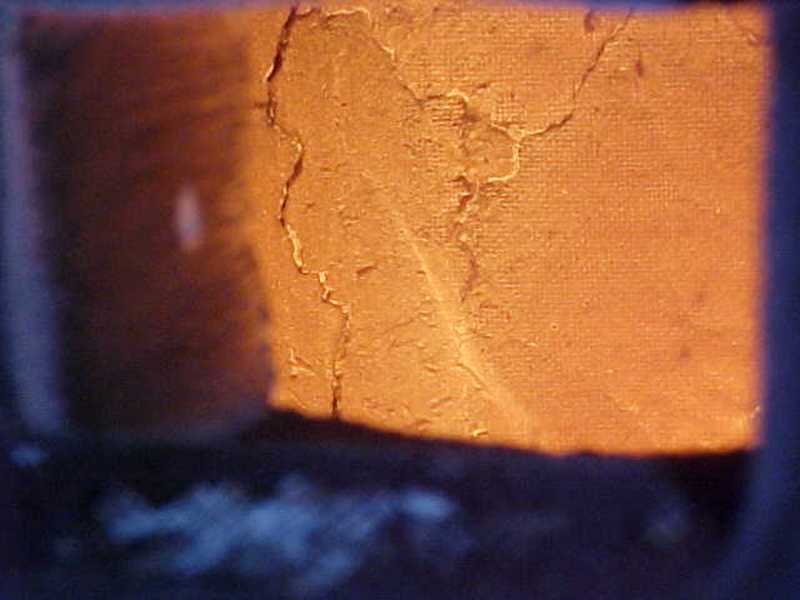
The combustion chamber is deteriorated. This is a safety hazard. Replacement of the chamber, and possibly the appliance, is required. Hire an HVAC contractor to evaluate the system and to make required repairs as needed.
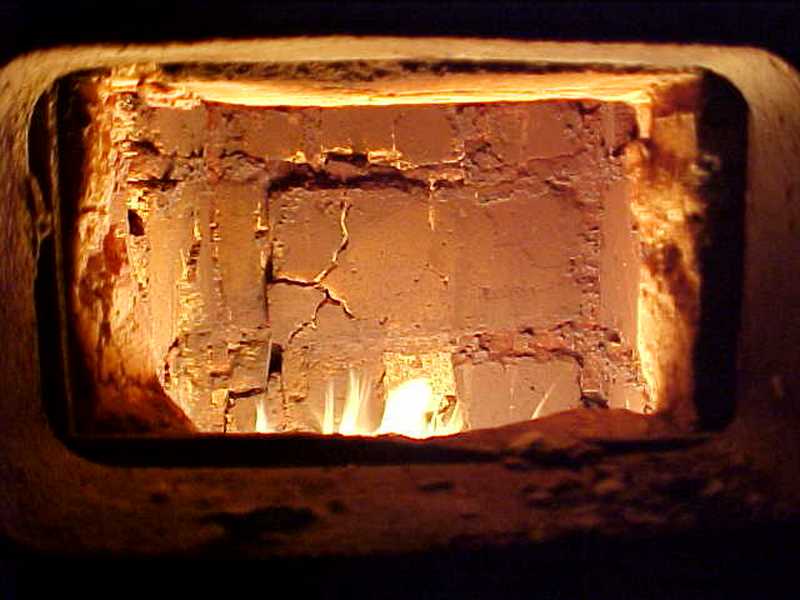
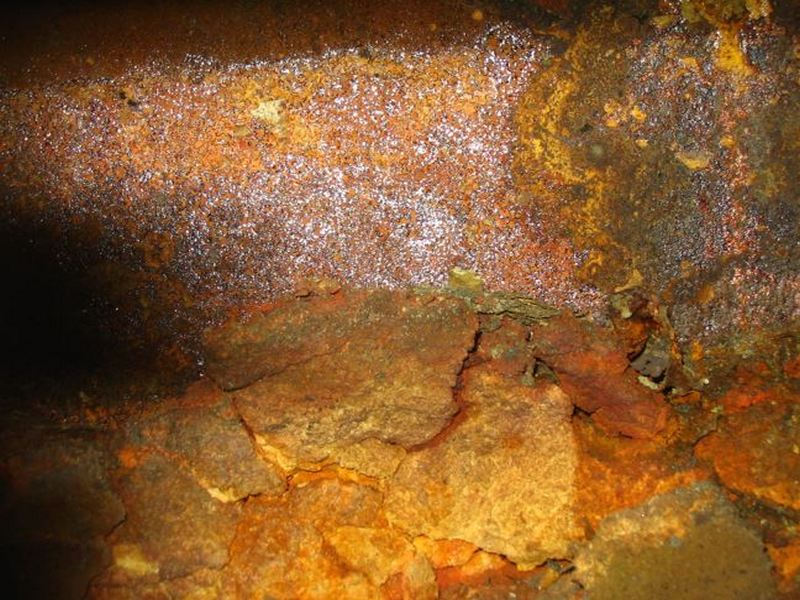
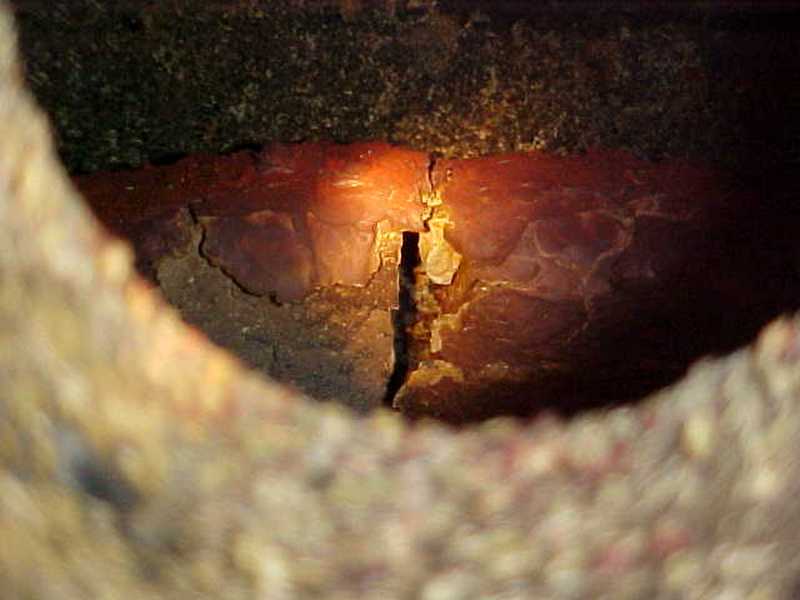
Heating System Limitation and Information Statements
Heat pump operated in heating mode, not tested for cooling: The inspector operates the heat pump in the heating mode only. The heat pump is not tested for cooling due to the low outside temperature and the manufacturer’s guidelines. If the compressor, the heart of the system, operates in one mode it is the same as operating in the opposite mode.
Heat pump operated in cooling mode, not tested for heating: The inspector operates the heat pump in the cooling mode only. The heat pump is not tested for heating due to the high outside temperature and the manufacturer’s guidelines. If the compressor, the heart of the system, operates in one mode it is the same as operating in the opposite mode.
Pilot light off, no operation: The pilot light is off, which prevents system operation and limits the inspection.
Exterior components inaccessible: Exterior components are inaccessible, which prevents inspection.
Maintained by local association: The heating system appears to be maintained by local association and, therefore, is not inspected.
Shared with other units, unable to determine responsibility for operation/maintenance: The heating system appears to be shared with other units. Therefore, the inspector is unable to determine responsibility for operation and maintenance.
Sealed cover, no access to interior: The service access cover is sealed. Therefore, the inspection is limited.
May be subject to recall: The heating system may be subject to a recall notice, which generally is issued because of safety concerns.
Condensate pump empty: The condensate pump is empty, which prevents operation and inspection. A condensate pump is required to discharge water which cannot be discharged by gravity.
Heat exchanger evaluation excluded: Comprehensive evaluation of the heat exchanger is specifically excluded from this inspection due to visibility and design limitations of forced-air furnaces. Comprehensive evaluation can only be obtained by dismantling or specialized testing, which is beyond the scope of this home inspection.
High-efficiency condensing furnace or boiler: The home is heated by means of a high-efficiency condensing furnace or boiler. This type of appliance is more complex than conventional systems and relies on various electronic controls and sensors during operation. In addition to its more advanced electronics, the majority of components typically accessible on conventional systems are enclosed or sealed. Visual assessments are, therefore, extremely limited. We recommend annual servicing.
Near/at end useful life, budget for replacement: The heating system is near or at the end of its estimated useful life. We recommend establishing a budget to replace the heating system.
Past end useful life, budget for replacement: The heating system is past the end of its estimated useful life. We recommend establishing a budget to replace the heating system.
Heat pump is compressor-based HVAC system that provides both heating and cooling, checked in heating or cooling mode, depending on exterior temperature: A heat pump is a compressor-based HVAC system that provides both heating and cooling. Please refer to the appropriate Heating System for details on your unit. Heat pumps are only checked in either the heating or cooling mode, depending on the exterior temperature. This is done to prevent damage to the appliance.
Interior parts of steam boiler are not included in a home inspection: The interior parts of the steam boiler are not included in a home inspection. Inspecting for failures in the boiler requires that steam pressure be developed and maintained for a period of time that is beyond the length of time of a home inspection, i.e., it is possible that a defect exists in an inaccessible portion of the boiler.
Age is estimate, exact age not determined, data plate missing or no info: The age of the heating system is an estimate. The exact age cannot be determined because the data plate is missing or does not provide the required information.
Interior/exterior units appear to be different ages, talk to owner/contractor to determine work performed: The interior and exterior HVAC units appear to be different ages. Determining which parts of the system have been upgraded is beyond the scope of this inspection. Consult with the owner or an HVAC contractor to determine what work has been performed.
House heated by hydronic forced air system with high-output water heater connected to piping and air handler: The heating system is a hydronic forced air system with a high-output, fossil fuel-fired water heater connected to piping and an air handler. A hot water coil inside the fan housing provides heat to the house. The water heater serves as a dual-function appliance that provides heating as well as hot water for domestic use.
Hire a contractor to service and clean an oil or wood combustion appliance regularly, check and clean flue pipe and service chimney: Hire a contractor to service and clean an oil or wood combustion appliance regularly. The flue pipe and service chimney also should be checked and cleaned as required.
Pulse furnace is a variation on other types of high efficiency furnaces: A pulse furnace is a variation on other types of high efficiency furnaces. Pulse furnaces achieve high efficiency by extracting nearly all of the heat from the combustion gases. The system has a blower, but unlike other furnaces, the blower is idle when the furnace is firing. The blower is used only for purge cycles before and after the combustion process. An issue with pulse furnaces is a higher level of noise and vibration.
Full scope of system’s condition not included due to specialist’s evaluation, refer to specialist’s report(s): The full scope of the HVAC system’s condition is not included in this report due to an independent specialist’s evaluation. Refer to the specialist’s report(s) for more information and required actions. Any observations are provided as a courtesy.
System predates revised DOE efficiency standards. Older refrigerants becoming rare; high efficiency replacement may not be compatible with all components, budget accordingly: This system predates revised Department of Energy standards for efficiency. As manufacturers cease or curtail the older production lines, spare parts support and the now-obsolete refrigerant gases will likely be more expensive. If an extremely high efficiency replacement is desired, they may not be compatible with air handlers and duct systems designed for the older less efficient units.
Water heater supplies hot water to in-floor pipes for radiant heat, annual maintenance recommended: The heating system uses a dedicated water heater to supply hot water to in-floor pipes. This provides radiant heat in a specific area. Annual maintenance by a qualified technician is recommended to ensure reliable and efficient operation.
Heating system accessible covers removed to permit visual inspection of interior, functional testing performed using manual override of homeowner controls: The accessible covers of the heating system are removed using manufacturer installed hardware and/or standard hand tools. This is done to allow a visual inspection of the interior components. Functional testing of the unit is performed using the manual override of the homeowner controls.
Heating system accessible covers NOT removed, sealed and/or blocked, limited visual inspection of interior, consult HVAC specialist, functional testing with manual override of homeowner controls: The accessible covers of the heating system are NOT removed due to being sealed with tape, caulk, or similar materials, and/or being blocked by ductwork or other installed building component(s). This limits the visual inspection of interior components. An HVAC Specialist should be consulted for further inspection of specific components and operation inside of housing. Functional testing of the unit is performed using the manual override of the homeowner controls.
Cooling System
Unlike heating, habitability codes do not require air conditioning. There may be local exceptions. Regardless, we must evaluate the AC present on the property, as it’s part of the SOP. Additionally, we are not serving our clients if we don’t note whether the AC is reasonably distributed or not. In this section, we will look at AC-only split systems, heat pumps, ductless “mini-split” zone installations, and evaporative coolers. Window units are not permanently installed and are outside of the scope. Inspection is a courtesy.
Refrigerant-based AC should not be operated when outdoor temperatures are below 65° F. This can cause permanent damage to the compressor. Use the appropriate Limitation Statement. If the home’s interior is hot and humid, it may take 30-60 minutes before you can measure the Delta-T properly. Consider whether the home can get reasonably cool overall. Be sure to check for mismatches between the inside and outside unit capacities, and for significant system size disparities compared to the home’s square footage. Be alert to supplemental zone units where central cooling is provided.
The 2nd. law of thermodynamics tells us, simply put, that “heat moves towards cold.” This is why air conditioners work. In compressor-based AC, refrigerant is manipulated to produce very cold coils in the air handler. The warm, moist house air is drawn across these coils to shed its heat into the refrigerant. Cold air holds less moisture than warm air; the humidity condenses back into liquid and is drained away. The result is cool, dry air that’s delivered to the supply ducts. The refrigerant, now hotter, is carried to the exterior unit’s coils to be dumped into the cooler outside air. Then the cycle starts all over again.
Don’t operate the system when it’s below 65° F. outside. Compressor-based AC should provide a Delta-T between 14-22° F. Use the data plates to confirm that the interior unit’s capacity is equal to or slightly larger than the exterior’s; never less. A broad rule of thumb is that a ton of cooling capacity (12K BTU) is needed to serve 400-800 square feet of house. Use this to determine if the system is grossly over or undersized. A 5 ton system is too big for a 1,500 sf home. The system will cool the air and shut down before it can dehumidify. Short-cycling and a cold, clammy interior is the result. It’s likely the system will fail prematurely.
The temperature differential is too low. This “Delta-T” is the temperature difference between the supply and return air. The proper range is 14F – 22F. Hire an HVAC contractor to evaluate the system and to make required repairs.
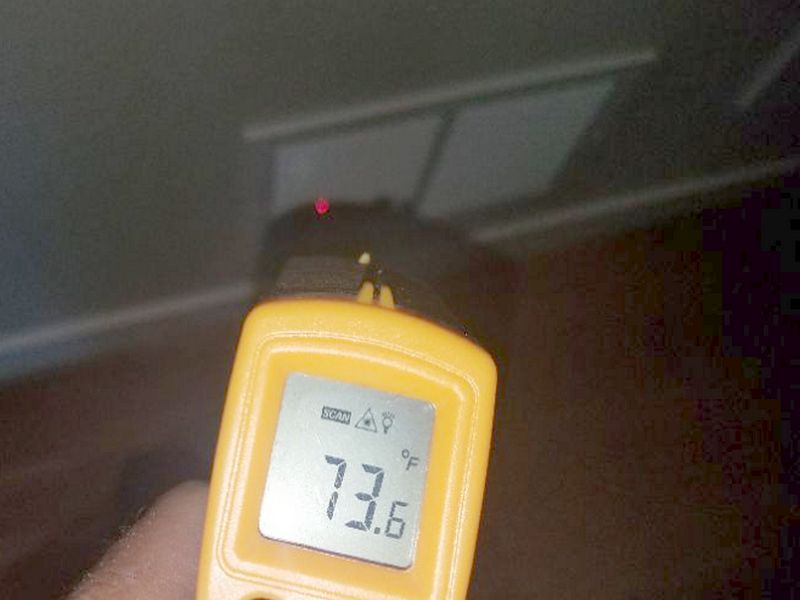
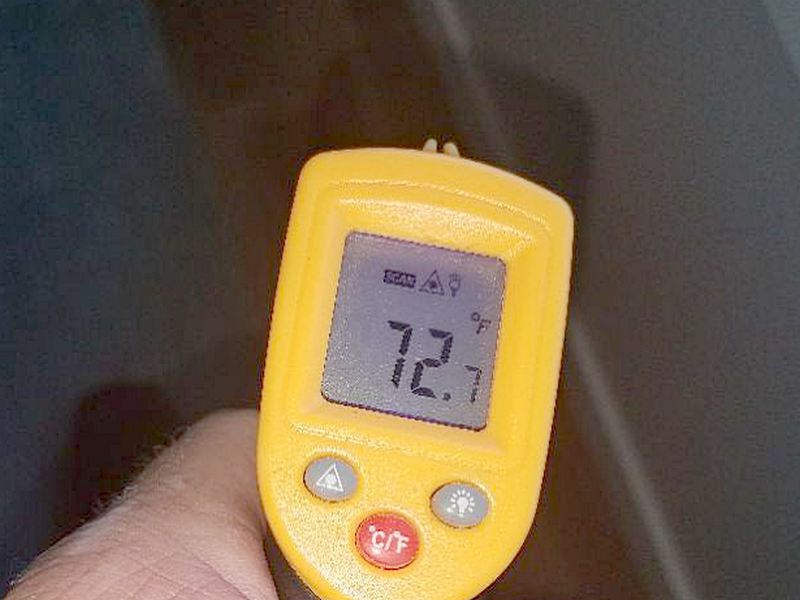
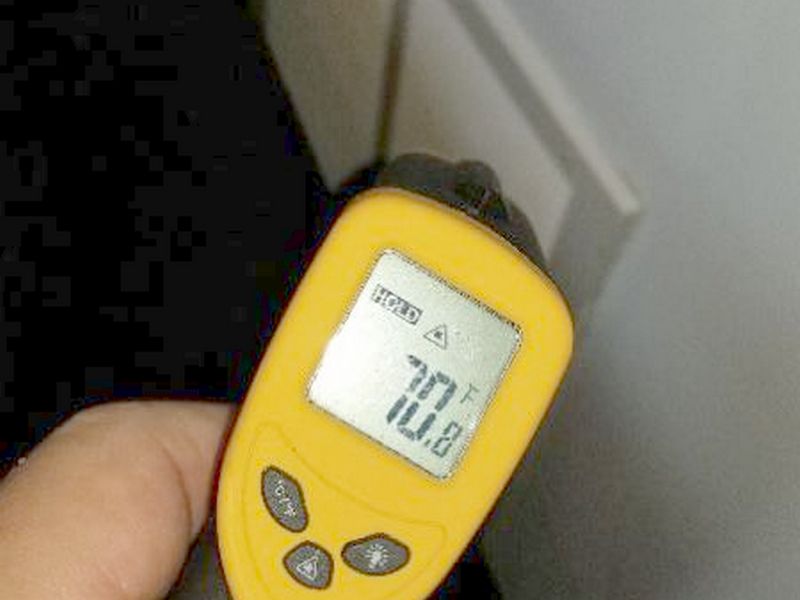
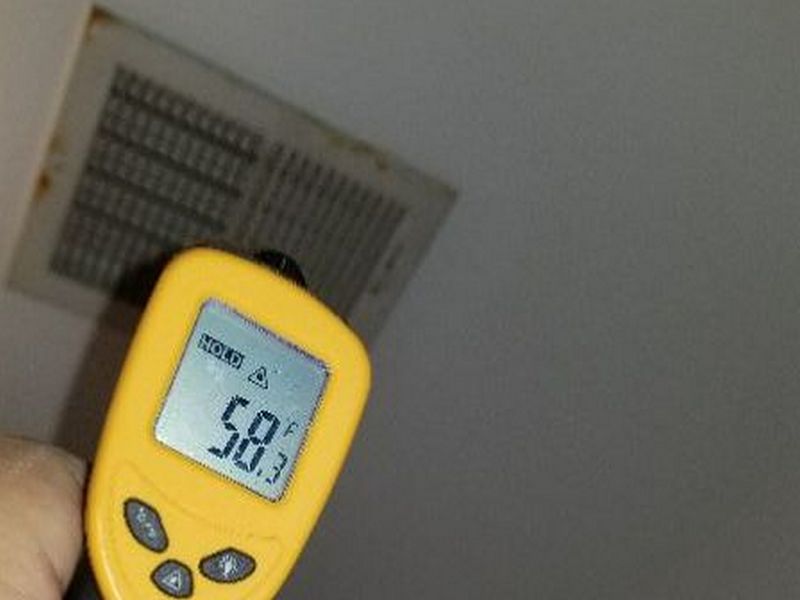
The temperature differential is too high. This “Delta-T” is the temperature difference between the supply and return air. The proper range is 14F – 22F. When significantly higher this implies a low fan speed, dirty filter or coils, or a possible temporary repair. Hire an HVAC contractor to evaluate the system and to make required repairs.
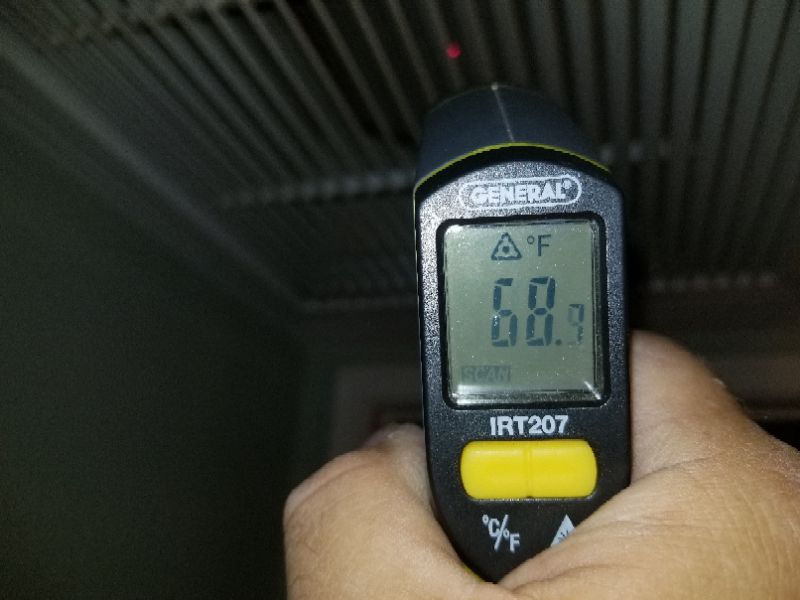
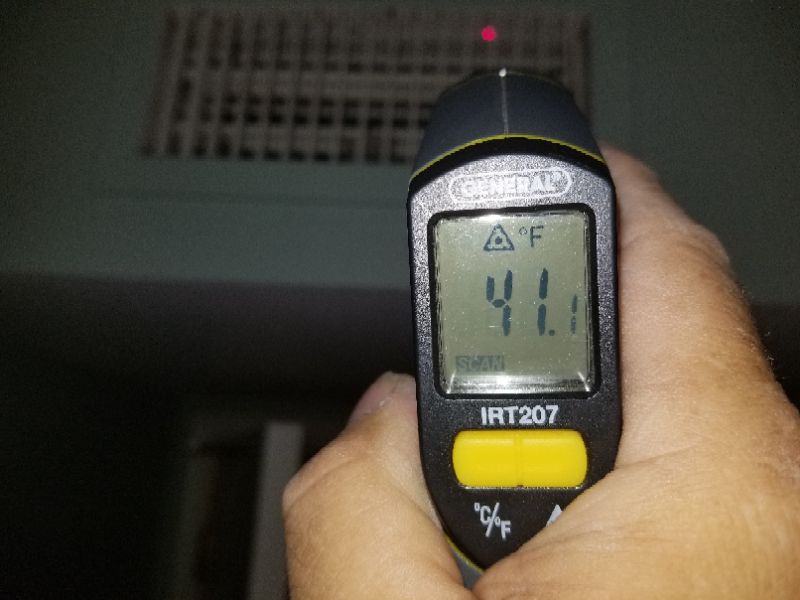
The AC’s air handler coils are dirty. This affects efficiency and air quality. Hire an HVAC technician to clean and service the system.


There is an improper match between the air conditioner’s interior and exterior components. The interior’s capacity should match or be 1/2 to 1 ton larger than the exterior. Hire an HVAC contractor to evaluate the system and to make required repairs.


There is supplemental air conditioning present for an individual room. It is not known if the unit was installed for personal comfort reasons, or due to inadequate coverage (possible undersized system). Hire an HVAC contractor to evaluate the system and to make required repairs.

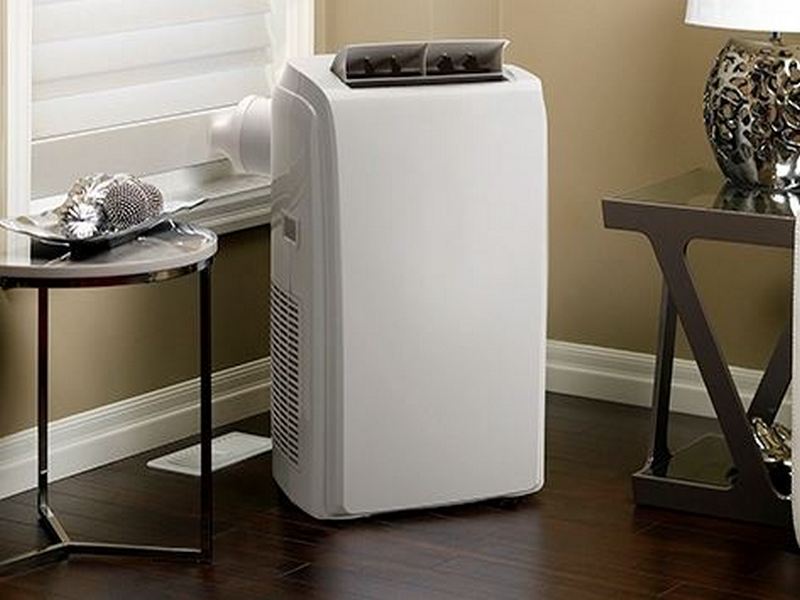
The insulation is damaged or missing at the air conditioner’s suction line. This affects the system’s efficiency. Install an exterior-grade pipe insulation on the suction line.


These are air conditioners that, as the name implies, do not have distribution ducts. They are designed to condition a limited zone. While we are looking at their cooling here, most are actually heat pumps. The air handler is mounted on the wall of the room being served rather then delivering air from a central location via ducts. Only the refrigerant lineset penetrates the exterior wall, and connects to a small compressor. There are compressor models that can power 2 or 3 air handlers. Mini-Splits are very popular for conditioning additions or renovated spaces where duct work isn’t practical. The air handler units are usually placed high on the wall and are operated by a remote control.
Inspect these systems much the same as you would a split-system AC. Set to cooling when it’s above 65° F. outside. Obtaining a Delta-T is a bit trickier as the supply and return are both on the wall unit. Labels on the interior portion may be hard to see, but you should attempt to capture the inside and outside data plates and check that the capacities match. Be alert to any signs of condensate leakage, which would likely occur in the wall below the air handler.


Evaporative coolers, used in arid climates, work by harnessing (surprise!) evaporative cooling. This is the same phenomenon that we rely on in our Infrared Inspections to visualize the presence of hidden moisture. Heat must be absorbed to make liquid water change state into a vapor. As the molecules become suspended in the air, they draw more heat from the surrounding hot air, cooling it in turn. Evaporative coolers optimize this process. A water supply is circulated over special porous pads or coils that provide high surface area for a fan to blow hot, dry, outdoor air over. While ducts may be a part of the installation, systems rely on displacing the warm dry house air with cooler, moister air. As refrigerant-based AC dehumidifies the indoor air, running both types of systems at the same time would be counterproductive.
A clean system is essential to avoid odors and indoor health issues. The nickname “Swamp Cooler” doesn’t come because of where they’re used; they won’t work in a hot, humid swamp. It’s probably because of how your house will feel and smell with a neglected unit. Inspect for overall condition, including deterioration, proper support and drainage, clean evaporator pads and coils, and leaks. Always perform an IR scan in the interior around the system.
There is no overflow drain for the evaporative cooler. This can allow water damage to the interior and exterior of the house. Hire an HVAC contractor for repairs as needed.
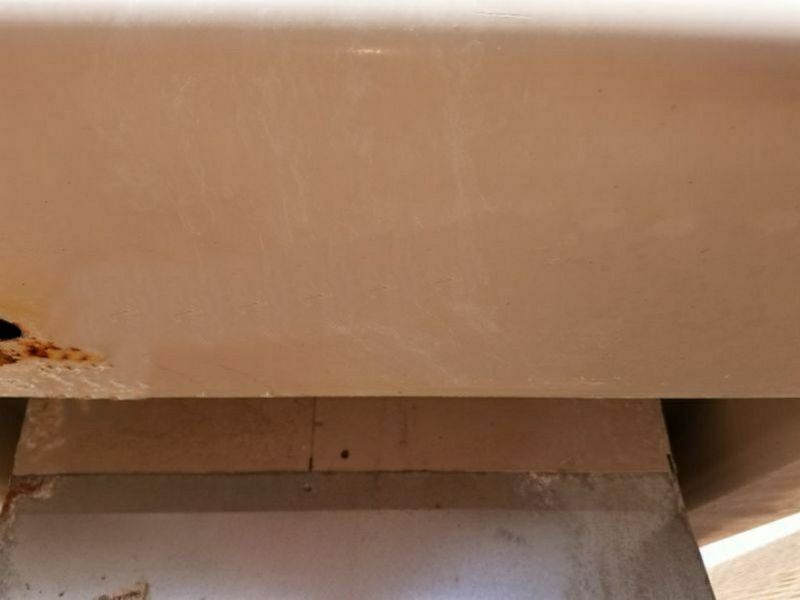
The evaporative coil is dirty. This can affect efficiency. Hire an HVAC contractor to clean and service the system as needed. A filter should be installed.
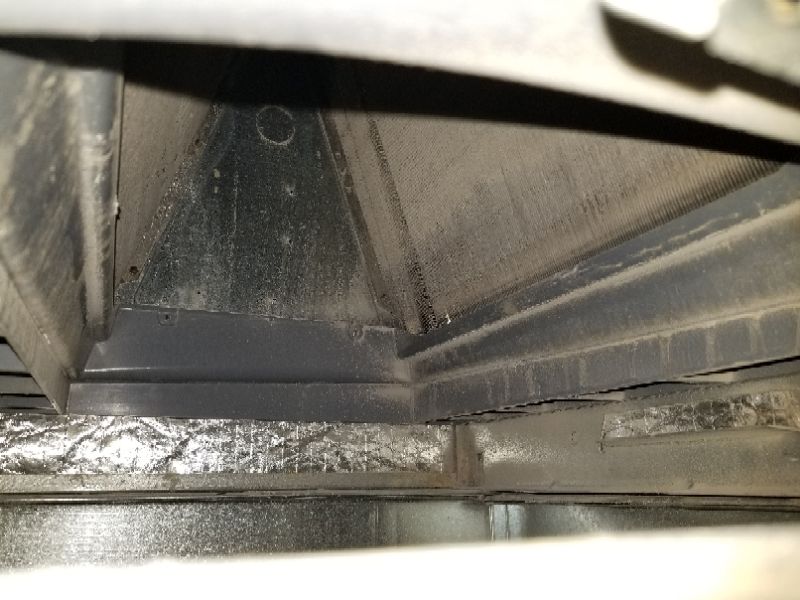
The evaporative cooler is rusted and deteriorated. This implies diminished reliability. Hire an HVAC contractor for repairs as needed.
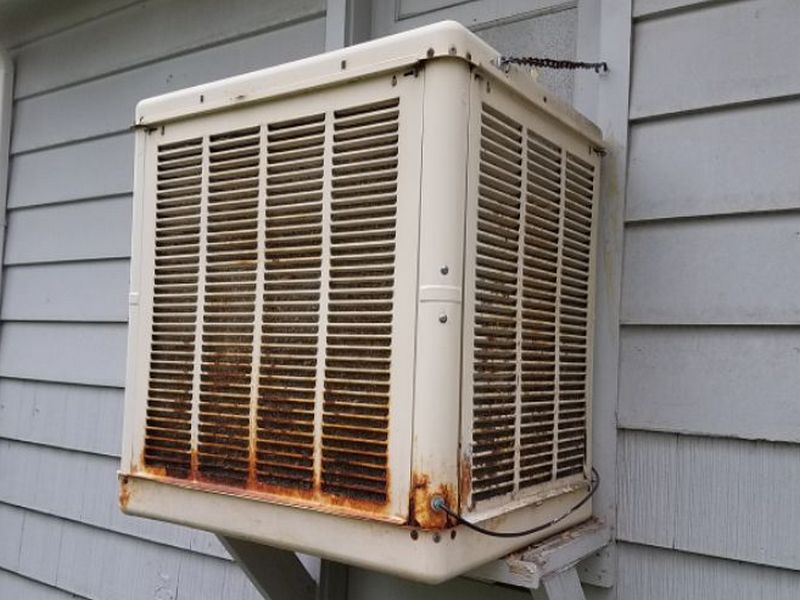
The water connection for the evaporative cooler is leaking. This will waste water and can cause damage. Hire a contractor for repairs as needed.

There is no flood pan under the evaporative cooler’s coil. This can allow moisture damage. Hire an HVAC contractor for repairs as needed.
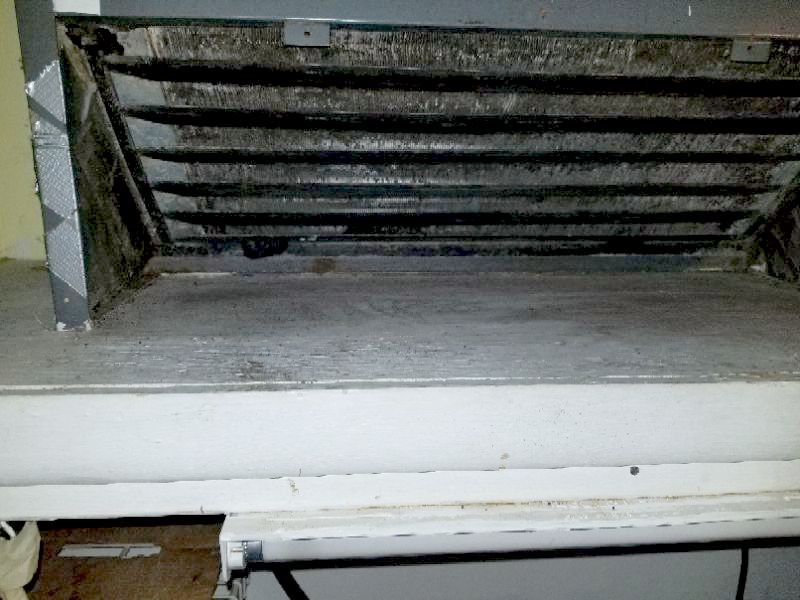
The outside temperature is too cold to operate the cooling system. Most manufacturers caution that running the AC when it is below 65ºF can damage the system. Therefore, the cooling system is only inspected visually.
HVAC exterior components are inaccessible, which prevents inspection.
The air handler is inaccessible, which prevents operation and inspection.
The service access cover is sealed. Therefore, the inspection is limited.
Parts of the cooling system appear to be maintained by local association and, therefore, are not inspected.
The cooling system appears to be shared with other units. Therefore, the inspector is unable to determine responsibility for operation and maintenance.
The cooling system is near or at the end of its useful life. We recommend establishing a budget to replace the cooling system.
The cooling system is past the end of its useful life. We recommend establishing a budget to replace the cooling system.
A heat pump is a compressor-based HVAC system that provides both heating and cooling. Please refer to the appropriate Heating System for details on your unit. Heat pumps are only checked in either the heating or cooling mode, depending on the exterior temperature. This is done to prevent damage to the appliance.
The age of the cooling system is an estimate. The exact age cannot be determined because the data plate is missing or does not provide the required information.
The interior and exterior HVAC units appear to be different ages. Determining which parts of the system have been upgraded is beyond the scope of this inspection. Consult with the owner or an HVAC contractor to determine what work has been performed.
This system predates revised Department of Energy standards for efficiency. As manufacturers cease or curtail the older production lines, spare parts support and the now-obsolete refrigerant gases will likely be more expensive. If an extremely high efficiency replacement is desired, they may not be compatible with air handlers and duct systems designed for the older less efficient units. I advise you to budget accordingly.
Circulator Pump/Fan
Properly-functioning circulation in an AC installation is essential not only for overall comfort, but for the welfare of the system. Obviously, if the fan fails, there’s no cooling. Dirt can affect efficiency (and a healthy environment), and an improperly adjusted blower can cause iced-up coils. Air handlers have safety mechanisms that must be intact.
Evaluate circulator fans for operation. They should come on when cooling is initiated, and turn off afterwards. Fans should not be noisy or vibrate. Inspect as possible for dirt buildup. Air handlers should have a safety switch that shuts off the circulator when the fan compartment cover is removed. If you are inspecting an evaporative cooler, ensure that the pump is operative with no leaking or excess noise or vibration.
The circulator fan door interlock switch is missing or defective. This is a potential safety concern that may also prevent the system from running at all. Hire an HVAC contractor to repair or replace the switch.



The circulator fan is dirty. This reduces the efficiency of the blower, and affects indoor air quality. Hire an HVAC technician to clean and service the system.



The air handler’s interior insulation is loose. This can damage the circulator fan if it falls into the blower assembly. Hire an HVAC technician to provide repairs as needed.

The air handler for the HVAC system is installed in a restricted space that may prevent proper access by service personnel. Hire a contractor to make repairs as needed.

Compressor
We generally refer to an AC system’s outside cabinet as the “compressor.” In this unit, a compressor receives the low-pressure gas refrigerant returning from the interior evaporator coils, where it picked up the home’s return air heat. It’s compressed and becomes a hotter high-pressure gas. A condenser changes it to a high-pressure liquid, which gives up its heat to the outside air. Now, in an expansion device, the refrigerant loses its pressure. This loss causes it to become very cold. The cold low-pressure liquid heads into the air handler’s evaporator coils, ready to capture the home’s return air heat, and start the cycle all over again.
The compressor must be level (a slight tilt for drainage is OK), on a secure pad above grade, and clear of foliage. Inspect for damage and dirt buildup. Dryer vents shouldn’t discharge on the unit. Look for oily stains on the lineset, which indicates a possible refrigerant leak. The larger “suction” line should be insulated. Check that the exterior capacity is not larger that the interior coil capacity. The compressor has a maximum OCPD rating that can’t be exceeded. The unit should run smoothly and quietly, and be free of ice. An electrical disconnect must be within sight when standing at the compressor.
The insulation is damaged or missing at the compressor’s suction line. This affects the system’s efficiency. Install an exterior-grade pipe insulation on the suction line.


There is an excess of bushes, shrubs, and debris around the exterior compressor. This restricts airflow, and affects the efficiency as well as the life expectancy of the unit. Remove the foliage and debris.


The compressor is not level. This will damage the compressor motor. Hire an HVAC contractor to make required repairs.


The compressor does not have a support pad and is resting directly on the ground. This is not a stable base, and settlement can damage the system. Hire an HVAC contractor to install the compressor on a support pad.

The compressor unit at the exterior is in contact with the soil and/or mulch. Moisture and lawn and garden chemicals can corrode the cabinet and cause a premature failure. Remove the soil and mulch.


The compressor coils are dirty. This can affect efficiency. Hire an HVAC contractor to clean the coils.

The compressor has damaged fins. This causes reduced performance and system failure. Hire an HVAC contractor to evaluate the compressor and to make required repairs.


The compressor has ice on the refrigerant line and coils. This implies a low refrigerant charge or inadequate air flow. This will affect proper performance and can damage the system. Hire an HVAC contractor to evaluate the system and to make required repairs.


The circuit breaker or fuse for the compressor is larger than the maximum allowed as noted on the compressor’s rating plate. This can damage the compressor, and may void the system warranty. Hire an electrician to replace the breaker or fuse.


The compressor disconnect is missing or improperly located. This is a safety issue. The disconnect must be “within sight of the compressor,” or a lock-out device should be installed at the breaker panel. Hire an electrician to install a disconnect.


The compressor is installed in a restricted space that may prevent proper access by service personnel. This can hinder appropriate maintenance and cause additional expenses. Hire a contractor for an evaluation and to make repairs as needed.



Condensate System
Air conditioning systems produce water. It’s referred to as “condensate” because it’s created by the warm, humid house air condensing back into a liquid. Cool air can’t hold as much moisture as warm air. Cooling the return air as it passes through the air handler evaporator coils makes it surrender it gaseous water. This can be up to 10-15 gallons per unit each day. Not managed properly, this condensate can cause water damage and/or shut down the system. Drain lines are connected to a “primary” pan in the air handler. When installed on the return side of the air flow, a trap is needed to keep negative pressure from inhibiting drainage.
Inspect the drain lines for any signs of damage, leaking, or improper slope. The final discharge point should be identified. Condensate drains cannot be connected to plumbing vent stacks. A secondary catch pan should be present under the air handler. It should have a drain line that’s completely separate from any others, or be equipped with a shut-off float switch. Report any water in the catch pan or inside of the air handler. Inspect condensate pumps for damage, overflow, unstable installations, and disconnected float switches.
The condensate line is damaged. This can cause water damage and allow mold or mildew problems. Hire an HVAC technician to provide repairs as needed.


The condensate drain line is leaking. This can cause water damage. Hire an HVAC technician for repairs as needed.
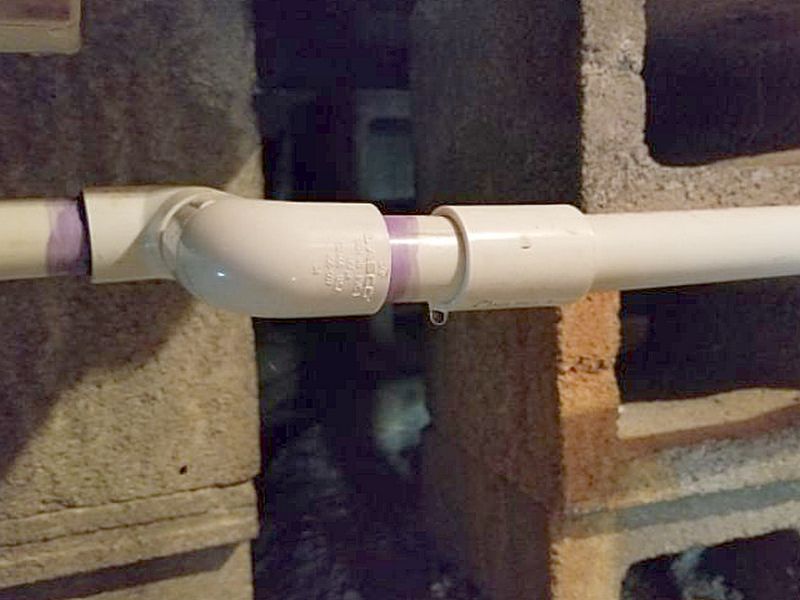
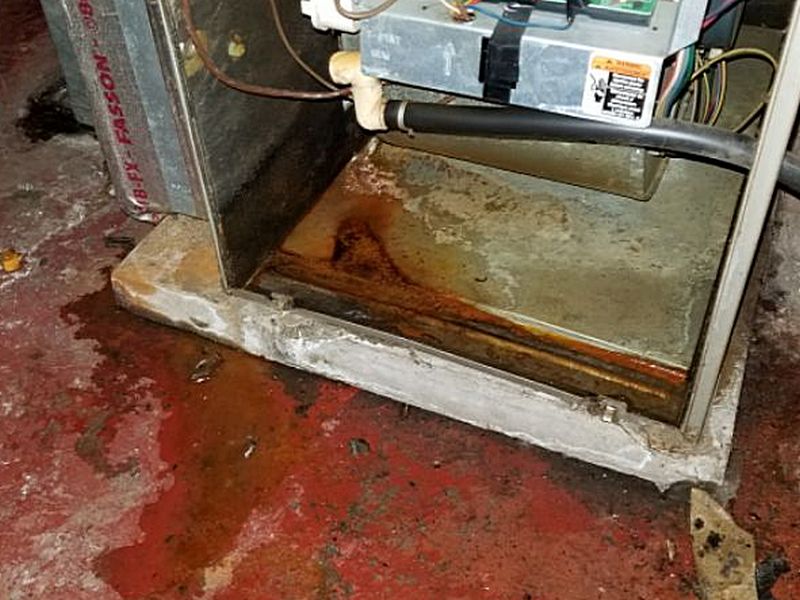
The condensate discharge line is blocked or clogged. This can cause water damage and allow mold or mildew problems. Clean the discharge line.



The overflow drain for the condensate system is not installed. There is water leaking from the overflow line. Hire an HVAC contractor for repairs as needed.

The condensate line does not have a trap installed. This will allow the loss of conditioned air, and can inhibit drainage. Hire an HVAC contractor for repairs as needed.
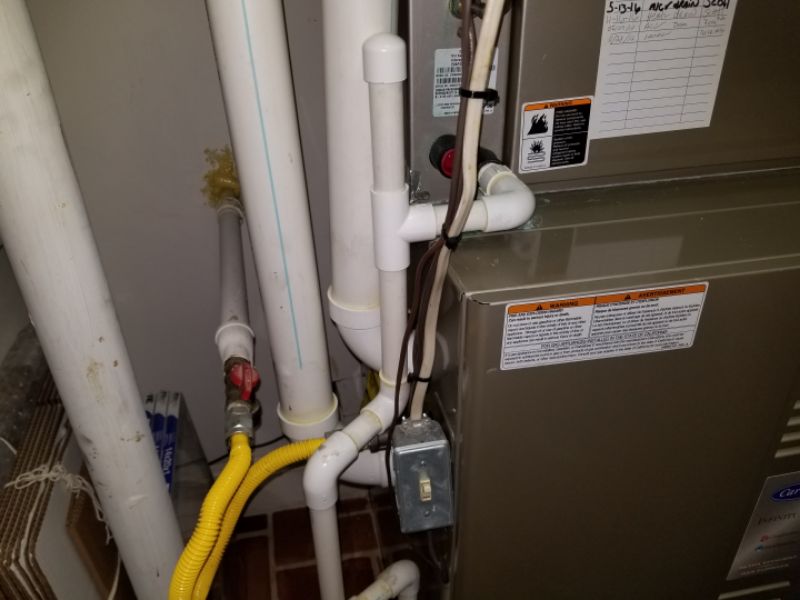
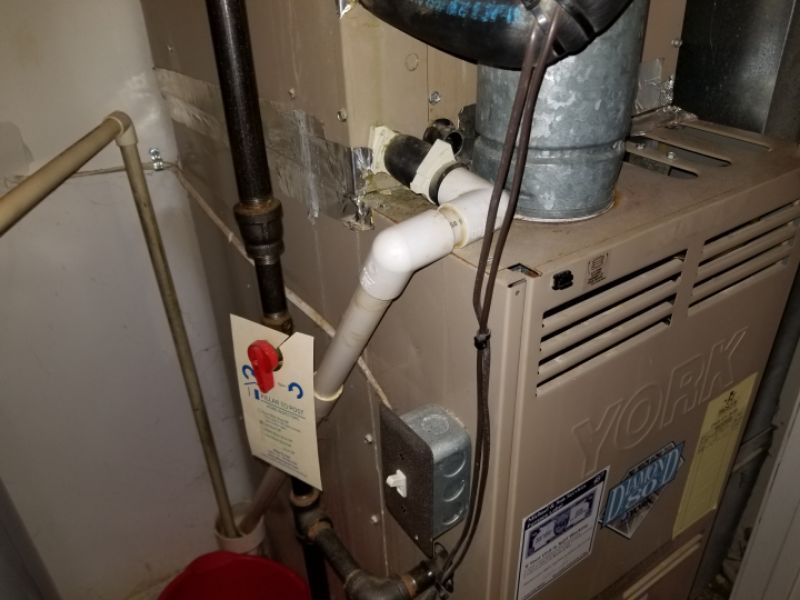
The condensate discharge point is not in a visible spot. A drainage failure can go unnoticed and allow water damage and mold or mildew problems. Redirect the discharge to a visible location.



The condensate system’s discharge point is improperly located. The condensate should be carried to the exterior and away from the building to prevent water damage and mold or mildew problems. Redirect the discharge away from the structure.



The condensate drain lines from the air handler and the catch pan are connected together. This defeats the purpose of the secondary pan, and may permit water damage and mold or mildew problems. Hire an HVAC contractor to install separate lines from each source to the exterior.



The condensate discharge line is connected to a plumbing vent stack. This is not permitted because septic gases can be drawn into the house air. Hire an HVAC technician to re-route the lines to discharge to the exterior.



There is debris in the condensate catch pan under the air handler. This can block the drain line and cause the pan to overflow. Remove the debris.

The condensate pan is not draining properly and is retaining water. This will encourage corrosion, possible mildew or mold growth, and may allow water damage. Hire an HVAC contractor to make the required repairs.


The condensate catch pan below the air handler is corroded. It is at or beyond its life span, and is a risk for leaks and water damage. Hire an HVAC contractor to make the required repairs.


The condensate catch pan is missing. A pan or a system float switch are required when an air handler is located over finished space. This protects the home from possible water damage. Hire an HVAC contractor to make the required repairs.


The condensate pan’s float switch wires are not connected. This safety device shuts off the system and/or sounds an alarm should the condensate water rise too high due to a drain failure. Hire an HVAC contractor to make the required repairs.

The condensate pump leaks. This can cause water damage and allow mold or mildew problems. Hire an HVAC contractor to repair or replace the pump.


The condensate pump is inoperative. This can cause water damage and allow mold or mildew problems. Hire an HVAC contractor to repair or replace the pump.



The condensate pump’s float switch is not connected, and will not shut the system down when tripped. This device provides a safeguard against water damage if the pump fails and fills with condensate. Hire an HVAC contractor to repair or replace the pump.



The condensate pump is installed in an unworkmanlike manner. It is unstable. This can allow pump and water damage. Hire an HVAC technician for repairs as needed.

Cooling System Limitation and Information Statements
Outside temperature too cold to operate cooling system, inspected visually: The outside temperature is too cold to operate the cooling system. Most manufacturers caution that running the AC when it is below 65ºF can damage the system. Therefore, the cooling system is only inspected visually.
Exterior components inaccessible, no operation/inspection: HVAC exterior components are inaccessible, which prevents inspection.
Air handler inaccessible, no operation/inspection: The air handler is inaccessible, which prevents operation and inspection.
Condensate pump empty, no operation/inspection: The condensate pump is empty, which prevents operation and inspection. A condensate pump is required to discharge water which cannot be discharged by gravity.
Cooling system may be subject to recall: The cooling system may be subject to a recall notice, which generally is issued because of safety concerns.
Sealed cover, no access to interior: The service access cover is sealed. Therefore, the inspection is limited.
Maintained by local association: Parts of the cooling system appear to be maintained by local association and, therefore, are not inspected.
Shared with other units, unable to determine responsibility for operation/maintenance: The cooling system appears to be shared with other units. Therefore, the inspector is unable to determine responsibility for operation and maintenance.
Pilot light off, no operation: The pilot light is off, which prevents system operation and limits the inspection.
Near/at end useful life, budget for replacement: The cooling system is near or at the end of its estimated useful life. We recommend establishing a budget to replace the cooling system.
Past end useful life, budget for replacement: The cooling system is past the end of its estimated useful life. We recommend establishing a budget to replace the cooling system.
Heat pump is compressor-based system for heating/cooling, refer to details on unit, heat pumps checked either mode depending on exterior temperature: A heat pump is a compressor-based HVAC system that provides both heating and cooling. Please refer to the appropriate Heating System for details on your unit. Heat pumps are only checked in either the heating or cooling mode, depending on the exterior temperature. This is done to prevent damage to the appliance.
Age is estimate, exact age not determined, data plate missing or no info: The age of the cooling system is an estimate. The exact age cannot be determined because the data plate is missing or does not provide the required information.
Interior/exterior units appear to be different ages, talk to owner/contractor to determine work performed: The interior and exterior HVAC units appear to be different ages. Determining which parts of the system have been upgraded is beyond the scope of this inspection. Consult with the owner or an HVAC contractor to determine what work has been performed.
System predates revised DOE efficiency standards. Older refrigerants becoming rare; high efficiency replacement may not be compatible with all components, budget accordingly: This system predates revised Department of Energy standards for efficiency. As manufacturers cease or curtail the older production lines, spare parts support and the now-obsolete refrigerant gases will likely be more expensive. If an extremely high efficiency replacement is desired, they may not be compatible with air handlers and duct systems designed for the older less efficient units.
Distribution
The applicable Codes require that “habitable spaces” have permanently-installed heating that can maintain a room at 68° F. 3′ above the floor and 2′ from exterior walls. Note that air conditioning is not required, and that bathrooms are not considered habitable space. This is where a difference between Home Inspectors and Code officials comes into focus. While there are complicated loopholes that may (or may not) make bathroom heat a necessity, we should be reporting to our clients when a bathroom is not heated, or when AC is poorly distributed.
In this component we will be looking at the distribution systems for conditioned air (ducts) and for hot water/steam (pipes). While there has been some evolution in distribution materials and methods, hydronic and steam heating remains fairly straightforward. However, the Code’s increased emphasis on energy concerns has affected forced air systems significantly, and for the better. In the past, the nominal leakage of conditioned air from the ducts was 25-30%. Now we expect properly sealed, correctly sized, insulated distribution. Overall system balance is needed. In colder climates, leaking ducts and over-pressurized rooms can lead to serious condensation and mold problems.
Inspect the visible ductwork for damage, separations, inadequate support, and missing or deteriorated insulation. All supply outlets should have adjustable registers, and returns have grills. When you are closing a room’s door with the system running, there should not be a strong breeze that pulls the door shut; this indicates an unbalanced distribution and over-pressurized spaces. Always take an opportunity to look into ducts when possible, especially floor ducts and returns. A large amount of dirt, including construction debris, toys, and water damage can be found. Remember: supply and returns are not permitted in garages, and returns must not be close to the combustion heating plant.
There is a finished area which is missing a permanent heat source. All finished and habitable spaces require a permanent heat source. Hire an HVAC contractor to evaluate the system and to make required repairs.
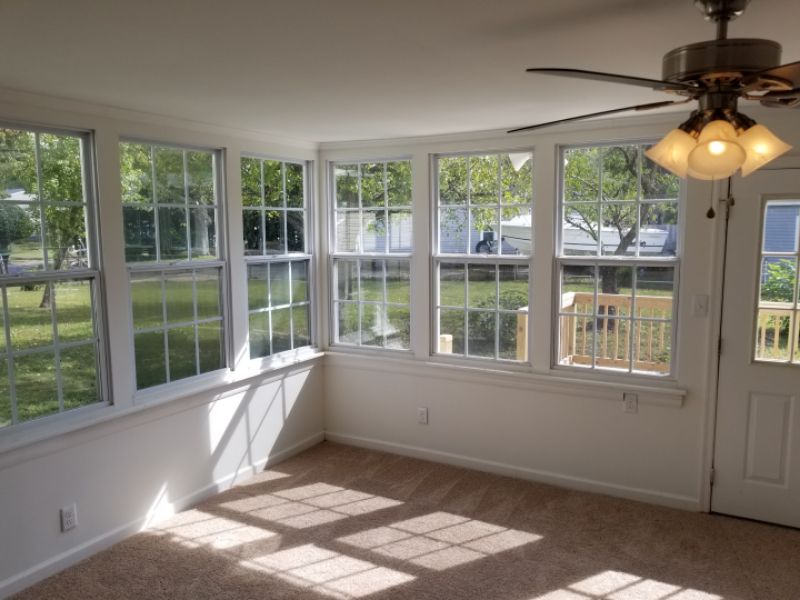
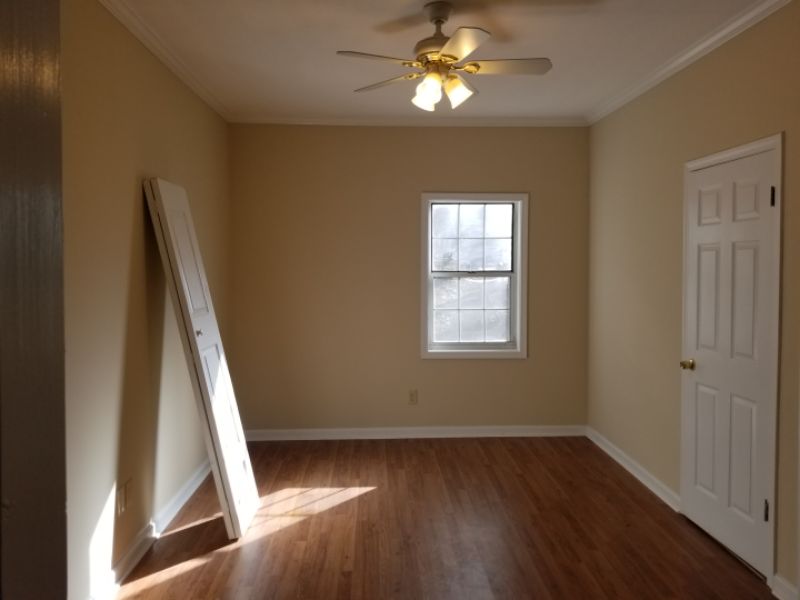
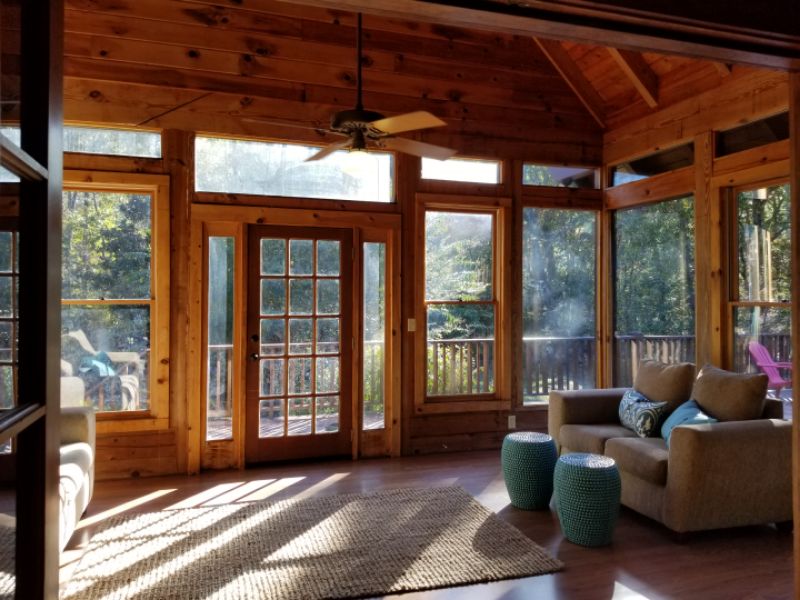
There are distribution registers in the garage. This is safety hazard that permits automobile exhaust fumes to be drawn into the system and enter the living area. Remove or permanently seal the registers.
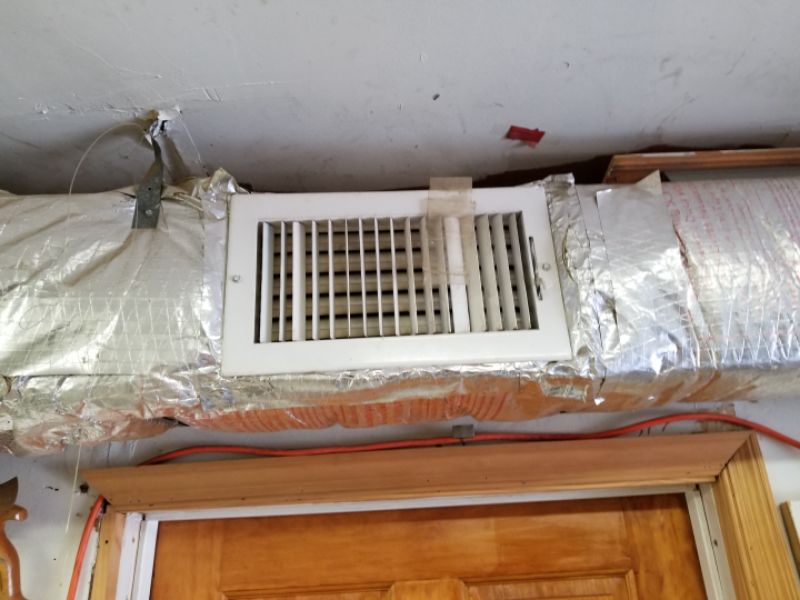
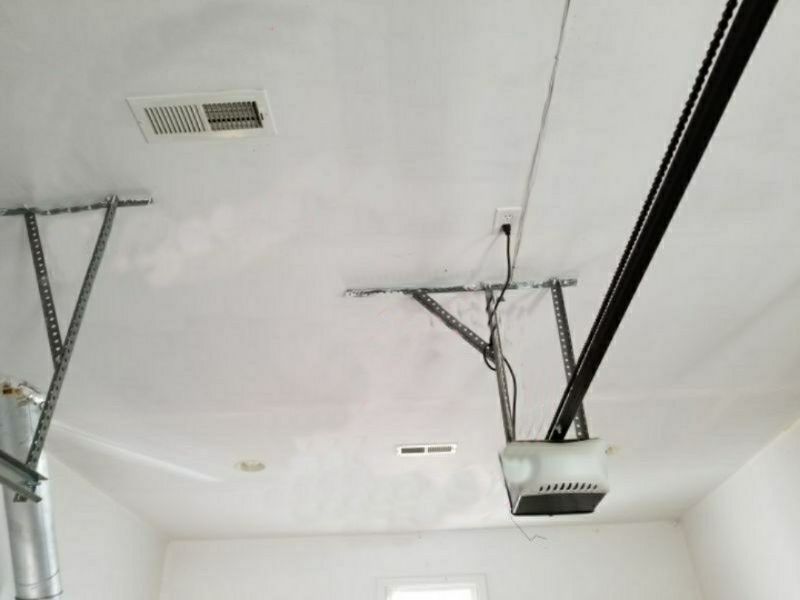
There is flexible (non fire rated) ductwork in the garage. In the case of a fire, there is no protection for the ducts entering the ceiling; fire could get into the living space above. This is a safety hazard. Hire an HVAC contractor to evaluate the system and to make required repairs.
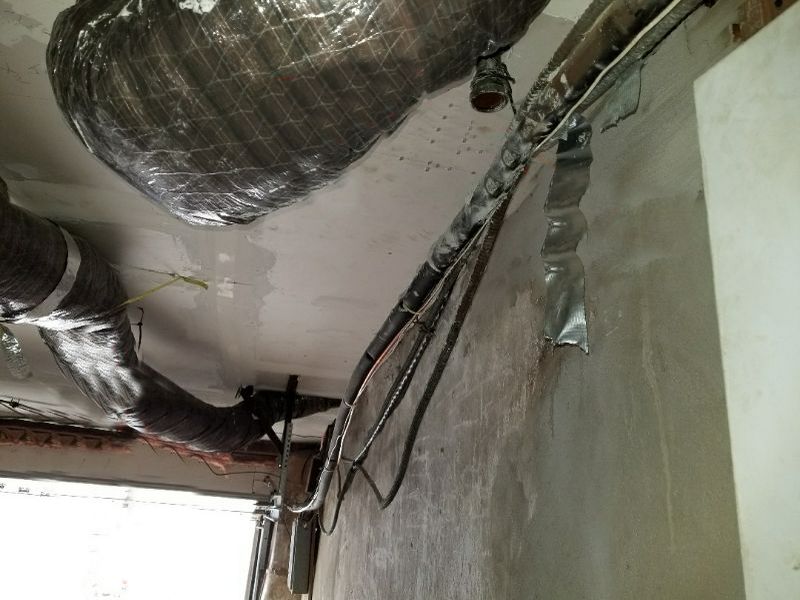
There are fuel lines or plumbing pipes installed through ductwork. This is unsafe in the event of a leak. Hire a plumber or HVAC contractor to make the required repairs.
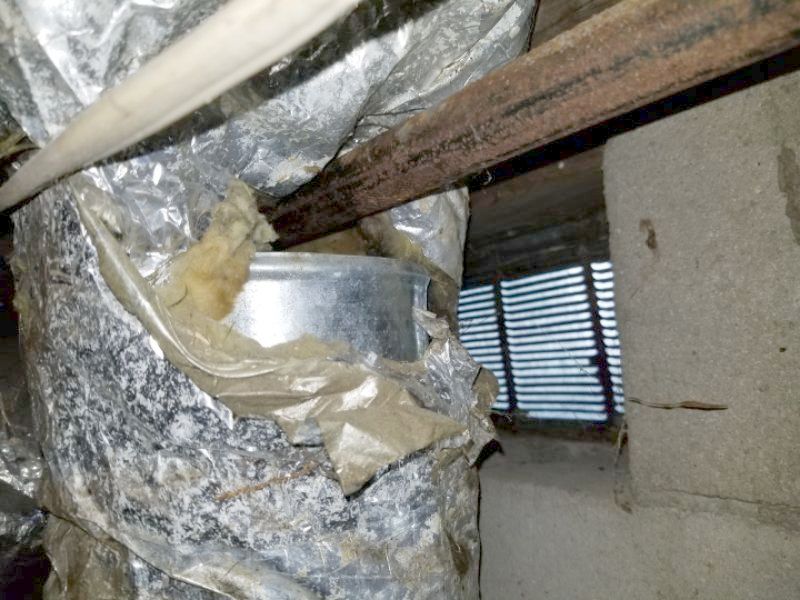
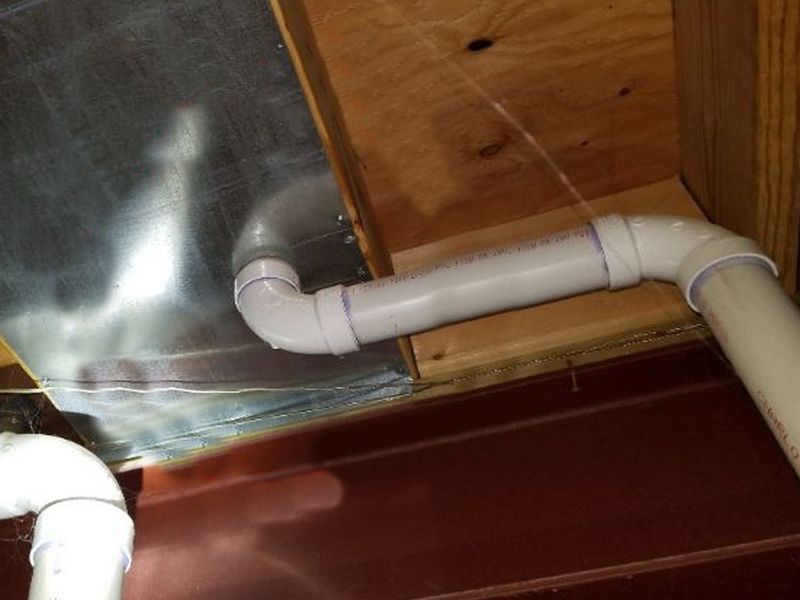
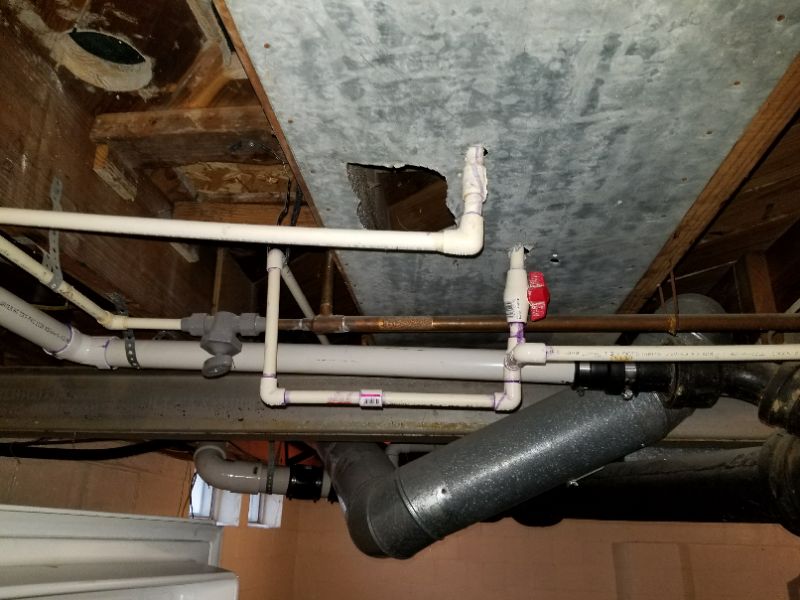
There is a return opening which is improperly located. A return cannot be too close to open combustion appliances due to the risk of back-drafting or causing combustion gases to enter the living area. Hire an HVAC contractor to relocate the return opening.
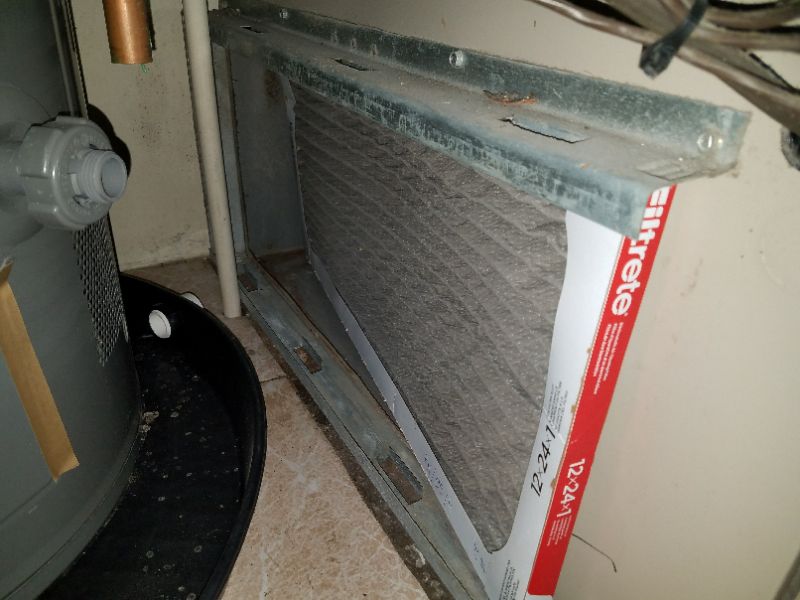
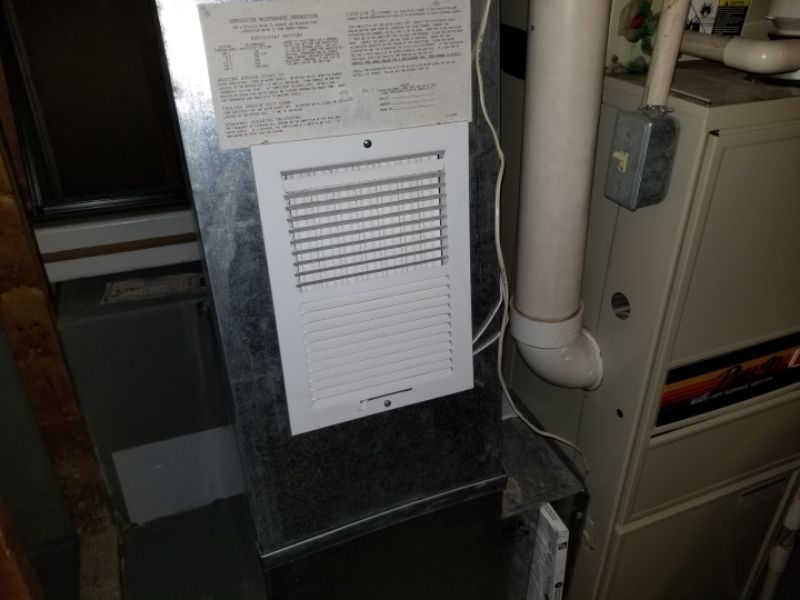
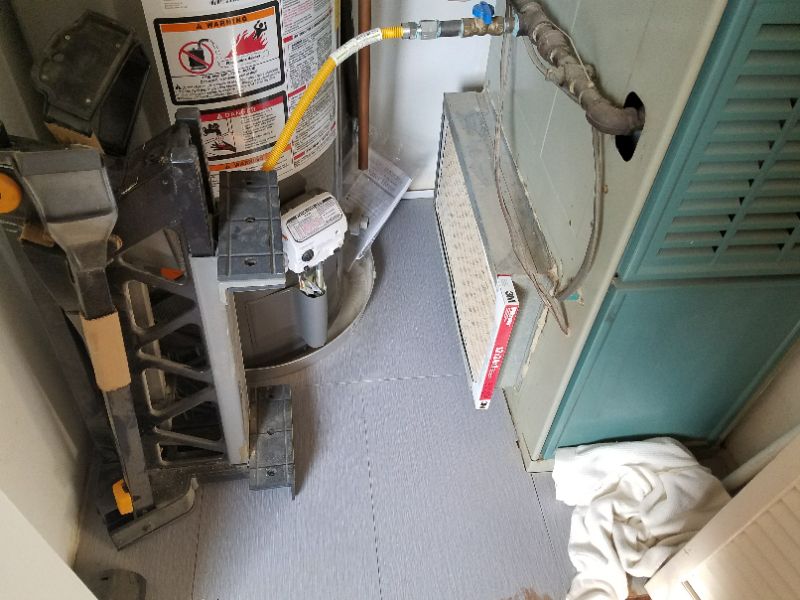
The ductwork is damaged This causes the loss of conditioned air. Hire an HVAC contractor to make the required repairs.
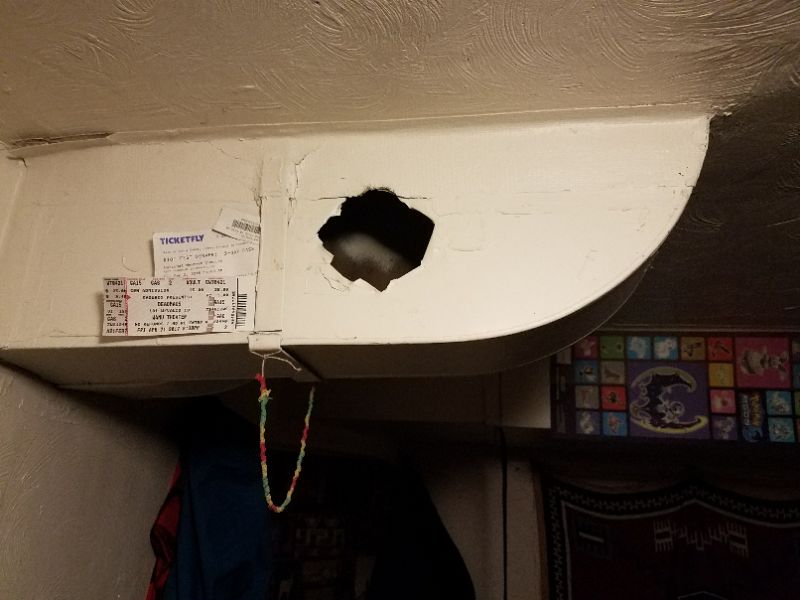
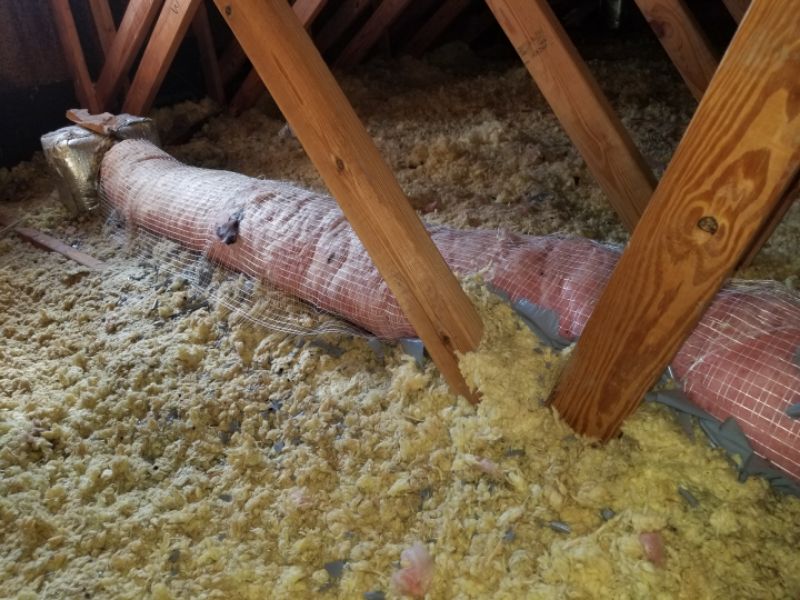
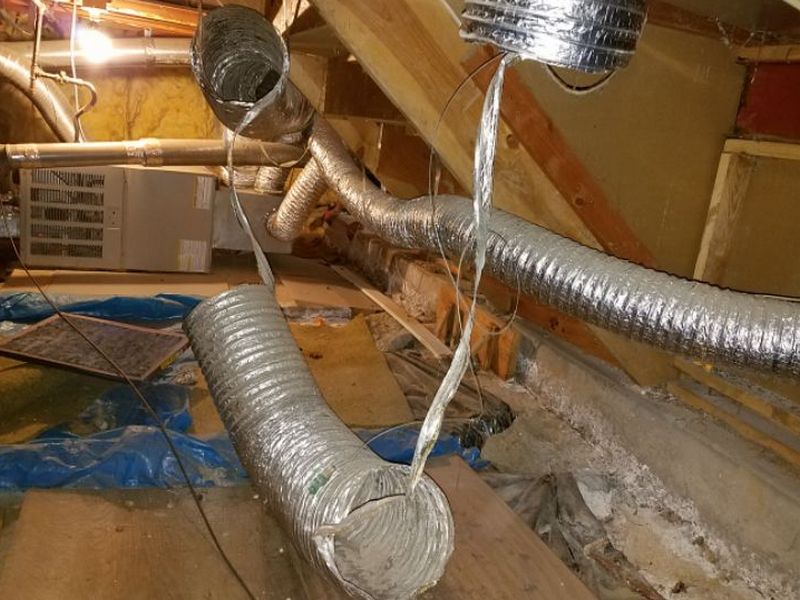
The ductwork is separated. This affects proper distribution and permits loss of conditioned air. Hire an HVAC contractor to make the required repairs.
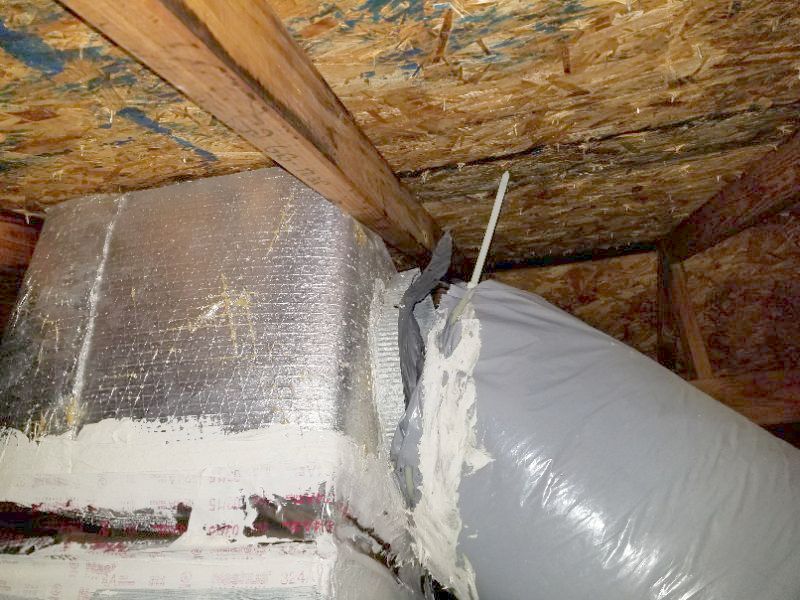
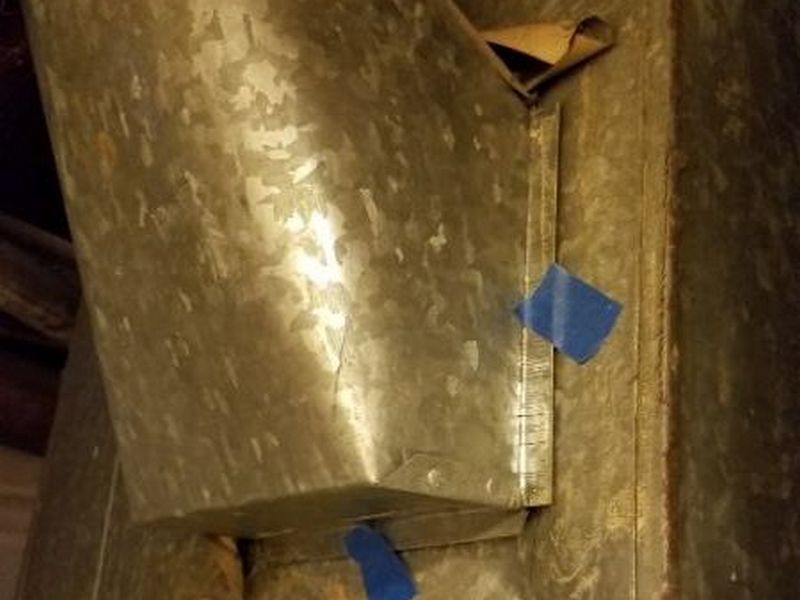
The ductwork insulation is missing or damaged. This reduces system efficiency and causes condensation problems. Hire an HVAC contractor to make the required repairs.
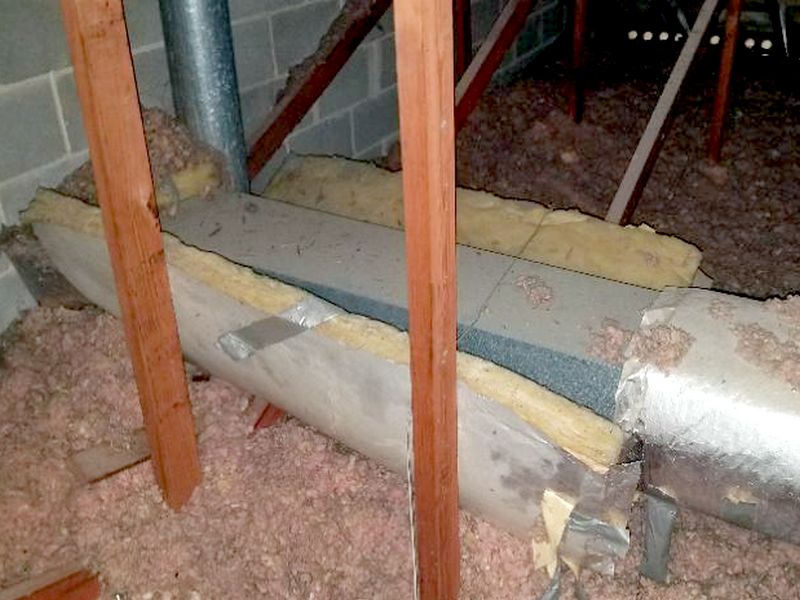
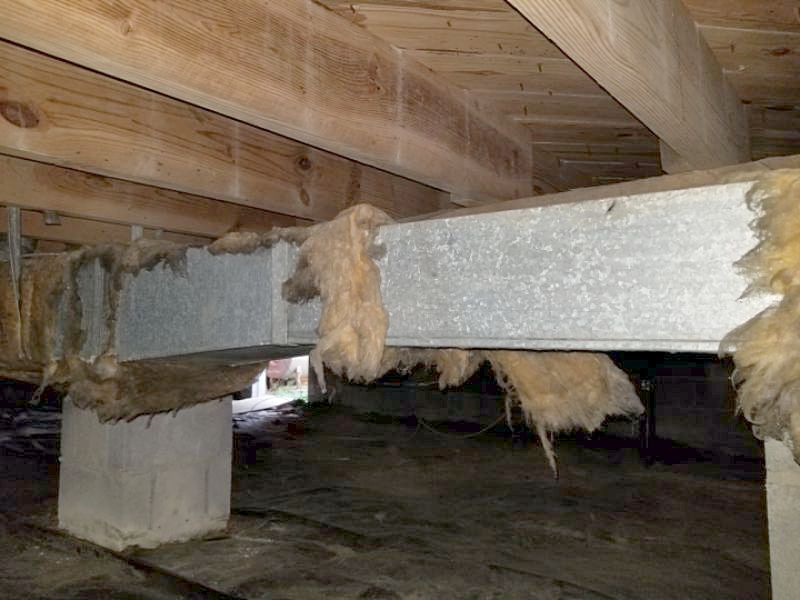
The ductwork is inadequately supported. This allows damage to the ducts and reduces airflow. Hire an HVAC contractor to make the required repairs.
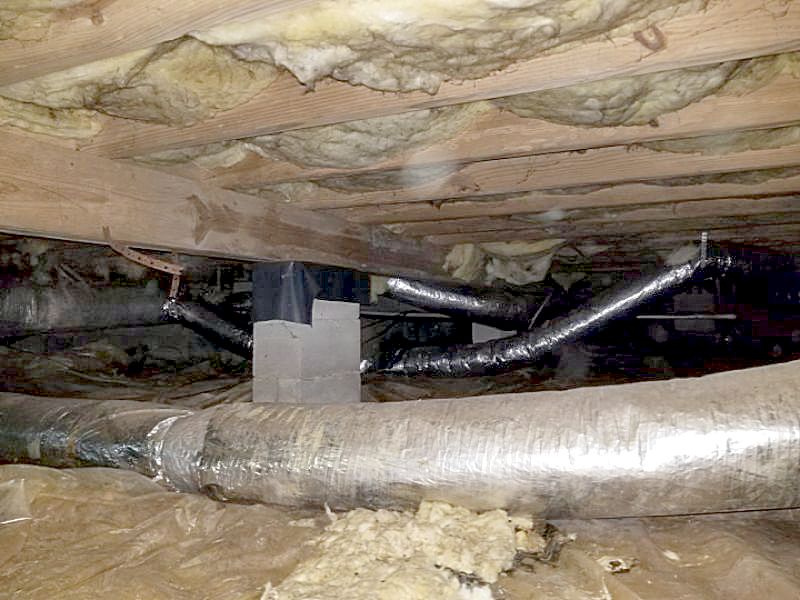
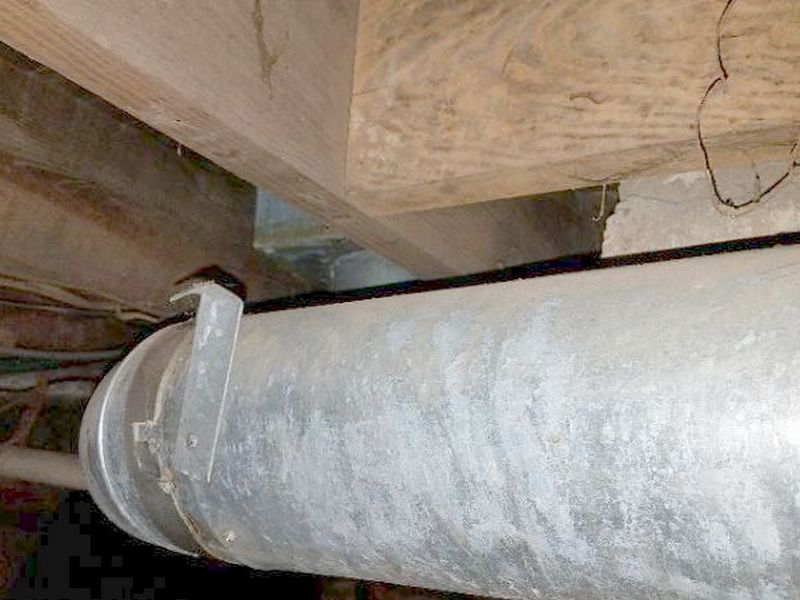
The ductwork system is very dirty. This affects efficiency and can be a health hazard. Hire an HVAC contractor to make the required repairs.
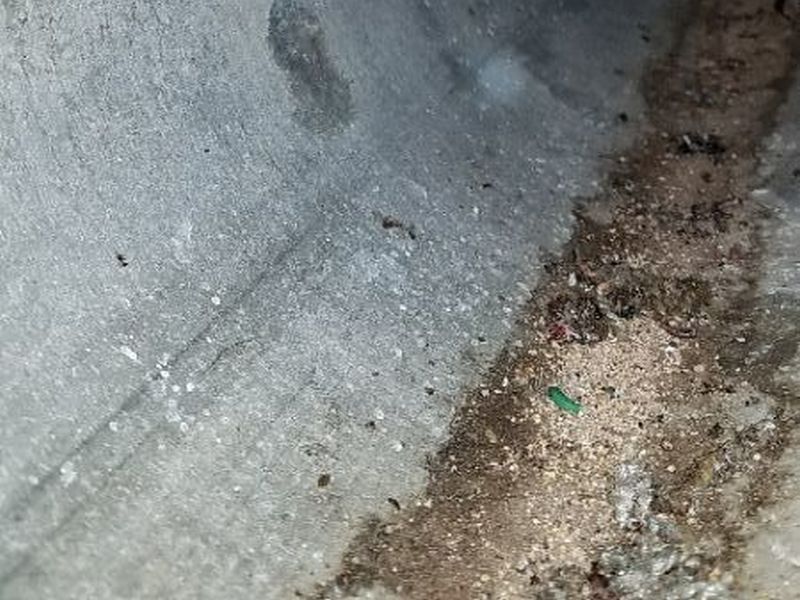
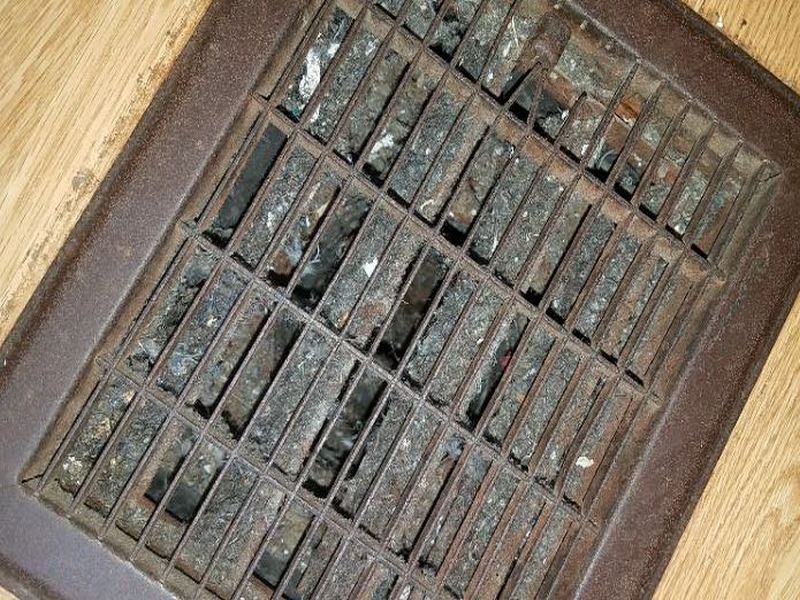
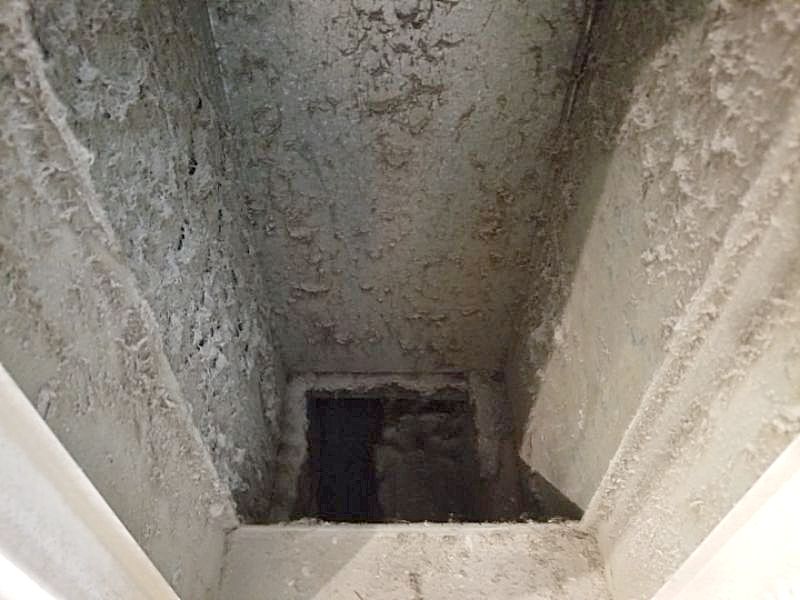
There are damaged or missing supply registers. The airflow cannot be properly controlled. Replace the registers.
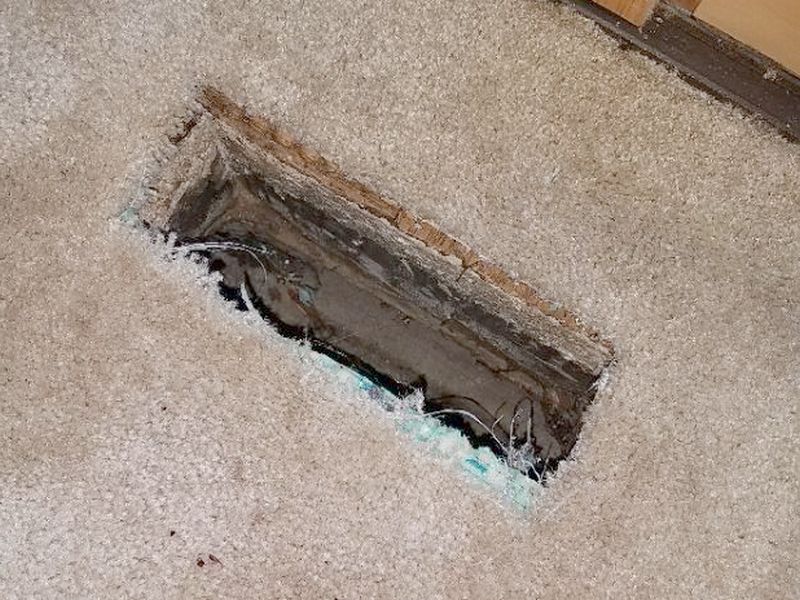
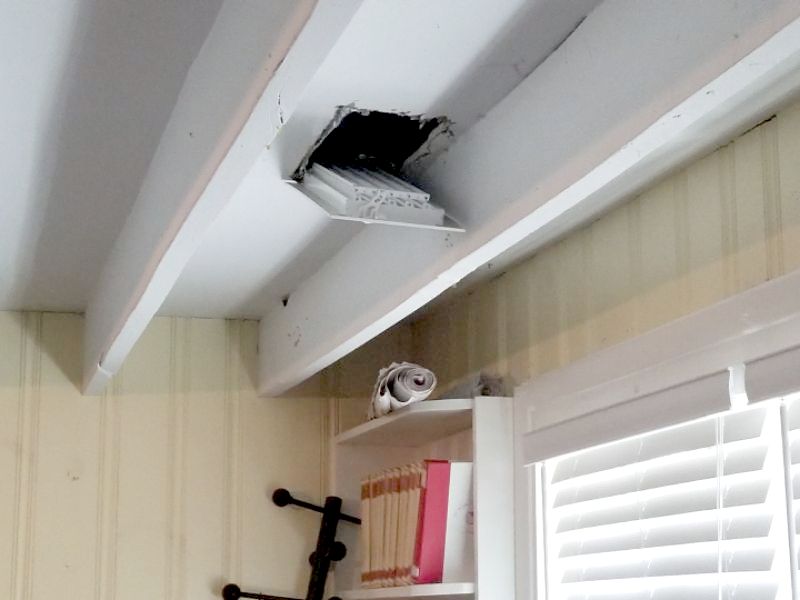
The HVAC air filter is dirty and is restricting the air flow. Replace the filter.
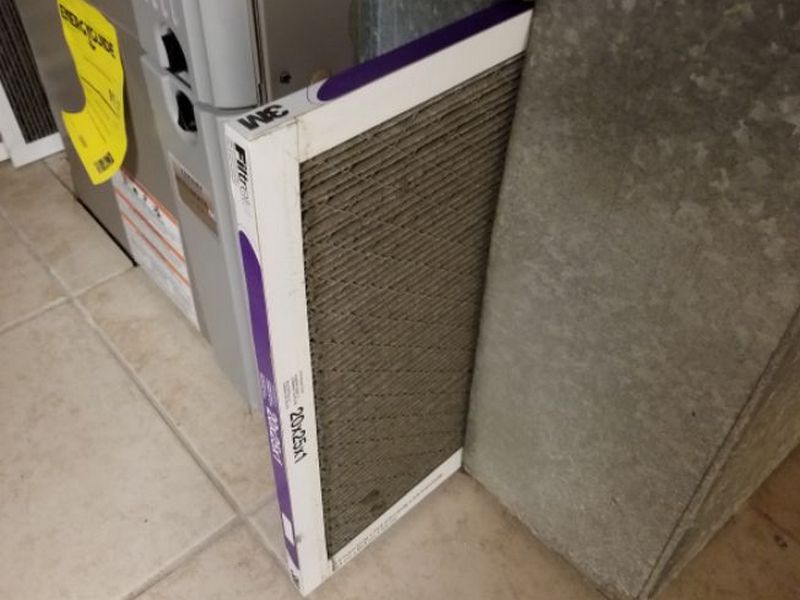
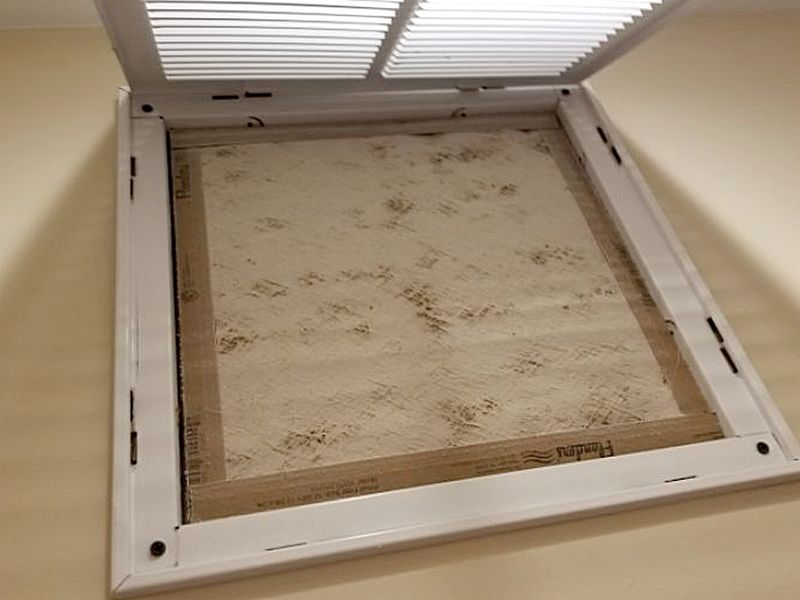
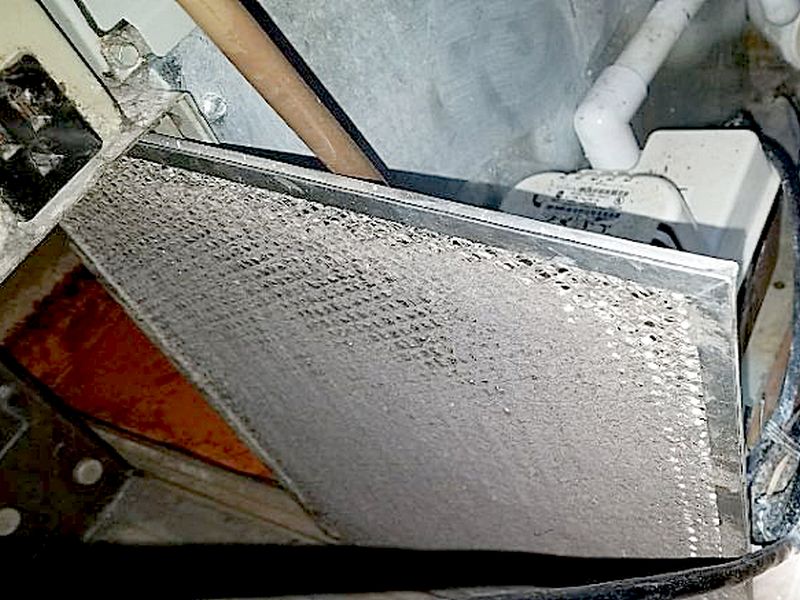
The HVAC system air filter is missing. This allows dirt to circulate through the house. It will also collect in the HVAC system and affect performance. Replace the filter.
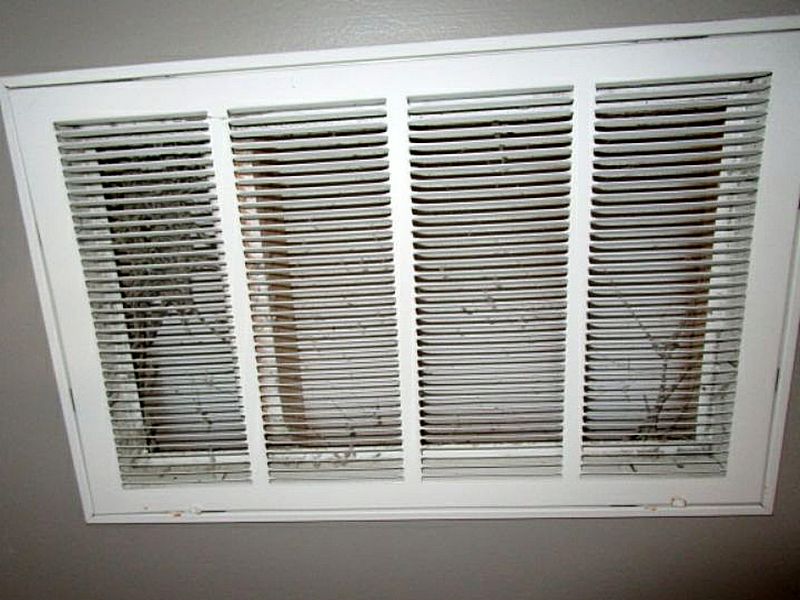
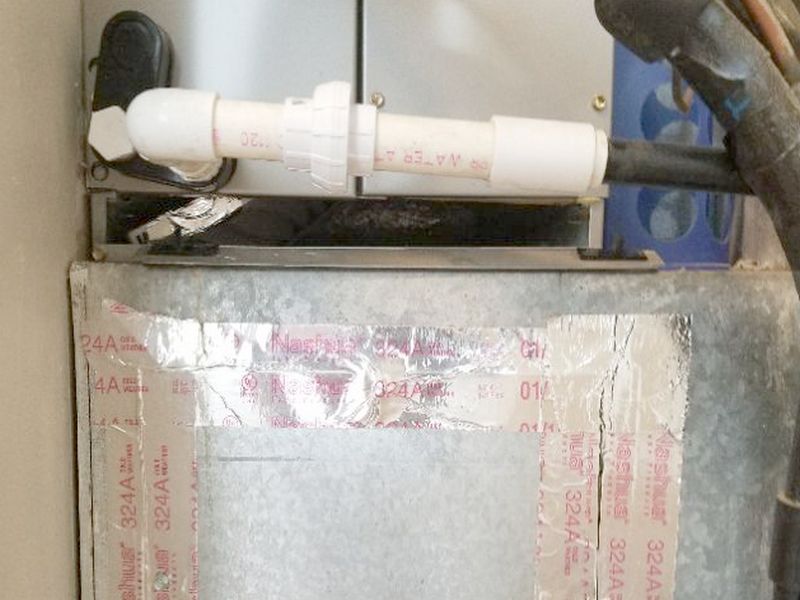
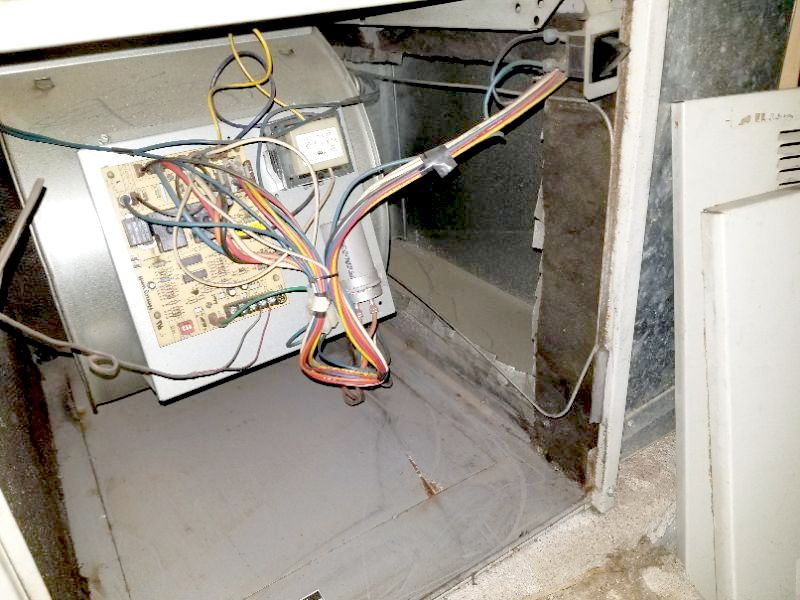
The HVAC air filter is collapsed. This allows unfiltered air to circulate through the system and may cause damage to the blower fan. Replace the filter.

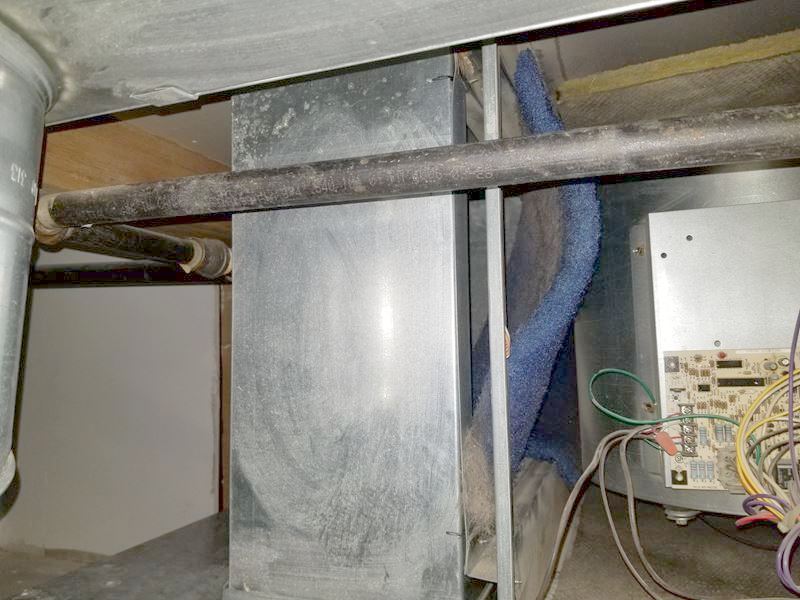
The HVAC air filter is the wrong size for the system. Some of the conditioned air is not being filtered. Install a properly-sized filter.
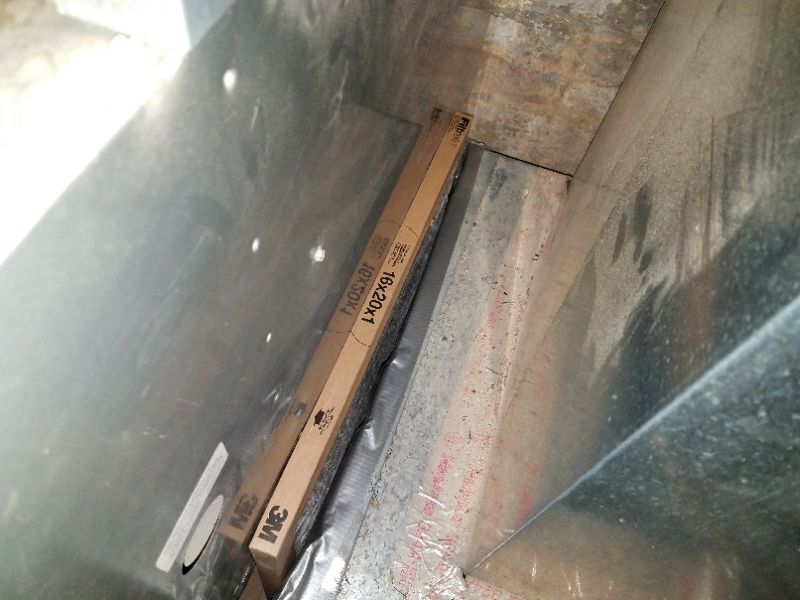
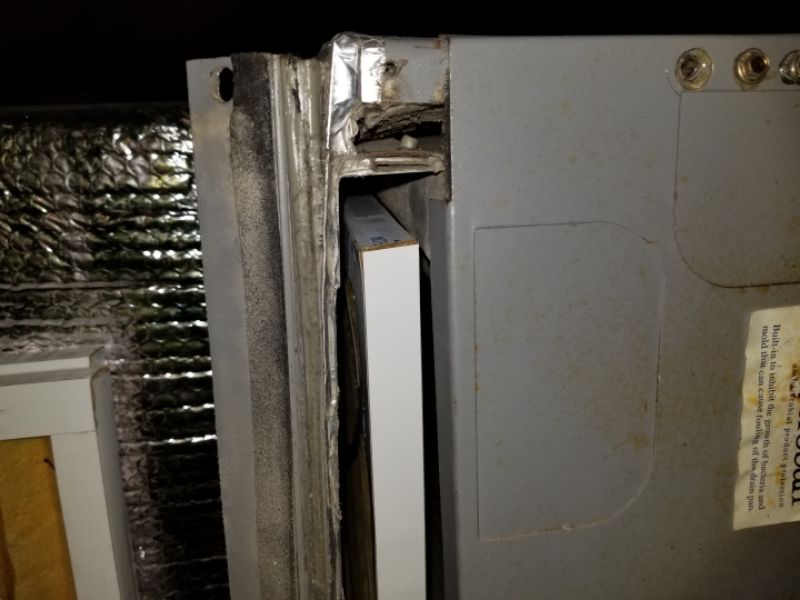
The HVAC air filter has been installed backwards. Air filters are designed to filter air in one direction only. A reversed filter will not filter the air correctly. Reverse the filter.

The HVAC air filter enclosure is not properly secured or sealed. This can affect efficiency, as well as filtering performance. Repair and seal the enclosure.
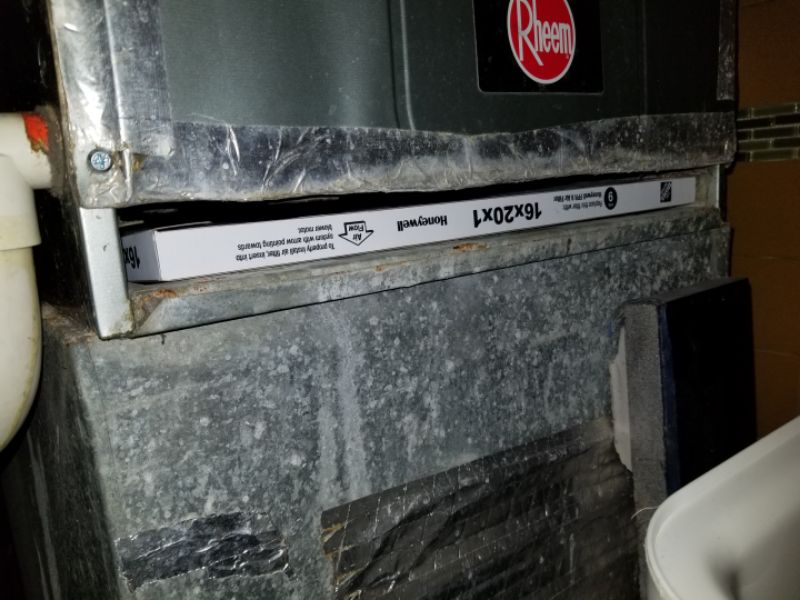
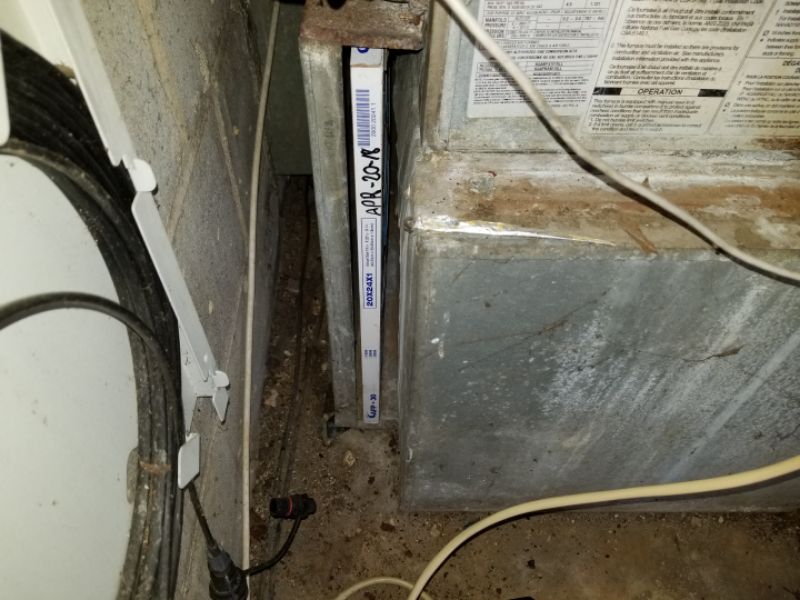
Many original hot water/steam distribution systems, often 100+ years old, are still in reliable service. The cast iron and threaded steel pipes do not deteriorate as do potable water lines. In a hydronic system, the water becomes “dead” after being in the pipes a while: it has very little free oxygen in it to contribute to the oxidation process. This is why it’s bad practice to drain down and refill the piping unless absolutely necessary. It just introduces fresh oxygen. The reliability exception is radiant floor heat using copper pipes in a concrete slab. These should be considered at or past the EUL. Modern hot water radiant distribution uses special PEX tubing with an oxygen barrier. These are installed under the wooden floors with reflective pans and insulation, or in lightweight gypsum or concrete.
Most of the inspection here is visual: looking for signs of leakage. Of course, we want to know that the radiators, baseboards, or floors are warming up satisfactorily. Use your Infrared camera! Nothing beats it for seeing radiant distribution.
There is evidence of leaking in the boiler system’s distribution pipes. The affects proper heating and can cause water damage. Hire an HVAC contractor for repairs as needed.
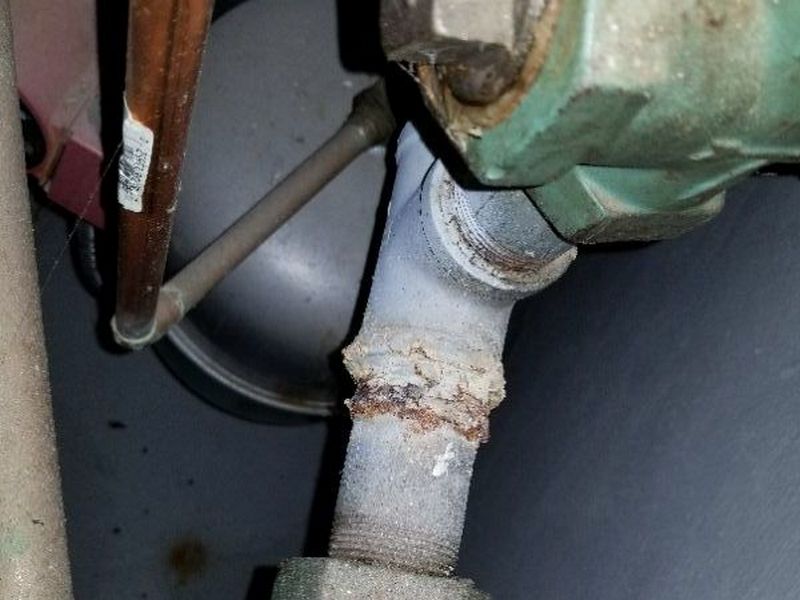
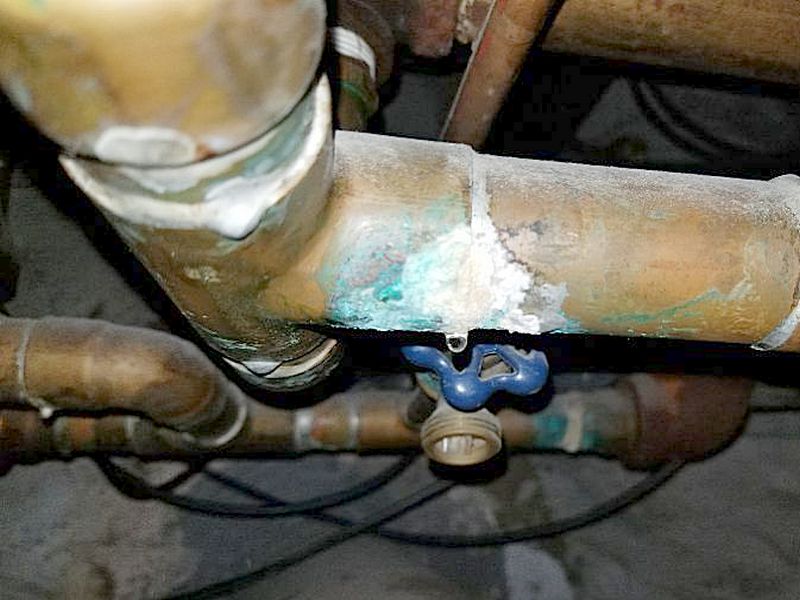
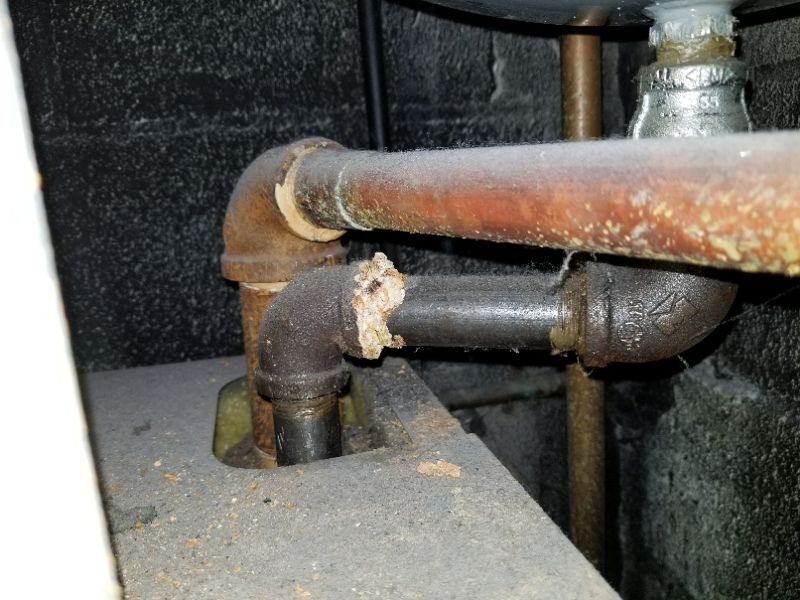
There is a radiator or baseboard which is not heating. This creates an unconditioned finished area. Hire an HVAC contractor to evaluate the system and to make required repairs.
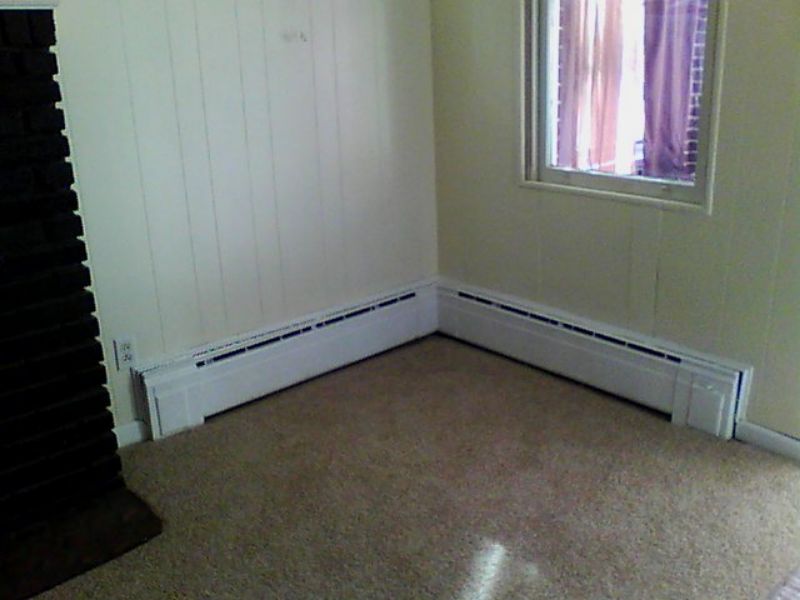
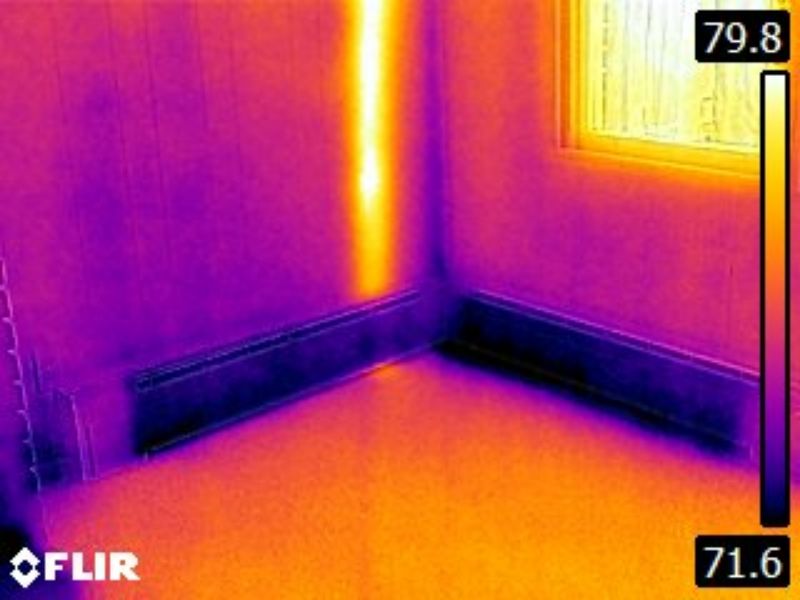
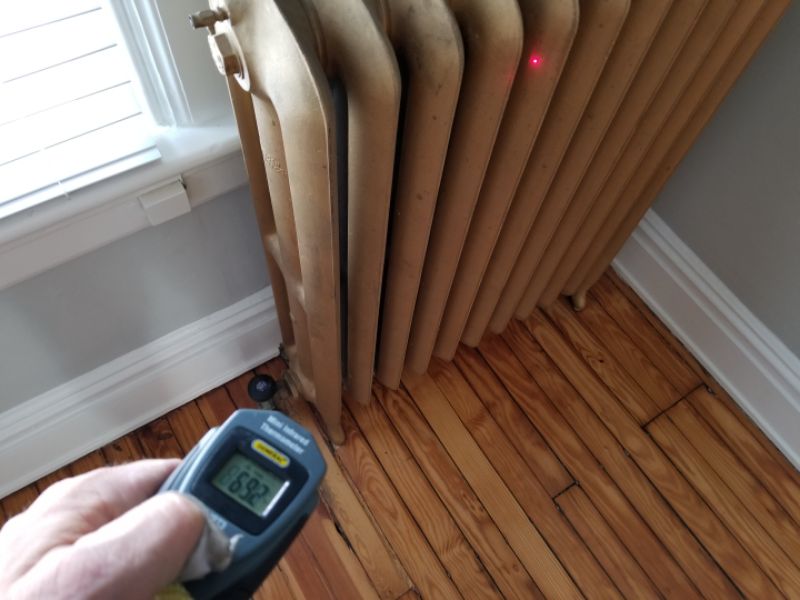
There is a leaking radiator. This will cause water damage. Hire an HVAC contractor to repair or replace the radiator.
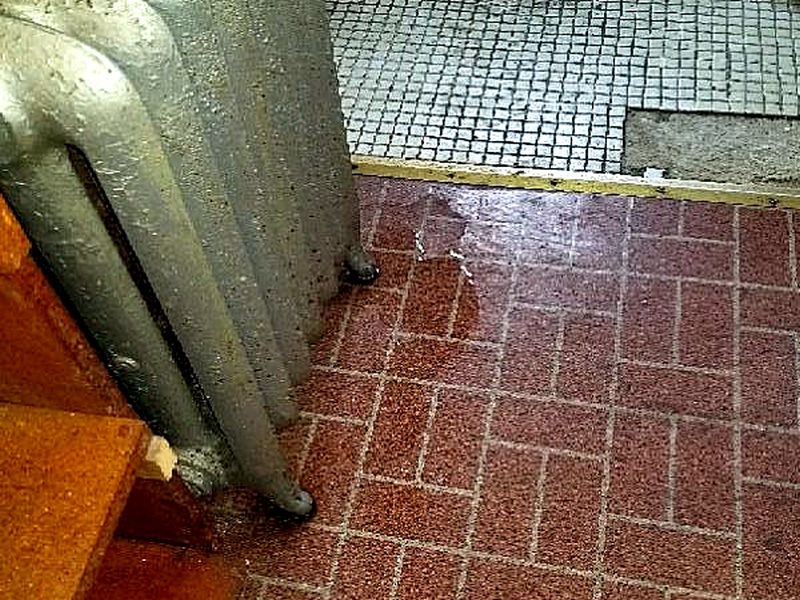
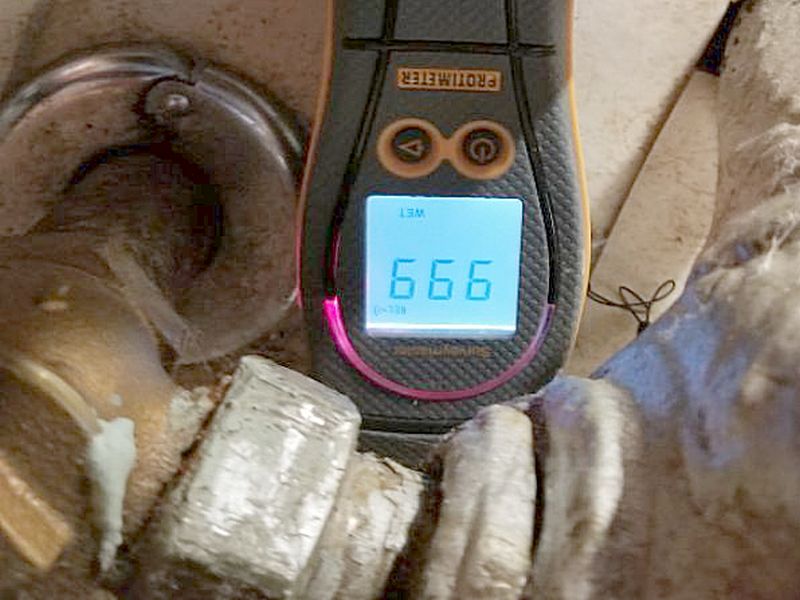
There are unstable radiators. This is a safety hazard and can cause leaks. Hire an HVAC contractor to secure the radiator.
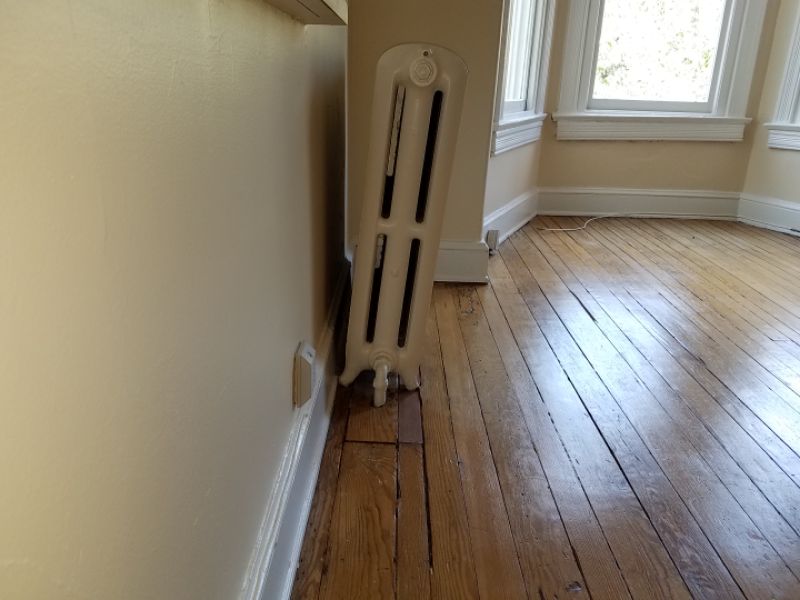
Distribution Limitation and Information Statements
One HVAC system, multi-zone with separate thermostats and zone dampers: There is one HVAC system but it is a “multi-zone” system, i.e., different zones are created via electronically-controlled dampers or “doors” installed within the ducts. Separate thermostats turn on the HVAC system. The zone dampers also respond to the thermostats, opening and closing according to which thermostat requests heat or air conditioning.
One-zone system, only one set of ducts and one circulator fan for the entire house, not unusual, may require seasonal balancing: The HVAC system a “one-zone” system, i.e., there is only one set of ducts and one circulator fan for the entire house. This is not unusual and tends to work well in most installations. However seasonal “balancing” is sometimes required to provide even temperatures throughout the house, which can be completed by an HVAC contractor during regular servicing.
Only one air return, one return per floor is recommended, consider hiring HVAC contractor to install one/more additional returns: There is only one air return for the HVAC system. However, one return per floor is recommended. Consider hiring an HVAC contractor to install one or more additional returns, which may improve air distribution through the house.
HVAC return flows through closet, do not restrict air passage with stored items in the closet: The HVAC return flows through the closet. Do not restrict air passage with stored items in the closet.
Not all rooms have dedicated vents, not uncommon when HVAC system added to an older home: Not all of the rooms have dedicated vents. This is not uncommon when an HVAC system is added to an older home.
HVAC system includes electronic air filter(s), regular maintenance required: The HVAC system includes electronic air filter(s). These highly efficient systems remove up to 98% of all particles in the air, including dander and pollen. High voltage wires charge the pollutants, which then attach to an oppositely-charged collector plate. Regular maintenance is needed, and the manufacturer’s guidelines should be followed. Cleaning can usually be done with a hose or in a dishwasher.
Humidifier
For most climates, furnace-mounted whole house humidifiers manage the relative humidity levels in a home during the Winter. Most guidance states that a comfortable and healthy humidity is between 30 – 60%. While a properly maintained and adjusted humidifier can be beneficial, neglect and misuse can create serious indoor air quality issue rapidly. As inspectors, we are evaluating the apparent condition of the appliance. We also need to connect any dots to other problems that issues may be implying.
Cleanliness is paramount. Reservoir humidifiers have a basin of standing water which can be prone to mold growth. They must be serviced regularly. Drip or flow-through models are less problematic, but both types have media that must be kept free of mineral deposits to work effectively. Inspect for contamination in the water and the humidifier, and for scale buildup. Leaks are an obvious concern. They can damage the HVAC equipment and the surroundings. A leak into the air stream can cause serious health problems.
The humidifier is inoperative. This affects proper function. Hire an HVAC contractor to make the required repairs.
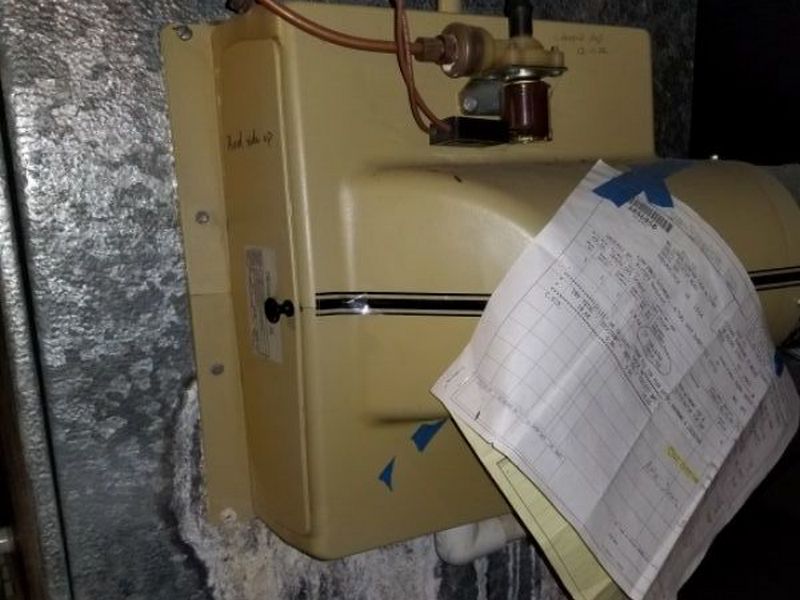
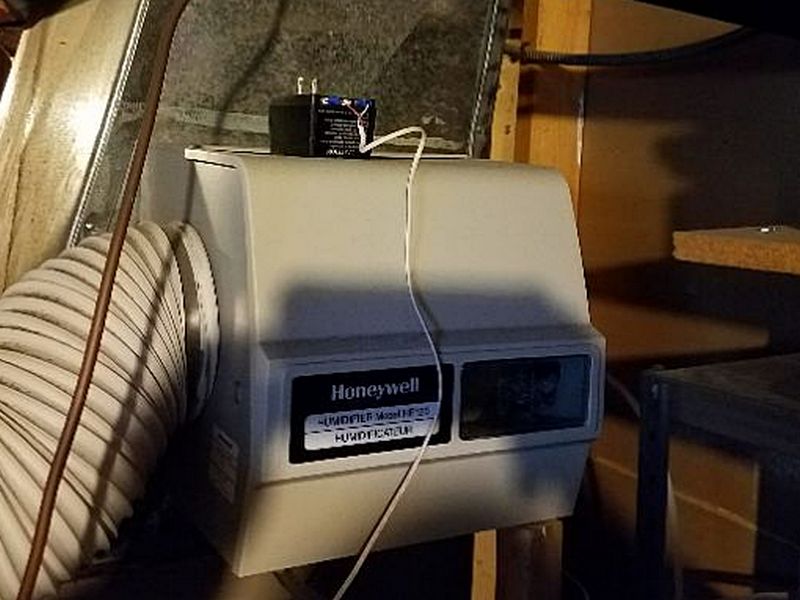
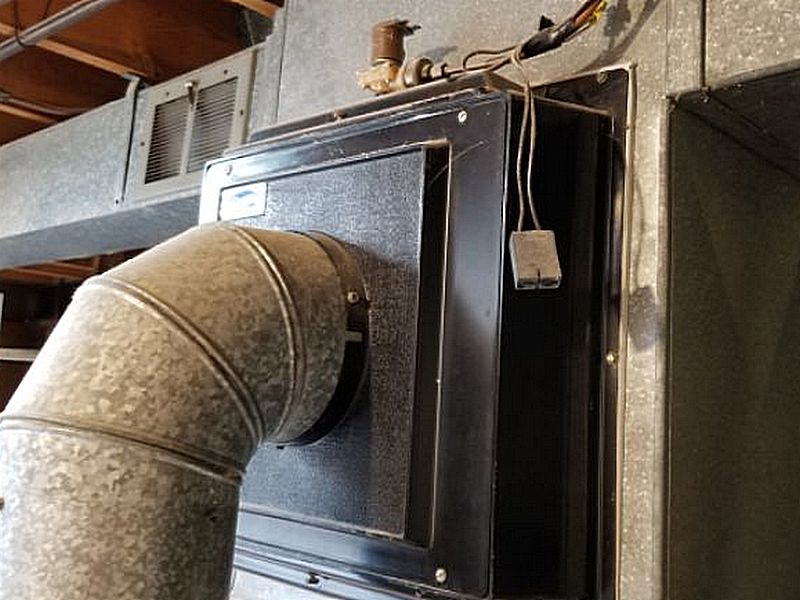
The humidifier is leaking. This is a potential health hazard. Hire an HVAC contractor to make the required repairs.
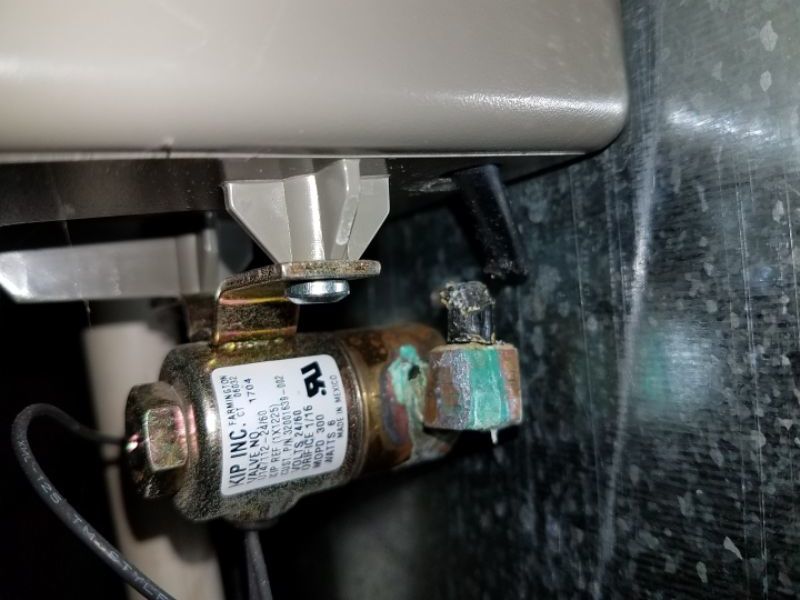
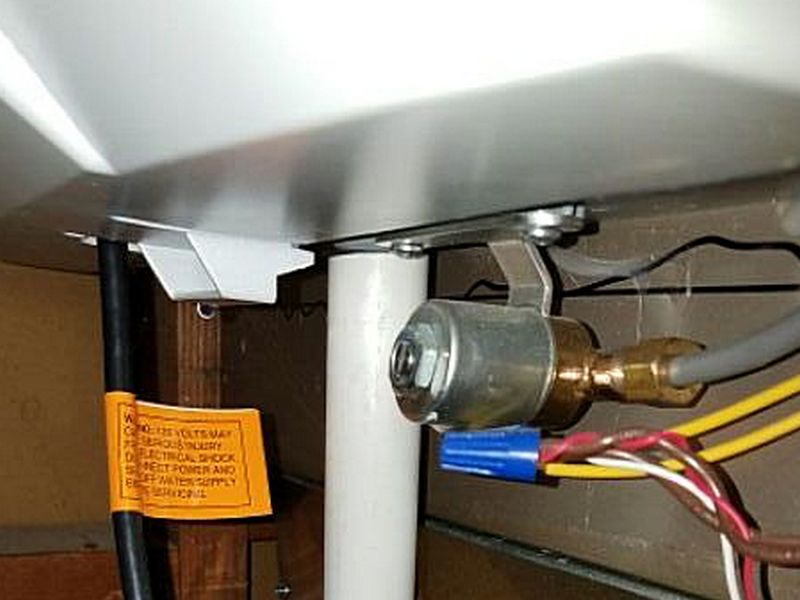
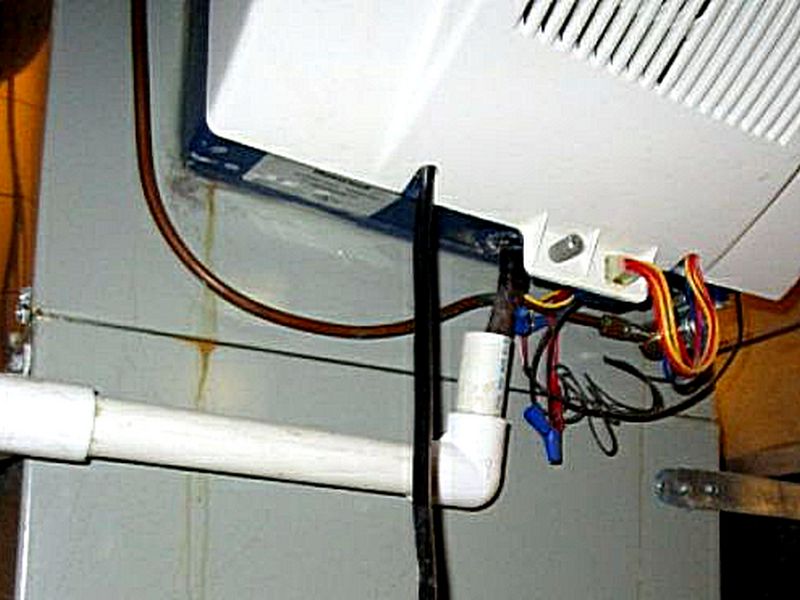
The humidifier is contaminated with biological build-up. This is a potential health issue. Contamination can be circulated into the home through the air distribution system. Hire an HVAC contractor to make the required repairs.
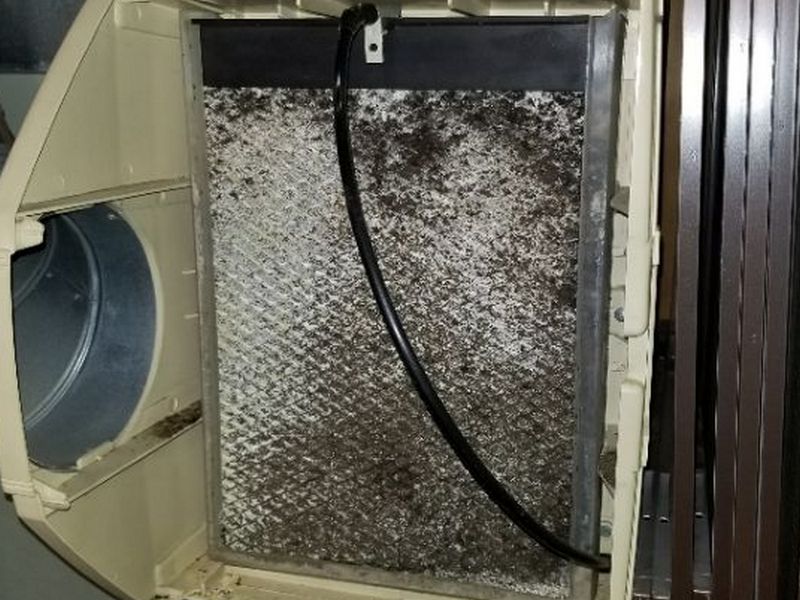
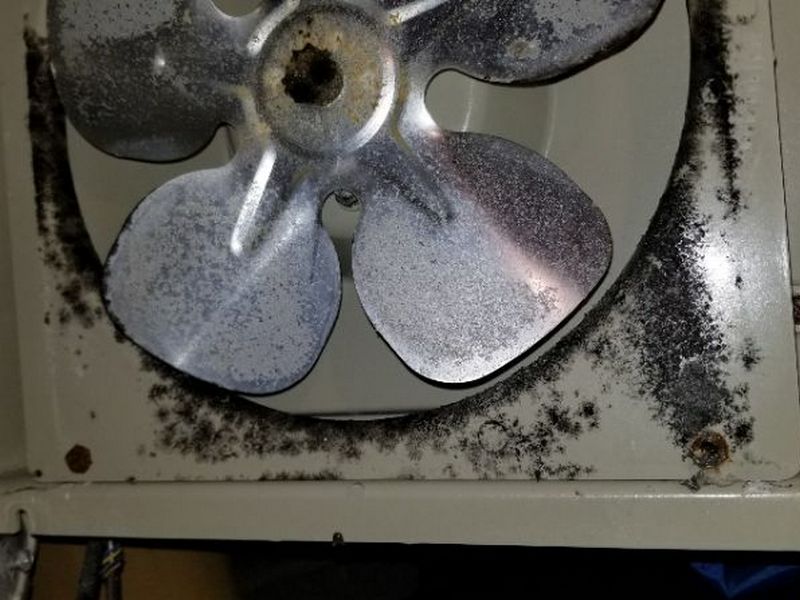
The humidifier’s drum pad is clogged with mineral deposits. This reduces the efficiency of the humidifier. Hire an HVAC contractor to make the required repairs.
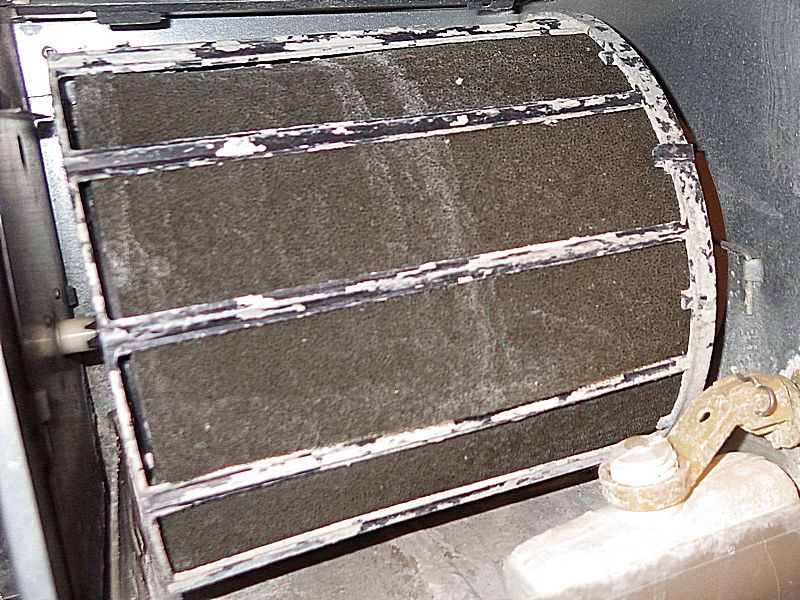
The humidifier’s metal mesh is clogged with mineral deposits. This reduces the efficiency of the humidifier. Hire an HVAC contractor to make the required repairs.


The humidifier is corroded. This indicates a failing and unreliable system. Hire an HVAC contractor to make the required repairs.
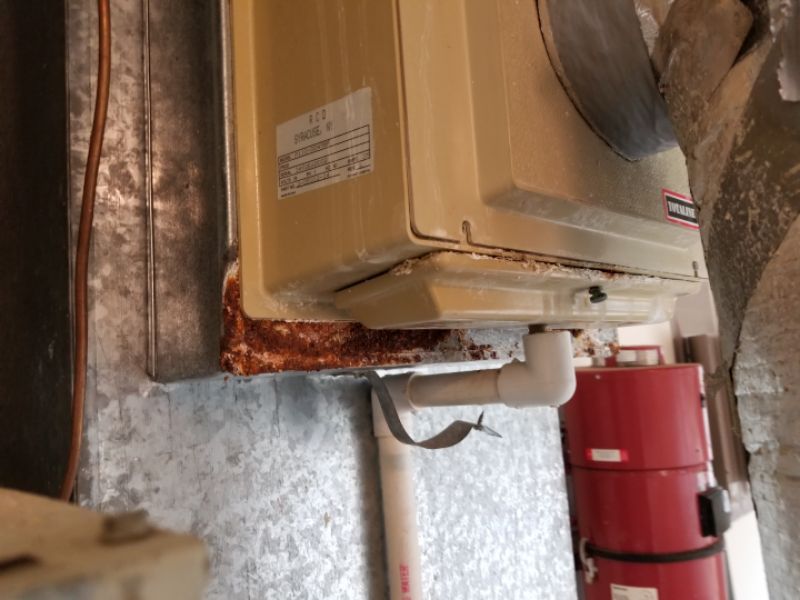
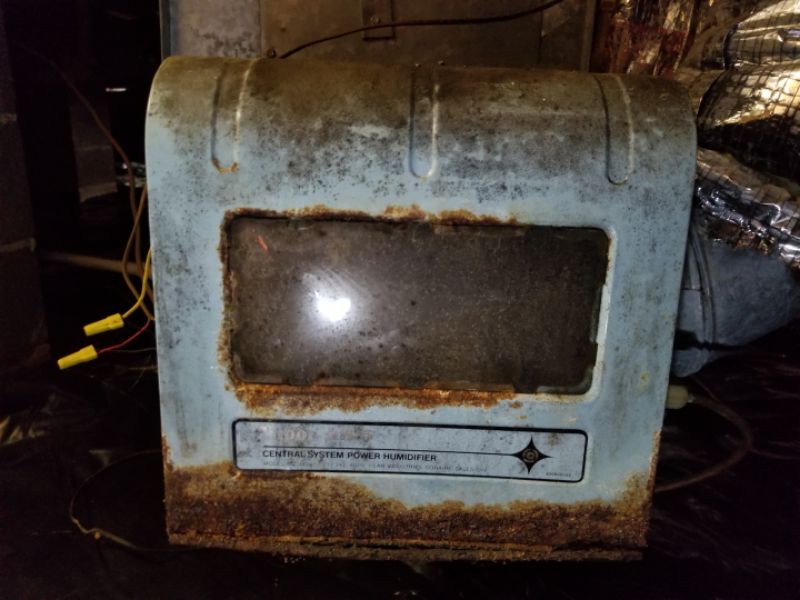
The humidifier is installed over the furnace heat exchanger. In this location, a leaking humidifier can damage the furnace. Hire an HVAC contractor to make the required repairs.
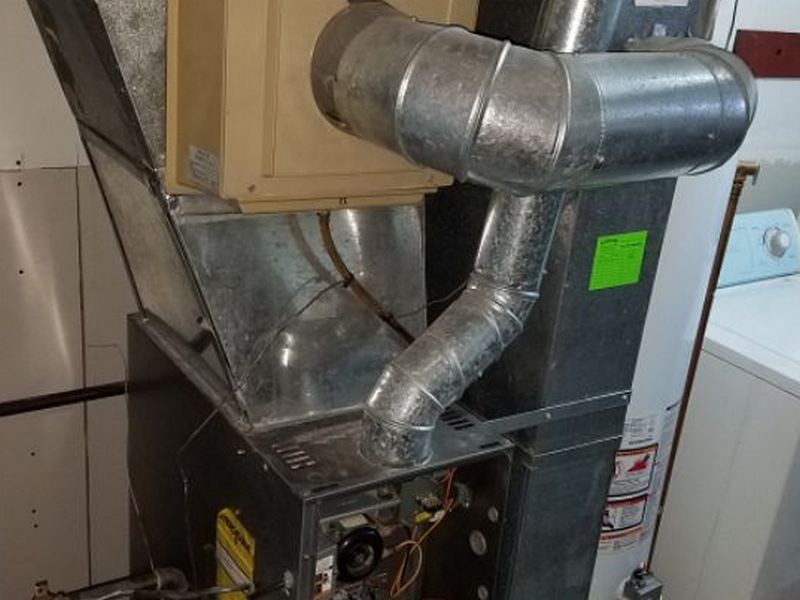
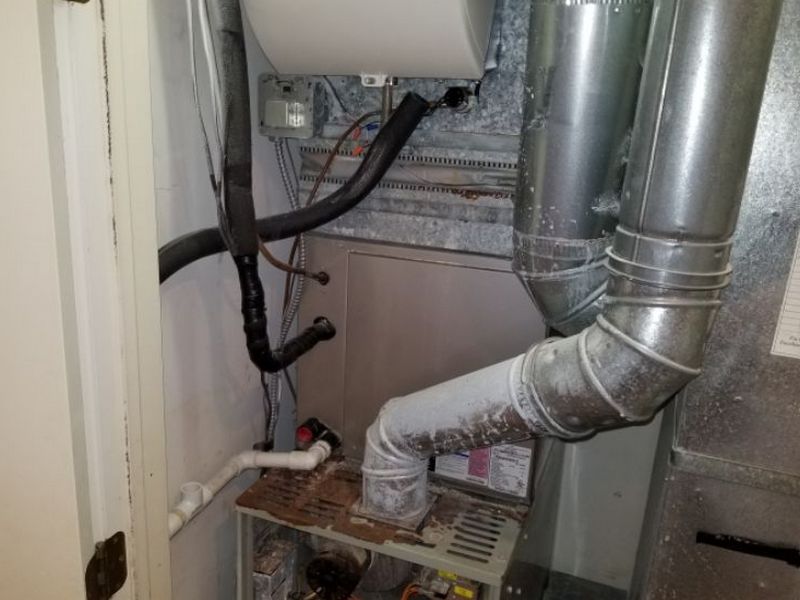
Humidifier Limitation and Information Statements
Water service off, visual inspection: Water service for the humidifier is not turned on; we do not operate shut-off valves. Therefore, portions of the humidifier which require water for operation are visually inspected only.
Air handler inaccessible, no operation/inspection: The air handler is inaccessible, which prevents operation and inspection.
Maintained by local association: The humidifier appears to be maintained by local association and, therefore, is not inspected.
Shared with other units, unable to determine responsibility for operation/maintenance: The humidifier appears to be shared with other units. Therefore, the inspector is unable to determine responsibility for operation and maintenance.
Sealed cover, no access to interior: The service access cover is sealed. Therefore, the inspection is limited.
Condensate pump empty, no operation/inspection: The condensate pump is empty, which prevents operation and inspection. A condensate pump is required to discharge water which cannot be discharged by gravity.
Near/at end useful life, budget for replacement: The humidifier is near or at the end of its useful life. We recommend establishing a budget to replace the humidifier.
Past end useful life, budget for replacement: The humidifier is past the end of its useful life. We recommend establishing a budget to replace the humidifier.
Humidifier installed over furnace heat exchanger, leaking humidifier can damage furnace, consider relocation: The humidifier is installed over the furnace heat exchanger. In this location, a leaking humidifier can damage the furnace. Consider relocating the humidifier.
Thermostat
For a majority of homeowners, the thermostat is the sole point of interaction with their home’s HVAC system. It is the primary outward-facing control. Some of our clients don’t even use them; they rely on on the regular service call and leave it to the technician. These once simple devices have evolved to become highly sophisticated members of the “internet of things.” Some can be controlled remotely from anywhere, and may be just one sensor point in a smart home.
Our inspection of the thermostats is relatively limited. We do not test or confirm programmable or internet-accessible features. We ensure that the location is reasonable. Thermostats should be centrally located within the conditioned area and, for forced air systems, near the return. This is where the most accurate reading can be made of the unconditioned air. They shouldn’t be on exterior walls, near windows or exterior doors, behind doors likely to remain open, or subject to drafts or direct sunlight. Mercury bulb units must be level, All thermostats should be securely mounted at average eye height.
The thermostat is inoperative. This affect proper system function. Hire an HVAC contractor to make the required repairs.
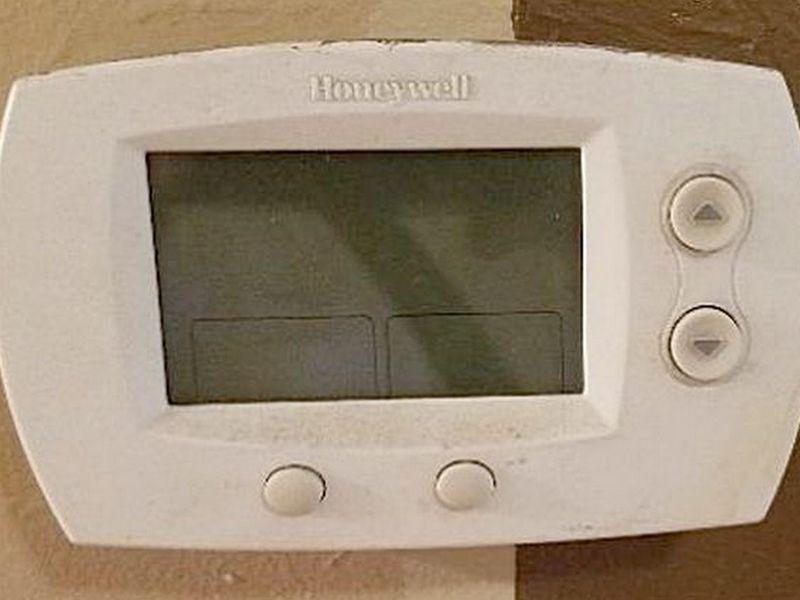
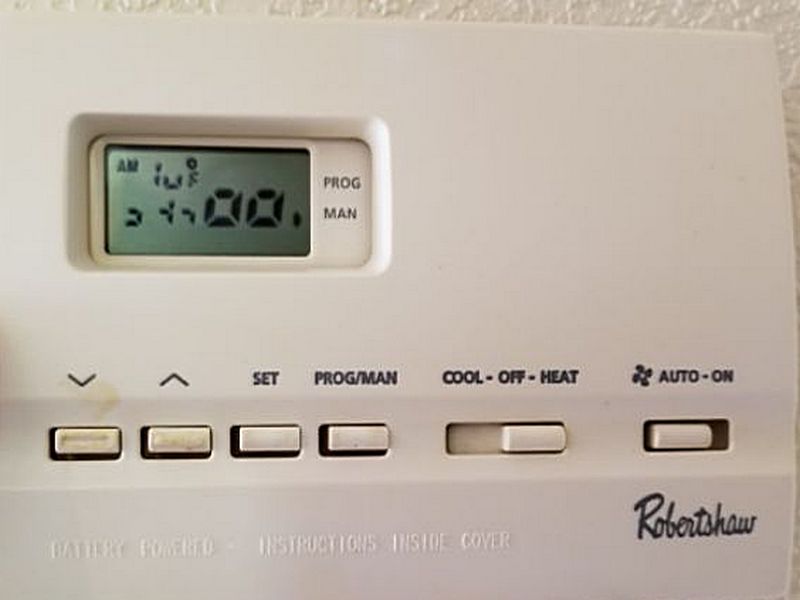
The thermostat is damaged. This can affect proper system operation. Hire an HVAC contractor to make the required repairs.
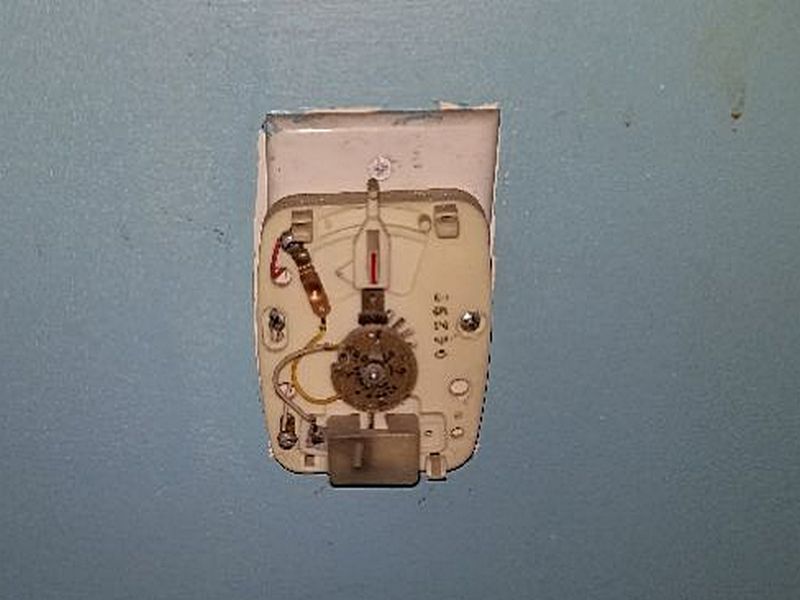
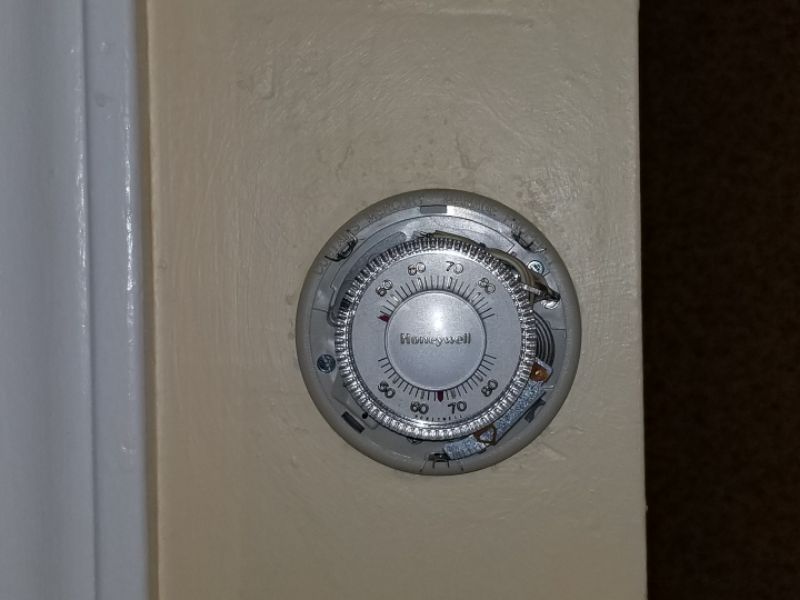
The thermostat is missing. This affects proper system function. Hire an HVAC contractor to make the required repairs.
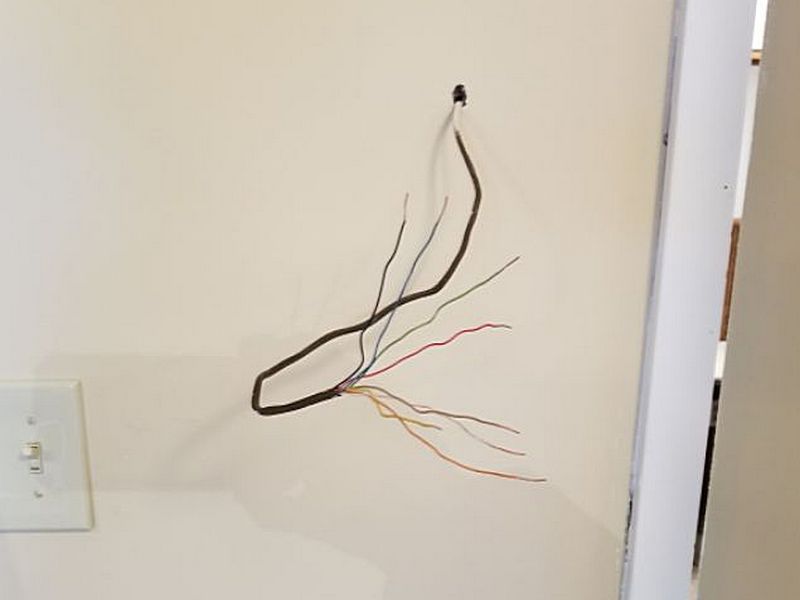
The thermostat is not level. Bulb-type thermostats must be secured in a level position to operate correctly. Hire an HVAC contractor to make the required repairs.
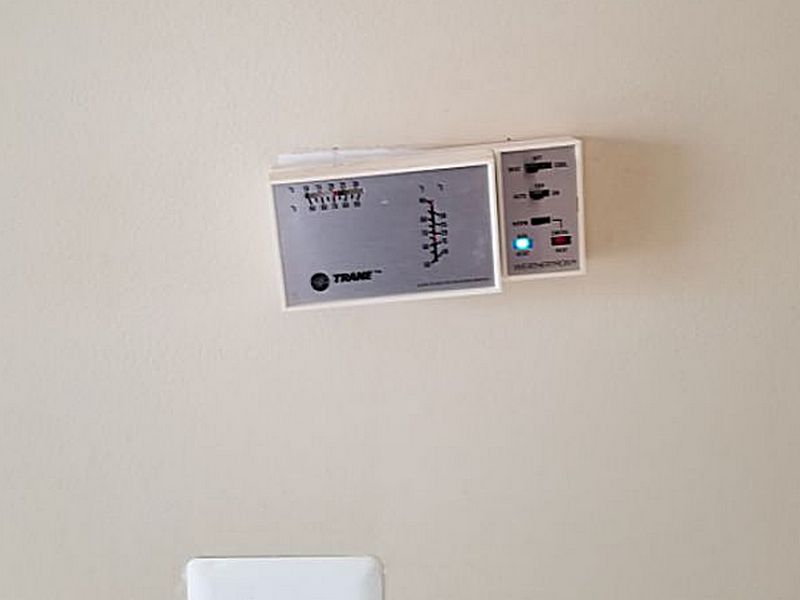
The thermostat is poorly located and may result in improper control of the HVAC system. Hire an HVAC contractor to make the required repairs.
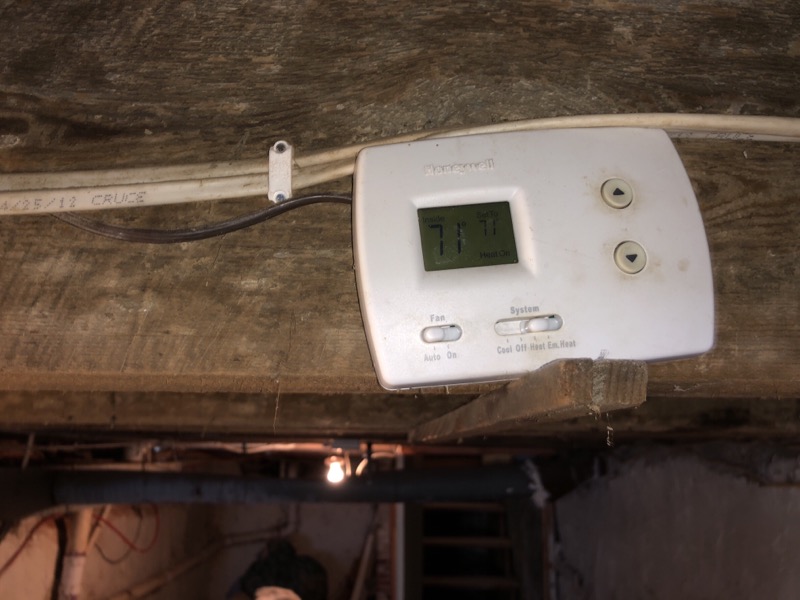
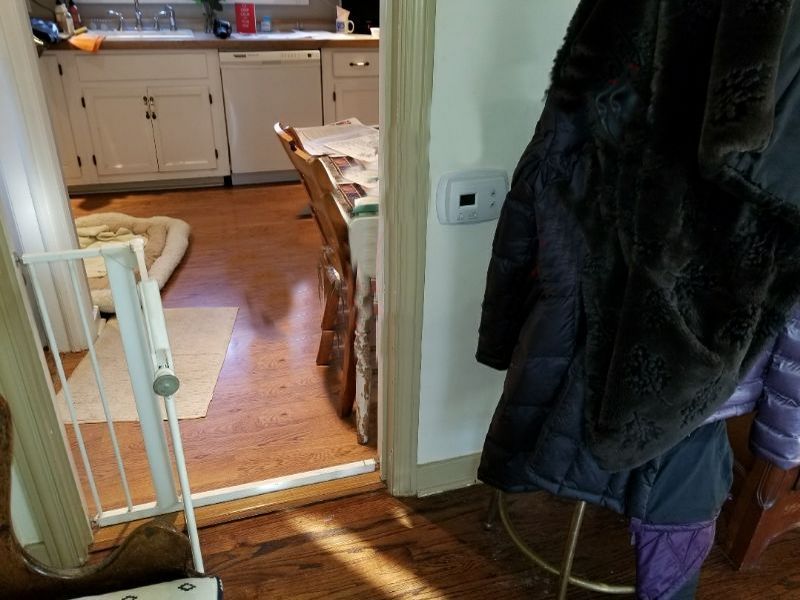
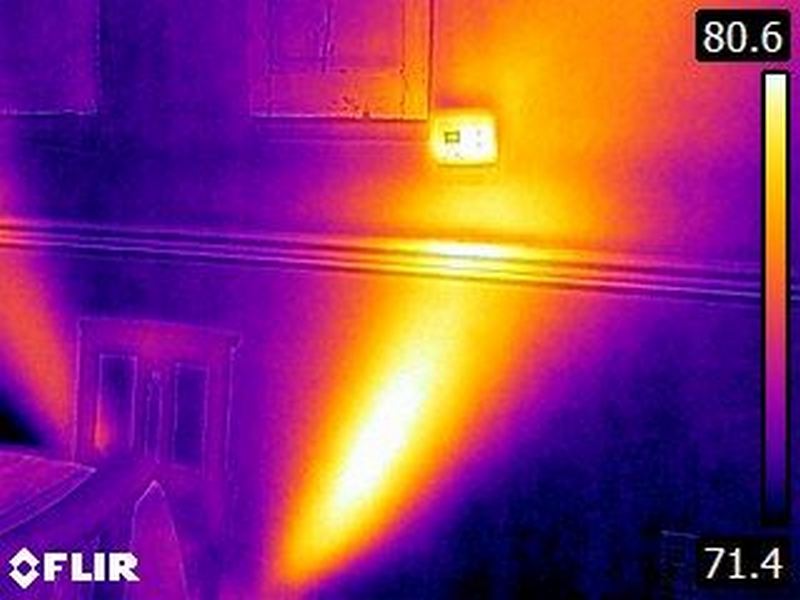
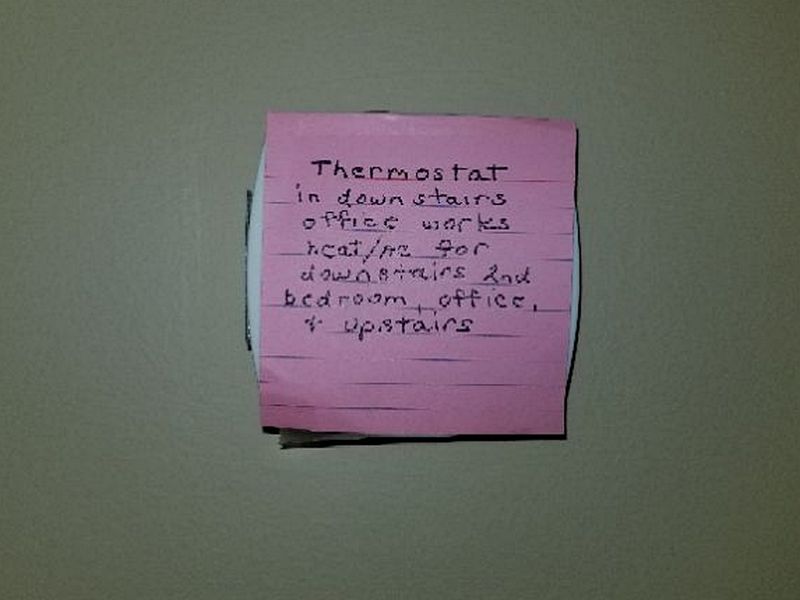
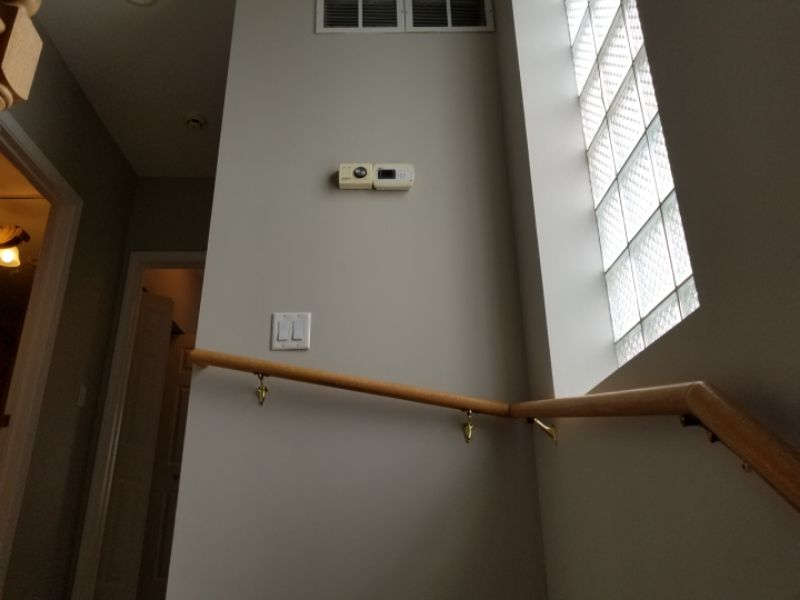
Thermostat Limitation and Information Statements
Tests in manual mode, other features not tested: The inspector tests thermostat in manual mode only. Internet-capable, automatic and timed features are not tested.
